Simplicius The Thinker
27 Apr 2024 | 9:15 pm
1. SITREP 4/27/24: U.S. Admits Top Weapons Failures to Superior Russian EW
A relatively scattered update today more as a filler piece and addendum to the last SitRep for which there have been a few interesting topical updates.
Firstly, last time I had posted Ukraine's head of aerial reconnaissance support, Maria Berlinskaya, stating how Western systems in Ukraine have proven worthless because of the power of Russian EW. In fact, I'm going to post it again just to have it all under one roof for those who haven't read the previous SitRep, and because I think this particular thread is that important:
Well, now, we have the highest level confirmation of the above from an actual U.S. official. The Undersecretary of Defense for Acquisition and Sustainment, William Laplante, just dropped a major bombshell which should dim any hopes of major ATACMS triumphs, as so many are emptily looking forward to:
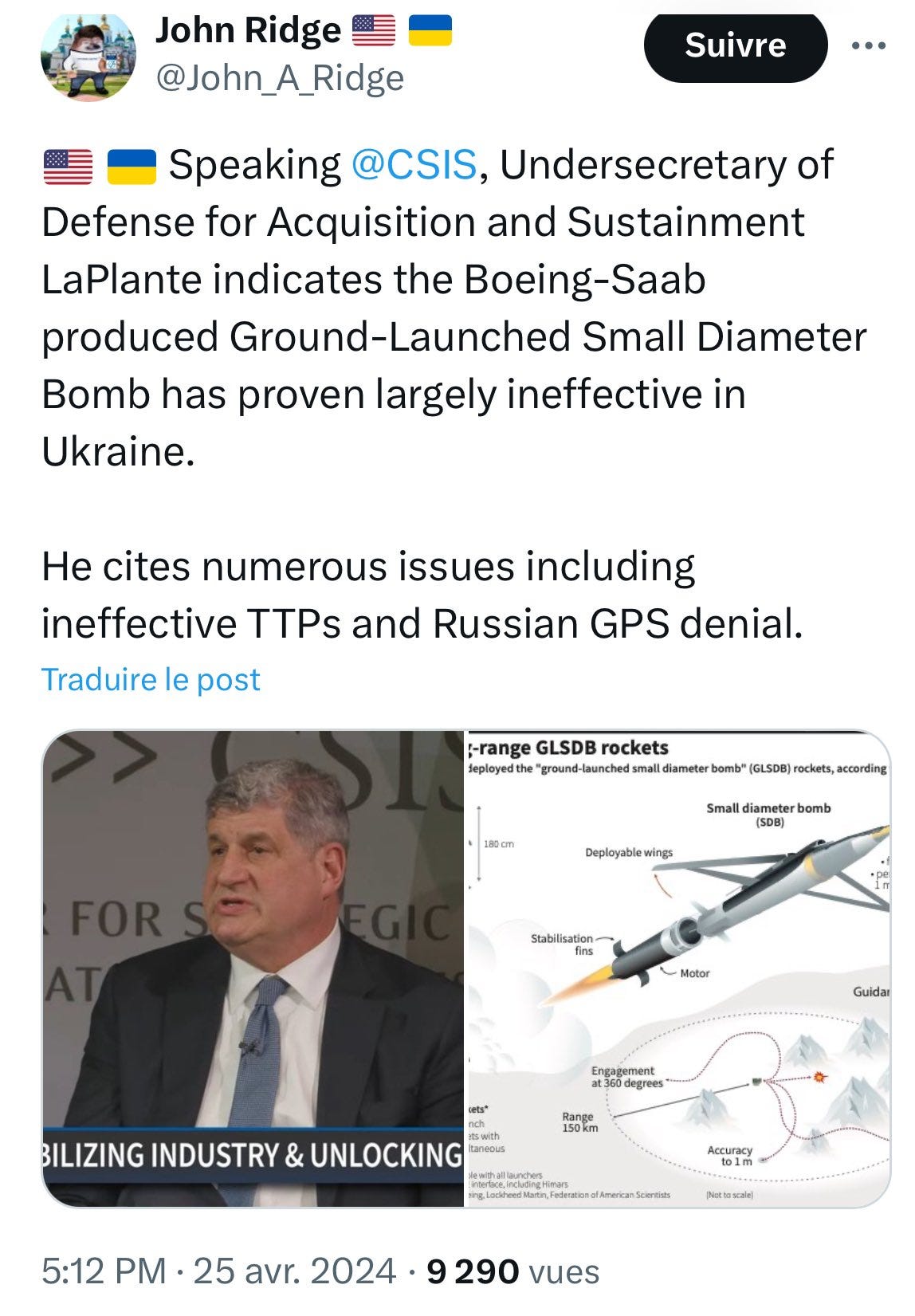
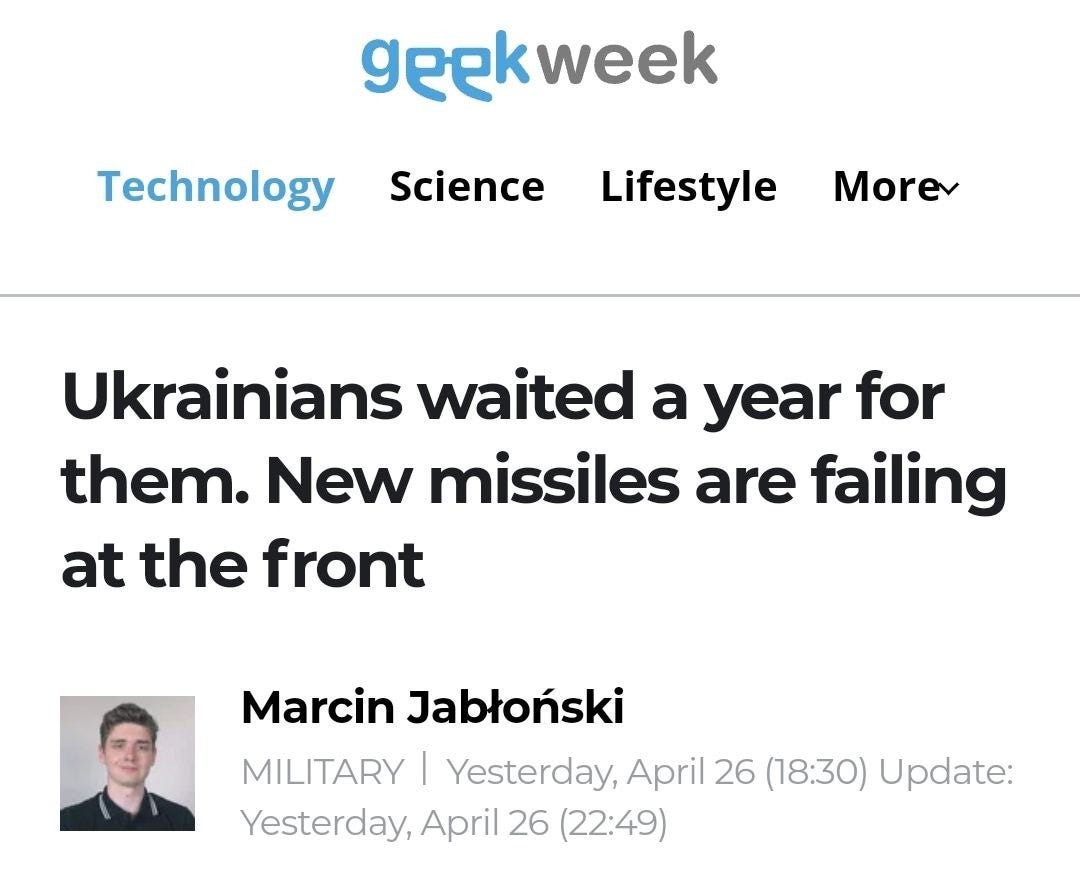

That's right—on a panel for the Center for Strategic and International Studies, Laplante outright admitted that the much-hyped GLSDBs have proven an abject failure due to Russian jamming environments. Some have rightfully proposed this is due to the fact that an SDB glide-bomb is pretty slow once it detaches from the HIMARS booster rocket. And thus, as it slows while gliding toward the target, it must overfly a lot of EW contested airspace which gradually degrades its GPS course correction more and more until its targeting is way off by the time it reaches the actual target.
A detailed technical explanation was given by The Right People Z Telegram channel:
The antennas of the GPS correction modules integrated into the guidance and control systems of the GBU-39/B hybrid 227mm GLSDB guided missiles have been confirmed to have low interference immunity. This was once again reminded by US Undersecretary of Defence for Acquisition and Supply Bill LaPlante during the US Center for Strategic and International Studies (CSIS) conference.
It is obvious that the GPS receiver presented by the Boeing Corporation as anti-jam GPS has completely lost its effectiveness in the difficult jamming situation in the airspace over Donbass.
Even in spite of the top-oriented position of these antenna modules, EW complexes "Zhitel" ("Житель"), "Field-21" ("Поле-21") and "Serp-VS5" ("Серп-ВС5") easily suppress their receiving channel, which leads to an increase in the circular probable deviation of GBU-39/B bombs from 1.5 - 3 to several tens of metres, reducing their effectiveness to unacceptable levels.
On the contrary, domestic GLONASS/GPS-antennas "Kometa-A/M/R8" ("Комета-А/М/Р8") are able to withstand interference from the majority of enemy EW means operating in the L-band.
This has a number of very important implications, as this is one of NATO's main air-to-ground strike weapons and due to its use in Ukraine, it has become ineffective, which will make its future use against rivals such as China or Iran and even more local actors ineffective.
Other weapons systems not only fly faster and spend less time under the influence of EW, but they also have other targeting redundancies which the simplified systems like the GLSDB and JDAM-ER lack. For instance, more sophisticated systems like cruise missiles (Storm Shadow, Kh-101s, etc.) or even some ballistic missiles like Israel's recently used ROCKS (Sparrow) or Russian Iskander have terminal opto-electric guidance in the form of DSMAC (Digital Scene-matching Area Correlator) which allow them to view the target with a camera and match it with a pre-programmed image of it to course correct. That means even if GPS is jammed, they could still accurately hit the target by what is effectively an AI visual guidance mode. But these systems are extremely sophisticated and expensive, and the whole point of the GLSDB was that it was billed as a cheap alternative, using old stockpiles of super cheap SDB bombs fitted onto HIMARS boosters.
This is likely the same reason JDAM-ERs have proven a dismal failure, as they function almost identically to the gliding SDBs and have already long been known to be highly susceptible to EW by the U.S. Pentagon, even long before the Ukraine war.
But here's where the Russian defense industry has shown its ingenuity and robust adaptability in one: while Russian UMPK glide-bombs would theoretically suffer from the same exact issue, and likely did, which would explain some of the earliest reports of their "inaccuracy" by the Ukrainian side, Russian engineers quickly adapted. Recall my previous reports about the new Kometa-M satellite transceiver modules being found installed not only on Iskanders but UMPKs as well.
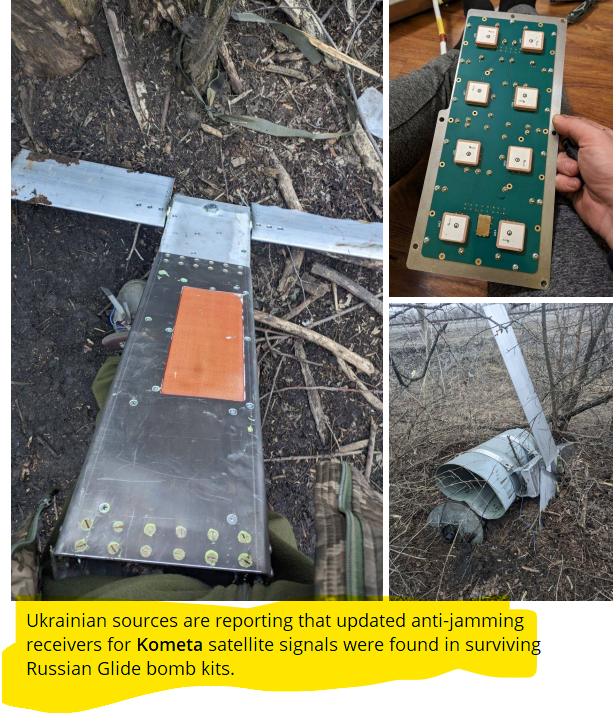
Russian UMPKs likewise started with only 4 or less Kometa receivers, and after some time were upgraded to 8, which now make them far more impervious to EW signals and therefore much more accurate, as the Glonass/GPS correction is not as degraded when overflying an EMI environment.
And on that topic, we have the latest:
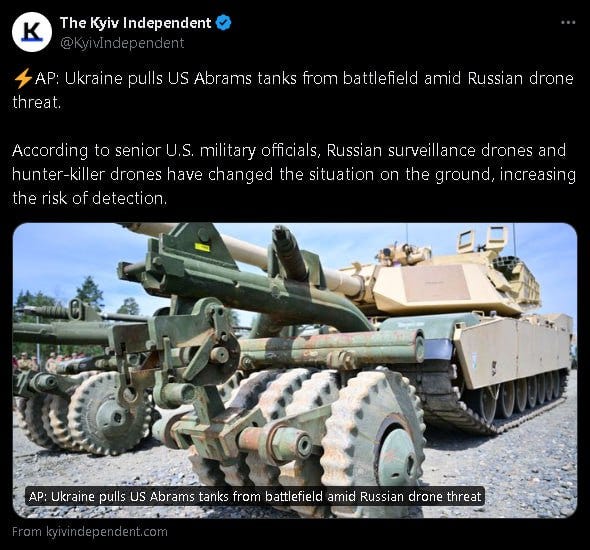
That's right, Ukraine has now officially pulled its Abrams off the line because they have proven ineffective. From the article:
The official spoke on the condition of anonymity to provide an update on U.S. weapons support for Ukraine before Friday's Ukraine Defense Contact Group meeting.
For now, the tanks have been moved from the front lines, and the U.S. will work with the Ukrainians to reset tactics, said Joint Chiefs of Staff Vice Chairman Adm. Christopher Grady and a third defense official who confirmed the move on the condition of anonymity.
"When you think about the way the fight has evolved, massed armor in an environment where unmanned aerial systems are ubiquitous can be at risk," Grady told the AP in an interview this week, adding that tanks are still important.
"Now, there is a way to do it," he said. "We'll work with our Ukrainian partners, and other partners on the ground, to help them think through how they might use that, in that kind of changed environment now, where everything is seen immediately."
All of this comes on the heels of another interesting article from the NYTimes:

Some may recall I covered such efforts as the DOD's Project Maven before, in articles like this one.
But in the new article, David E. Sanger writes that the results of this combined Google-DARPA effort to institute an AI-driven 'back-end' to process vast troves of battlefield surveillance data have in fact been 'mixed'.
How's this for admissions?

The first two years of the conflict have also shown that Russia is adapting, much more quickly than anticipated, to the technology that gave Ukraine an initial edge.
And another which corroborates the earlier GLSDB snafu:
In the first year of the war, Russia barely used its electronic warfare capabilities. Today it has made full use of them, confusing the waves of drones the United States has helped provide. Even the fearsome HIMARS missiles that President Biden agonized over giving to Kyiv, which were supposed to make a huge difference on the battlefield, have been misdirected at times as the Russians learned how to interfere with guidance systems.
The article goes on to name and describe the physical heart of this NATO 'backend' I've described for over a year now:

It names ex-Google CEO Schmidt as being the main impetus behind Ukraine's new push toward autonomous AI drones which can hunt human targets on their own after their signal has been cut by EW.
Ultimately though the article confesses that these technological leaps will not be enough to defeat Russia, which is adapting just as quickly to battlefield developments, yet actually has the manufacturing girding on top of that which Ukraine lacks. In short: both sides hold key asymmetrical advantages over the other, but Russia is inching on the West's advantage of satellite ISR—particularly the constellation of Starlink satellites—while Ukraine is not making any headway toward Russia's massive munitions and armor manufacturing overmatch.

Next, let's briefly mention some of the ongoing battlefield developments. The situation in the north/west Avdeevka sector continues to deteriorate for the AFU with a constant stream of revealing and sometimes urgent complaints from their channels giving us insight.
Here's a soldier from the AFU's 115th Brigade giving an update:

Read what he says: "My company was literally destroyed."
He complains about leadership throwing them away like meat, and he goes on:
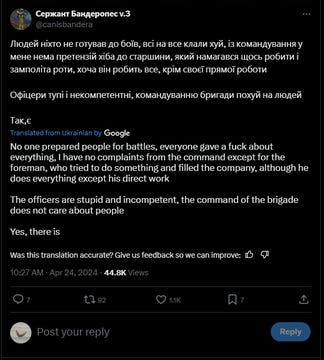
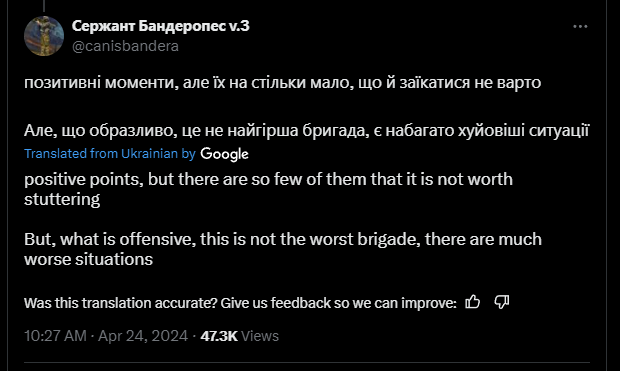
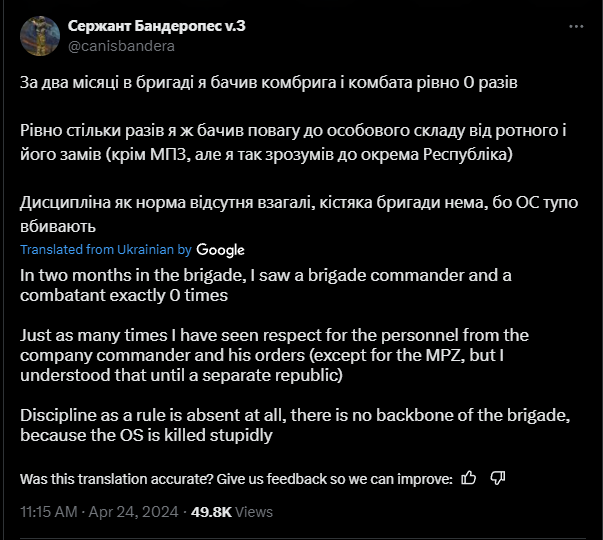
This was followed by statements from some of the most well-known pro-UA OSINT accounts with the highest followers:

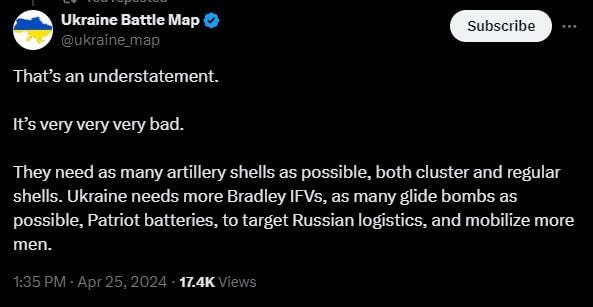
And MSM chimed in about the ongoing situation:


The foregoing has culminated in a situation where everything between Ocheretyne and Novokalinov is now in a boiler, with Keramik said to have been totally abandoned by retreating AFU today:

Reports yesterday indicated that Russian troops were already entering the outskirts of Arkhangelske as well.
It has gotten even the most ardent Ukraine 'experts' and supporters admitting that the AFU may have to drastically fall back to a new defensive line behind the Vovcha River, abandoning at least a dozen or more kilometers of land:
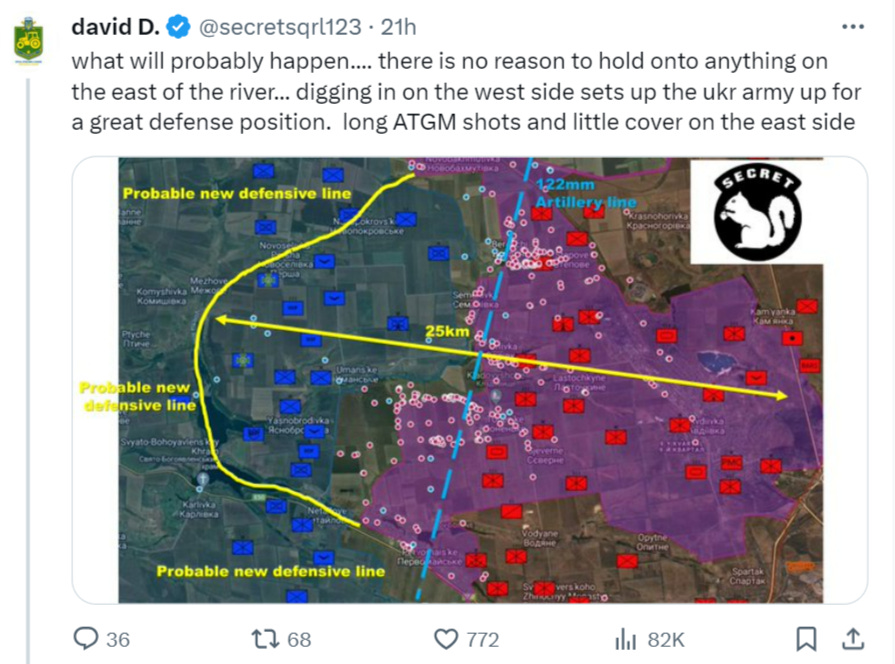
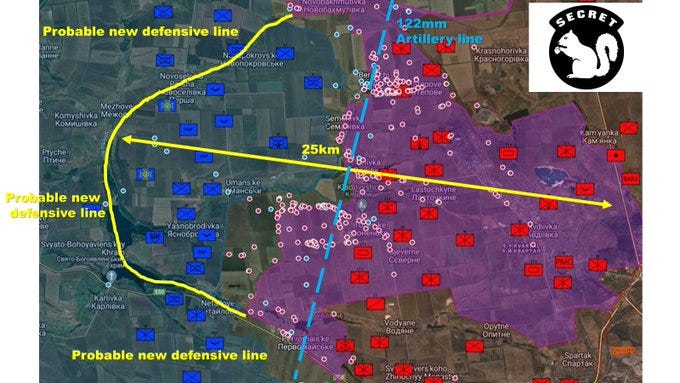
Recall in my last report I relayed the words of a Ukrainian officer who feared Russia is slowly positioning to put Pokrovsk under the tip of a spear. It seemed unlikely then because Pokrovsk still appears a way off. But should the AFU fall back to the Vovcha, it would put Russian forces about 20km+ away across sparsely defended land which has not been fortified like the area now being overrun:
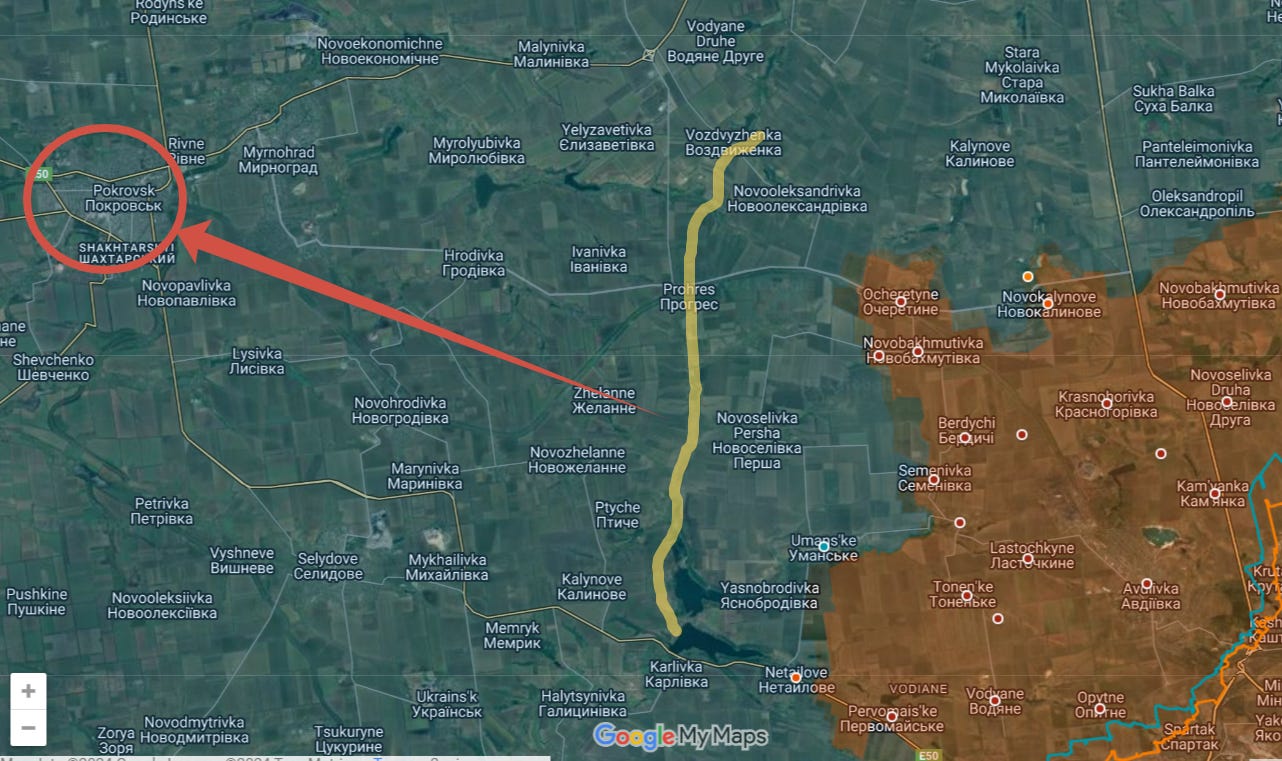
In fact, below one can see the blue line terminates at its west edge on what is reportedly Ukraine's most recent defensive fortifications, constructed in Jan-Feb of this year. That means Russian forces are already about 1.5km from it:
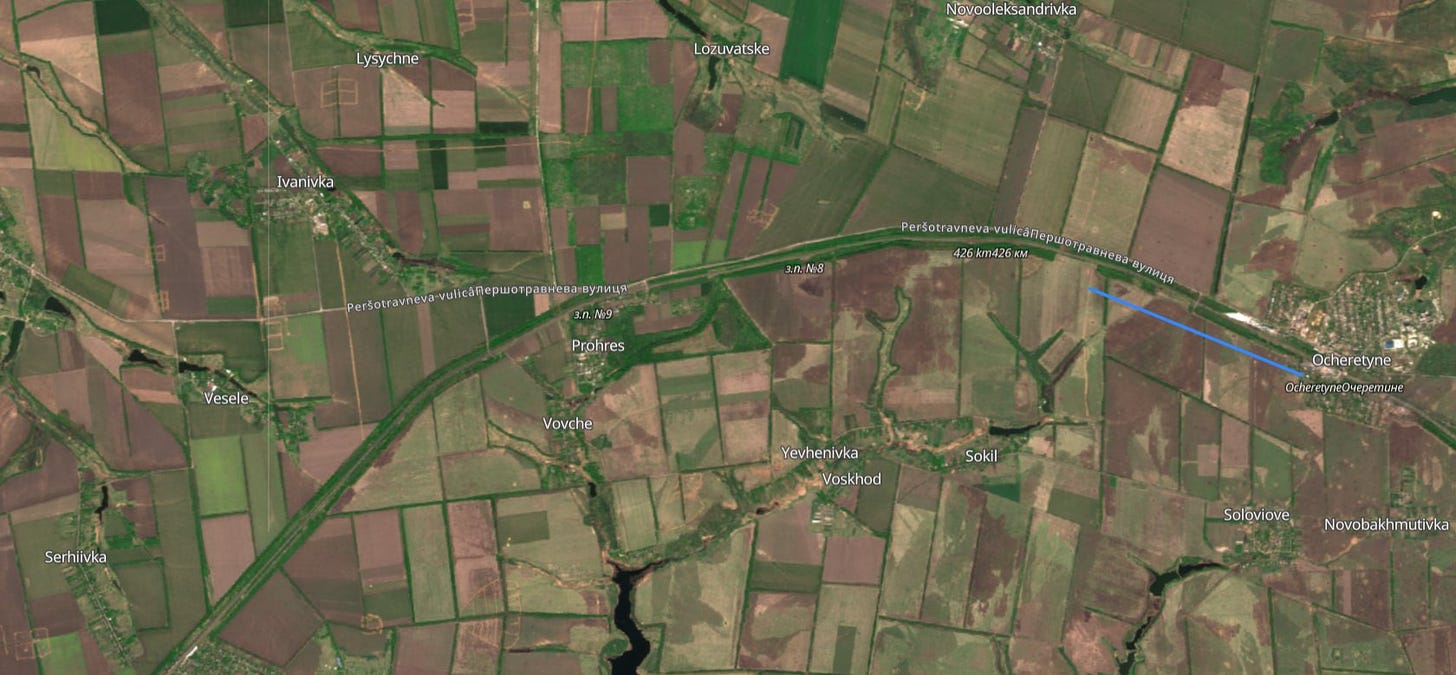
Much farther west in the map above, between Prohres and Vesele, you can see a gigantic tank ditch which Ukraine constructed which was meant to be its main line of defense before the Pokrovsk front.
By the way, speaking of tank ditches, remember all the rumors about the embezzlement of funds when it came to building defensive fortifications? A timely Freudian slip on Ukrainian TV pretty much confirmed our suspicions:
Just south of there, Russian forces continue climbing through Krasnogorovka, making their way toward the center of the larger town:
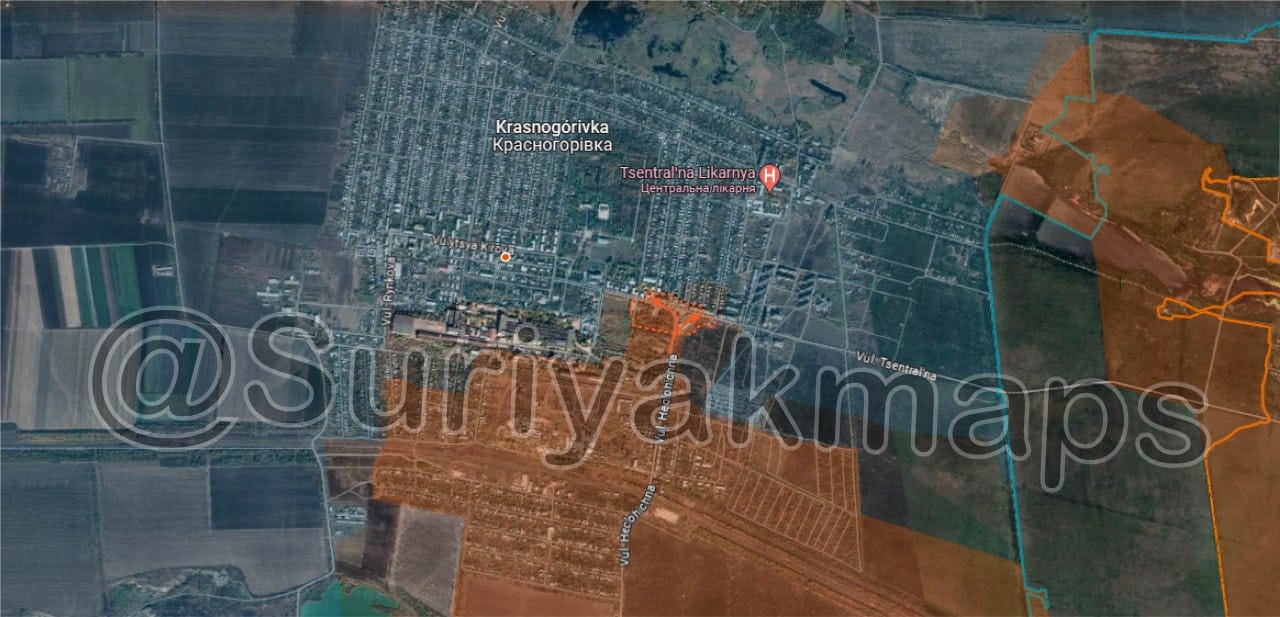
A prominent Ukrainian soldier gives a dismal and bitter update from the Ocheretyne front:
Russian advances in Avdeevka sector since ~October of last year when the assault began:
—
In other news, Russia again struck 4 Ukrainian thermal power plants last night with a range of weapons, from Kinzhals, to Kalibr cruise missiles fired from the sea, to Kh-101s from Tu-95s, as per usual.

The enemy confirms the defeat of thermal power plants in the Ivano-Frankivsk, Dnepropetrovsk, and Lvov regions. In total, arrivals were reported at 4 power plants.
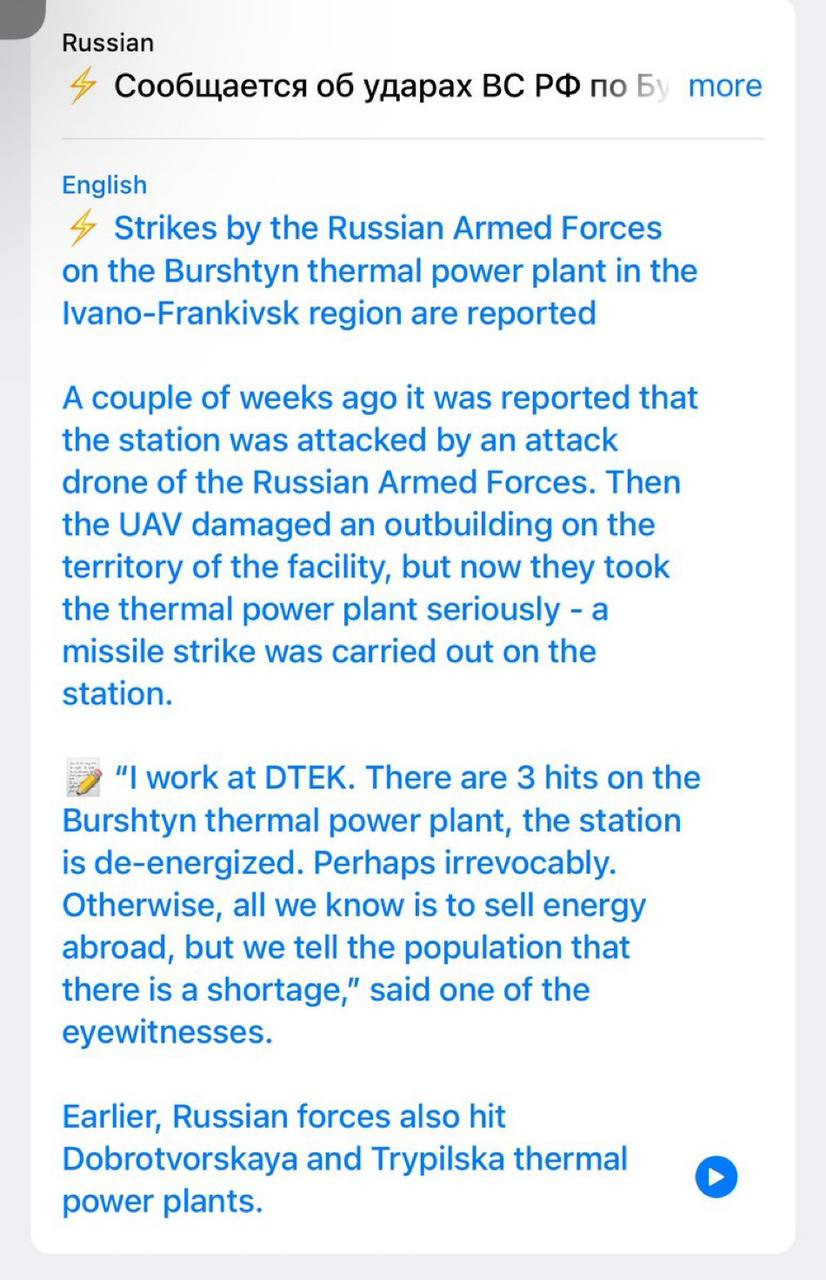
—
Ukraine, too, struck a Russian oil refinery in Krasnodar:
But you can clearly see the difference in damage. A few fuel tanks which can be replaced in hours or days versus an entire power plant assembly with turbine hall, which is virtually irreplaceable.
Also, Russia has allegedly begun putting 'cope cages' or systems of netting on refinery tanks:
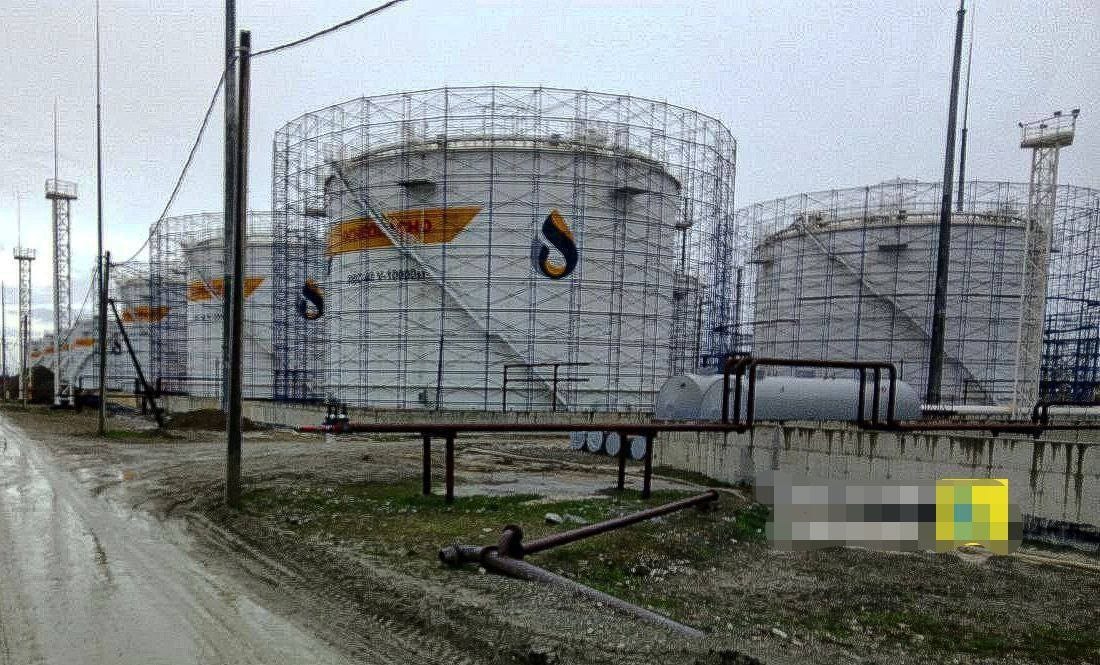
—
In another bizarre development, Ukraine has apparently used a Yak-52 propeller plane to shoot down a Russian Orlan drone in the West of the country:

I guess those F-16s were no where to be found.
—
Yesterday Blinken was humiliated in his visit to China. Not only was he not greeted in the usual customary way at the tarmac, with no red carpet or official entourage, but while awaiting Blinken's arrival, President Xi was even overheard impatiently inquiring when the sniveling rat-faced apparatchik would be leaving the country:
Xi and China have no patience left for the U.S.' disrespectful lecturing.
The pointless visit was capped off by China reportedly not sending a single official to wish Blinken off, and he was instead seen away by the U.S.' own ambassador stationed in China:
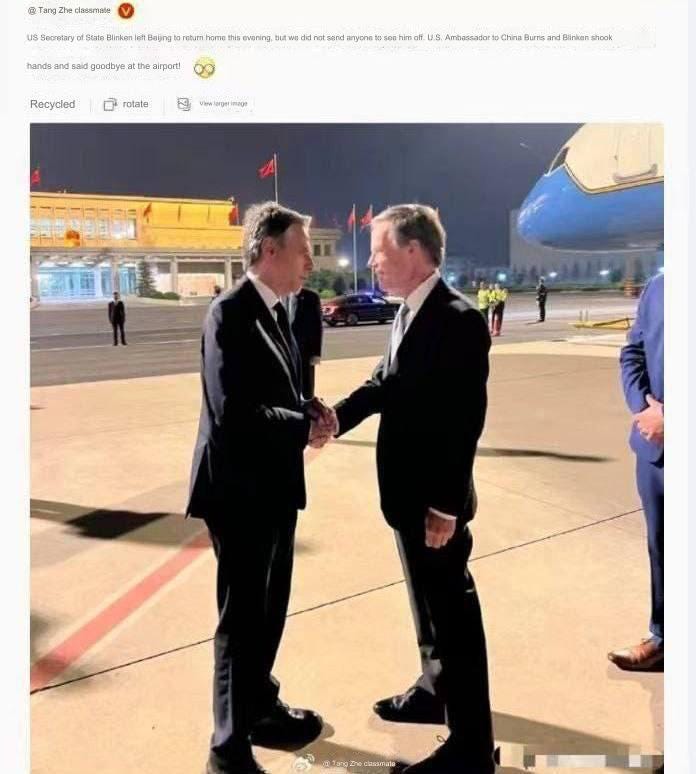
—
In another dispiriting development for Ukraine, it has now been revealed that most of the weaponry sponsored by new U.S. aid will in fact not make it to the foundering country for years:

Read the middle portion:
"The equipment—which also includes ammunition for High Mobility Artillery Rocket Systems and National Advanced Surface-to-Air Missile Systems—likely won't arrive in Ukraine for several years, as the money is being allocated under the Ukraine Security Assistance Initiative. Under USAI, the Pentagon issues contracts to American defense firms to build new equipment for Ukraine, as opposed to drawing from current U.S. stocks."
Whoops.
Even pro-UA stalwarts were forced to bitterly concede:
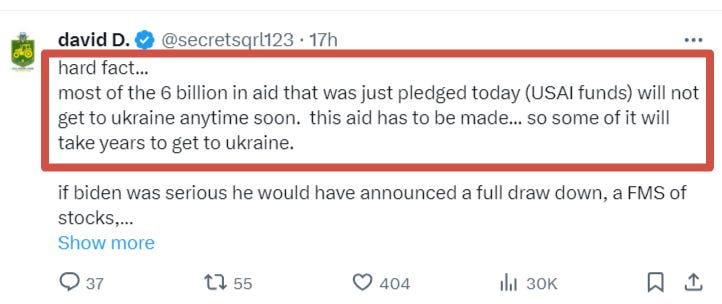
Woe is Ukraine.
That follows several other articles affirming the trouble Europe is having in finding actual munitions for Ukraine:
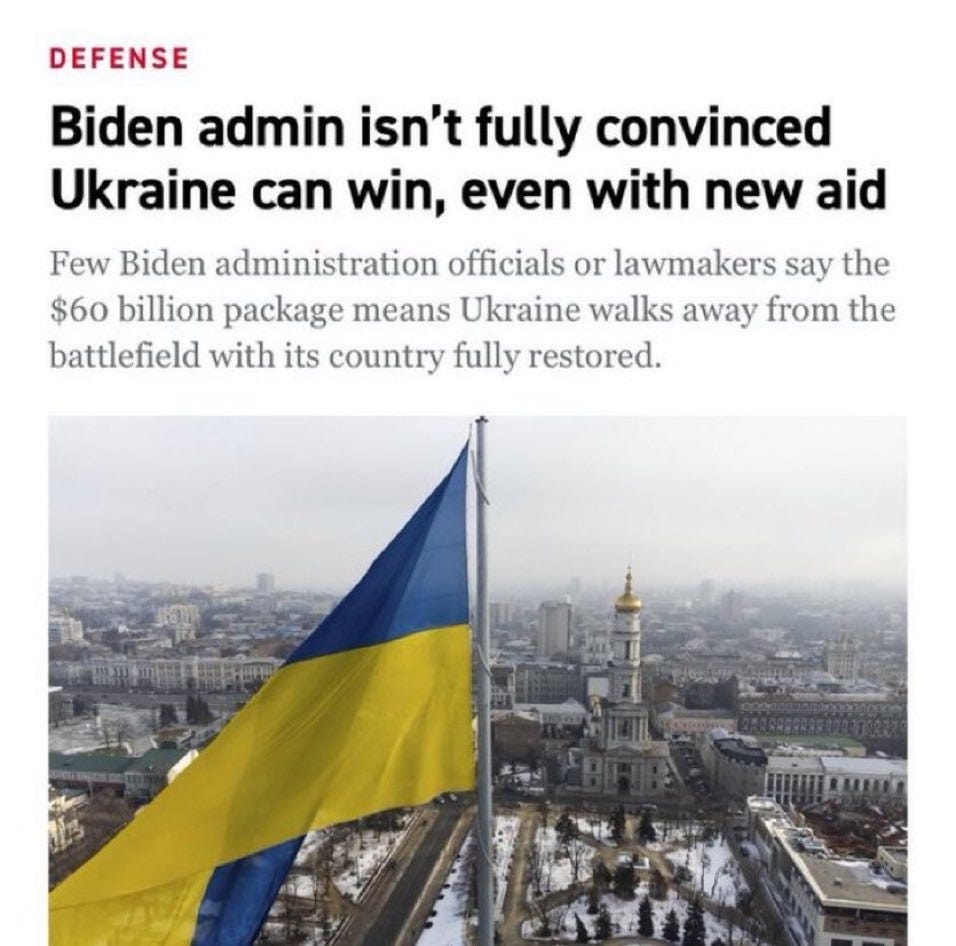
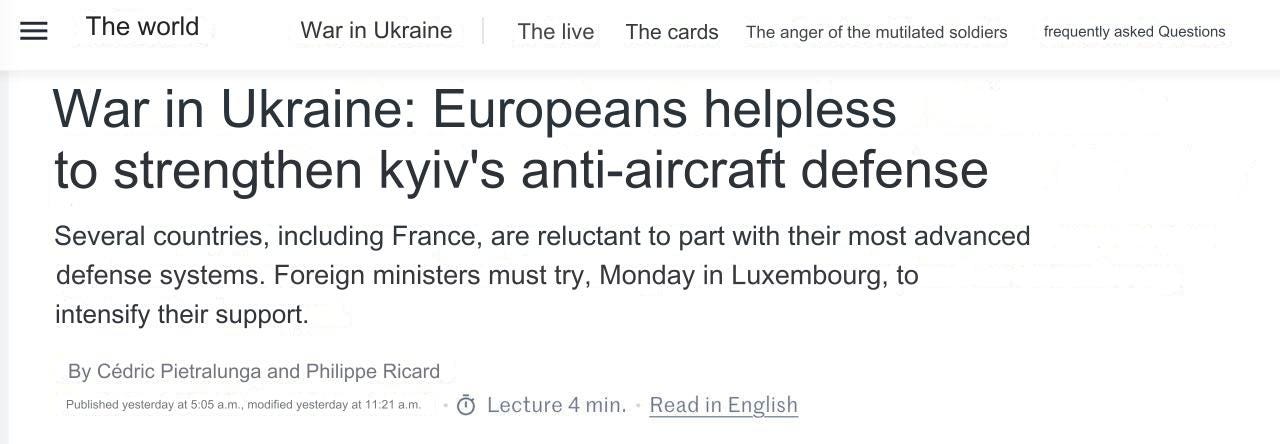
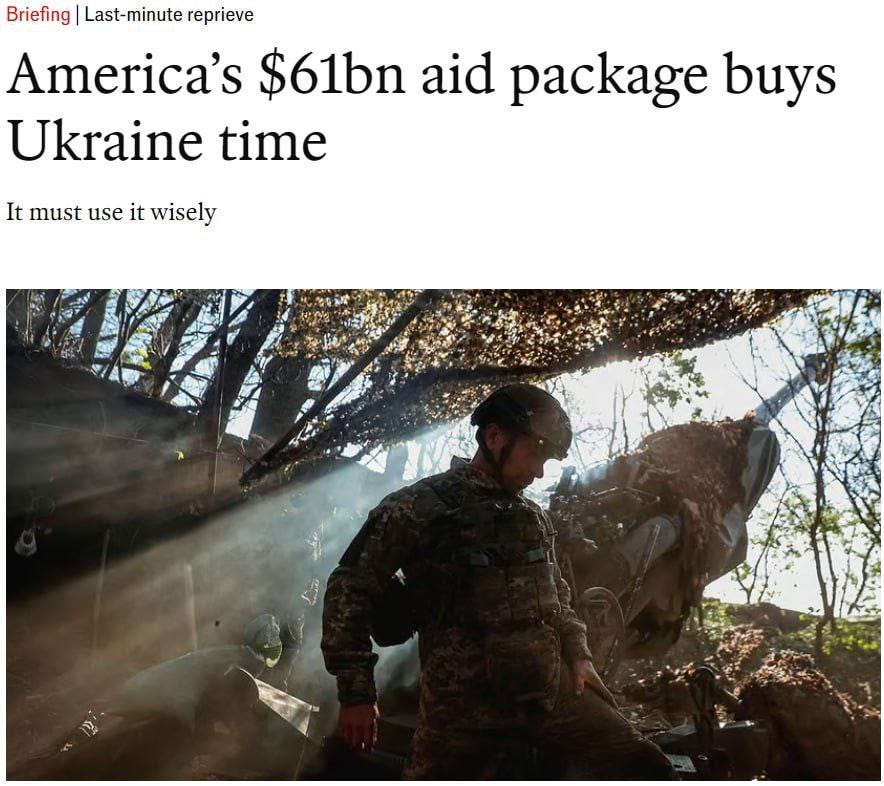
In confirmation of one of our last through-lines about the U.S. trying to push Ukraine off onto Europe, we see headlines like the following as well:
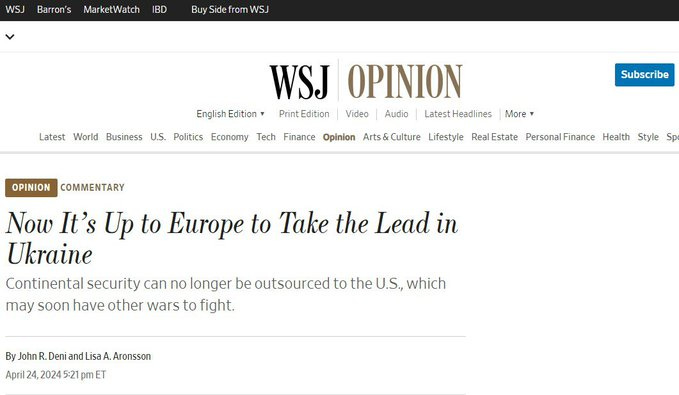
Meanwhile, Germany admits that Russia is producing so many munitions that it goes well beyond anything it currently needs or uses:
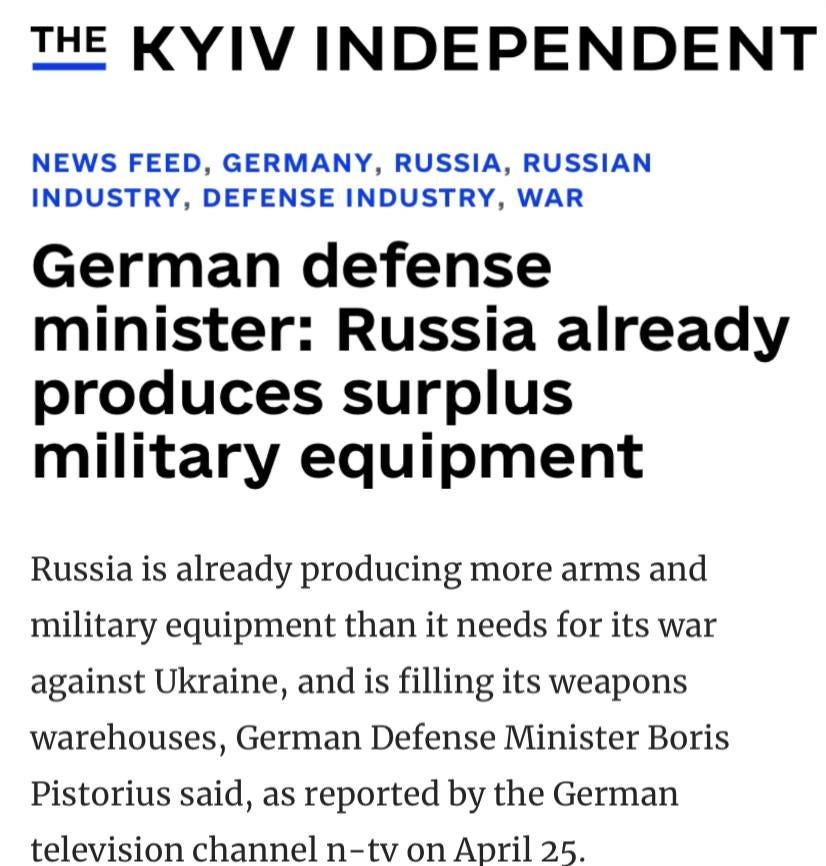
This is further corroboration to something I've written about many times before as well: the fact that Russia is building strategic reserves and stores for a potential NATO conflict that could take place directly after or even concurrently with the Ukrainian one. NATO is clearly signaling escalation to "save" Ukraine, which is why Shoigu called up an entirely second army of 500k+ for that very contingency. Now, Russia is also building up stores for that army in case it needs to actually clash with NATO in the near future. Either way, it's simply revealing of how much munitions Russia is producing that even despite the high usage in the Ukraine front, it's still generating a vast surplus.
—
And one last interesting development in the realm of BlackRock and Ukrainian farmland, which many have speculated on. There is a lot of unfounded conjecture when it comes to this, some of which I've debunked before, but for the first time we've had some interesting high level confirmation.
For instance, this alleged memorandum below, signed by Alex Soros and Yermak, was presented, which transfers lots of land in western Ukraine to Dow Chemical, DuPont, BASF, etc.
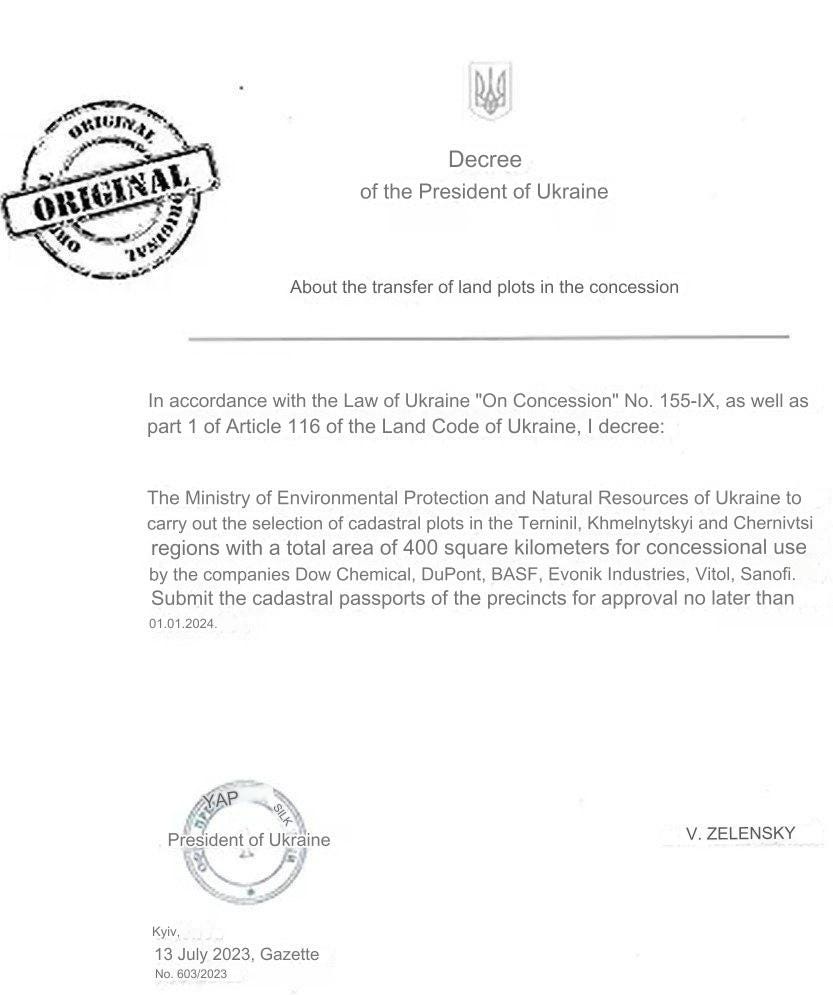
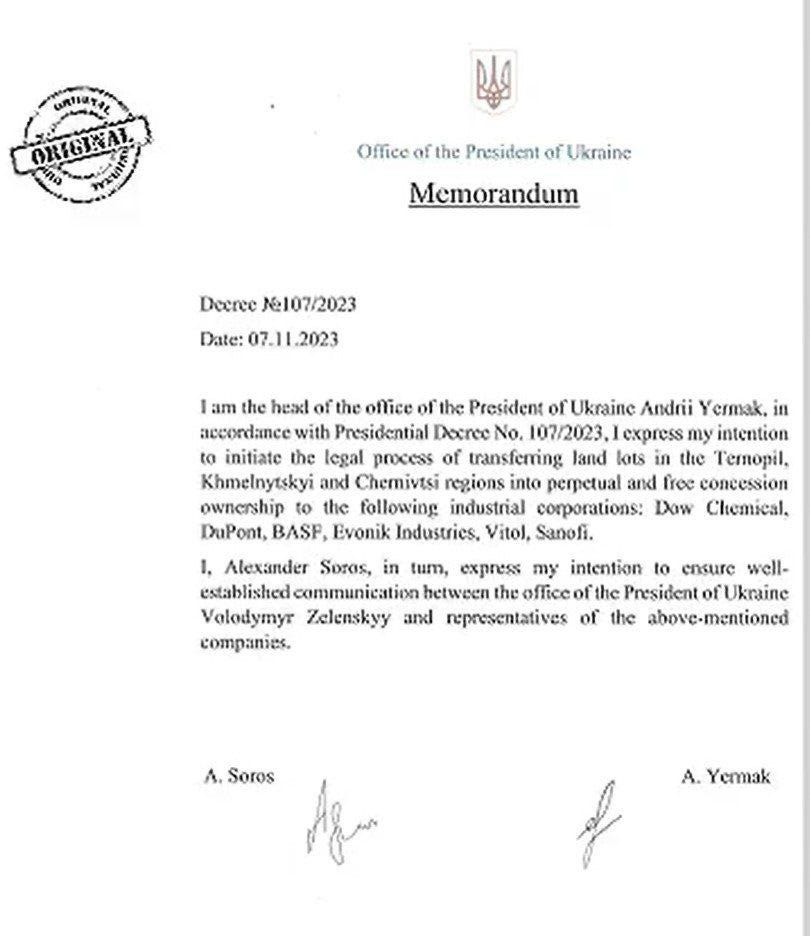
⚡️🇺🇸🇪🇺 The US and NATO plan to create a "gray" zone in Western Ukraine
Soros' son Alexander agreed with the Ukrainian authorities to allocate 400 square kilometers of agricultural land to American corporations for the disposal of hazardous waste, according to an investigation by French journalist Jules Vincennes.
He writes, citing a source in the Ministry of Agriculture of Ukraine, that in November, Soros Jr. and the head of Zelensky's office, Yermak, reached an agreement according to which Kiеv indefinitely and free of charge transfers land in the Ternopоl, Khmelnytsky and Chernоvtsi regions for the disposal of hazardous waste from chemical, pharmaceutical and oil production.
Among the companies named are Dow Chemical, DuPont, BASF, Evonik Industries, Vitol and Sanofi. We remind you that Dow Chemical is the company which provided Agent Orange and Napalm to the American military to poison and destroy Vietnam. Whilst BASF is the company which provided Zyklon B to the Nazis.
Probably, the decision was made after the destruction in the spring of 2023 by the Russian Armed Forces of ammunition depots with depleted uranium located in the Khmelnitsky and Ternopоl regions.
This situation threatens an environmental disaster not only for Ukraine, but also for other countries in Eastern Europe and the Black Sea basin as a whole.
Kiеv and Washington continue to use all means to prevent the possible entry of Western Ukrainian regions into the Russian Federation in the context of the ongoing retreat of the Ukrainian Armed Forces.
But the most damning was a new interview with Polish president Andrzej Duda, who—when commenting on Polish-Ukrainian farmer relations—quite eye-openingly revealed outright that:
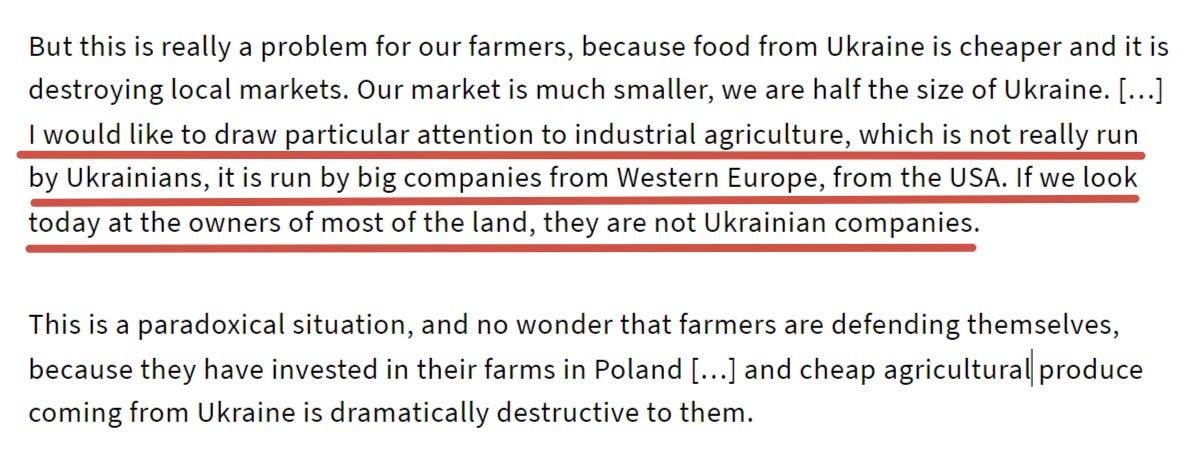
So, he basically frames the farmer conflict as Poland defending its farmers' rights against BlackRock-controlled minions like the above-mentioned DuPont, Dow Chemical, and the like, operating out of their newly-conquered Ukrainian demesne. Interesting!
—
Lastly, isn't it fascinating how something decried as 'barbaric' and 'illegal' when used by Russia in actual war is treated as commonplace and with indifference when it comes to anti-Israeli protesters?
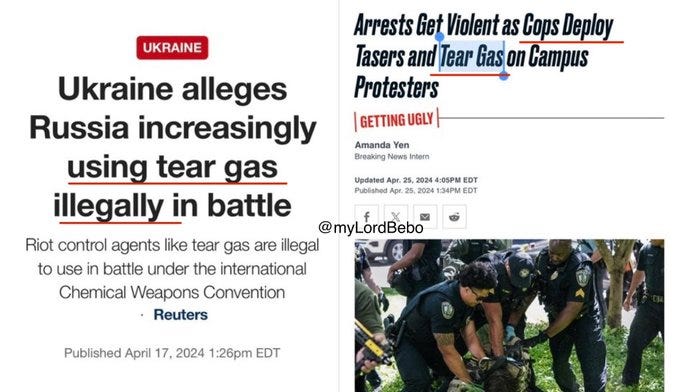
Your support is invaluable. If you enjoyed the read, I would greatly appreciate if you subscribed to a monthly/yearly pledge to support my work, so that I may continue providing you with detailed, incisive reports like this one.
Alternatively, you can tip here: Tip Jar
25 Apr 2024 | 3:12 am
2. SITREP 4/24/24: Comedown After Post-Aid 'High' Brings West Back to Reality
The ink has yet to dry on the signed Ukrainian aid, but it has finally passed both House, Senate, and the final Biden rubberstamp. As predicted here, the list of new items is "long" but mostly constitutes the secondary munitions types which aren't as easily expendable and therefore still exist in some quantity. The primary ones, i.e. artillery shells and such, are still heavily backlogged.
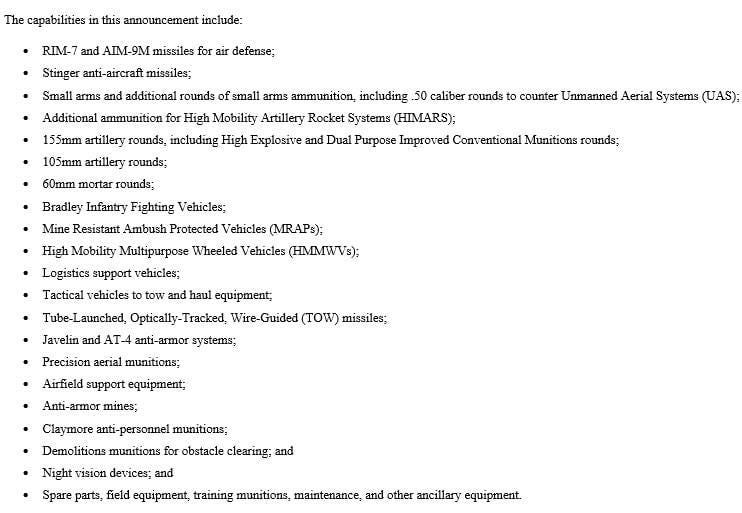
As you can see, much of the munitions above represent ones which have long lost their effectiveness and have done nothing to really make a dent of any kind in the battlefield.
In fact, just days ago Ukraine's head of the aerial reconnaissance support center, Maria Berlinskaya, stated that "most Western systems have proven to be [worthless]" because Russian EW neutralizes them all. Listen for yourself:
It was also revealed that much of the gear was already forward-stationed and merely awaiting the final approval, and has begun streaming in from Poland. In fact, some of it was already secretly given a week or two ago, such as in the case of the ATACMS missiles, which were already used as most had guessed since the strike on Dzhankoi airbase a week ago.
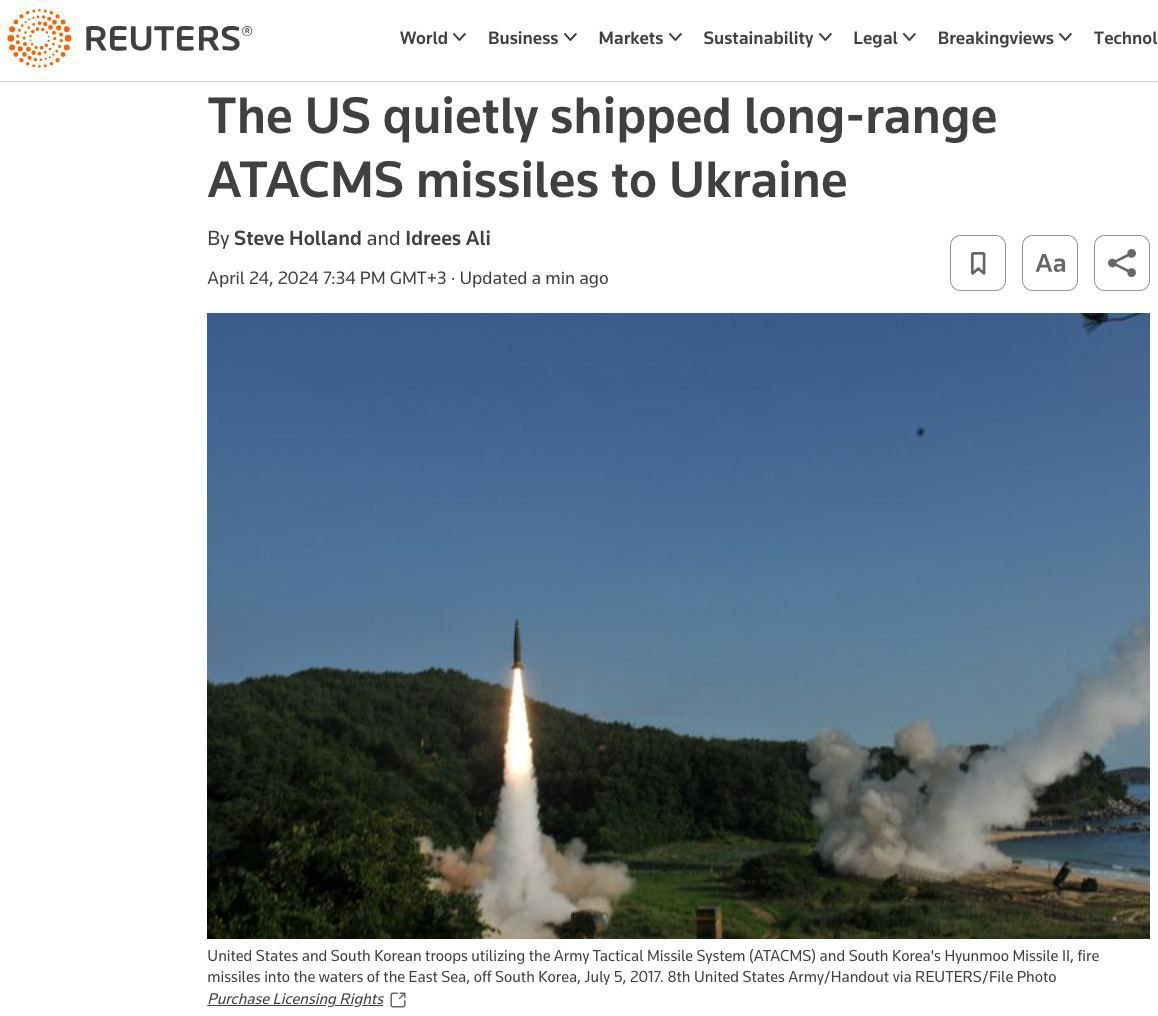
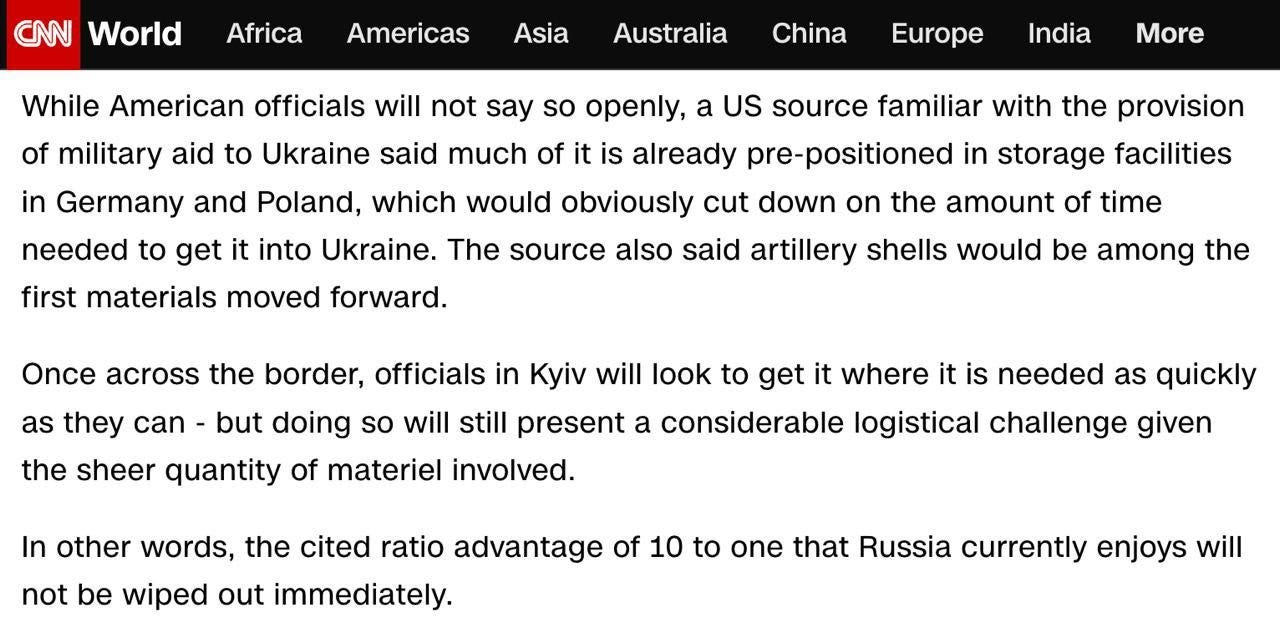
There was footage showing the offloading of about a dozen M2 Bradleys from Poland, ready to be sent to Ukraine.
What difference will that make? There is hardly more than that to be sent, and most of them looked worn out and probably the non-working write-offs as we've already come to find out from AFU servicemen themselves, who admitted many of the previously sent Bradleys/Abrams were in non-working condition.
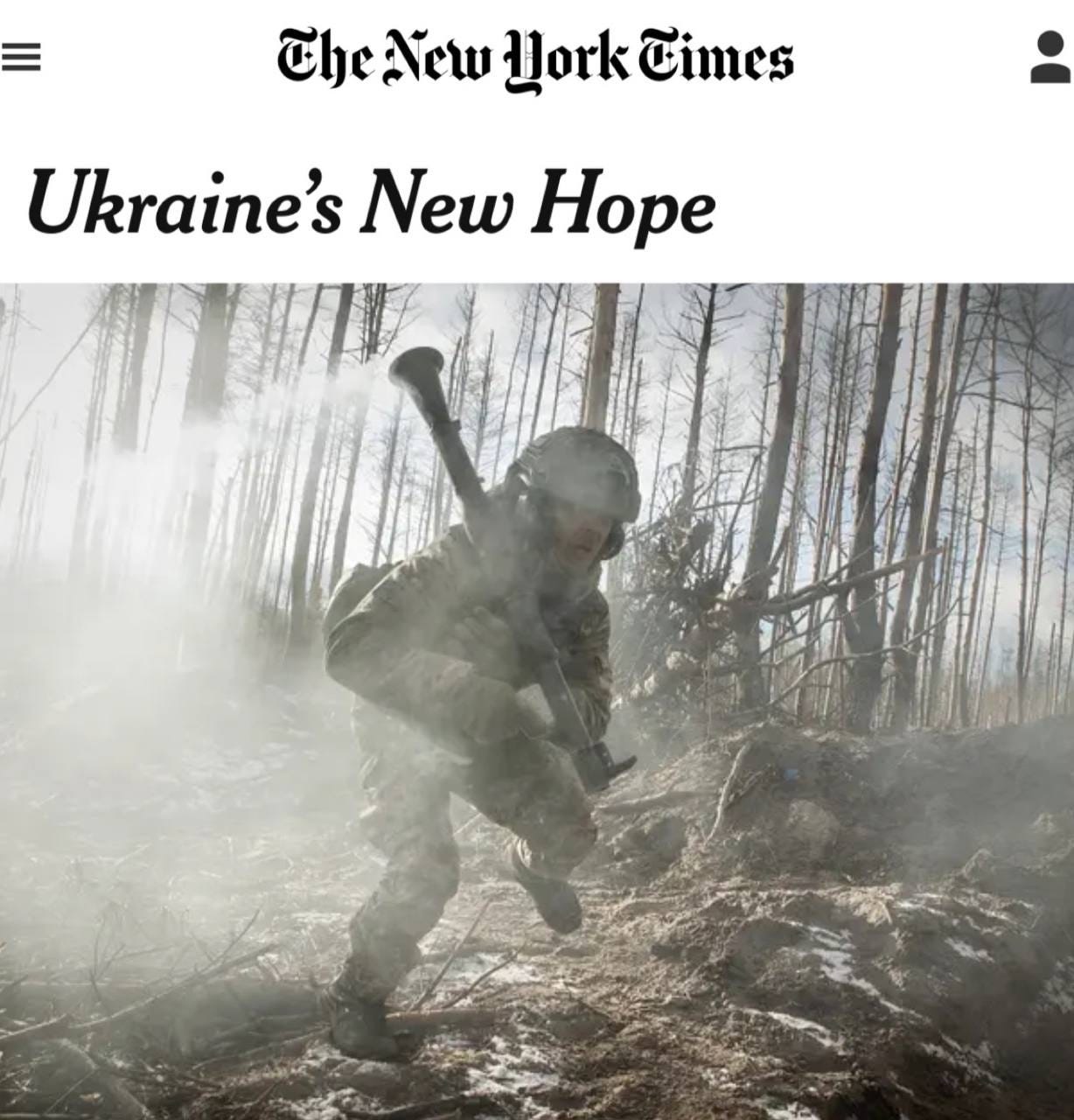
The problem is, amid the wave of drunken excitement over the new aid, there have been many sober voices making efforts to temper the wild flights of exaggerated optimism.
This has spurred calls for NATO to totally reconfigure itself into a full war footing because cooler heads have recognized that this aid will amount to nothing more than a brief respite for Ukraine, but will do nothing for actually equalizing the forces, much less overwhelming Russia with some kind of superiority or material overmatch.



Even Dmitry Kuleba echoed the sentiment:
"No [aid] package can stop the Russians," he said in an interview with the British publication The Guardian, commenting on the US aid package.
Kuleba added that the West needs to increase arms production, since Russia is ahead of it. "When I see what Russia has achieved in building up its defense industrial base over two years of war and what the West has achieved, I think that something is wrong on the West's part," the minister noted.
And the main issue is now rearing its head more than ever: out of the several disastrous problems plaguing the AFU, the supply issue is not even its biggest; that dishonorable distinction goes to the lack of usable manpower.
Polish general named Ukraine's main problem at the front lines
Ukraine faces a great challenge, first of all having someone to fight with.... There are 150-200 thousand soldiers missing at the front.This is a big challenge for the Kiev government," said former Polish commander General Waldemar Skrzypczak on air on FM radio station RMF.
This has brought conversations back to the topic of mobilization. Even though Zelensky has signed the bill, there appears to be a dragging of feet as nothing drastic is yet being done, just a slow boil of increasingly draconian street gangpressing as usual. But commanders and other authoritative observers on the front continue to bellow in strained voices that the situation is grim and Ukraine needs more manpower most of all.

Without being privy to the discussions of Zelensky's cohort, we can only assume that they deem the civil situation to be so pessimistic that they're terrified of announcing anything too overtly forceful, particularly given that Zelensky's legitimate hold on power is set to soon expire less than a month from today. In fact, it technically already expired, as the elections should have been held by now—but May 21st is officially when a new president would have been sworn in.
As for mobilization, here's Ukrainian lawyer Rostislav Kravets and Arestovich both separately revealing that there are reportedly over 100,000 deserters in the AFU:
This is utterly shocking because they are talking about actual deserters who were already fighting on the front or in military units—not men who fled the country to avoid service; those, as we all know, already number in potentially the millions. For instance, this headline from the start of the SMO in 2022 states 500k had already fled:
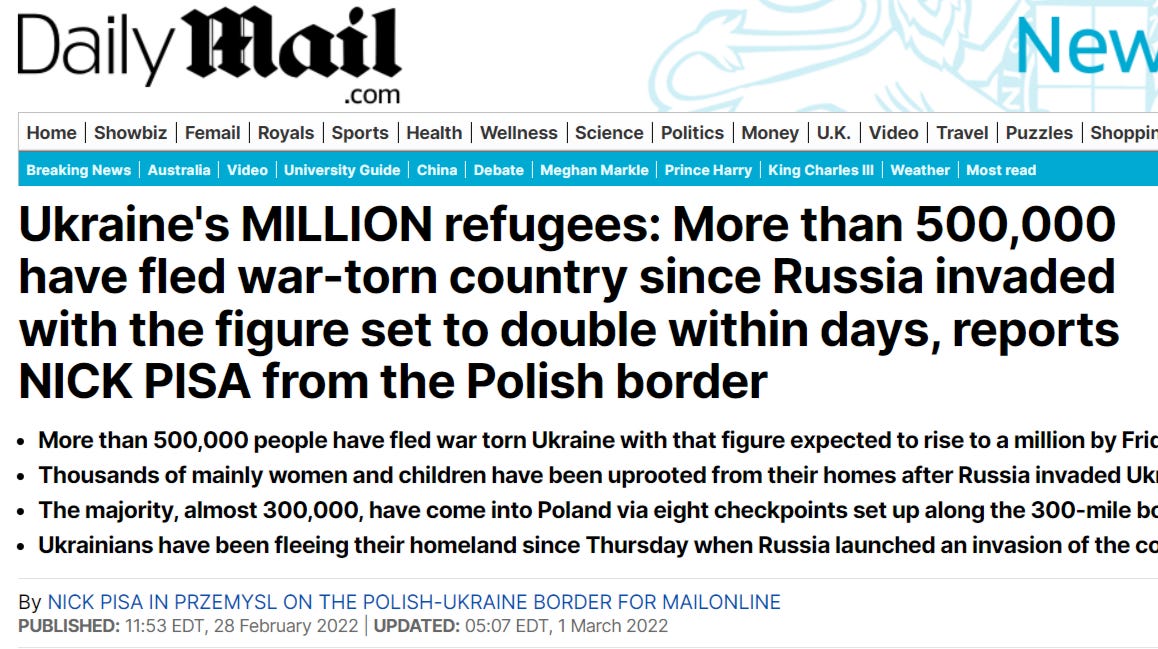
No, this is much worse. These are actual deserters from the already-thinning frontline, which is said to have a measly ~250-300k men or less. As such it represents a catastrophic morale. It's another wake up call to those who actually believe Kiev's casualty numbers. Tens of thousands of confirmed POWs, 100k deserters, but only 30k killed?
Listen to Zelensky lie out of every orifice below. Not only does he lie about mobilization being for replacing brigades but also that it's merely about getting younger soldiers to operate drones, since they're 'better with technology'. We now know the mobilization bill in fact eschewed the 'demobilization' clause, so yes, the new men are to replace brigades but not in the way he implies, i.e. not to rotate them out, but to replace destroyed/deceased ones:
Of course the most disgusting of the lies is the suggestion that the young will only be used to operate drones and technological things, implying they'll be safely in the 'rear' as most drone operators are. In reality, they will be sent as fodder to the zero line. Drone operators take the fewest losses and therefore require the least 'replacement'—it's the storm troops and meatshield contact line defenders that need constant replenishment.
Speculative, but Rezident UA reports:
#Inside
Our source in the OP said that the Syrsky asks the Office of the President to prepare a bill on the mobilization of Ukrainians from the age of 20 for autumn. The General Staff believes that reducing the age to 25 will not allow the TCK to recruit the necessary number of men to replenish reserves, and now young people are needed for assault crews who are able to carry out offensive operations without equipment.
Other rumors continue to plague the struggling Ukrainian project:


So, we come to the natural extension of all the above. Given these issues, and the slow-creeping realization that even the present U.S. "aid" will not amount to much, what are NATO 'partners' to do? They continue talks of deploying troops to save Ukraine:

Here's how the above article begins:
It is 2026, and in a downbeat speech at the Kremlin, Vladimir Putin finally announces a withdrawal from Ukraine. Russian troops have done their best – or worst – but a fresh influx of well-trained Ukrainians have finally prevailed. The Donbas is now in Kyiv's grip, Crimea's fall only days away.
What has turned the tide, though, is not just the long-awaited F16s, or Washington switching the funding back on. Instead, it is the presence of thousands of European troops across Ukraine's western half, protecting cities, ports and borders, making Ukraine feel reassured and Russia unnerved. As Kyiv celebrates, Europe quietly pats itself on the back too: after 80 years clutching America's coat-tails, it finally stepped up to win a war in its own backyard.
Do you see what the sneaky method behind the madness to this wildly delusional stretch is? They are slowly conditioning not only the public but their own leadership to accept the already propositioned ploy of slowly worming ground troops into the equation, by first using them ostensibly to "free up" much-needed Ukrainian "rear" troops. Of course, when those troops, too, depart the temporal realm or 'desert' as 100k of their compatriots have done, it leaves the question of what calamitous next step the NATO troops would take. Many have rightfully recalled that this is precisely how Vietnam's intervention began, with U.S. "advisors" gradually escalating their mission creep and presence in the country.
But just as I had written a while back, such troops would not enjoy the benefits of Article 5, which only applies to NATO's home soil, and the authors here bitterly admit to this fact:
The big question is this: what would happen when bodybags started coming home? Troops stationed in significant numbers would be an obvious target for Russian missiles, and with no Article 5 to protect them, the Kremlin would surely be tempted to attack. Mr Grant says that any contributing European government would have to accept possible loss of life.
The article is mostly a nod and hat tip to the more weighty piece from CFR's Foreign Affairs, penned in part by Substack's own Phillip P. O'Brien, whom many of you are probably familiar with:

This article goes a step further, outlining the 'benefits' of European forces not only providing logistical support in the rear to free up AFU, but also "defensive combat" work, such as operating AD systems to shoot down Russian air attacks.
One interesting aspect presented here is the vindication of my own prophetic words from some of my very earliest articles. Some may recall I once wrote that when the time comes, NATO could easily sell the conflict as a non-Article-5 exception in order to help Ukraine without the fear of nuclear exchange. I said there are many mechanisms and technicalities by which this could be done. Lo and behold, this very article presents the same idea: that NATO could enter Ukraine not under the legal umbrella of "NATO" but simply "Europe"—an important distinction for the sake of deliberately not invoking the Russia/NATO dichotomy and attendant legal responsibilities of Article 5.
As a final third escalatory measure, the article proposes this 'European army' to defend Odessa and even attack approaching Russian troops:
One potential Russian target is Odessa, Ukraine's main port where most of the country's exports are shipped. If Russian troops were to approach the city, European forces in the vicinity would have the right to defend themselves by firing on the advancing soldiers.
Their excuse for the blatant indifference to threat escalation is the canard that Russia is weak, would never use nukes, and that 90% of the Russian army has already been destroyed. In fact, we now know it's the opposite:

Meanwhile:

So, it is in fact Ukraine that lost 90% of its army in the literal first days of the war, and has reconstituted it several times, while the Russian army is now bigger and stronger than before.
But the calls are growing louder:

Former British Deputy Defense Minister James Hippy recommends that the country's leadership consider sending a contingent of the British army to Ukraine for deployment in the rear, far from the war zone. They say that if they find British soldiers near Avdiivka, it can provoke a NATO-Russia conflict.
As well as provocations from NATO and its lapdogs:
Press briefing featuring General Carsten Breuer:
The commander of the Estonian Defense Forces, General Martin Herem, spoke in an interview about his readiness to "blow to smithereens" Russia.
"Estonia, Finland and Sweden will immediately take control of the situation in the Baltic Sea from the first minutes of aggression. If we close the Baltic Sea, how are you going to deliver potatoes from St. Petersburg to Kaliningrad? And we will smash all those who try to influence us from a distance of 50 or 100 kilometers, as is happening today in Ukraine! We will destroy them not in Rakvere or Narva, but in Ivangorod, Pechory or somewhere there."
Which of course is being skewed by the neocons as Russia being the agitator and provocateur, when in reality it's them trying to bait Russia to attack the weaker links in order to continue the forever war to destroy Europe:
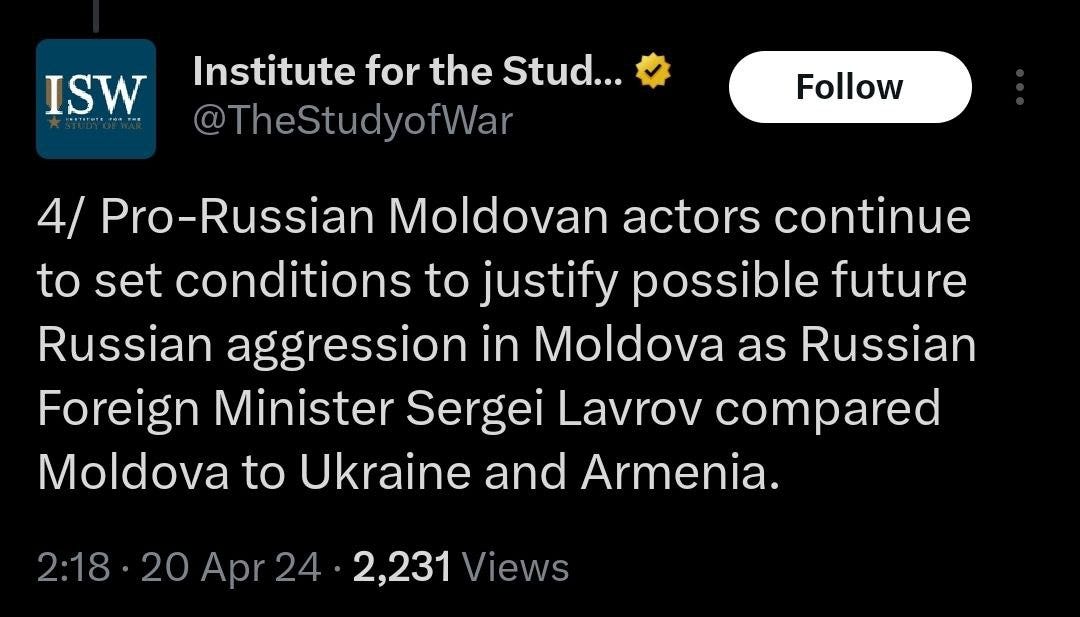
And though they're most likely fake, there continue to be various rumors of French troops having already arrived in Odessa:
‼️BREAKING
‼️🇫🇷🏴☠️🇩🇪🇺🇦 French soldiers reported to have arrived in Odessa
The Kherson Resistance, quoting its own sources in the city, reports that around 10 April (the day Odessa was liberated from the fascists) at least 1,000 French military personnel arrived in the port of Odessa on a civilian ship.
According to pro-Russian partisans, these Frenchmen were met and escorted by 🏁 NATO officers. It is also reported that another transfer of French military personnel to Ukraine is planned in the near future.

One of the reasons for the urgency is that Europe knows only months remain before Donald Trump may take the election, and all aid to Ukraine could potentially be cut off. Thus, Europe is trying to utilize this time to build a coalition of strength to bolster Ukraine. The U.S. on the other hand could be passing the buck onto Europe, with the aid package being a final swollen consolation gift.
The U.S., as some believe, has been desperately trying to pass the Ukrainian buck onto Europe, so that U.S. can concentrate on its more pressing problem of China. Also, it's a way of throwing Europe under the bus, as a failure in Ukraine could later be chalked up to European failure rather than that of the Biden administration. In fact, precisely this was proposed by none other than Lukashenko himself:
But Europe is unable to stand on its own two feet without the U.S., given that European "solidarity" is in fact a well-staged and managed illusion. Even the above Foreign Affairs piece attested to the danger but admitting that were a single member of the intervening 'coalition' to buckle in the face of suffering troop deaths, the entire coalition could immediately collapse. In essence, Europe is like a gang of frightened monkeys hiding behind each other, trying to pull the bear's tail, drawing group 'courage' from each other, but running frantically at the sight of a single member's panic.
The U.S. tried to do everything it could to sweep the conflict under the rug. They tried to lean on Zelensky to negotiate, they fired Vicky Nuland and even tried desperately to keep Zelensky from replacing Zaluzhny. One of the reasons is they likely hoped to use the tension between Zelensky and his rogue general to force Zelensky into concessions or even overthrow him by backing Zaluzhny at a key moment, should Zelensky fail to follow Washington's diktat.
But nothing worked, and Yermak succeeded in cunningly consolidating power around Zelensky. One possibility is that, having failed the above efforts, Washington has now fed Ukraine the $60B merely to put off their collapse by a few months so that it doesn't happen during Biden's re-election campaign and mar his chances.
—
Of course one of the other reasons for the rev up in urgency is the continued rumors of a major new Russian offensive or incursion from the north. Budanov himself acknowledged this recently:
But now there have been repeated rumors from the depths of Russian Telegram and elsewhere that even a new "northern group" tactical symbol has been unveiled: in addition to the famed Z, O, and V, they allege that "N" has now entered the fray.
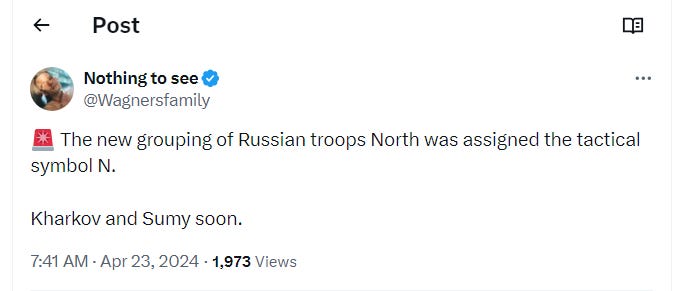
As reported , the Armed Forces of Ukraine in the border area of the Sumy and Kharkov regions are on high alert in connection with their receipt of information about the start of our offensive in the near future.
This is not the first report of preparations for military action in this area.
Previously, there were reports that Russian sappers were removing protective minefields in this direction.
The length of the border is very impressive - more than 1 thousand km, which gives the Russian troops space to choose a strike, and also choose the time of strike.
What are the assumptions regarding the diversionary and main strike, as well as the timing?
#opinion
🇷🇺 Sofa General Staff
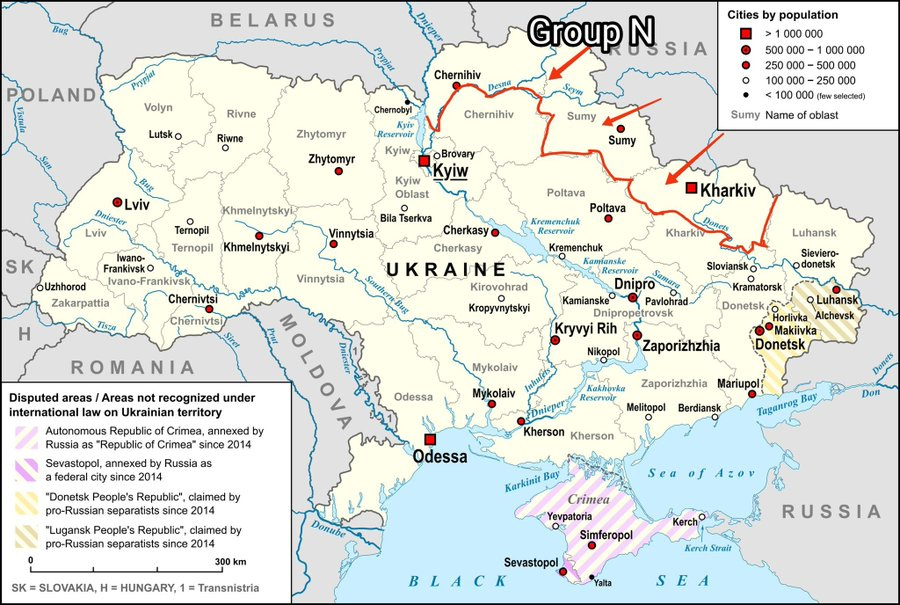
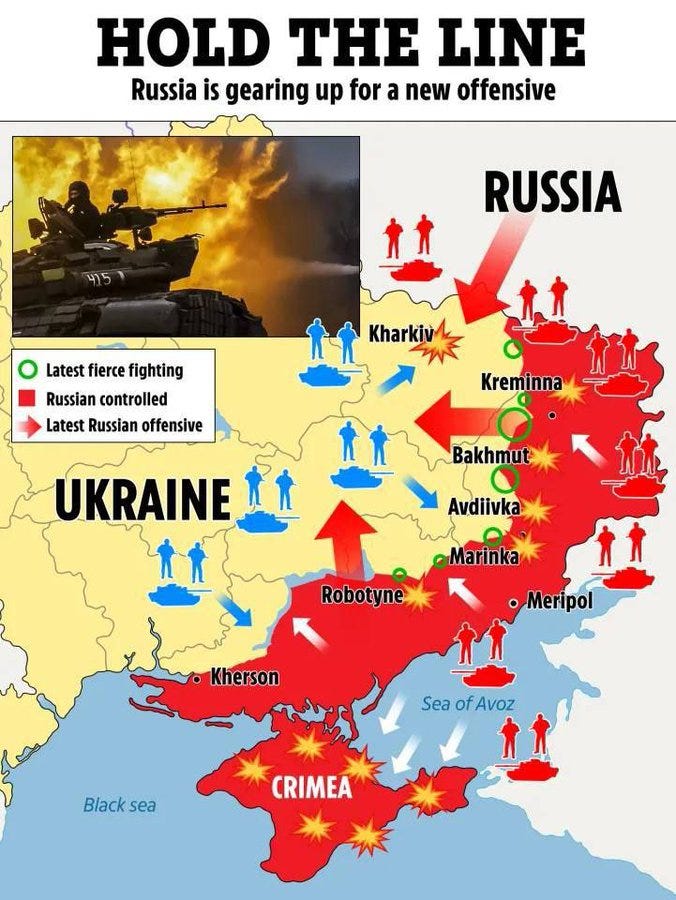
This was followed by several mysterious messages from top Russian accounts urging Ukrainian civilians to evacuate from Sumy and Kharkov. Keep in mind, there's still good chance this is all a mild psyop gag, as I've seen no official confirmation of any new 'Northern group', but it's worth keeping track of.
This is on top of the fact that Russia has begun focusing more heavily on Kharkov, several times striking communications equipment with the well-publicized strike on Kharkov's main TV tower, reportedly disconnecting the entire city from its television feed, which is obviously an ominous sign that often prefigures some large-scale assault:
On the destroyed tower in Kharkiv. It was equipped with various types of antennas and surveillance equipment. TV and radio broadcasting was conducted on the territory of the Belgorod region. And there were also cellular repeaters (Kyivstar, Vodafone), Internet. The Sova system could also be installed there - a complex of optical reconnaissance to a great depth, which helps the Armed Forces of Ukraine in calculating the location of our artillery. As well as UAV repeaters, ballistic and cruise missile detection systems.
Keep in mind for now there continue to be no actual credible or convincing indicators of an upcoming Russian incursion from the north, but all the overlapping developments certainly provide interesting fodder for speculation. As you know, in today's day and age it's impossible to amass large amounts of armored vehicles without being spotted by satellite surveillance so unless Russia has developed some unheard of new masking technique, we'd likely know in advance if they were actually getting ready to incur, as we did in the days leading up to February 24, 2022.
The other interesting development is the arrest of deputy defense minister Timur Ivanov, as well as a cohort of his underlings, which more and more is beginning to look like a major purge of a corrupt wing of the Russian MOD:
The fact that they put him through this court room glass enclosure humiliation ritual literally on the same day that he sat next to Shoigu during a plenary address is very telling. In fact, it is outright shocking. Spot him below in the first seconds of yesterday's address:
He went straight from sitting next to Shoigu to a prison cell. There are loads of speculative flights that can be made on behalf of this. What I'll say for now is there are two competing theories. One—which comes from a slightly more 5th/6th column-leaning element—states that a Shoigu-allied faction is being purged, given that Ivanov was allegedly appointed by Shoigu, with the implication being that this is some kind of major coup against Shoigu, which could lead to his own career's demise.
The other more likely explanation goes as follows:
The beginning of neat purges before the counter-offensive of the Russian army...
Apparently, the Kremlin will trample all-in, which is why it is giving a clear signal to the entire power vertical (including Shoigu's group) to mobilize.
Mobilize - take care of your direct obligations, and also clearly understand the fact that for every failure you will have to pay not with the careers of middle echelon representatives - subordinates, but with your own head.
Some believe that Putin had planned to do a mass purge of all the corrupt after his inauguration on May 7th, when his hands are more freed politically. This could be a final purge of any remaining corrupt, 6th columnist, and liberal factions before plunging the SMO into a new phase of the expected large-scale offensives to come.
Furthermore, as the above hints, it could be a final message-sending attempt to everyone involved on the eve of these coming military escalations. While on the surface it may seem like an embarrassing or damaging mark on Russia's or the MOD's reputation, in fact the news thus far has been taken with great excitement among the Russian forces, elevating morale. It sends a message that Russia is cleaning up all corruption, and that even the highest levels of the military echelons, to the "fat cat suits" of the defense ministry, are not immune to consequences and accountability for fraud, deception, betrayal, and treason.
This is why I believe the optics of carting off Ivanov to the court room glass cage in full military general regalia were very deliberate. It was a message sent to the public that the time has come to tighten the belt and allow no more leeway for corruption and betrayal, no matter who you are.
This powerful image will resonate very well with the armed forces:

Interestingly, there was a 'rumor' that Ivanov was at the center of the MOD's calamitous friction with the Wagner group, though I haven't been able to corroborate that just yet. Of course, it wouldn't be surprising if two corrupt mafia bosses squared off over the leavings on the table. Anticipating the next logical challenge, I can already say that concern trolls will use this instance to declare that "Prigozhin (and Strelkov) was right all along, the MOD is a corrupt gang", etc., etc. But any corruption within the MOD does not absolve Prigozhin's own proven corruption. It just so happens that Prigozhin was a much more charismatic actor and salesman of his deeds, and thus comes across as the quintessential 'folk hero' of the saga, when the truth is far more granular than that.
Either way, this stir has the potential to shake things up in even bigger ways than we realize, and could be the start of something much bigger, good or bad, though in my estimations it's extremely good and feels like it marks a new change in ethos of the entire country.
This was something recently expressed by others, like in the following article:
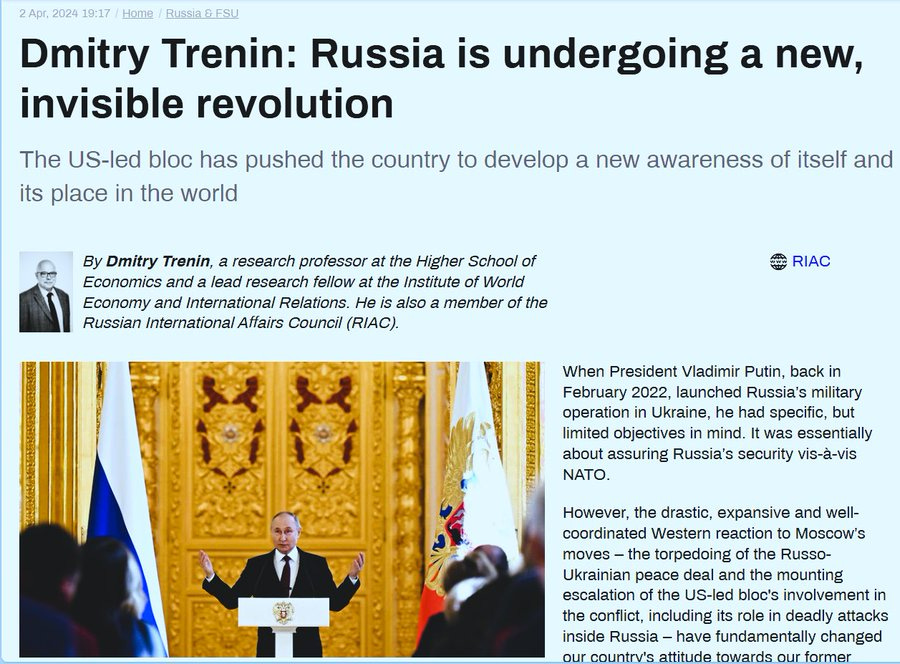
It is important to note that the Russian elites, which since the 1990s have been closely tied to the West, have had to make a hard choice recently between their country and their assets. Those who decided to stay have had to become more "national" in their outlook and action. Meanwhile, Putin has launched a campaign to form a new elite around the Ukraine war veterans. The expected turnover of Russian elites, and the transformation from a cosmopolitan group of self-serving individuals into a more traditional coterie of privileged servants of the state and its leader would make sure that the foreign policy revolution is complete.
Supported by this:
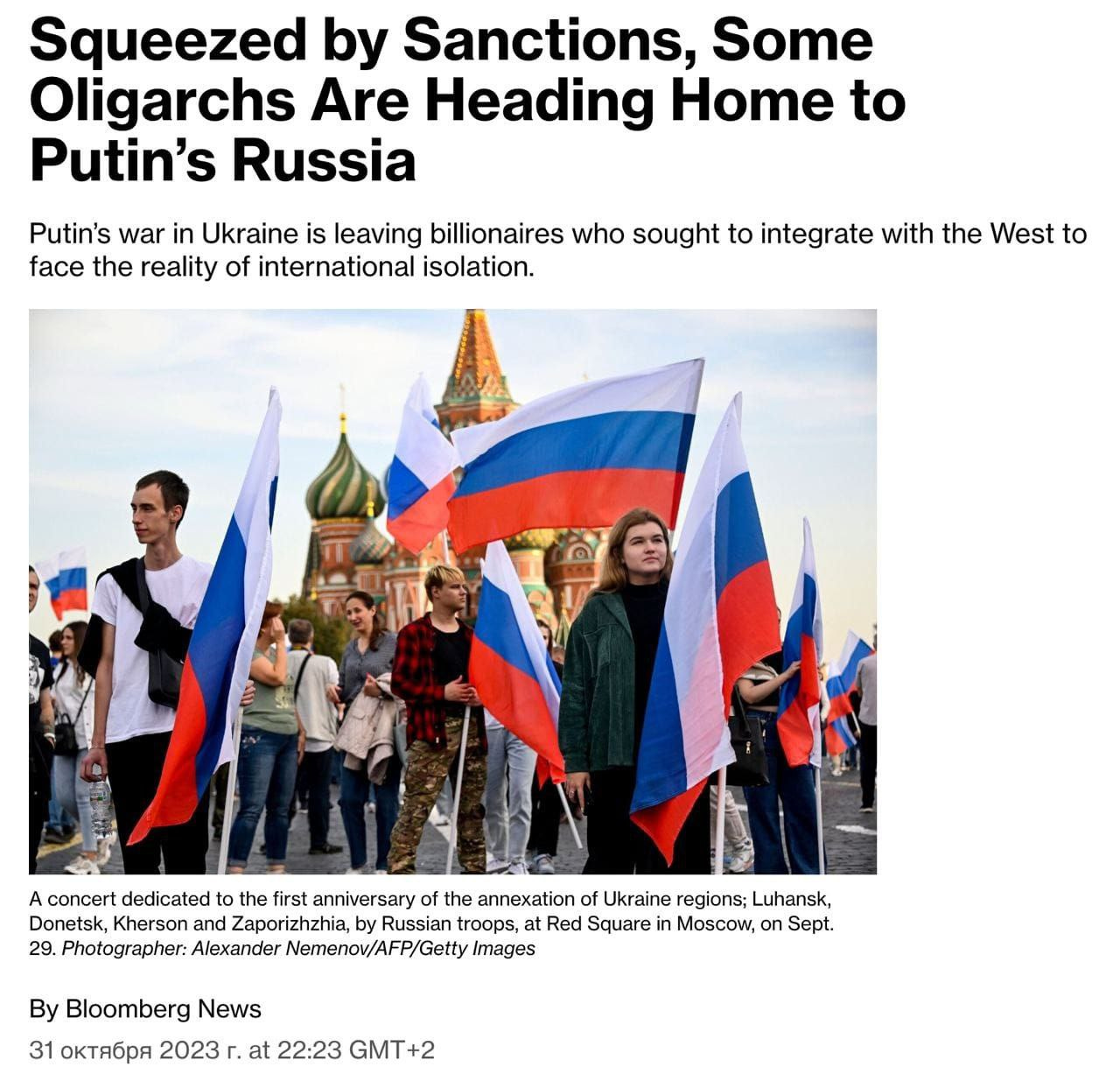
There certainly is a slow transformation happening beneath the surface of Russian society, which includes at the elite level. Elites are being bent to the will of the state, just like in Xi's China. This Russian purge, I suspect, is part and parcel to the ongoing process.
The most important aspect is that this arrest could have happened at any time—authorities said the case has been secretly in progress for 5+ years; a few more weeks/months/year would not have changed much. The fact that he was finally booked just now means the timing is important with present events, which includes the upcoming Russian military escalations.
Ivanov's mother, by the way, is Lezgian from Dagestan, and his wife and children are reported to be Israeli dual-passport holders, which naturally adds a little spice to the story.
—
Now Ukraine faces major battlefield breakthroughs as Russian forces have been steamrolling AFU in a variety of important positions and fronts, capturing Ocheretyne and Novobakhmutovka earlier:
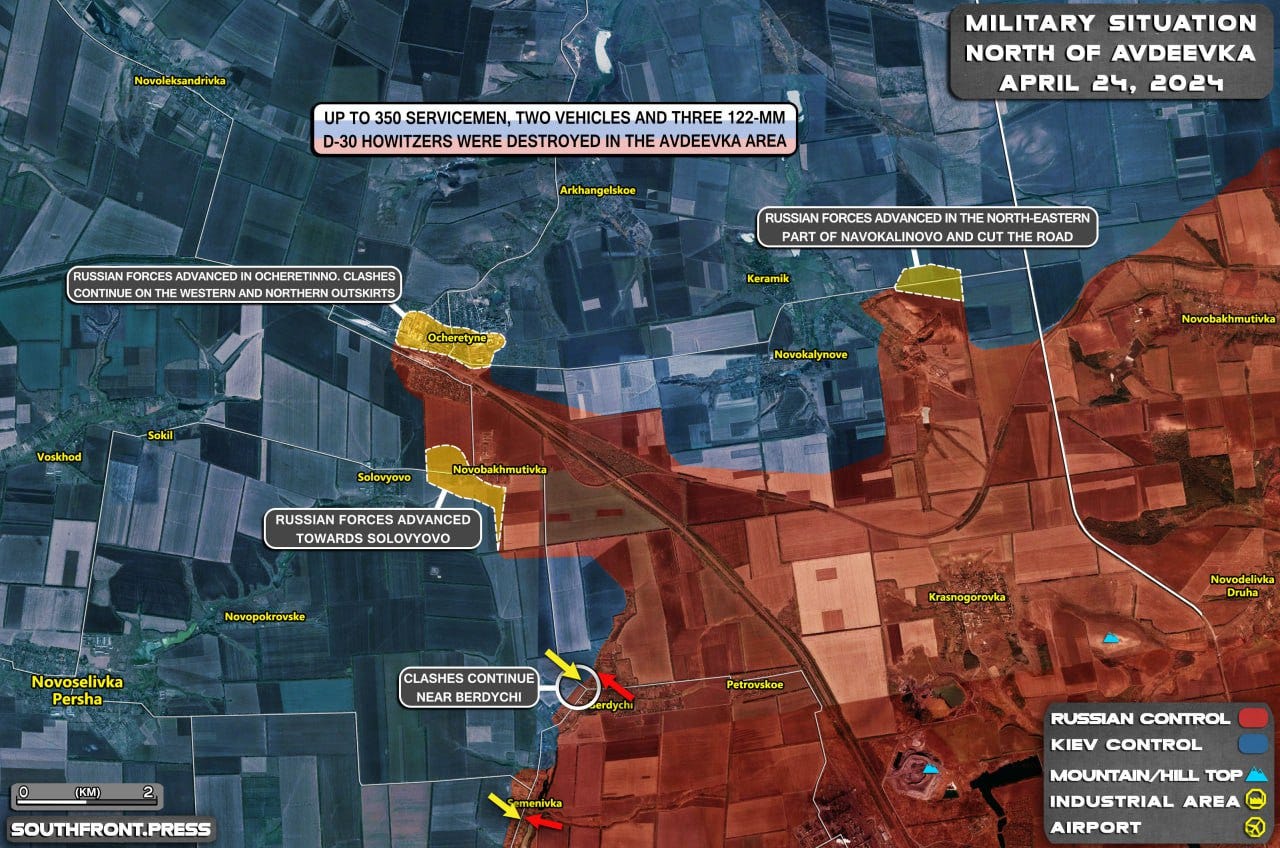
As well as major portions of Krasnogorovka:
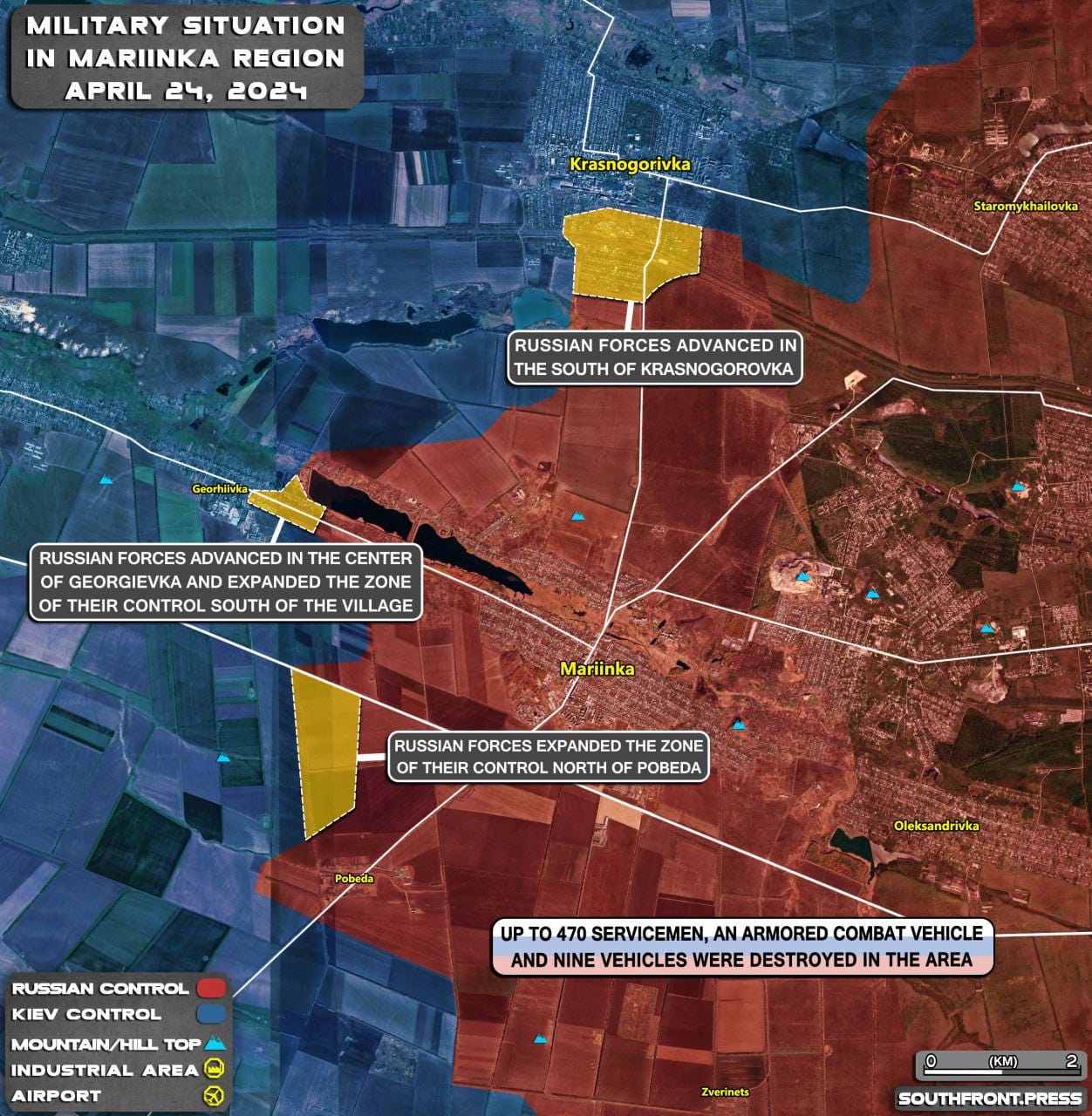
The AFU's own sources write that the collapse has been nearly catastrophic:
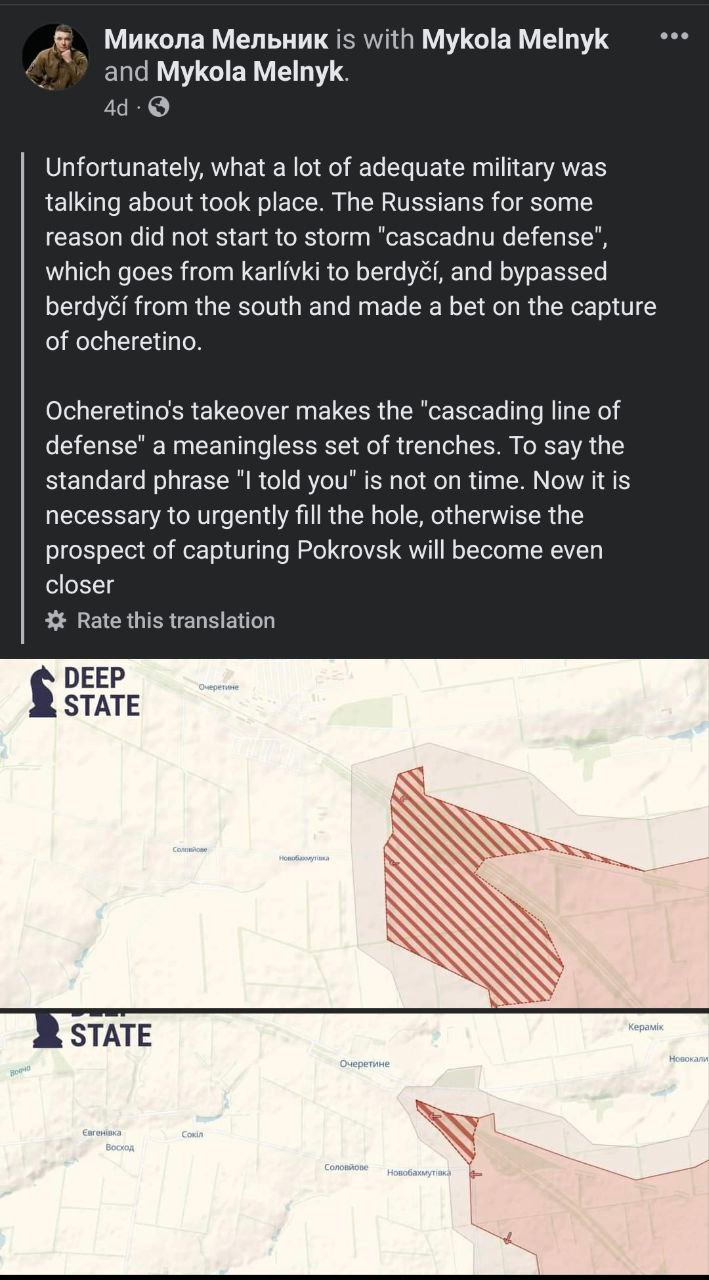


Now they fear that Russia stands to push the AFU back to the river line with any future large scale thrust, i.e. particularly if new brigades get injected with the upcoming May/June offensives everyone expects to happen:

One of the biggest dangers in the new advancements is that they stand to slowly envelop the entire Konstantinovka region into a giant boiler, or at the least cut Konstantinovka's key Main Supply Routes:
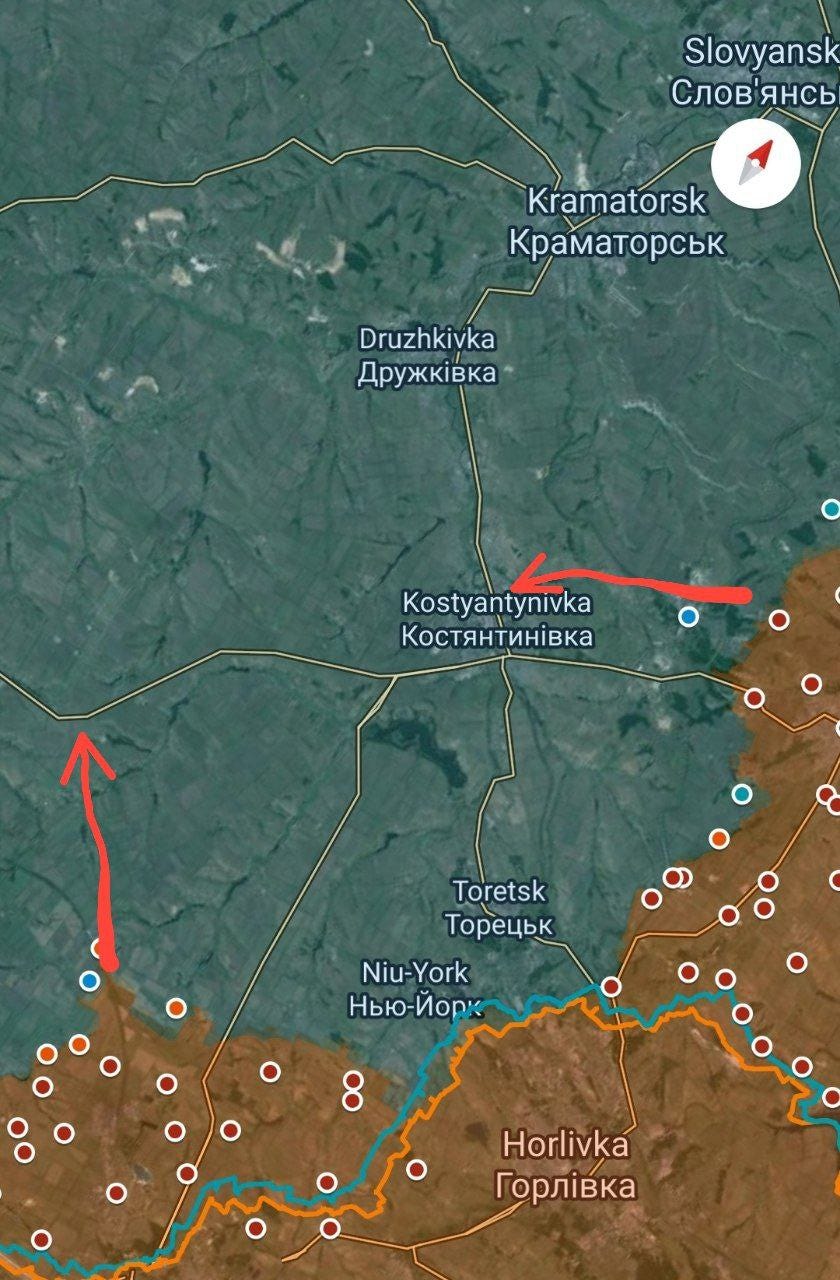
The topmost red arrow is of course the recent Russian advancements into Chasov Yar, which threatens to cut Konstantinovka in that axis.
The outlook for the near future is for Ukraine to make a bunch of big demonstrative and showy attacks with their new armaments, i.e. HIMARs and ATACMS ammo, to give the impression of some kind of battlefield initiative. They'll likely make a few more large-scale drone attacks on Russia, Crimea, etc., in concert with ATACMS and will hope to put on a morale-boosting display, but on the real battlefield they will continue being wiped away by Russia's nibbling advances.
Will they seek to attack the Kerch bridge soon? No, I believe they will save that as a final damage control trump card when the Russian assault is peaking at its highest intensity. If Russia launches the large-scale offensives around June, and if there is a big collapse in the AFU, they will save their last gimmick for precisely that moment to try and turn perceptions around and make it look like they've dealt some kind of crippling blow to the Russian armed forces by striking the bridge. This is why they've already telegraphed the literal schedule of the Kerch attack to be precisely "before summertime" which is when they expect the Russian offensive to be launched. So look for an unprecedented Kerch attack around June, give or take a month.
On that topic, by the way, Martyanov did write a good piece recently which I mostly agree with. ATACMS will be incapable of "destroying" the bridge, as the most it could do is knock down another span/deck, which takes about two months to replace. The only way to more permanently offline it is to hit the supports, and probably with multiple projectiles, which is unlikely to happen. The Germans—who are good at this sort of thing—calculated that it would take 20-40 Taurus missiles as you'll recall.
My prediction is that Ukraine knows this and will perhaps try to hit multiple spans, knocking down the bridge over a wider area, but that may not even affect the replacement time as several adjacent crews working concurrently could replace multiple spans in the same time it takes to replace one. In short, it will achieve nothing, and I'm skeptical they could even hit it to begin with, as Ukraine has rarely penetrated important areas with its missile strikes, and continues to cleverly hit less-defended areas like already-decommissioned ships or those undergoing repairs in disused parts of Crimea like Zaliv port. Not to mention that only happened because the Storm Shadows used were sea-skimming and can get close beneath radar horizon nets, while the ATACMs has no such capability and must come directly overhead in full view of radars (though of course a saturation strike is possible).
—
As a final note, Russia has captured its first Abrams iteration, the M1150 armored breacher based on the Abrams:
At the same time, a load of Western gear has arrived in Moscow, including the Bradleys, German 1A3 Marders, MRAPs, and M113s, to be displayed in Patriot Park:
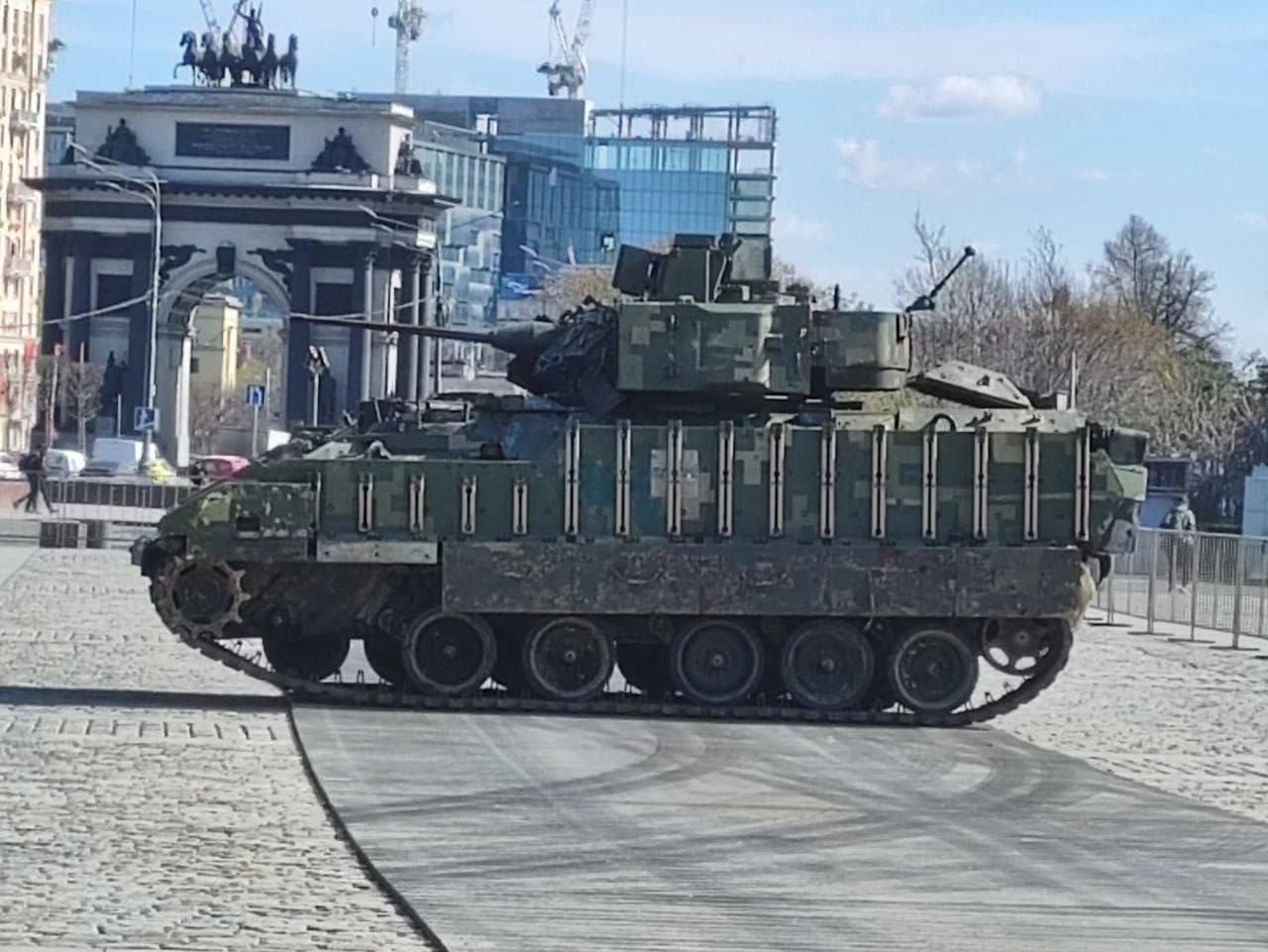
And a captured Leopard 2A5 is being worked on, with Russian crews—whether jokingly or not—saying they'll fix it up and use it in battle. Well, reportedly it came stocked with full complement of unused ammo, so it's possible:
Folks, as a quick reminder: my only two official accounts are here on Substack and my Twitter. Anyone messaging you or claiming to be me anywhere else is conducting fraud, particularly this person on Telegram who is not me:

Your support is invaluable. If you enjoyed the read, I would greatly appreciate if you subscribed to a monthly/yearly pledge to support my work, so that I may continue providing you with detailed, incisive reports like this one.
Alternatively, you can tip here: Tip Jar
23 Apr 2024 | 3:40 am
3. 3M22 Zircon: Debunking Misconceptions
There has been a lot of talk about the Russian Zircon/Tsirkon missile recently, particularly in light of strikes on Kiev in late March that were said to have used it. Since then, there have been several high level efforts from experts to delve into the precise details of the missile's operation and secretive characteristics.
But most of all, there has been a general effort from the Western commentariat to deprecate Russian hypersonic technology as relates to those weapons utilized during the conflict so far. Thus I wanted to do a little explainer in order to dispel some of the myths surrounding these weapons on both sides, and get down to the actual realistic properties we can expect to see.
I'll be pulling some of the analysis from a relatively informative—albeit highly biased—thread on it from a pro-UA NAFO missile expert because he perfectly summarizes all the most common Western accusations and misconceptions about not only the Zircon but all Russian hypersonics in general. However, he mostly knows what he's talking about to a degree, so some of his conclusions reached are relatively accurate and worth sharing if only because he and his team are the first I've seen to take a serious analytical look at the Zircon.
The Zircon missile is shrouded in mystery more than most other Russian objects in that not only does no one seem to even know what type of weapon it actually is, but what it even looks like. All the most popular renders on the internet are in fact likely wrong. The most common depicts it in line with the Boeing X-51 Waverider and the recognizable shape of a scramjet style hypersonic missile, like so:
X-51 Waverider:
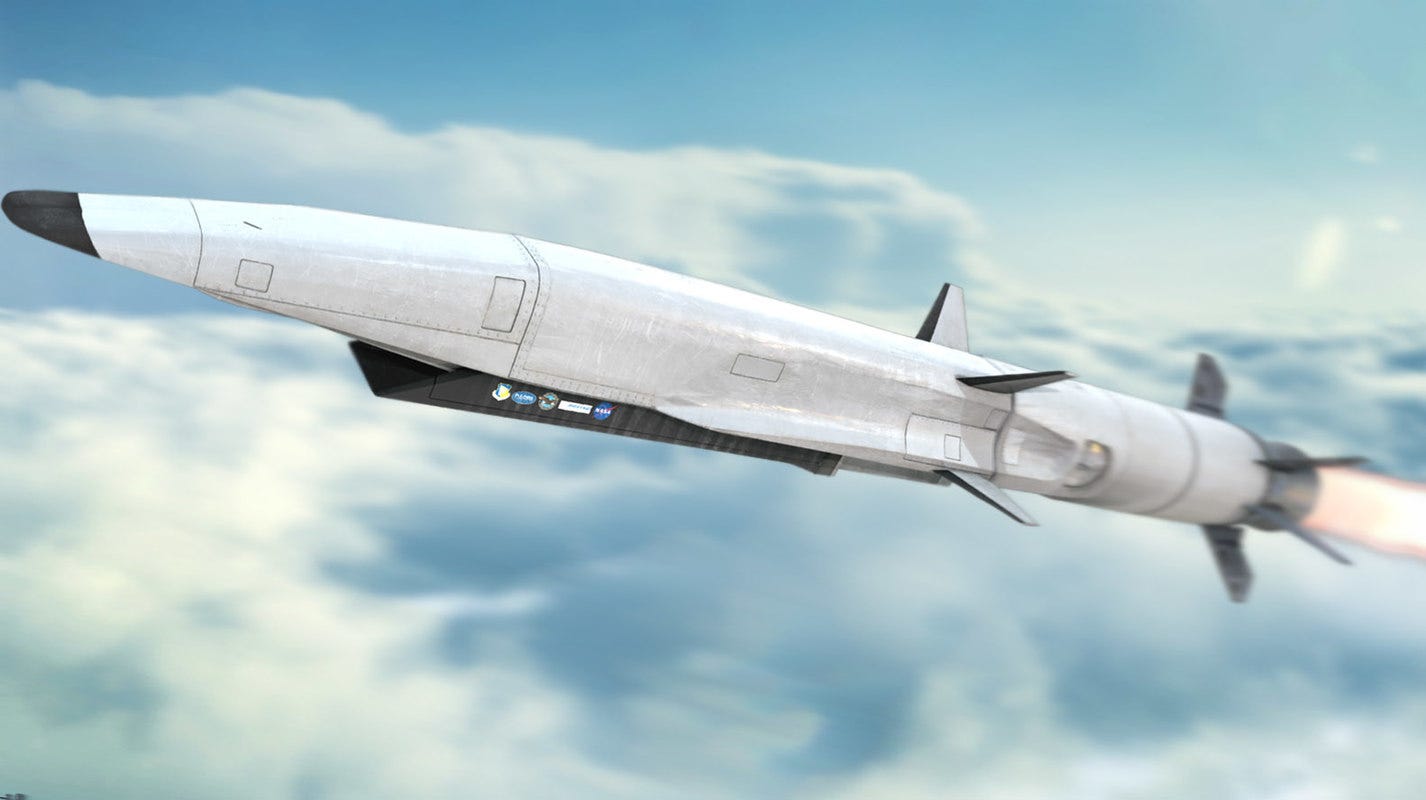
"Mythical" version of Zircon:
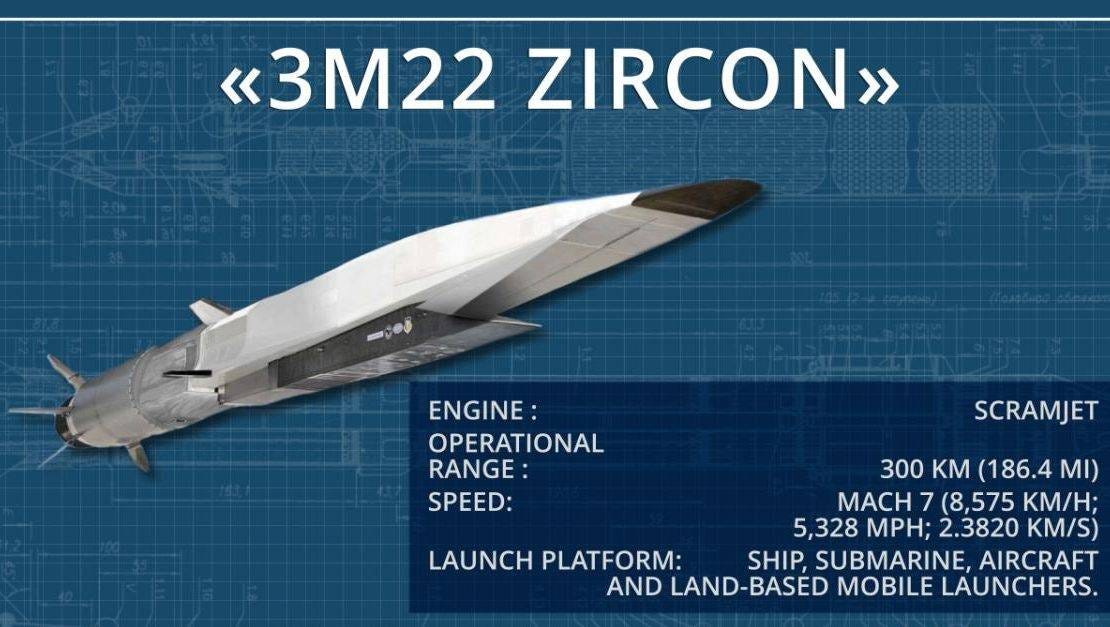
In fact as you can see, it mostly appears to be a copy-pasted Waverider, virtually identical.
What, don't we know what it looks like now that Russia has fired several of them, you ask? In fact, no: that's part of the mystique I mentioned. The reason is that during launch videos, the Russian MOD actually went so far as to blur the missile precisely to keep people from knowing which propulsion type it uses, as that would give away the game.
Here are two rare closeups of a Zircon being launched:
Furthermore, you can see the missile has a flat 'cap' on the front, even further blocking view of the type of intakes:

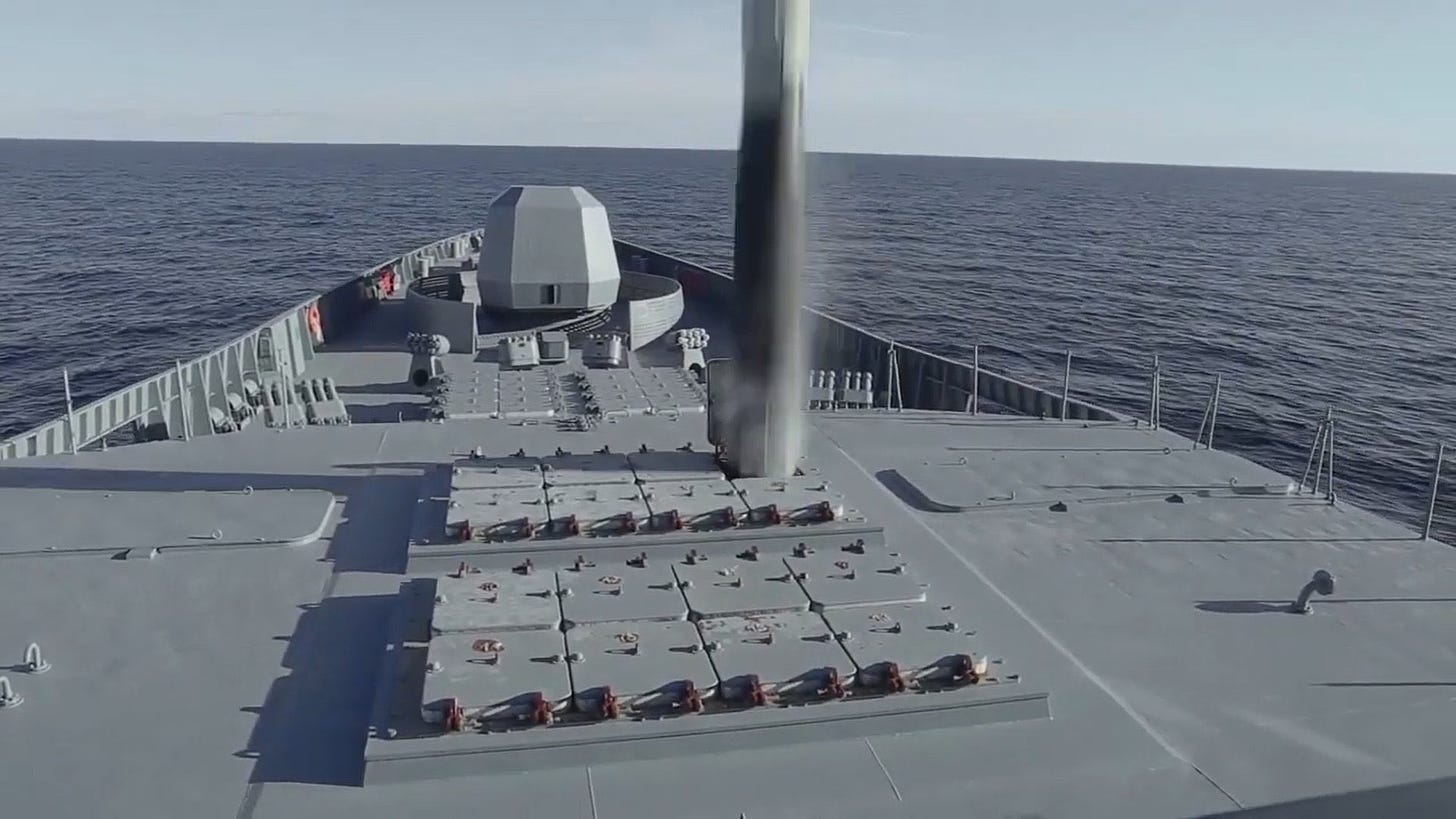
The cap gets jettisoned once the missile is in the air—here's the P-800 Oniks missile jettisoning its cap for comparison purposes:
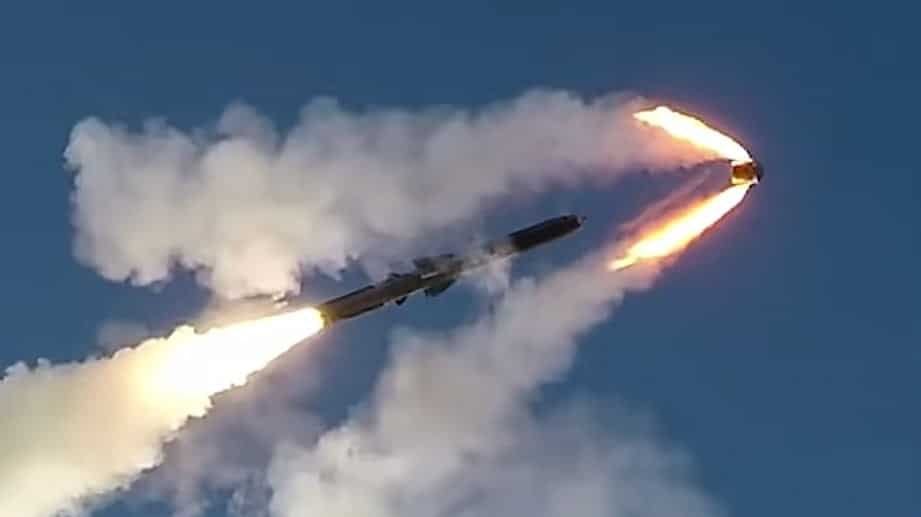
And here's where some have connected the provenance of the Zircon. Just as the Kinzhal is assumed to be based on the Iskander, with some important modifications like the potential addition of an active radar in order to be able to hit ships, here too the Zircon is believed by some to be a highly reworked version of the P-800 Oniks. Here's a photo of an Oniks being launched from a ship—note the same flat cap/fairing:

But the most important thing that means, is that the Zircon would therefore likely have a design similar to the Oniks, like so:
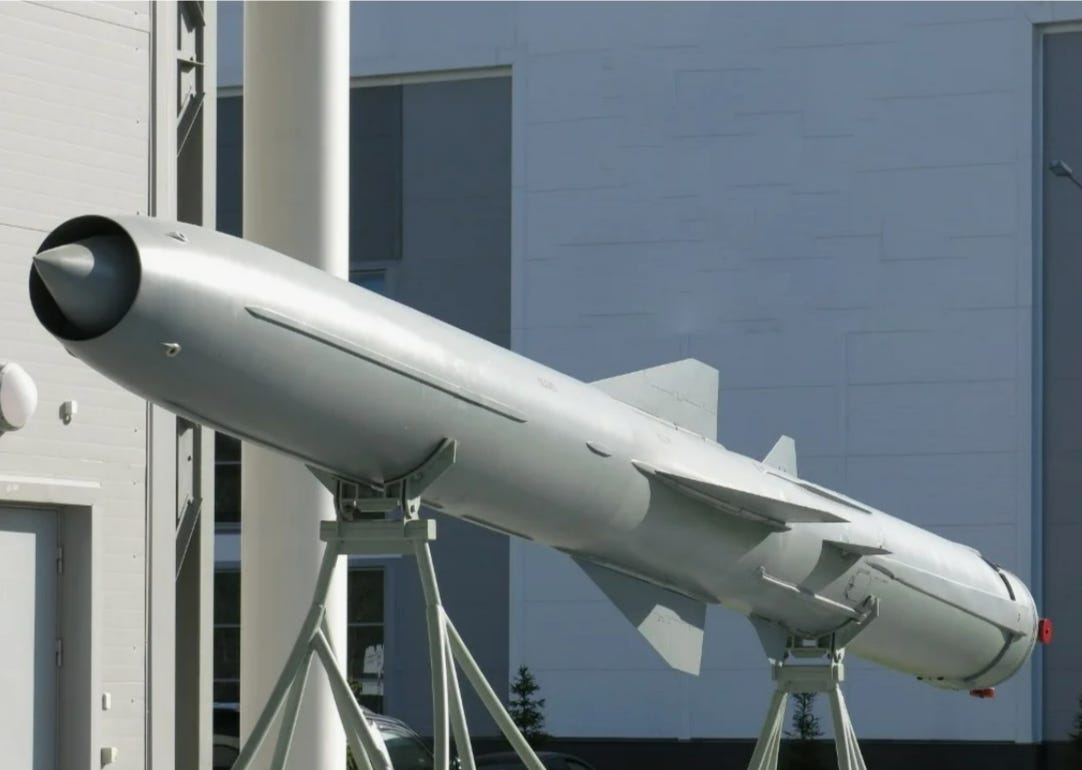
One of the reasons is that the Oniks is reportedly fitted with such a cap precisely because it has a spherical front ramjet intake, and the cap is meant to block debris from entering it during launch. This is in contrast to missiles which have a hidden air intake 'scoop' beneath the fuselage, like for instance the Kalibr, which wouldn't have to worry about that:
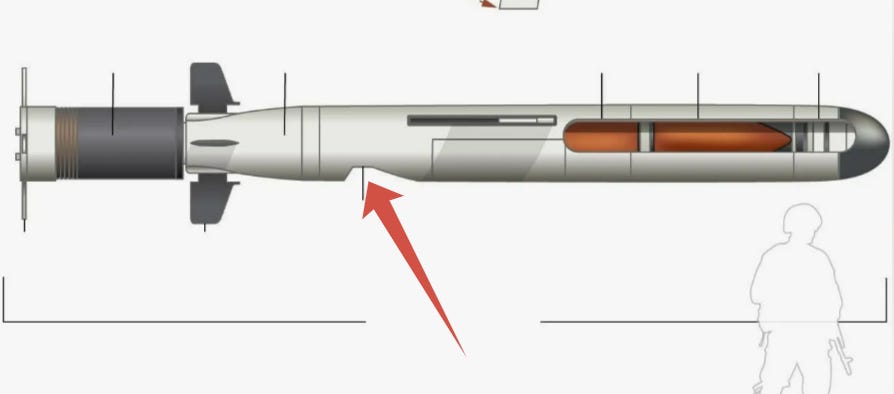
That means the Zircon necessarily must have a similar spherical front intake because there would be no other reason to have a drop-off fairing like that to cover the nose. Also, it should be noted Zircon occupies the same exact VLS launch tube dimensions as the Oniks.
We do have a few more potential clues. For instance from the launch video there's a grainy shot of the Zircon after the missile cap/fairing has been jettisoned. One interesting thing to note is there does appear a potential small depression that could point to a scoop akin more to the Waverider scramjet intake design, but that may also be an optical illusion of sorts:
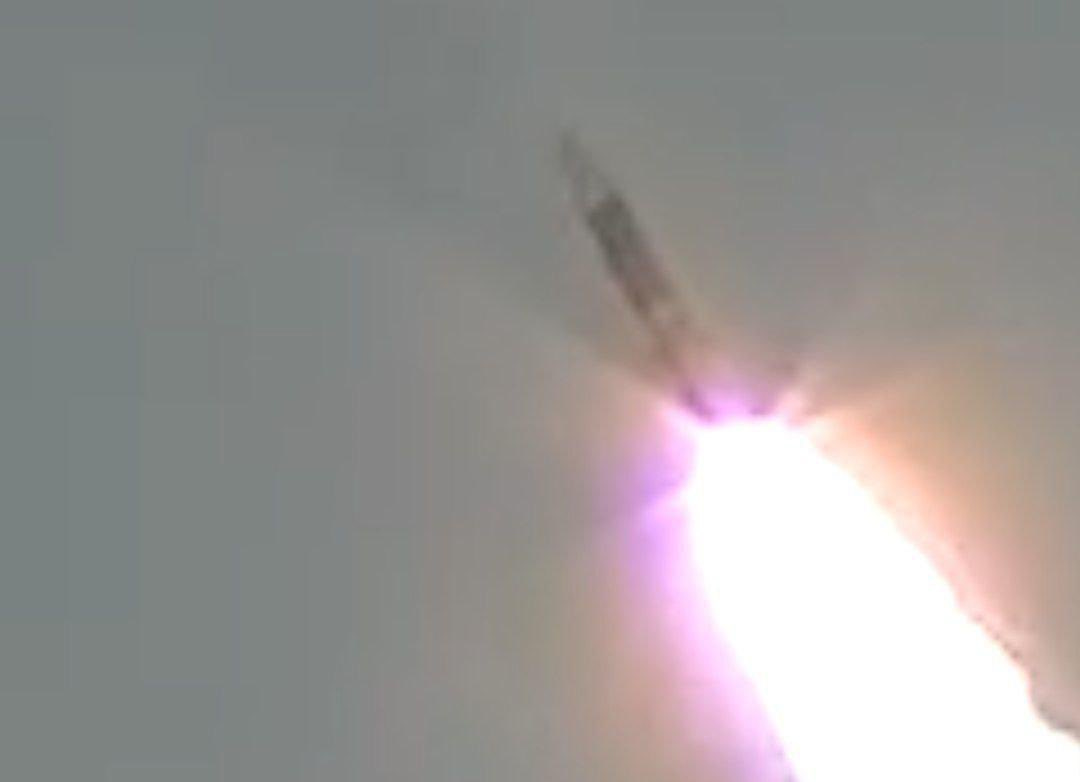
Then we have the actual strike video from the test above. Keep in mind during such strikes on decommissioned ship targets the missiles are not equipped with an explosive warhead, so all you see is the inert missile striking the target kinetically:
It's difficult to tell from the screenshots but it does suggest it may be shaped more conventionally, like the Oniks:
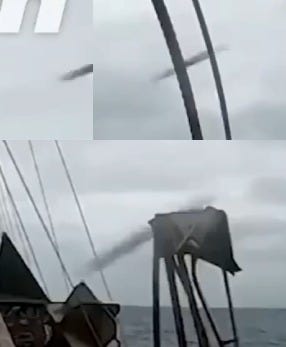
Also, note the speed. While it does look extremely fast, it's questionable whether the terminal impact is hypersonic for a variety of reasons, not least of which being that the missile does not appear to be glowing hot nor have any sort of plasma bubble effect.
In previous articles like this one below, I've highlighted how the Kinzhal missile actually appears to be glowing red hot as it strikes even in broad daylight, compared to an Iskander (right) which has signs of high thermal charring along the nosecone but is no longer glowing:

For that very detailed breakdown of the Kinzhal and how hypersonic ballistic missiles function in general, visit this previous article:
If the Zircon is basically a remodeled Oniks, then how does it achieve such drastically superior performance?
There are a few key factors. Firstly, Russia had previously announced the discovery of new fuel types, particularly—as rumored—a proprietary aluminum nano-particle-based fuel called Decilin-M:
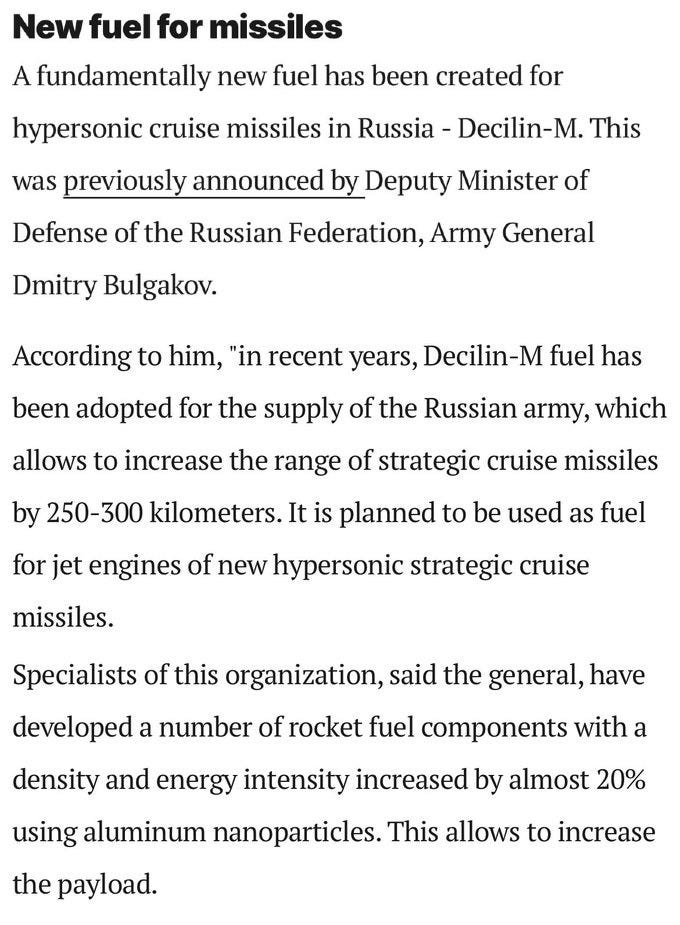
Next, the Zircon's flight profile is likely to utilize a much higher altitude than the sea-skimming Oniks. During launch, the Oniks famously pitches over at a very shallow altitude, as can be seen in this photo:
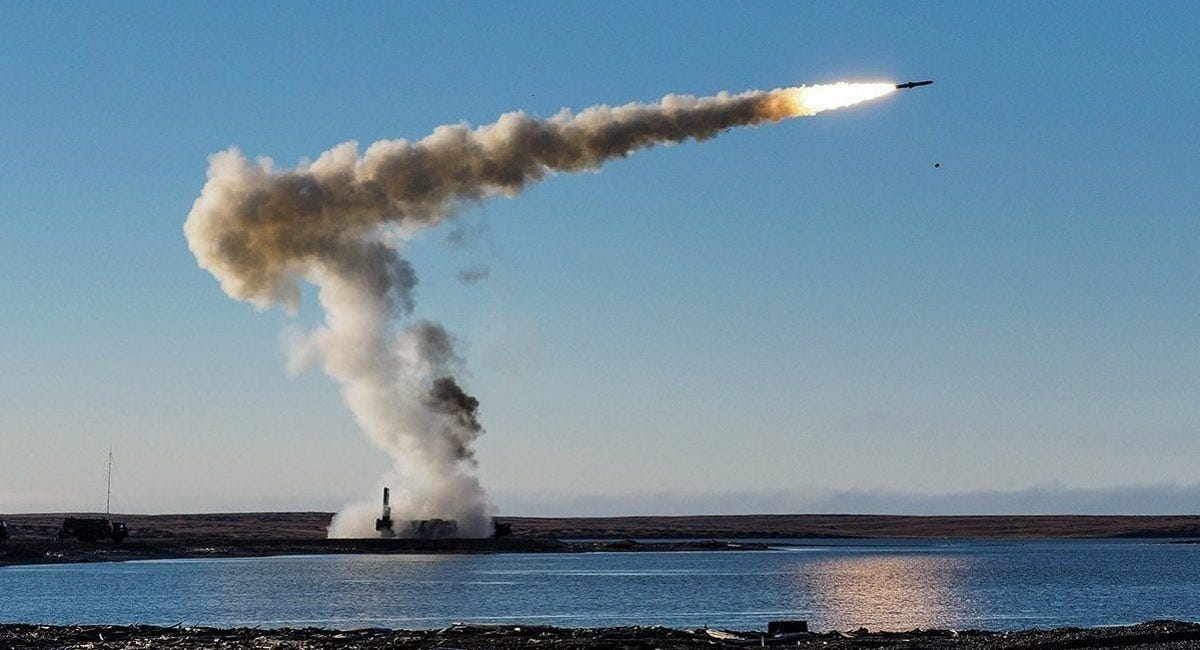
The Zircon on the other hand is propelled by its rocket booster stage to much higher altitudes prior to pitching and heading toward the target, as can be seen in this video:
The Zircon is said to reach upwards of ~30km or ~90,000ft, where the atmospheric pressure is very low, allowing hypersonic flight without disintegration.
There are some issues, however. Ramjets are said to max out at hypersonic speeds, and are ideally designed for Mach 3-5. So detractors use this to opine that the Zircon is not a true hypersonic vehicle since it "likely reuses the Oniks" ramjet engine. However, there's no evidence to suggest the Zircon doesn't have a scramjet instead, or even a hybrid ramjet/scramjet, which have been tested in the past and are not out of the realm of possibility. After all, it was Russia that actually fielded the first ever ramjet, so it doesn't strain credulity to suggest they could be at the leading edge of innovation in this area:
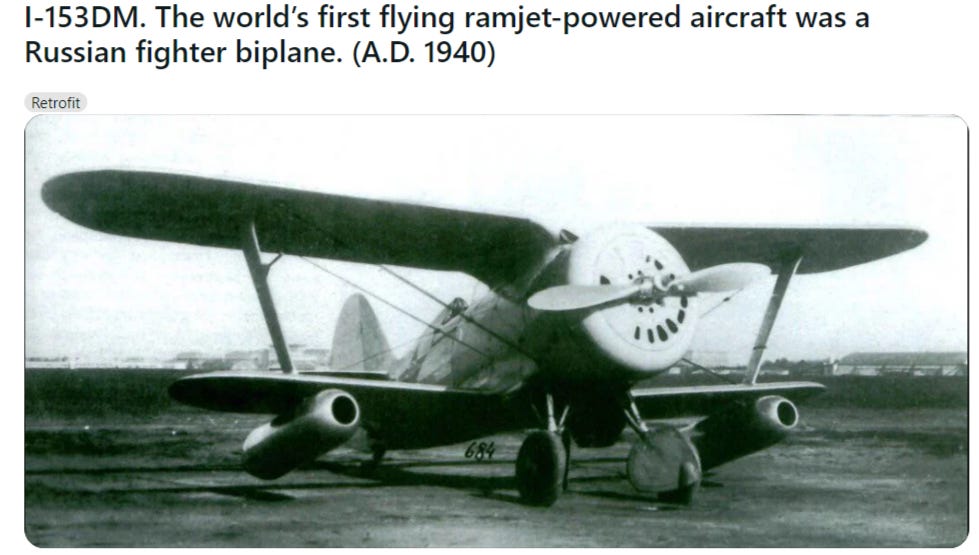
Here's where we get to the heart of things. As I said, the chief accusation by the Western 'experts' is that a Zircon is not a "true" hypersonic missile, a charge most succinctly enunciated by the earlier NAFO 'expert'. But the main reason for his mistake exposes a gigantic blunder not only on his, but the entire pro-UA commentariat's behalf.
You see, they refer to a well-known Gerasimov statement of one of the Zircon test's flight metrics to deduce the Zircon's speed:
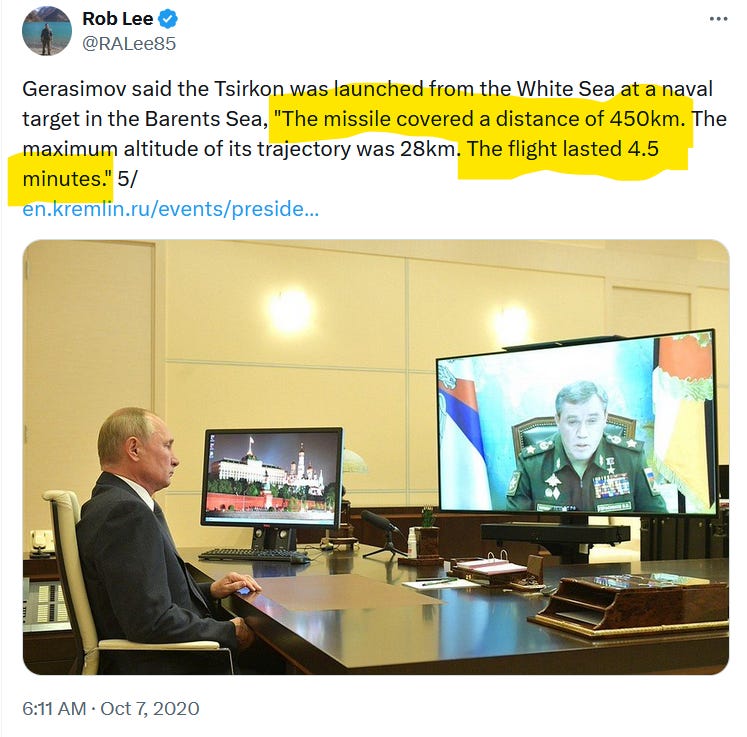
The missile covered 450km in 4.5 minutes, as per the above. That would be 450,000m / 270 seconds = 1,666.67 meters per second x 60 = 100,000 meters per minute x 60 = 6,000,000 meters per hour, or 6000 kilometers per hour. Divide that by Mach 1, which is 1225km/h (6000km / 1225) and we get = Mach 4.9.
And this is precisely what the NAFO 'expert' concludes:

Unfortunately, this is an absolutely disastrous amateur mistake, exposing one of the pro-UA commentariat's biggest and most well-known defense experts as totally incompetent.
You see, Mach 4.9 is the average speed it took for the Zircon to reach the target from the moment of launch. The problem is, the missile spends anywhere from the first 1-3 minutes just accelerating to hypersonic plateau, as well as the fact that it's not traveling in a straight line but rather sharply upwards for a large portion of the opening. Do you mean to tell me NAFO experts have no clue about differential aspects and how it affects the perceived time on target?
To belabor the point, just as a small primer, here are some acceleration rates for an F-15, which is one of the fastest accelerating fighter craft:

You'll note it takes it upwards of 200-300 seconds to reach just Mach 2. Similarly, how long does it take a rocket like the Falcon to reach the hypersonic barrier of Mach 5? From a SpaceX launch:

It takes 2.5 minutes for the rocket to accelerate to ~6200km/h which is roughly Mach 5.
Think about that for a moment. This means the Zircon may first be going upward at a sharp angle, not even making much headway toward the target yet, for upwards of 2-3 minutes before it even reaches its final cruising speed and altitude, at which point it fully pitches over to a horizontal azimuth. Thus the 4.5 minute flight time represents at least 2 minutes of wasted climbing time. This is akin to timing Usain Bolt from the moment he leaves the locker room to the starting block, then cutting the timer when he passes the finishing line, and averaging that out to say Usain Bolt actually runs at 5mph rather than 27mph, all because you had the timer running when he was walking and warming up.
What does this tell us?
That means if the Zircon averaged nearly Mach 5 (4.9) in light of the above, counting the steep climb, acceleration, etc., then the actual top speed it likely maintained for the cruising duration of the flight has to necessarily be somewhere in the Mach 7+ range. Since Mach 5 is an average that includes all the lowest velocities of the initial acceleration, then in order to hit that average, the Zircon would have had to maintain well above Mach 5 afterwards to make the math work.
And of course, the usually quoted top speed is Mach 7-9:
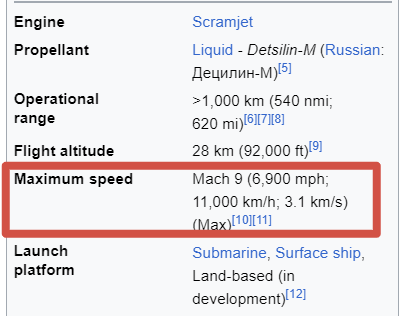
And surprise, surprise, what was the actual full statement by Gerasimov that pro-UA experts very conveniently left out?

Anticipating one complaint: but since the Zircon fires off with an initial rocket boosted stage, doesn't it get to maximum velocity/altitude very quickly?
Beyond the fact that I showed that even rockets can take 2-3 minutes to reach such speeds, there is also the fact that we can see from launch videos that the Zircon's booster stage appears quite short. Watch the video a few paragraphs earlier of the launch, you can see the booster burn out seconds after launch which means that the main engine(s) likely take over at that point, accelerating fairly slowly, more in line with the F-15 chart showed above.
Also this:
"The X-51 is initially propelled by an MGM-140 ATACMS solid rocket booster to approximately Mach 4.5" - and that happened after air launch from B-52. This Onyx-size booster still looks too small.
The Boeing Waverider was propelled by a large ATACMS booster, which could only get it to Mach 4.5. Meanwhile, the Oniks/Zircon boosters you can see in the pics are comparatively tiny, no where near ATACMs size, and therefore would logically be able to boost the Zircon to a fraction of Mach 4.5, which means climb/acceleration time would dramatically increase before the Zircon can actually hit peak velocity.
Of course, that may offer another clue, given that scramjets cannot even operate below hypersonic threshold, and such a short booster would likely not allow reaching hypersonic plateau which would logically suggest the missile to have some form of hybrid propulsion—but that's just speculation.
In support, we have two accounts from actual Ukrainian sources of the Zircon's speed. One Ukrainian publication quotes the airforce with tracking the Zircon during one of the attacks on Kiev at over 9000km/h, which would be Mach 7.3:
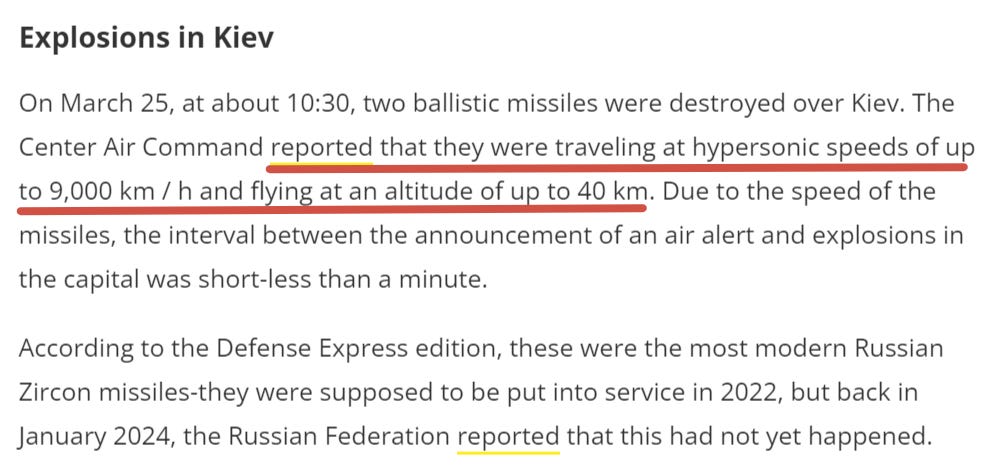
And another was a claim by a pro-UA OSINTer with tens of thousands of followers whose 'source' allegedly stated that the Zircon covered the distance from Crimea to Kiev in ~3 minutes:
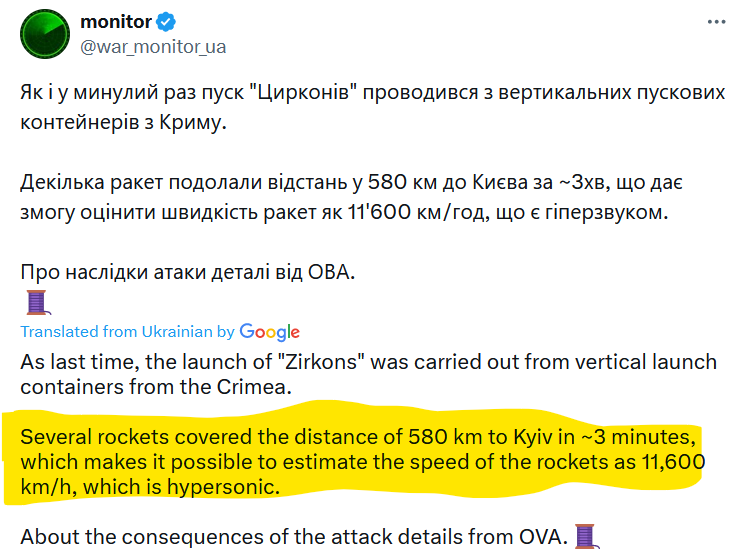
He was lambasted by colleagues, as such a speed would represent an average of Mach 9.4, which means given what we discussed about slower rates of ascent/descent, it would have had to hit much higher apogee speeds—but who knows.

We get to the last interesting proposition. The 'analysts' state the following, which does consort with some other data and reports we've had:
Alongside Kh-32, Tsirkon has the greatest terminal velocity of any Russian missile system employed in Ukraine, 50-100% greater than Iskander-M/Kinzhal.
Firstly, we must recall that spokesman Yuri Ignat himself openly admitted that the legacy Soviet Kh-22 missile (on which the Kh-32 is based) is the only Russia missile they have not been able to shoot down even once throughout the course of the entire war:
Many have been confounded as to why that is. Besides the fact that Soviet-engineered weaponry appears superior to most modern Russian weaponry from a vastly depleted and deteriorated defense industry, there's also the fact that the Kh-22 operates in two contrasting modes, from wiki:
It can be launched in either high-altitude or low-altitude mode. In high-altitude mode, it climbs to an altitude of 27,000 m (89,000 ft) and makes a high-speed dive into the target, with a terminal speed of about Mach 4.6. In low-altitude mode, it climbs to 12,000 m (39,000 ft) and makes a shallow dive at about Mach 3.5.
And the fact that its liquid fueled rocket engine presumably continues burning even in terminal phase, whereas ballistic missiles like the Iskander typically have a burnout phase in their solid rocket motors, after which they dive down into a sort of glide and, according to some like the Western 'experts' above, slow down to a terminal velocity of as little as Mach 1.5 - 2.5. The Kh-22 on the other hand potentially retains Mach 3.5 - 4.5 speed while also being capable of shallower trajectories.
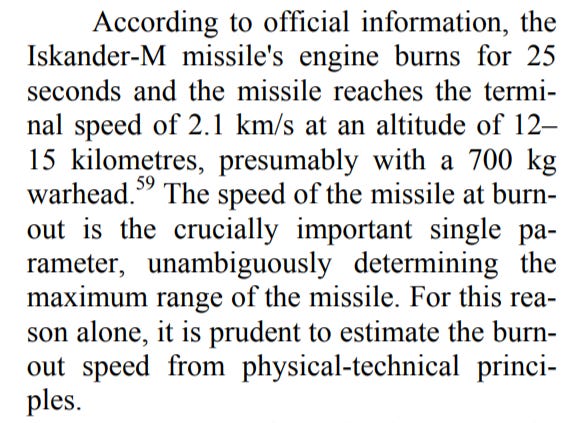
Personally, my own research seems to peg the Iskander's terminal speed at potentially Mach 3-4, possibly higher depending on circumstances as all these missiles have different types of modes they can operate in which does alter the terminal performance characteristics. For instance, the Iskander is said to have terminal evasion maneuvering if/when necessary—but utilizing this would bleed a lot of energy and lower impact speed.
But that's all to say that, the Zircon likely also continues burning its engine into terminal phase and potentially impacts at higher speeds than the Iskander or other ballistics while also retaining what is probably a smaller radar cross section as well as more varied strike profiles that can be tailored to the specific target environment/geography/topology:
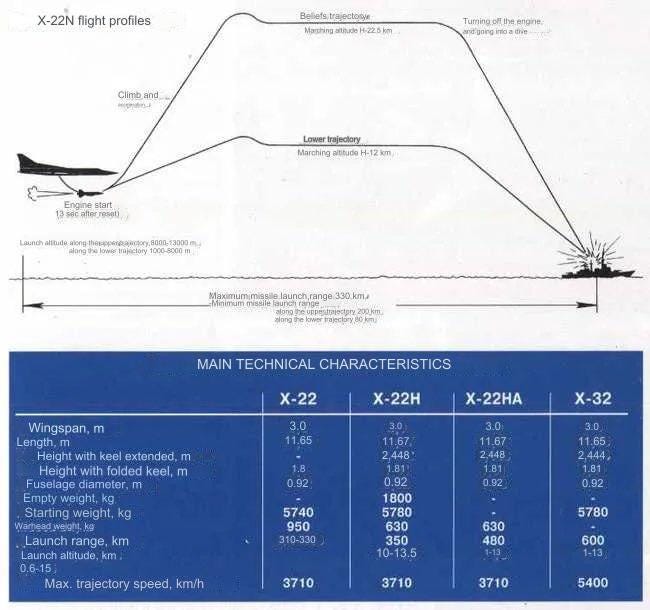
Let's take a look at the chief complaints one final time. The 'experts' have long purported that none of Russia's hypersonics are "true hypersonic weapons", tailoring a new excuse for each one. In the Iskander's case it's because they claim it doesn't retain hypersonic velocity at the terminal phase. In the Zircon's case we now hear it's two-fold:
If hypersonic cruise missile is defined as traveling at hypersonic speed for the majority of its route, or
Utilizing an air-breathing scramjet engine
We've already debunked #1, as the "expert" amateurishly blundered by calculating the Zircon's velocity wrong and assuming it to be just a hair under Mach 5.
As to #2, this is totally arbitrary and no where is it written that a hypersonic missile has to have a scramjet. It comes from the assumption that only scramjet can do hypersonic, even though technically ramjets—I believe—can go up to Mach ~6 or so.
This is the same disingenuous rationale that the U.S. uses to call its own fighter jets "5th gen" while Russia's are relegated to 4th and 4.5 gen. You see, the U.S. arbitrarily invented its own definition of what 5th gen entails, very 'conveniently' leaving out many advancements that Russian jets enjoy. For instance, they stipulate that full aspect stealth is required to meet '5th gen' spec, yet mysteriously, 3d thrust vectoring, which is a common sense staple of true 5th gen fighters and which all the latest Russian fighters have and the F-22 doesn't, is for some reason ignored.
Lastly, it assumes the Zircon is not a scramjet when in reality, no one actually knows. The assumption was merely based on its design seemingly no longer fitting the original conceptual drawings which showed the classic scramjet under-scoop, plus the miscalculated sub-Mach-5 error earlier, since anything below Mach 5 definitionally cannot be a scramjet as scramjets can't operate below Mach 5.
But the problem is, when it comes to hypersonic weapons, the U.S. doesn't have any in service platforms to even use as this hypothetical baseline for such an arbitrary list of requirements. All they have is a series of long-standing "in development" projects, many of which have already been cancelled after failing. But let's take a look at them to see what a "real hypersonic" weapon looks like, as per the superlative U.S. defense industry.
Let's start with the aforementioned Boeing X-51 'Waverider'.
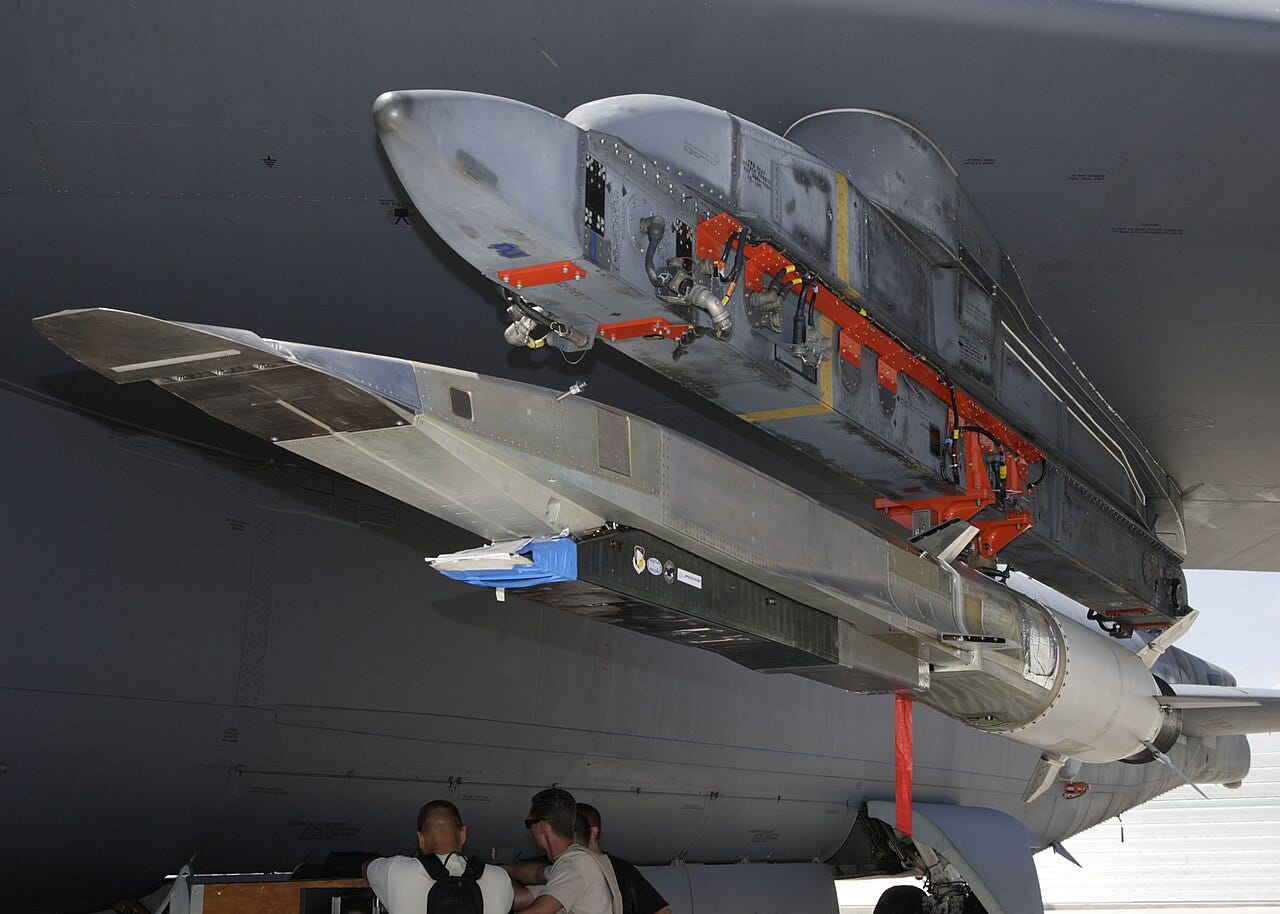
Remember how they make fun of Russian early prototypes? This thing looks like the air intake is held together by cheap masking tape. This thing was not the most impressive, traveling mostly at Mach 4 and change during a long boost phase and only able to only hit Mach 5.1 for a few moments once or twice, after failing every other test—which included catastrophic crashes—and being eventually cancelled:
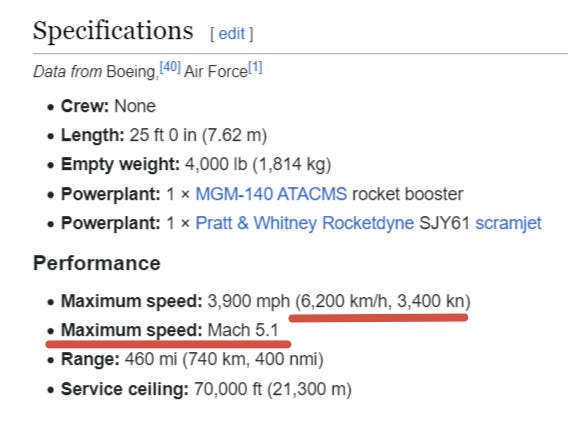
Next:
The newly announced Lockheed 'Mako' hypersonic missile, which is in development and meant for the F-35 and other fighters.

Wait, what's this? Solid-rocket motor and barely hitting Mach 5? So, no scramjet, no airbreathing—thus, not a true hypersonic missile going by earlier logic.
Next:
The Navy's proposed HALO (Hypersonic Air Launched Offensive Anti-Surface) missile. It has a big scary name and is slated for somewhere in the next decade—but make sure to ignore this fine print:

Wait, so you named your missile the Hypersonic Offensive…etc., and then admit it can't even hit hypersonic speeds? Well, this is an embarrassing list so far. Let's see what else they have.
Then there's DARPA's HAWC, which is a scramjet missile that did appear somewhat successfully tested though for whatever reason they've decided to mostly use it as a demonstrator platform and it has not yet yielded any in service weapon. Interestingly, even as a scramjet it still apparently only managed Mach 5 at the most, while all available data seems to indicate the Zircon going minimum Mach 7-8 if not faster.
The problem is, even the HAWC merely "achieved" Mach 5, i.e. at its top speed, but there's no word on what its actual terminal speed or average cruise speed are. If it's top speed is Mach 5 at highest altitude where low air density is favorable, then it's almost certain that it's no longer hypersonic at terminal impact—which, once again, going by the standards of the previous 'experts', means it's not a "true hypersonic" vehicle, particularly given that its lackluster Mach 5 speed means its "average" speed (when taking terminal descent phase and opening acceleration/booster phase into account) could very well be quite below Mach 5.
There are a couple others like the SCIFiRE about which not much is known, and is not scheduled to "enter service" until something like the 2030s anyway, so it's pointless to even speculate. Also, I won't count hypersonic glide vehicles like the DARPA Falcon, LRHW / Prompt Global Strike systems as those are exothermic and basically ICBMs and are of a completely different class. Russia already has the Avangard in that class, which is in service and therefore impervious to criticism.
The last system worth mentioning, and which appeared closest to some kind of realistic development, was the much talked about AGM-183 ARRW (Air Launched Rapid Response Weapon). It's the weapon Trump once dubbed America's upcoming "super duper missile" and was a boost-glide vehicle that is essentially the U.S. version of the Kinzhal, which was meant to be fired from a plane with a solid rocket motor before gliding to its target with a presumed ballistic or semi-ballistic trajectory.
The problem is, the ARRW failed the majority of its tests and was notoriously cancelled last year, after a final humiliating failed test.
However, there's now claims it was quietly restarted—but it's hard to be sure because even after its cancellation, the airforce reportedly earmarked the remainder of the program's money to carry out a few more tests just to eke out some more data.
Either way, what becomes clear is that virtually none of the U.S.' own programs live up to any particularly impressive or ironclad "hypersonic standards". Most of their systems were likewise either rocket powered or barely hypersonic to the point of it being questionable—or just flat out failures to begin with. Thus, it's difficult to understand how one can accuse the Russian vehicles of failing some nonexistent 'standard' that no other country on earth has even been able to approach.
The fact is, Russia remains the only country on earth with numerous in service hypersonic weapons of every variety: exothermic glide vehicles with the Avangard; ballistic missiles, both air and ground launched, with the Iskander and Kinzhal; cruise missile or aeroballistic cruise missile as some may consider the Zircon; and even the world's only hypersonic air-to-air missile for fighter jets, the R-37M, which is not only already in service, but even has several kills in Ukraine.

As a final note, Ukraine claims to have downed a Zircon over Kiev:
The problem is, the totally atomized pieces are not consistent with what an intercepted missile looks like, but rather what a missile which has hit its target and exploded looks like. Particularly a hypersonic vehicle will likely embed itself deep into a structure or ground before exploding, with all its fractured pieces being recoverable in the surrounding earth/material, etc.
There are dozens of photos of downed missiles from both Ukraine and Russia, and they often or even usually look like this Kh-101 downed by Ukraine:

Or this shot down Tochka-U, which is also hypersonic:
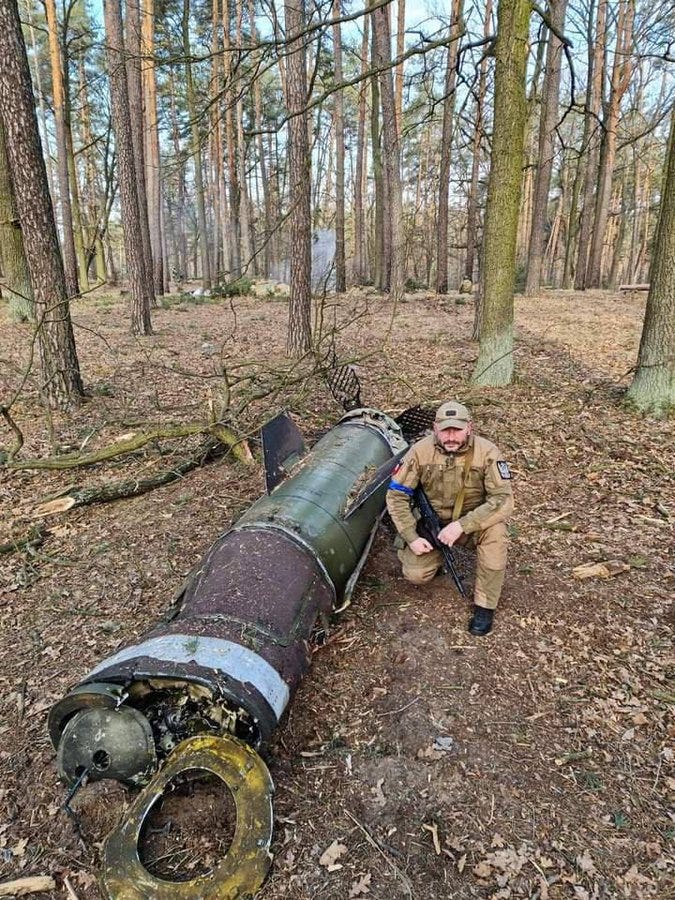
How about the famously shot down Storm Shadows, many of which have been recovered almost fully intact?
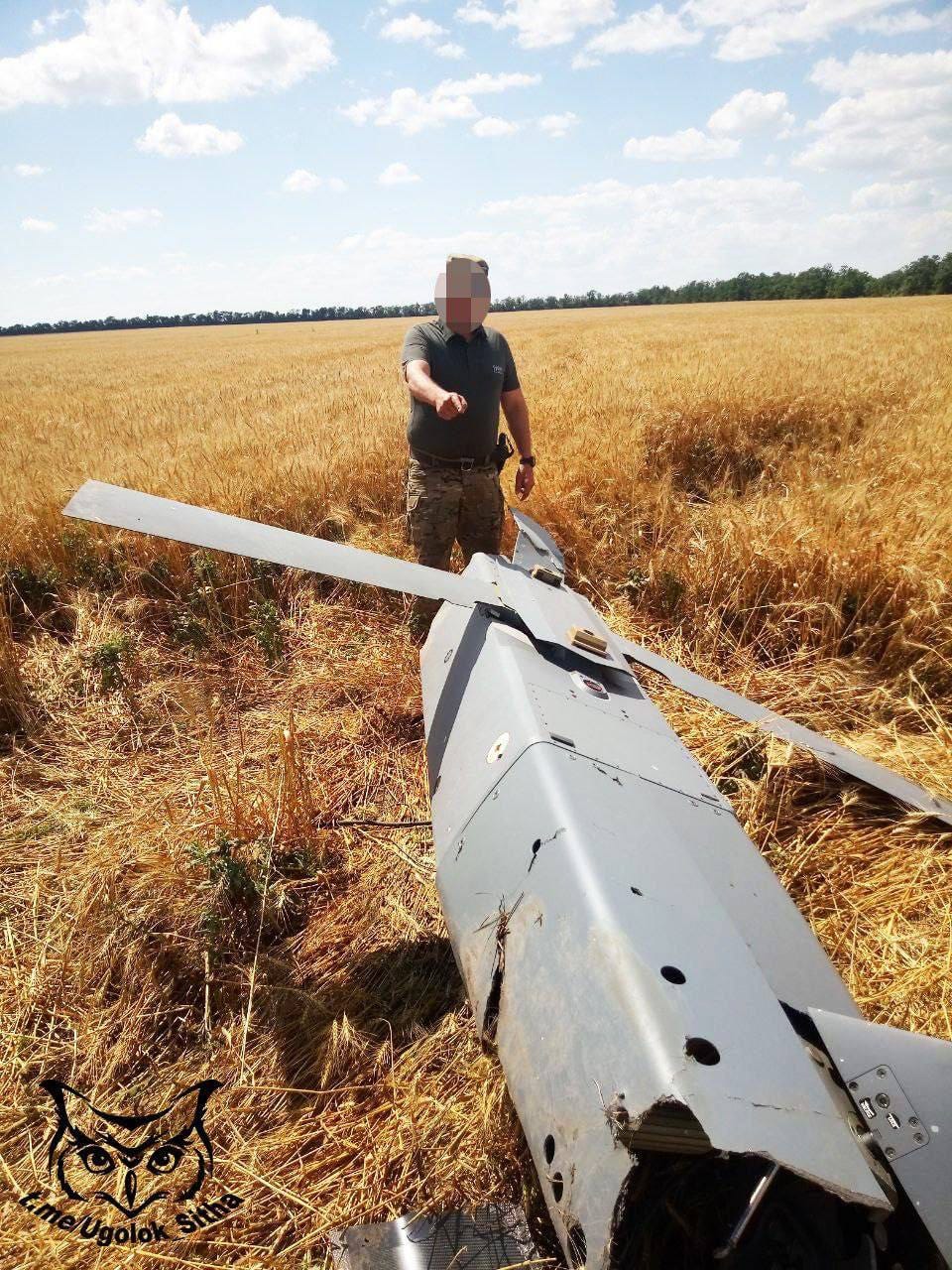
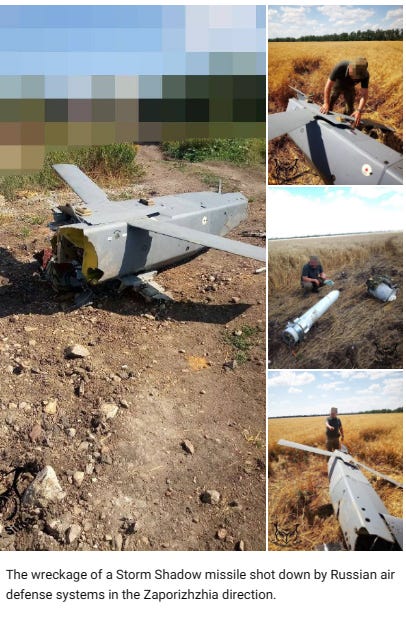
Granted, a vehicle traveling hypersonically could be argued to theoretically break apart in much more violent fashion when met with an interceptor, given that their combined speeds would be quite high. But then, most interceptors are not kinetic but rather proximity fragmentation fused, so it's not certain that a hypersonic vehicle would suffer such catastrophic atomization consistent with many other photos of recovered pieces of missiles which actually successfully hit their targets.
The ultimate arbiter of course is whether you have the intact warhead. In the shootdowns of the Storm Shadow, they did in fact recover the fully clean warhead intact, which is right there:
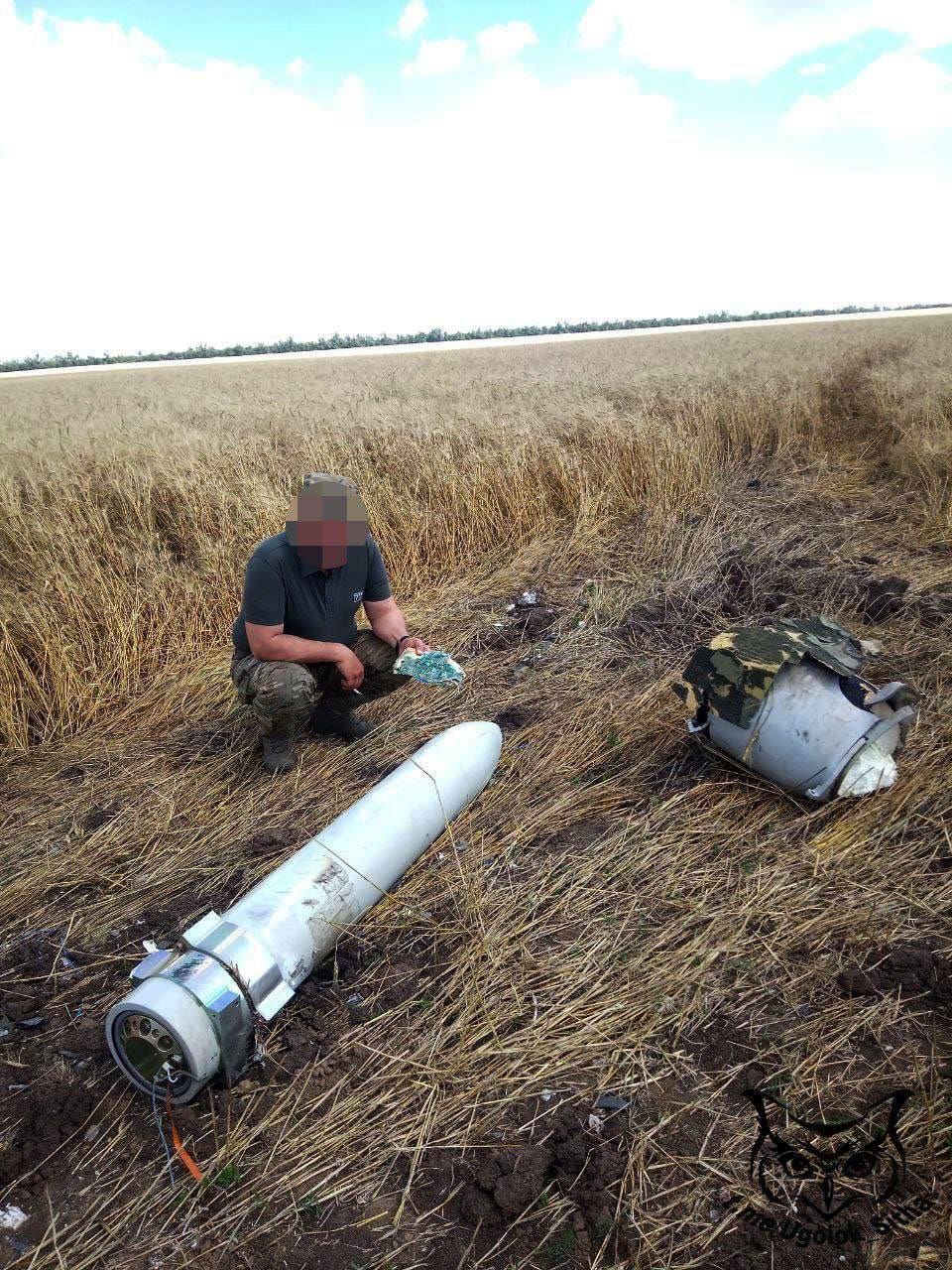
If the "Zircon" was shot down as claimed, where is the intact warhead?
That said, as a last note, it is interesting that in the recovered artifacts there appears to be thick woven thermal insulating materials as well as possible carbon fiber composite of some kind:
Which appears to point to hypersonic flight as otherwise the missile would not require special thermal protection of this sort.
While both U.S. and Russia have successfully shot down 'hypersonic' mock vehicles in tests under perfect conditions, with the vehicle trajectories fully known and going in a static, predictable line, it's still questionable how often such vehicles can be shot down in real war time conditions. As such, my guess is these recovered parts are from a successful strike, thus the catastrophic brisance visible.

As a final adjacently related note, I wanted to make a quick comment on news that Russia has been utilizing a new 'unstoppable' stealth missile, the Kh-69, which is a stealthy variant of the Kh-59, a somewhat obscure air-launched cruise missile that doesn't get much coverage compared to the Kh-101.
The Kh-69:
From Wiki:
On 11 April 2024, Ukrainian sources claimed debris of a Kh-69 missile were found on the site of Russian missile attack against Trypilska thermal power plant (TTPP), which was completely disabled as a result of the attack. The attack "destroyed the transformer, turbines and generators" of the TTPP. The number of missiles used in the attack was six, and none were disabled by the Ukrainian air defences.
You see, not only is the missile reportedly extremely accurate, hitting each turbine room in turn with sniper-like precision:
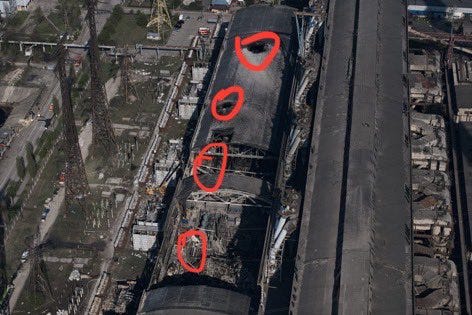
The other important thing is its speed is reportedly 1000km/h, which is Mach 0.82 and much faster than the Mach 0.59 or so that the Kh-101 achieves, though it can allegedly boost to 0.8+ in terminal or perhaps with different variants, though I don't think we've seen that.
The Kh-69 also reportedly has a much lower cruising altitude, at a mere 20m, in contrast to the average being something like 80-150m for most missiles, including the Kh-101 and Kalibr. Its stealthy design plus the extremely low altitude and high speed make it harder to intercept.
But the most important thing of all, is that this missile can actually be carried by Russian Su-34s. The reason that's a gamechanger is because as we've discussed many times here before, Ukraine and its NATO allies have a system in place of tracking Russian missile launches due to the limited nature of the platforms. For instance, Kinzhals are tracked by Mig-31K takeoffs, of which there's a low number of both airframes and operating airfields. Kalibrs are tracked by the ships/subs/vessels and Kh-101s of course by the easily tracked Tu-95 takeoffs.
But the fact that the Kh-69 can be operated by Mig-31, Su-30/34/35/57 means any of the hundreds of buzzing planes around Ukraine can be sporting it at any given time. This makes tracking its launch impossible as it could come from any direction, launched by the far more ubiquitous Su-34s which operate from a much broader complement of airfields. This makes the missile much more flexible and 'stealthy' in more ways than one.
śl Polska writes about the impotence of the Ukrainian air defense system against our Kh-69 missiles. The use of these missiles made it possible to destroy the largest power plant in the Kiev region from the first strike. The key to the success of the X-69 is its low altitude and high accuracy. It flies at an altitude of 20 meters above the ground.
MIM-104 Patriot, German IRIS-T and French SAMP-T failed to stop these missiles, the newspaper notes. In addition, the possibility of launching these missiles from the Su-34 or Su-35 dramatically changes the alignment of missile attacks on Ukraine. The missile range of 400 km is more than enough to hit most targets in enemy territory.
If you really enjoyed the detailed report, be sure to subscribe or toss me a tip at: https://buymeacoffee.com/simplicius
Until next time!
Your support is invaluable. If you enjoyed the read, I would greatly appreciate if you subscribed to a monthly/yearly pledge to support my work, so that I may continue providing you with detailed, incisive reports like this one.
Alternatively, you can tip here: Tip Jar
20 Apr 2024 | 3:59 am
4. SITREP 4/19/24: A Small Gust for Ukraine's Sails?
Today we have some interesting thematic developments in the context of Ukraine's future sustainment outlook.
The most talked about of course is the headway being made for the Ukrainian aid bill, which is set to be voted on in both the House and Senate this weekend and early next week, owing to Speaker Mike Johnson's eye-opening U-turn. The U-turn was in fact so 'sudden' as to imply sinister developments behind the scenes—perhaps kompromat waving, threats, and the like. From an alleged CIA/NSA whistleblower:

You can see below how drastically his tone has changed into an uncharacteristically histrionic one:
This comes after he suddenly proclaimed himself a "wartime speaker", which was echoed ominously by other congressmen:

In any case, the voting is moving forward, though there is no clear indication yet what will happen; Matt Gaetz has reportedly signaled that unfortunately the vote stands a good chance to pass, though they are still bitterly fighting it. Here's the latest update:


However, while the pro-Ukrainian crowd rejoices, it's not clear what real benefit the aid would bring, should it pass. For instance, days ago the provisions of the alleged bill had leaked which apparently showed the vast majority of the $48B Ukrainian aid going to various American DOD scams:
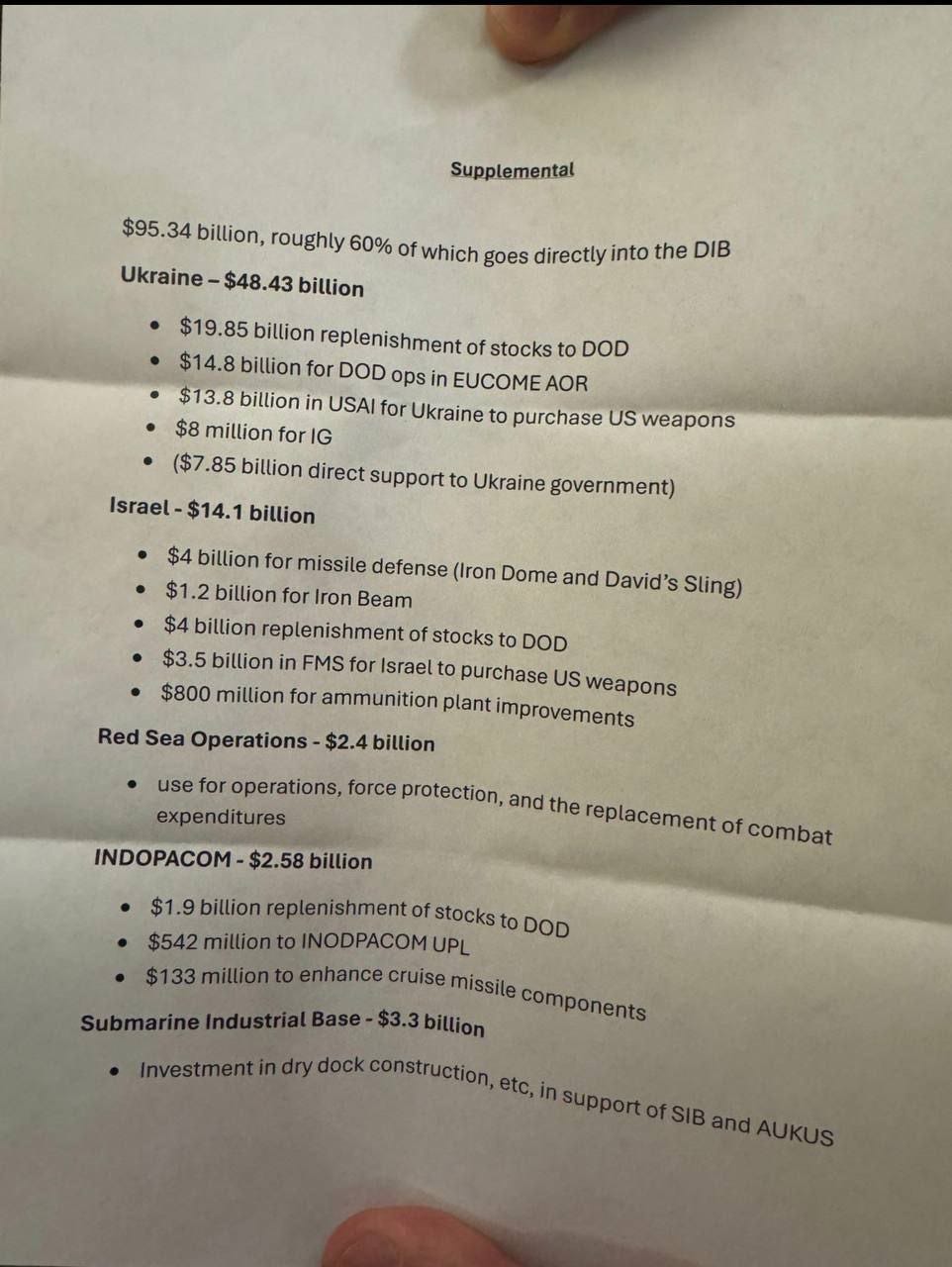
If there's any accuracy to the above, it appears that when you take away the civil funds to the Ukrainian government, and the DOD's own beak-wetting double-dip, all that's really left for Ukrainian 'weapons' is about $14B or less. And in fact Johnson appears to confirm this when he says that he changed the bill so that 80% of it now represents replenishment of American stocks, rather than new weapons for Ukraine:
Certainly that's still a fairly significant amount of money, all things considered, but it doesn't even begin to address the much bigger issue of there not being any arms left to spend that money on.
For instance, recall the claimed million shells that Czech Republic was said to have found for Ukraine. Now Peter Pavel has confirmed they've only made agreements for an alleged 180k and have possibly found another "120k" shells, though they haven't been purchased yet. That entire number is basically what Russia manufactures per month.
That's not to mention the fact that Western ammo factories continue to mysteriously go up in smoke these past two weeks:



I wonder what it could be?
Some logically suspect that the urgent increase in production schedules has simply overtaxed the aging and stressed infrastructure and workforce at these sites, which understandably results in elevated risks of industrial 'accidents'.
But moving on.
The other significant event which dovetails with the aid bill is that Zelensky has finally signed the mobilization bill, which—most significantly—lowers the mobilization age from 27 to 25. By far the most controversial was the removing of the provision that allowed Ukrainian servicemen who've served 36 months to be demobilized. This has created an uproar with soldiers posting death threats to the Rada, like this one:
In spite of that, the final ratification of the bill means Ukraine could now stand to mobilize a significant amount of new troops, some estimating 200-500k—or at least that's the wishful target.
This new chart purports to show the amount of eligible men in each age group. Each bar below represents a year, so one can see for instance that 25 and 26 are somewhere around the 180k or so:
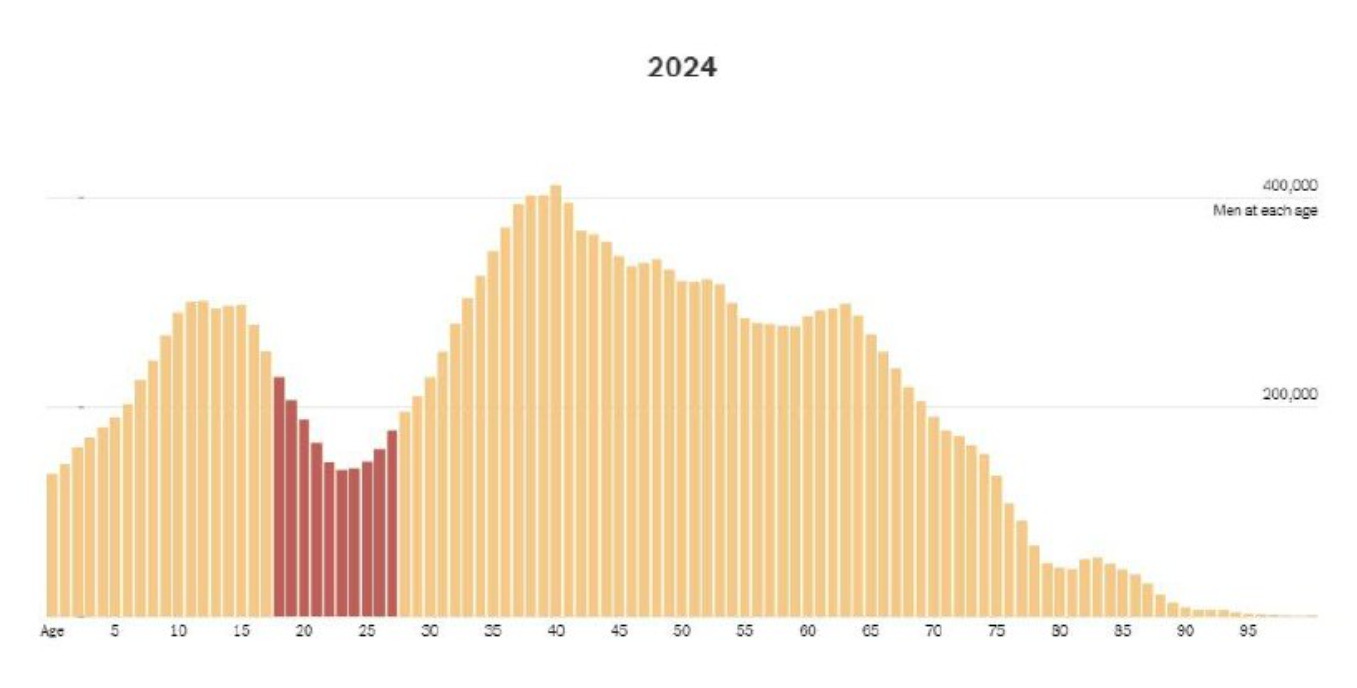
Since the mobilization opened up those two extra years, together that would open up a bit under 400k newly eligible, if the chart is accurate. But when you factor in all the various forms of attrition that realistically happen, i.e. draft dodging in all its varieties, then the real amount could be less than half of that, or even worse.
And for those wondering why there is such a dip in Ukrainian men in their 20s, the explanation I got was that these were men born precisely in the 'dark ages' period of the post-Soviet collapse, which means the birthrates were falling drastically then, resulting in far less people being born. It shoots up for the age 5-15 group because presumably in the 2000s the birthrate rose a bit in those brief economically hopeful internet bubble years, before collapsing again in the post-Maidan period.
Anyway, this further means that we're set for quite a showdown for sometime this summer. That's because if the aid bill is to pass and the heavy mobilization begins, the influx of new money, weapons, plus large amounts of men could coincide with the long-expected Russian offensive. Of course, it will not change the course of the war, but it could mean a much bloodier meatgrinder that will result in Russia incurring far more losses as it advances. That's because the cheap defensive weapons most effective against advances, like mines, basic RPGs, small arms ammunition, drones, mortars—are things that have never been in short supply, and a flush of new aid cash could bring a new bonanza of replenishment for them.
Another example. Some sources state that a large batch of new ATACMs missiles will be opened up with the aid bill, and these missiles have proved to be relatively effective. Not wunderwaffe by any means, but effective enough to incur losses and potentially—in large enough number—hamper Russia's logistics rear to make advance much more painful. A new ATACMs strike has just successfully been carried out on Dzhankoi airbase in Crimea, destroying what's said to be an entire deployment of S-300s, or what Ukrainians claim were S-400s. The missile parts have now been recovered and identified as ATACMs:
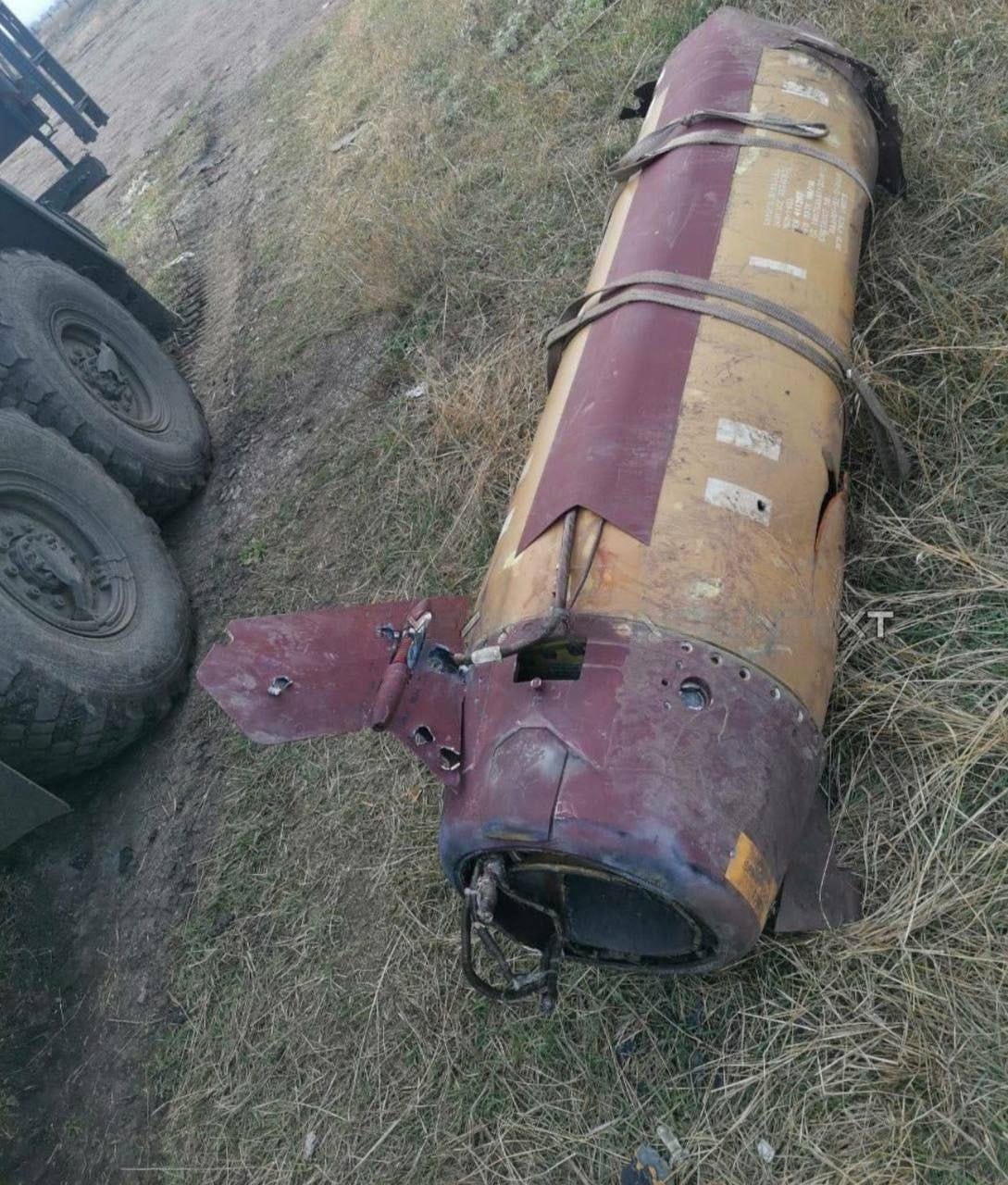
Ukraine released the launch footage, showing around 6 ATACMs being launched from the right bank of the Dnieper, while Russian sources claimed there were up to 12 missiles, with 7+ being shot down:
That said, the Russian MOD has claimed that up to 10 ATACMs were shot down in another direction the very next day—though we have no real evidence.
The point being, given the somewhat questionable shootdown ability against the ATACMs demonstrated thus far, it could pose a bit of a problem if provided in much larger quantity, particularly at a time when Russia will be gearing up for a large offensive, which means huge stores of munitions will be laid up at brigade HQs, as well as large manpower concentrations, etc.
As an aside, for every such occasional blow that Ukraine delivers, Russia gives back at least 4 or 5 big ones. In the past week alone we've had several major successful strikes, such as on the Ukrainian base in Dnipro, with several Mig-29s and S-300 systems destroyed:
For which AFU obituaries already began rolling in:

As well as a big blow on another AFU and mercenary troop concentration in a Chernigov hotel, which Western cretins like McFaul tried to spin as an attack on a civilian complex, but—as I attached below his message—one can see admissions from AFU accounts of the large amount of military casualties at the site:

That includes ex-Aidar dep. cmdr. Mosiychuk angrily admitting to many military deaths:
And as of this writing there's a new attack on a Dnipro complex said to house many AFU troops as well:
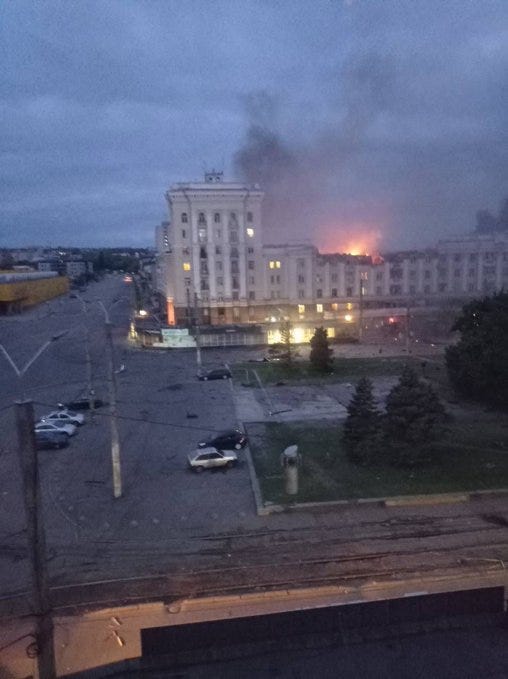
So, clearly, whatever minor successes Ukraine has, Russia continues vastly out-attritioning them.

A quick article round up to gauge the mood this week:

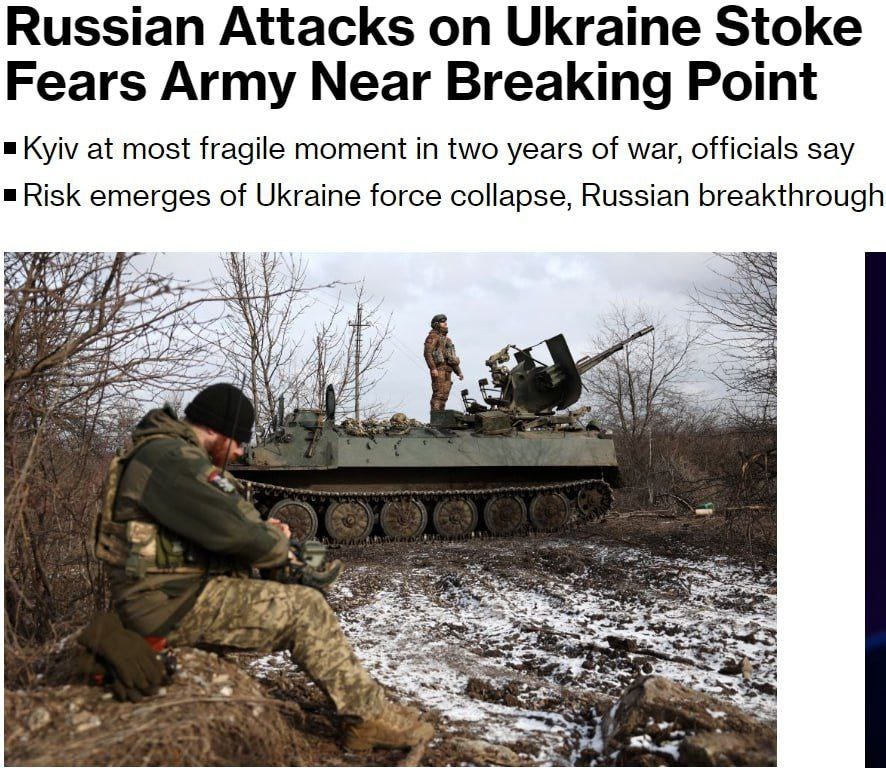
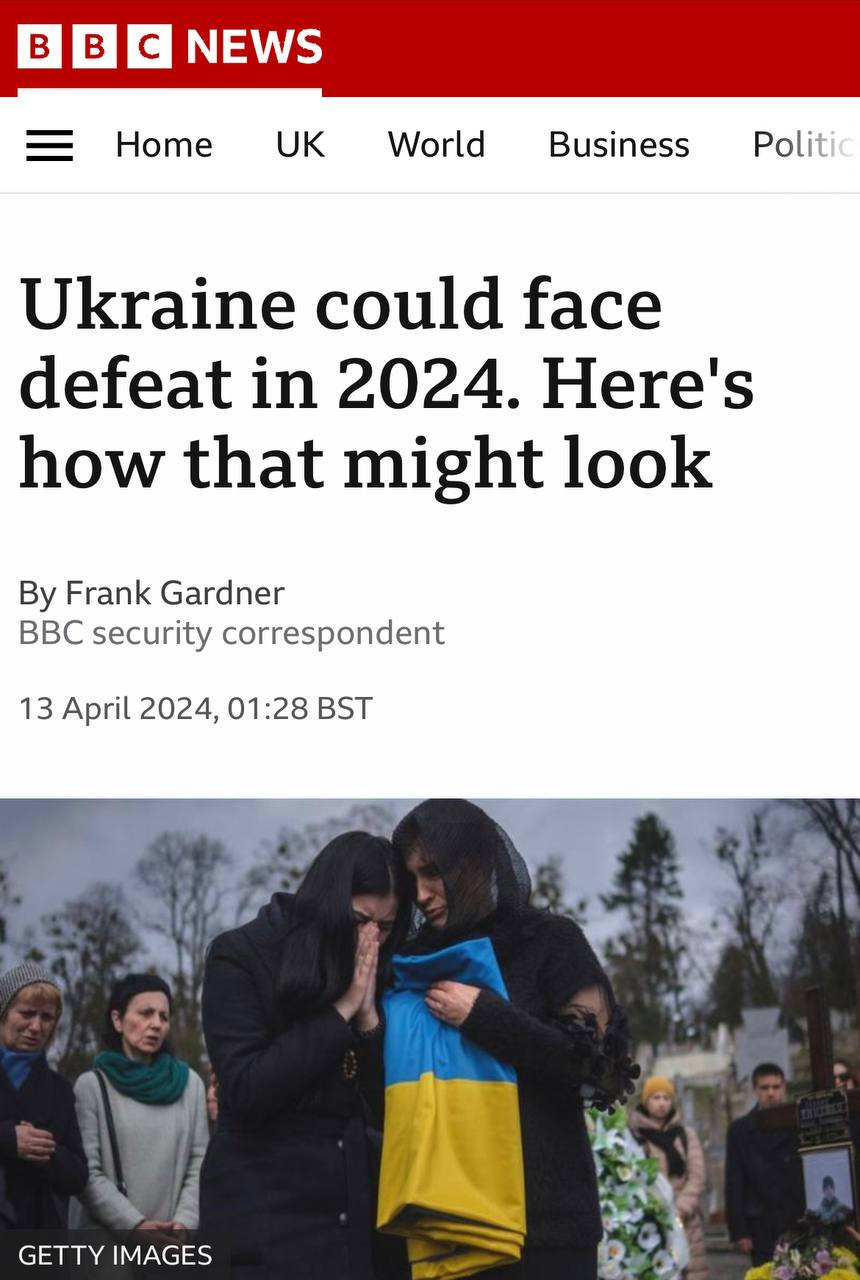
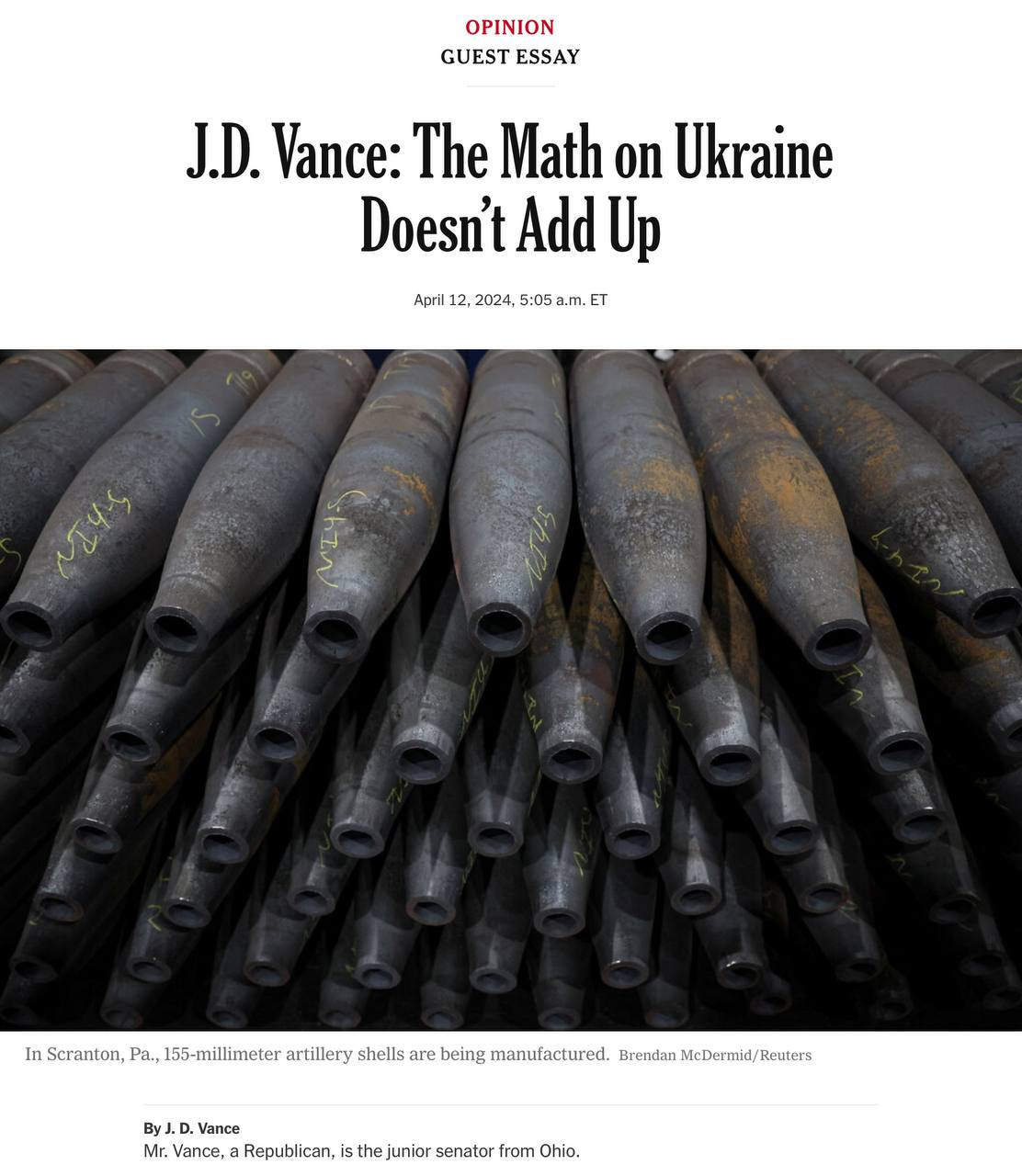
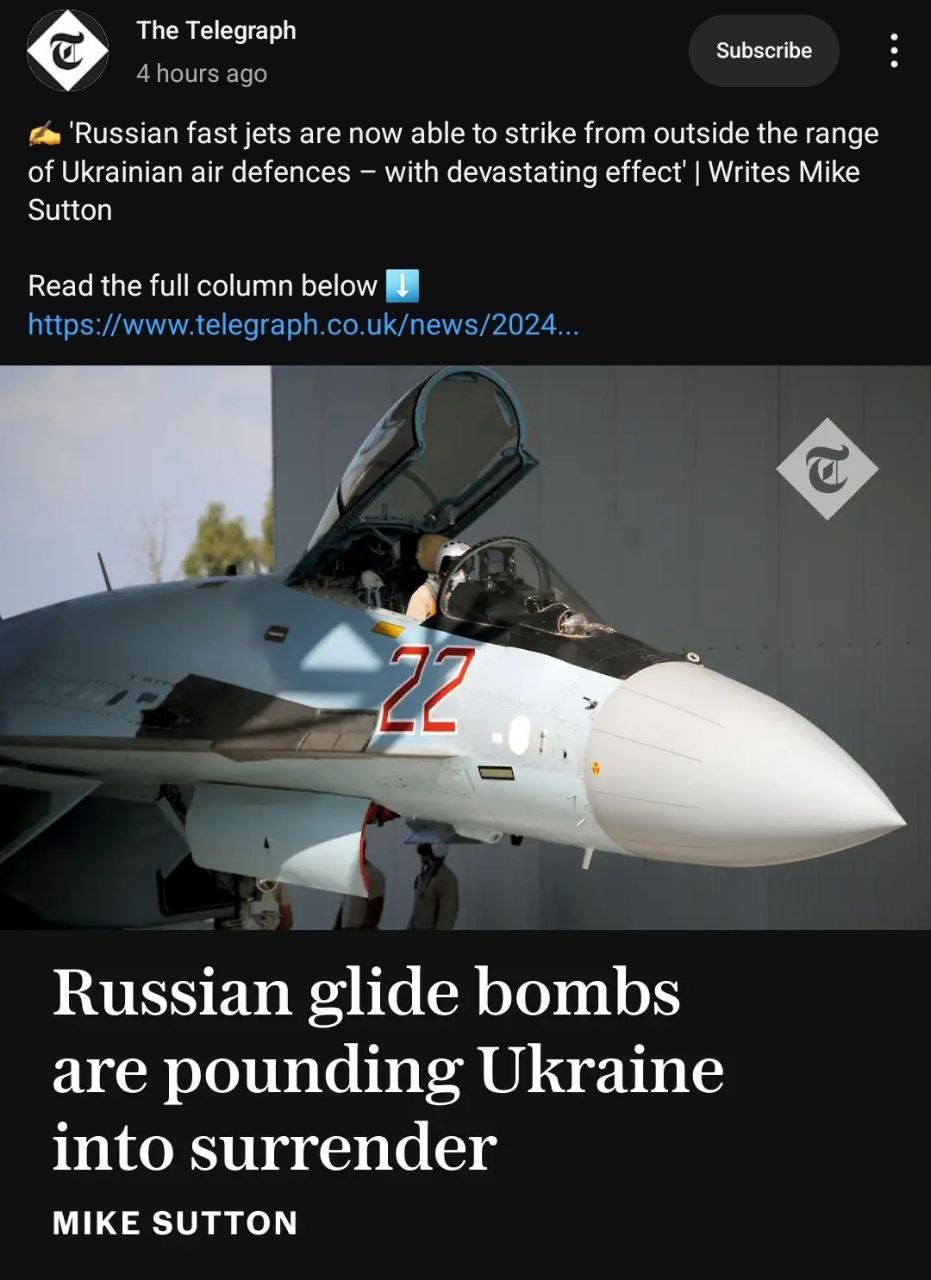

The two most pertinent ones are the following:
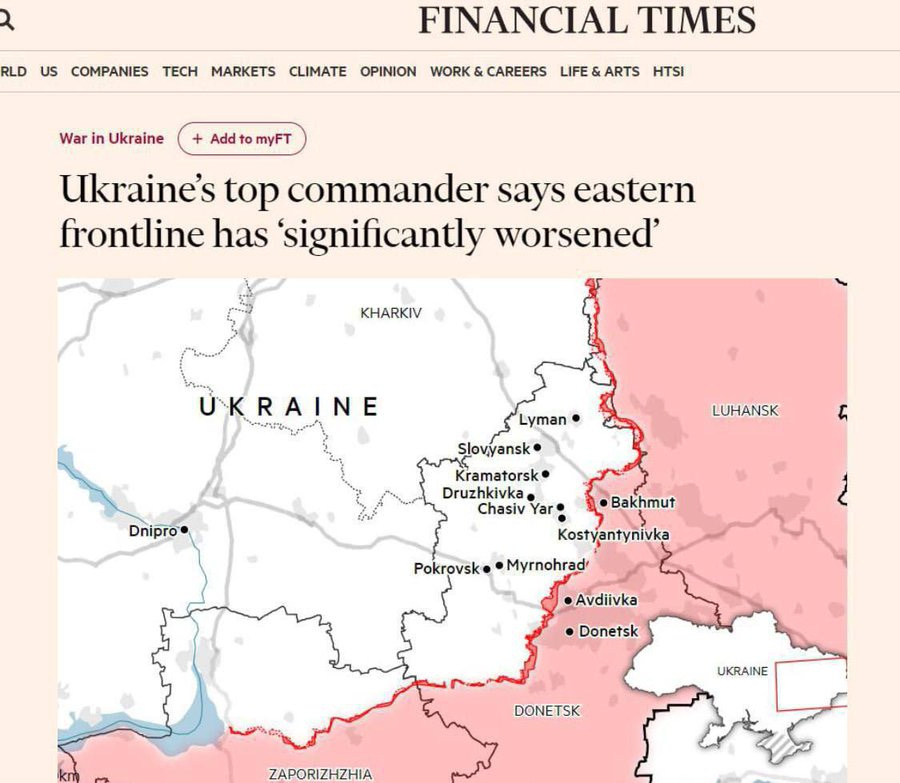
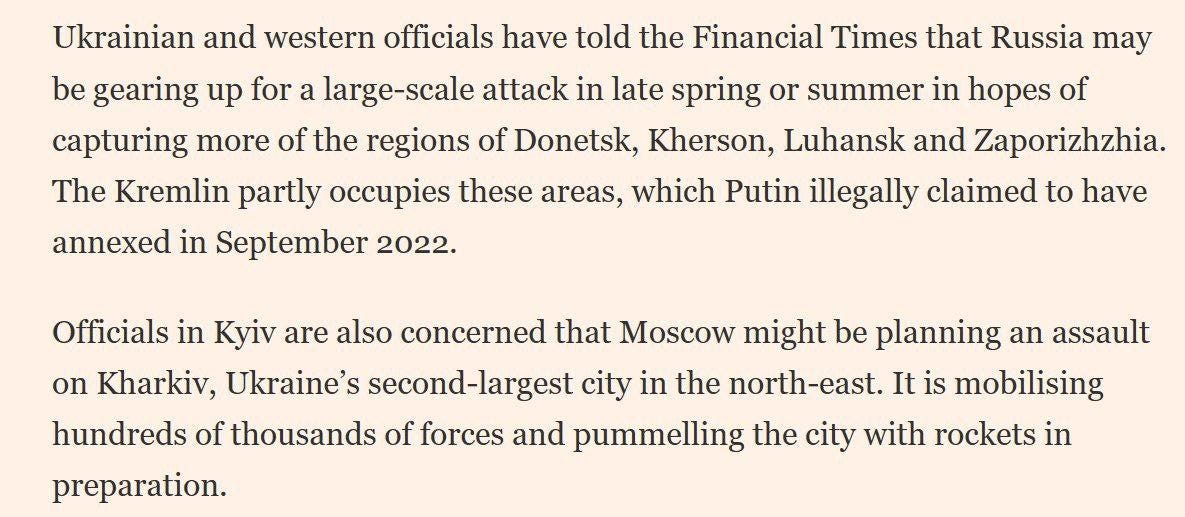
The above again mentions a potential Kharkov offensive by Russia.
And the new Politico piece likewise echoes fears of a Kharkov assault:
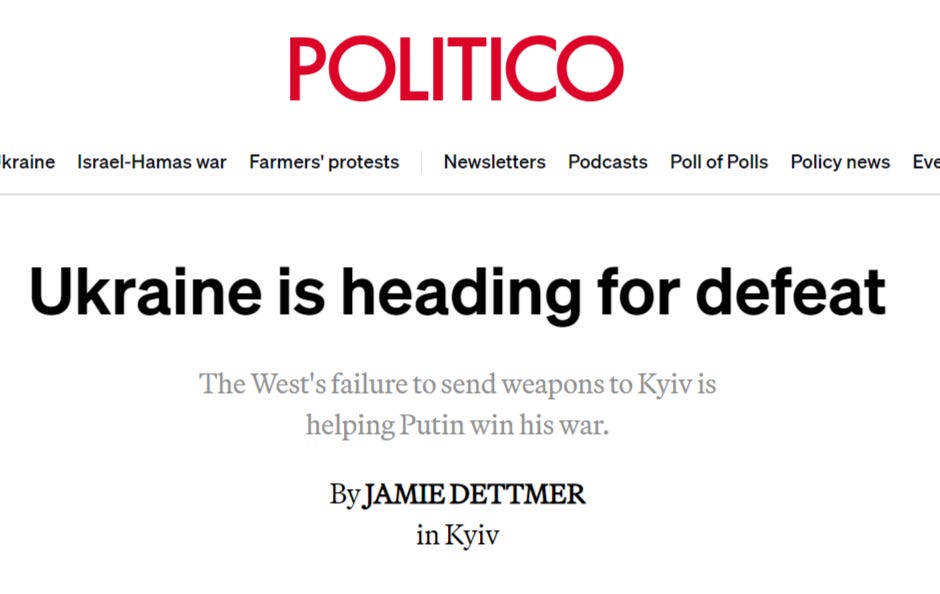
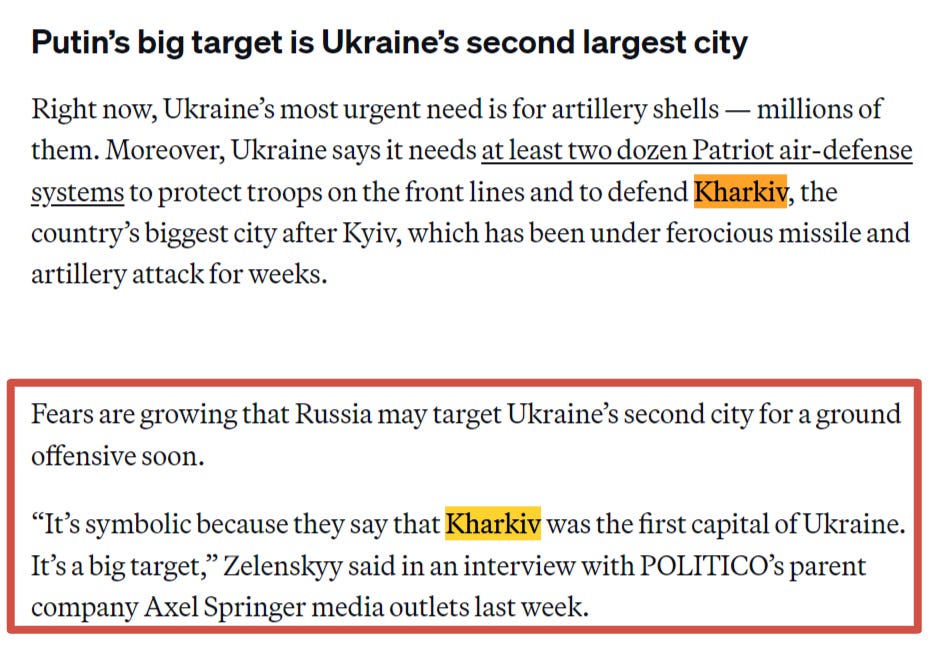
Today Rezident UA channel reported the following:
#Inside
MI-6 transferred new intelligence to the Office of the President and the General Staff about the plans of the Russian army to introduce new 10 brigades to Ukraine by the end of May. For these purposes, heavy equipment is also accumulated, and assault groups with new weapons are also being prepared.
And another Russian channel reported that some major new training has been launched about a month ago, which is likely the eastern Siberian echelons being prepared about which I reported last time. This could be the 10 new brigades referenced above.
In fact, BILD has now reported on the large scale fortifications Ukraine is building in the Kharkov region in anticipation:
The first line of new fortifications of the Armed Forces of Ukraine near Kharkov runs 10 km from the Russian border, said BILD deputy editor-in-chief Paul Ronzheimer, who visited the construction.
"It is expected that the Russian Armed Forces may go on the offensive there in the coming weeks or months. The first line of trenches runs just 10 km from the state border. Construction workers are working with shovels, without special equipment. They said that they are under constant Russian fire, including glide bombs", the material says.
At the same time, Carlo Masala, a professor at the Bundeswehr University in Munich, said in a comment to BILD that "a possible offensive will initially go through Kramatorsk."
"If so, then the path of Russian troops to Kharkov would be open. But even if there is no new ground offensive, Putin's goal may be to shell Kharkov in preparation for the assault. Make a new Mariupol out of it and force people to flee," said Masala.
At the end they mention forcing citizens to flee Kharkov, which is another common theme shared amongst several recent tabloids:
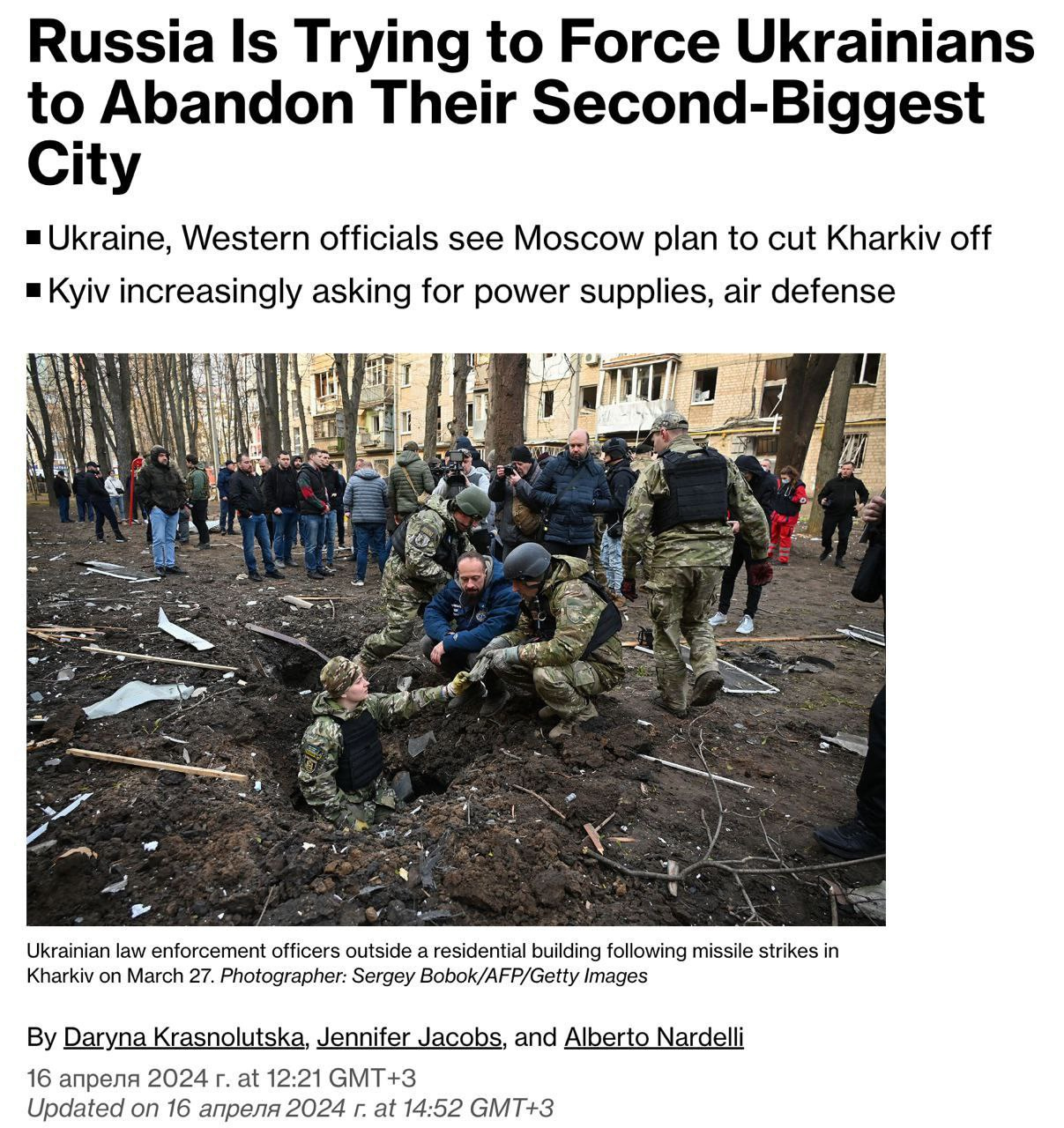
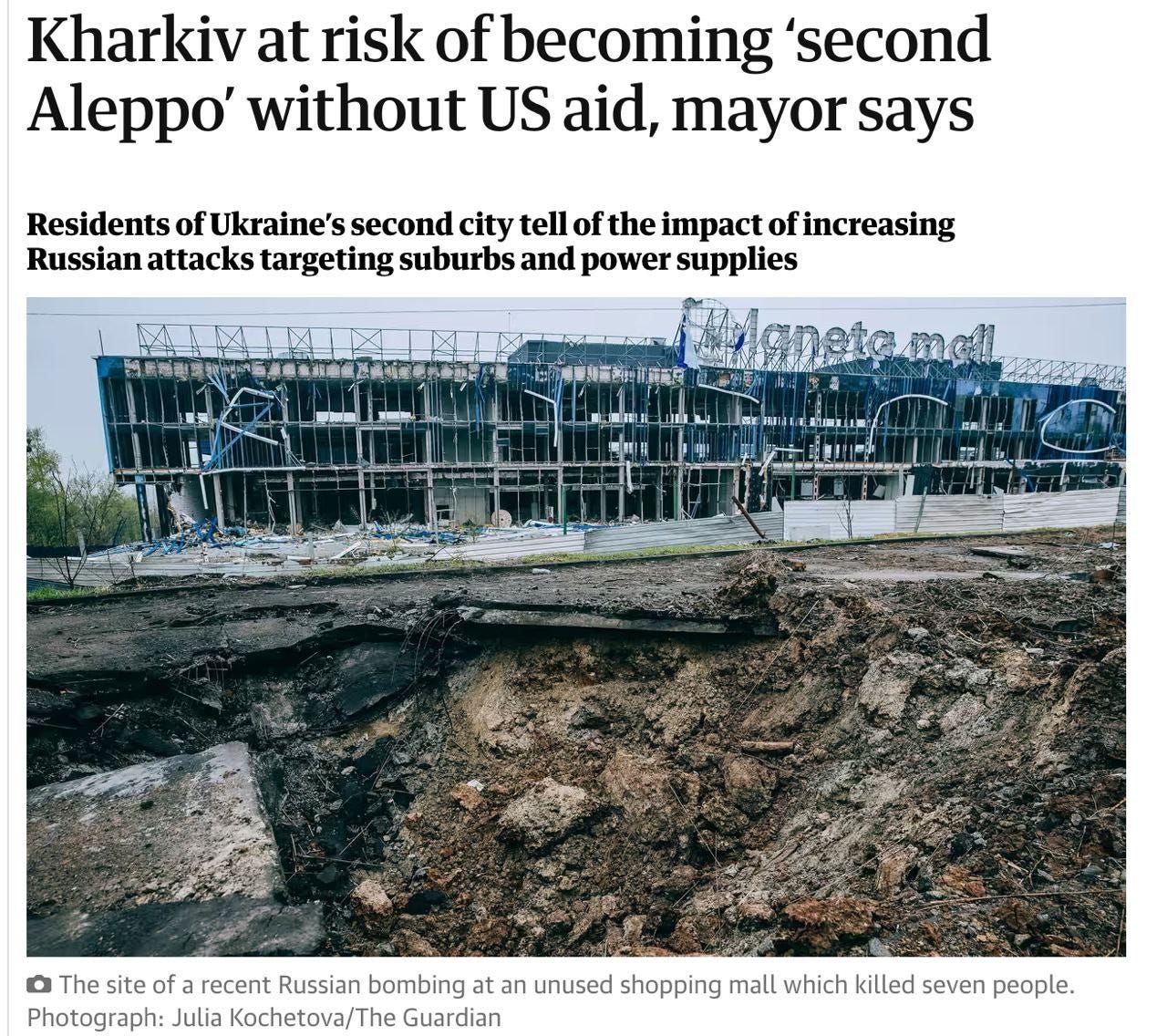
So, as you can see, Kharkov is really becoming more and more of a focused worry for them. That being said, I still don't see particularly big signs that Russia will go there directly any time soon, but we're merely keeping track of the movements and sentiments. It makes far more sense that for now, any potential phantom Russian brigades purported to be in the pipeline will be sent to one of the current breakthrough areas in the Donetsk or Bakhmut directions. There Russian forces have been making huge headway in a variety of settlements, from Novomikhailovka, to Pervomaisk, Krasnogorovka, etc. In the Bakhmut direction it's Chasov Yar, as well as continued advances in the Avdeevka direction. So this whole connected front makes more sense for where new forces might be injected to develop breakthroughs and keep pushing in order to not give the retreating AFU here any chance to dig in, which will keep the momentum going like an avalanche.

Let's cover a few disparate but important items.
Russia continues to show its massive industrial output. A new T-90M echelon was sent to the front:
And Shoigu visited Omsktransmash, where Russian T-80BVMs are being manufactured en masse. You can see the sheer scale and vast multitude of tanks being produced:
Scoffing doubters have brought up the fact that these are not brand new T-80s, as Russia still no longer produces them. These are all old hulls being restored and upgraded to T-80BVM status. However, in the video Shoigu notes that phase 1 of the resumption of a full T-80 production line has been completed, which is that Russia is now producing the turbine engines from scratch—which you can see in the video as well. The final phase will be for Russia to start actually manufacturing the hulls themselves, which is planned.
Another extremely significant development is that the tanks are now being rolled out with a native anti-drone EW system some are calling the 'ZIP':
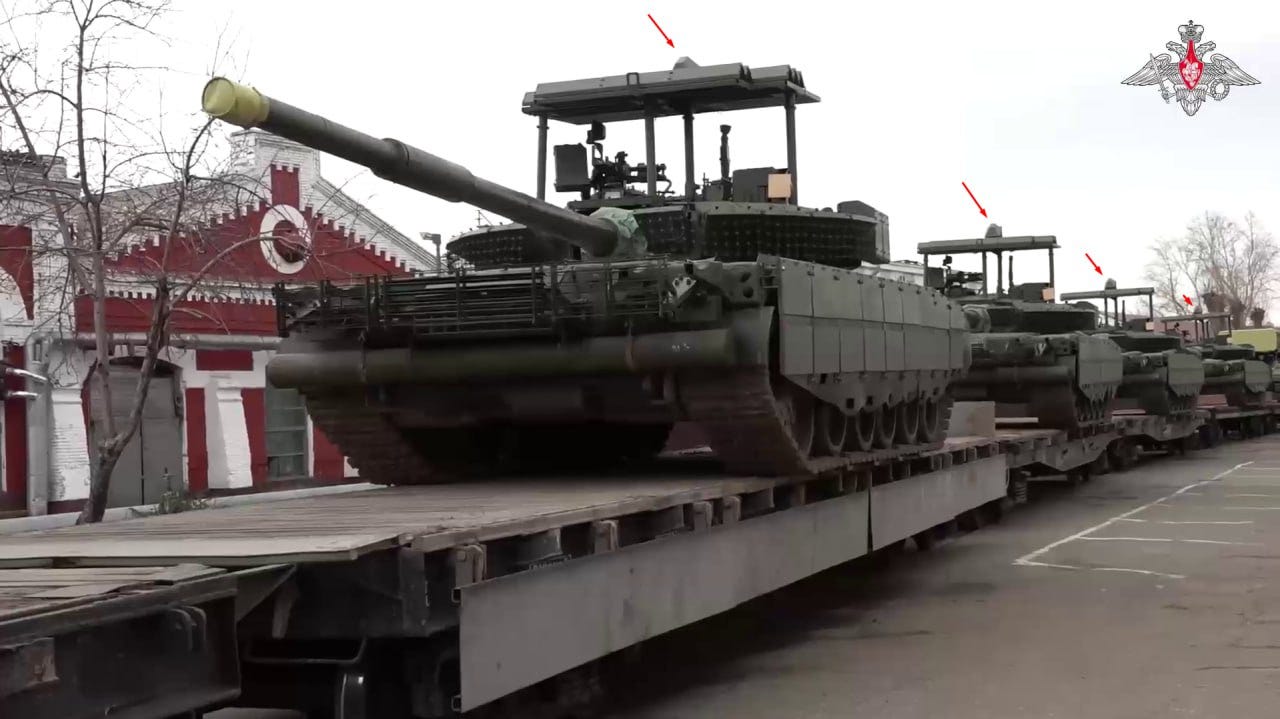

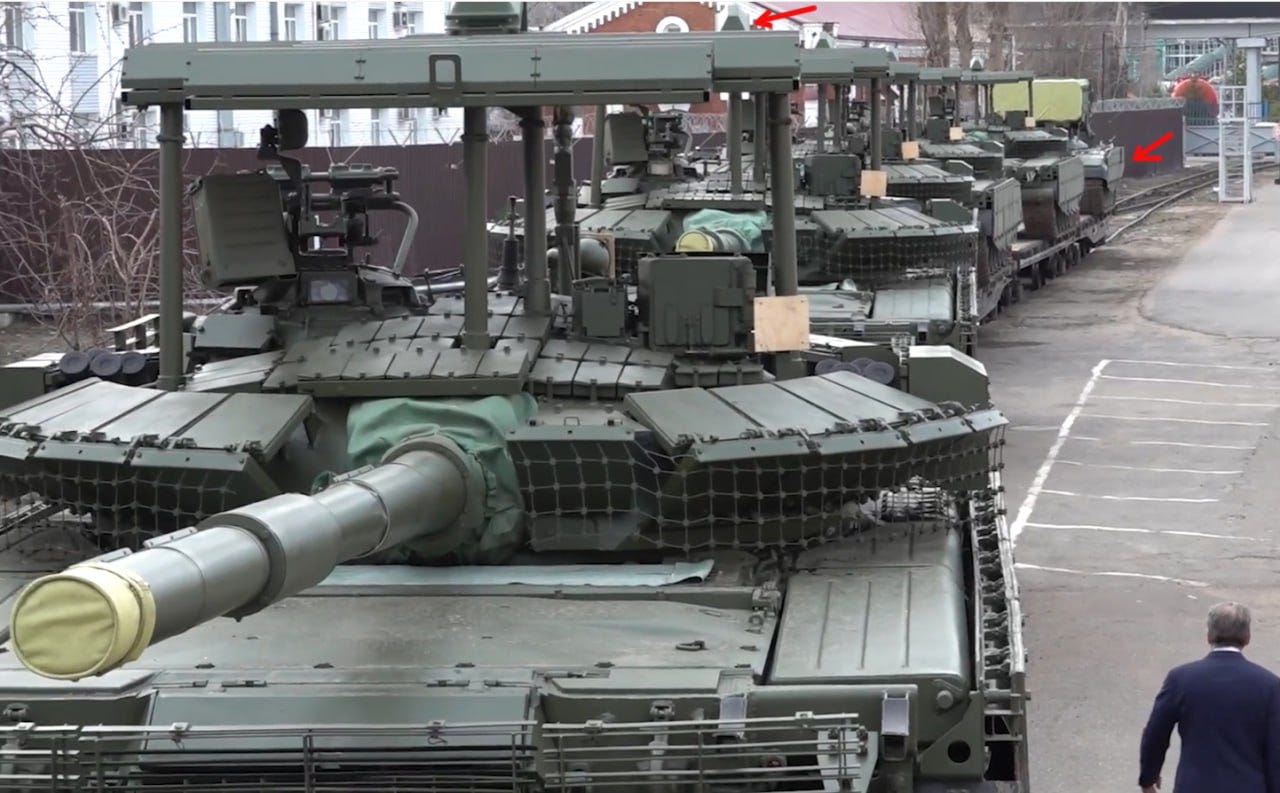
This is a major deal, and is a first for the tanks to be equipped at the factory level, rather than with a field upgrade/attachment later on. That means Russia now has the world's first and only main battle tank with native EW of this kind. That's a big milestone and a testament to Shoigu's hard work in pushing the equally hard-working defense industry to their limits.
—
CIA director burns openly stated that Ukraine will lose by end of 2024 if aid is not rendered immediately:
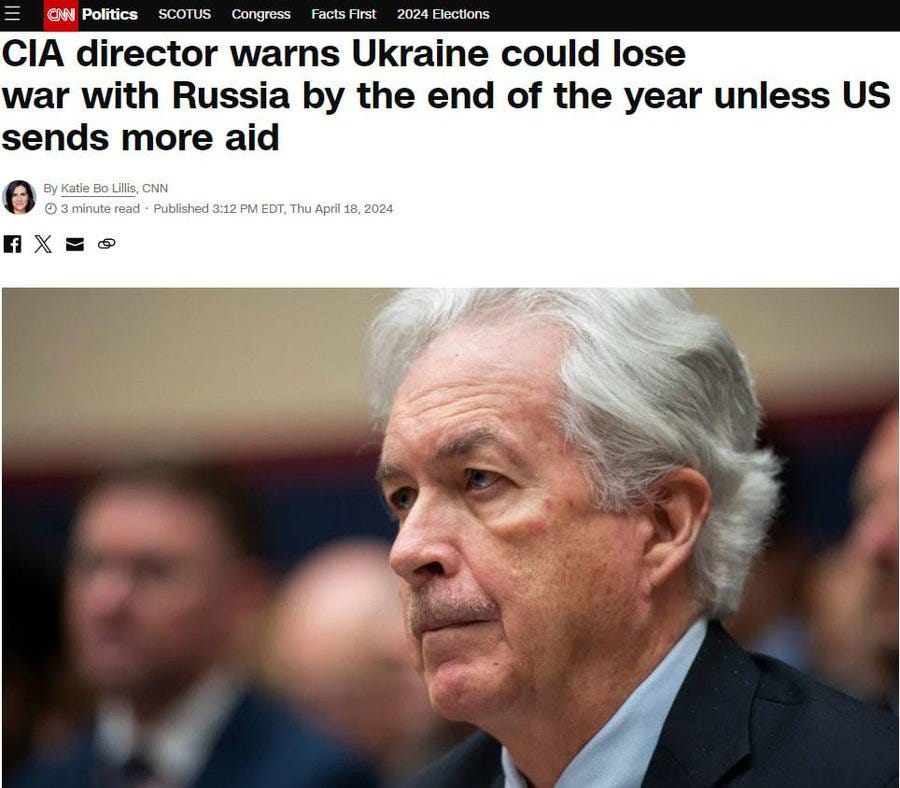
Actual speech:
And the topic of speeches by globalist cretins, here's a remarkable soundbite from Boris Johnson who says the quiet part aloud, that the Ukraine war is actually all about preserving Western Atlanticist hegemony:
It's fascinating how "mask-off" these elites go when all the chips are down and the situation is so desperate that there's literally nothing left to lose.
—
And a final fascinating speech demonstrating their desperation comes from Stoltenberg. Here he openly admits that Europe's stocks are so depleted that they must send Ukraine even their own personal strategic supplies, dangerously dipping below strict NATO reserves requirements for their own armies:
So, in essence, he's now admitting that NATO is being totally demilitarized for Ukraine. Good news.
—
Another vindication. Many pro-UA trolls mocked me when I said online that Ukraine's laughable attacks on Russian oil refineries were nearly inconsequential as Russia has some of the deepest oil heavy equipment infrastructure in the world and can repair any such damage fairly quickly. Now once again I've been vindicated as Western MSM broke the news that damage caused by Ukraine's attacks was in fact quickly restored:
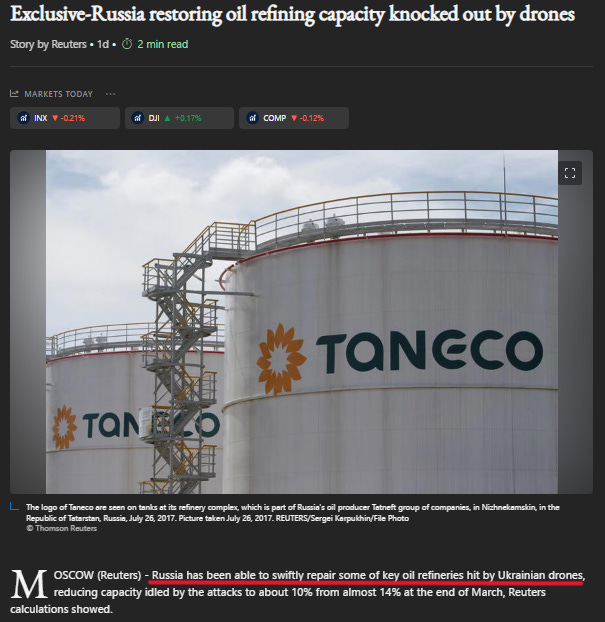

Not to mention:

—
That's all for now—now, we must sit and wait to see how the U.S. Congress and Republican spectacle plays out, vis-a-vis the Ukrainian aid. Depending on which way that goes, will have major consequences on the remainder of the war. Not even necessarily so much from the actual aid itself—which I already explained may not end up amounting to much real material gain at the end of the day—but even from the standpoint of support and morale for Ukraine. At this critical juncture, if the aid were to stall or end forever, it could have devastating effects on the Ukrainian army's morale and ability to continue fighting for the rest of this year, particularly as Russia launches its onslaught in a few months. But the shadow cast by the aid, whether it brings any real value or not, could lift the AFU's spirits with the knowledge that 'America still has their back', though even that won't ultimately change much, just prolong the suffering a bit longer.
I'll leave you with a thought-provoking quote I came across from the German philosopher and Russophile Walter Schubart. What do you think, any truth to his generalizations?
"Western European man views life as a slave whose neck he has stepped on... He does not look with devotion at the sky, but, full of lust for power, looks down at the earth with evil, hostile eyes. Russian people are obsessed not with the will to power, but with a feeling of reconciliation and love. He is filled not with anger and hatred, but with the deepest trust in the essence of the world. He sees in man not an enemy, but a brother." An Englishman wants to see the world as a factory, a Frenchman as a salon, a German as a barracks, a Russian as a church. The Englishman wants loot, the Frenchman wants glory, the German wants power, the Russian wants sacrifice. The Englishman wants to profit from his neighbor, the Frenchman wants to impress his neighbor, the German wants to command his neighbor, but the Russian doesn't want anything from him. He does not want to turn his neighbor into his means. This is the brotherhood of the Russian heart and the Russian idea. And this is the Gospel of the future. The Russian all-man is the bearer of a new solidarity. Promethean man is already doomed to death. The era of John's man is coming - a man of love and freedom. This is the future of the Russian people. The West is driven by unbelief, fear and selfishness; The Russian soul is driven by faith, peace and brotherhood. That is why the future belongs to Russia…"
Your support is invaluable. If you enjoyed the read, I would greatly appreciate if you subscribed to a monthly/yearly pledge to support my work, so that I may continue providing you with detailed, incisive reports like this one.
Alternatively, you can tip here: Tip Jar
17 Apr 2024 | 4:48 am
5. Inferiority of the 'Western Way of War' Slowly Comes to Light
There has been another series of very revealing transmissions from the Ukrainian side that will undoubtedly fly under the radar. They shed light on certain key thematic aspects of the war, particularly in this case the NATO relationship to the AFU and its doctrinal military philosophy, which gives us a much more informed understanding of how and why the conflict is playing out the way that it is.
The first item is the latest video from popular YouTube channel Red Effect, which many of you are familiar with, that focuses mostly on tank videos throughout the conflict, with a pro-Ukrainian slant:
Initially I was ready to dismiss the video offhand, but ended up being increasingly intrigued by what was being said. It's called "Are Ukrainians using the Abrams tank wrong?" and consists of an interview with an actual active duty U.S. Army Abrams tank commander.
He doesn't reveal his real name, but he does sound knowledgeable, knows the lingo, and his rank of staff sergeant does accord with what the lowest level of tank commander below platoon leader would be. He states he has 10 years experience, 4 deployments, and has served multiple years in each position of the Abrams tank, i.e. gunner, loader, driver, and commander, and so knows the system in and out.
He starts off with fairly generalized and uninteresting answers. However, reading between the lines he lets out quite a few tacit reveals.
The first one of these is around the 4 minute mark, where he states his own unit, which is currently undergoing further training, has only just now begun to 'interject drones' into the equation. The most eye-opening part is the types of drones they're using are ones which drop grenades from above onto the tank. Anyone who's followed the Ukraine war would blink hard at such an amateur oversight by the seemingly clueless U.S. Army.
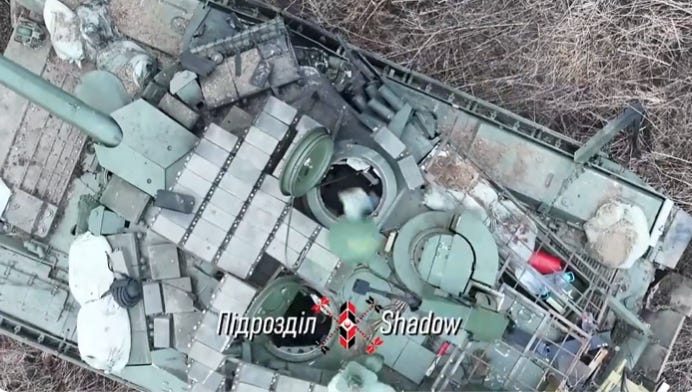
It's widely understood that grenade-dropping drones are not even remotely the issue in current armored combat. Even the stock footage they play over this segment of the interview emphasizes the point: these types of drones are typically used to 'finish off' tanks which have already long been disabled. That means they are not active combat drones, but rather the clean up that scours a post-battle field of desolation, opportunistically hunting vehicles or wounded to finish off. What possible use would tank commanders have in wasting their time training against that?
FPVs that fly at high speeds with cumulative charges are the problem, not slow grenade-heaving drones. His next words are in many ways even more jarring because his manner of even discussing drones feels so 'green' and, quite frankly, out of touch.
He relays that his command will "supposedly" interject "more of this kind of training"—admitting he's not even certain if they'll go beyond just the superficial and totally pointless affectation of dropping a few grenades from above. He then further admits that "the whole concept of drones is absolutely crazy [to us]", in essence revealing the U.S. Army lags behind drone developments such that they are still in effect just poking at it with a stick, unable to even come to terms with basics in the way that's become second nature for both the Ukrainian and Russian side two years running.
This is supported by his further comments, as everytime he speaks on the drone threat, it feels increasingly like the U.S. Army is really out of touch and is treating drones as a sort of novelty to vaguely acquaint tankers with, as if still counting on the intangible magic of the mythical U.S. "Might" to take care of the threat.
This is actually a typical U.S. military behavior, alluded to by many in the past, like Dr. Phillip Karber in his speech at West Point. Each U.S. military branch quietly expects to pass the buck to 'some other' branch which they feel confident will 'take care of the problem'. For instance, tankers might feel: "I'm not worried, I'm sure our EW units will take care of those pesky drones for us if we ever have to deploy", thinking just a basic familiarity with the problem should be enough to mitigate any potential harm.
But little do they know, there will be no other unit or branch to miraculously save them. The U.S. frontline EW capabilities are not even a fraction as developed as those of Russia—and you can see Russia itself struggling against this persistent drone threat. The fact that the sergeant in the video continues referring to FPVs as dropping 'grenades' seems to imply he does not even truly comprehend the specific threat FPVs pose, which has nothing whatsoever to do with grenades or dropping anything. It's akin to a 'boomer' discussing Gen Z fads—you can just sense they're not quite picking up on the real essence of things.
It also makes me wonder whether the commander is misapprehending the videos he's watching out of Ukraine. This would be telling, and redound onto the U.S. Army itself. He may be viewing grenade drops into open hatches, interpreting the targets to be live still in combat, which is almost never the case.
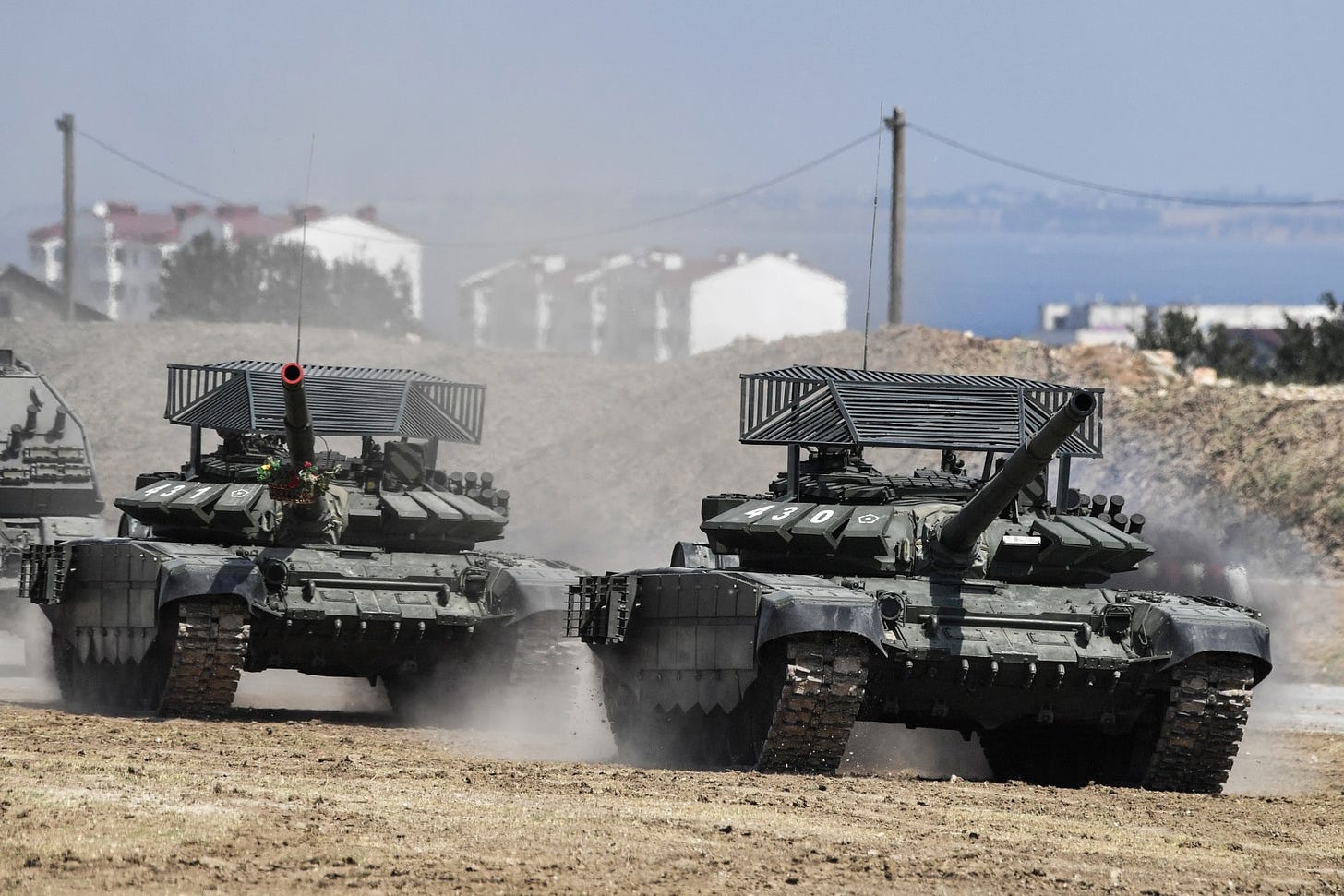
Next, he admits that "cope cages" are the only real protection possible against drones—a fact that may not be a surprise to us, but could surprise anyone still retaining some kind of idealized vision of the U.S. Army as some superior force that's "above" using such crudely makeshift solutions. Of course we've now seen even the much-touted IDF resort to these cages in Gaza, as would the U.S. be forced to do. The commander even openly states at 5:45 that his units have never even "thought about" heavy camouflage measures, further exposing the U.S. Army's complacency over the years of fighting unarmed bedouins.
When such thinking becomes institutionalized on a mass scale, as it has become in the U.S. Army, it cannot be solved in an expedient manner. One can't simply snap a finger and expect this unwieldy monstrosity comprised of hundreds of disparate units and Byzantine hierarchical structures to be able to fluidly conform to some total overhaul of its most basic operational doctrines and inbuilt organizational 'reflexes'. The U.S. Army would take years to effectively structurally adapt to much of these modern shifts in a large scale composite way.
But the second half of the video is where things get really interesting, and tie into the main thematic arc of this article, which will be supported by the subsequent pieces.
This section is kicked off by Red Effect asking the sergeant about tactics, and whether the AFU is using the Abrams tanks properly. This veers into a direction where the sergeant makes some extremely revealing concessions.
He begins by saying he's discussed the issue with his own officers and it always boils down to the idea of 'doctrine', and what is U.S. doctrine when it comes to tank combat, exactly?
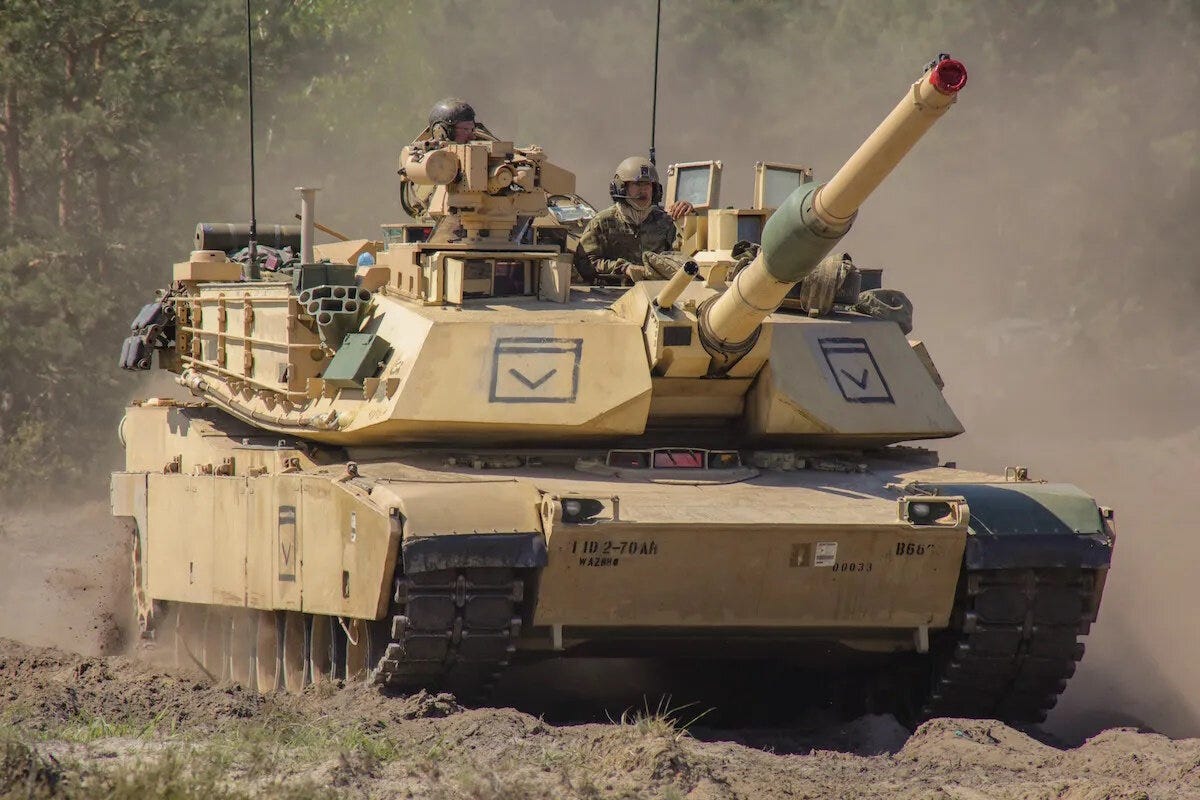
He explains that in essence U.S. armored doctrine revolves around utilizing the armored vehicles in mutually supportive sections or groups, i.e. together, rather than one or two vehicles acting individually as is so often the case in Ukraine. He correctly identifies that the chief consequence of the modern proliferation of drones is the ability to concentrate fire extremely quickly. This means any tank unit comprised of multiple vehicles that's sitting bunched up will be very quickly targeted and taken out in a way that's unprecedented to the training and doctrines of just about every country of the world.
14 Apr 2024 | 10:28 pm
6. Iran Breaches Anglo-Zionist Defenses in Historic Attack: A Breakdown
Iran made history yesterday by launching "Operation True Promise". In our usual style here, let's cut through all the noise currently clogging up social networks and incisively demonstrate the facts as thoroughly as possible, while also pointing out how this was a game-changing and historic event which has brought Iran onto the world stage in a big way.
Firstly, as establishment, Iran's stated goal for the operation was to strike back at the bases from which the Israeli consular attack was launched on April 1:
IRGC has listed its objectives for last nights missile attack: Ramon and Nevatim airbases (where attack on Iran Consulate was conducted from). Israeli Air Force intelligence HQ in Tel Aviv (where attack on Iran Consulate was planned) and degrading of Israeli air defence radars and assets.
The footage is of the Intelligence HQ getting hit. I have yet to see evidence of 99% interception. Ramon has been badly hit. Nevatim was hit by more than 7 missiles. Air Force Intelligence HQ completely leveled. Other strikes on air defence installations obviously not close to population centres and out of view but I'm sure sat intel will show extent of damage.
And another:
➖Nevatim Airbase in the south of occupied Palestine
➖Ramon Airbase in the south of occupied Palestine
➖The Israeli top-secret intelligence-spy base in Jabal al-Sheikh (Mount Hermon) in the north of the occupied Golan
It should be noted that the rest of the explosions or hits in other areas of the occupied territories are related to the confrontation of the Israeli air defense systems with the projectiles in the sky or the falling of the wreckage of the interceptor missiles or the wreckage of Iranian missiles.
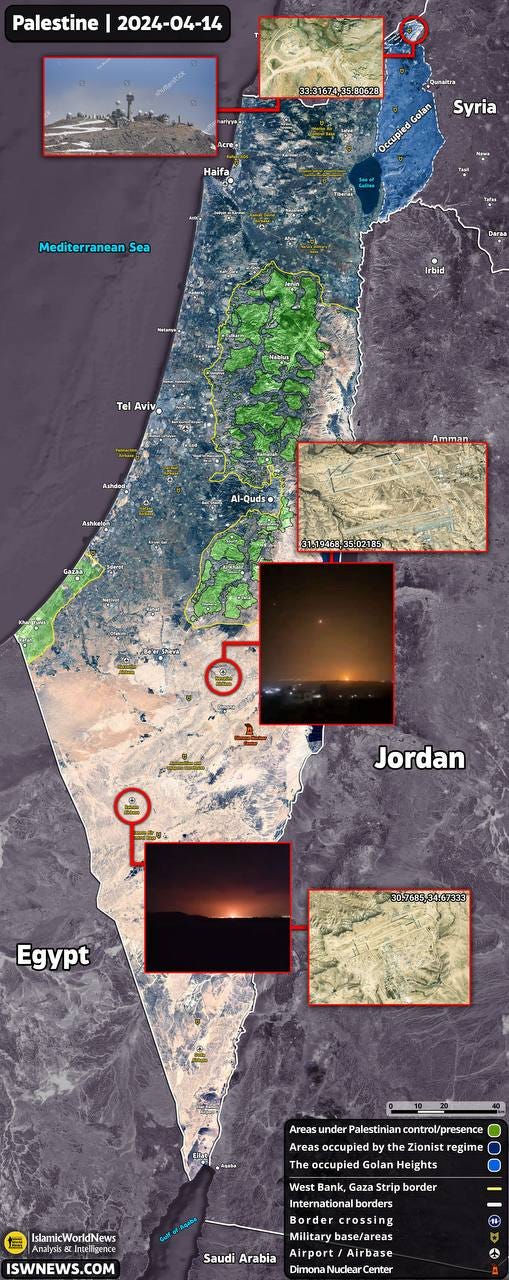
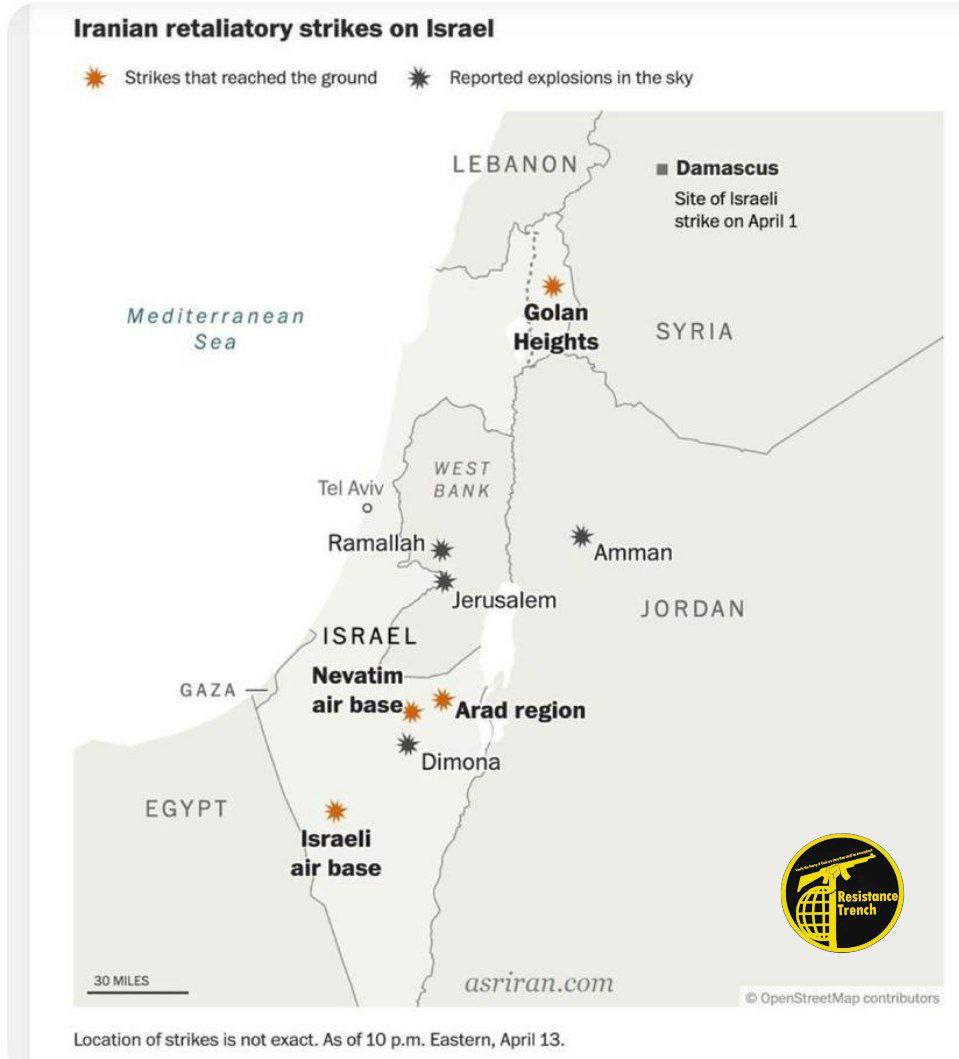
Now, let's get down to the nuts and bolts.
This strike was unprecedented for several important reasons. Firstly, it was of course the first Iranian strike on Israeli soil directly from Iranian soil itself, rather than utilizing proxies from Iraq, Syria, Lebanon, Yemen, etc. This alone was a big watershed milestone that has opened up all sorts of potentials for escalation.
Secondly, it was one of the most advanced and longest range peer-to-peer style exchanges in history. Even in Russia, where I have noted we've seen the first ever truly modern near-peer conflict, with unprecedented scenes never before witnessed like when highly advanced NATO Storm Shadow missiles flew to Crimea while literally in the same moments, advanced Russian Kalibrs flew past them in the opposite direction—such an exchange has never been witnessed before, as we've become accustomed to watching NATO pound on weaker, unarmed opponents over the last few decades. But no, last night Iran upped the ante even more. Because even in Russia, such exchanges at least happen directly over the Russian border onto its neighbor, where logistics and ISR is for obvious reasons much simpler.
But Iran did something unprecedented. They conducted the first ever modern, potentially hypersonic, assault on an enemy with SRBMs and MRBMs across a vast multi-domain space covering several countries and timezones, and potentially as much as 1200-2000km.
Additionally, Iran did all this with potentially hypersonic weapons, which peeled back another layer of sophistication that included such things as possible endoatmospheric interception attempts with Israeli Arrow-3 ABM missiles.
But let's step back for a moment to state that Iran's operation in general was modeled after the sophisticated paradigm set by Russia in Ukraine: it began with the launch of various types of drones, which included some Shahed-136s (Geran-2 in Russia) as well as others. We can see that from the Israeli-released footage of some of the drone interceptions:
At the 0:49 mark you can see what looks like a Shahed, though it appears similar to the jet-engine-equipped Shahed-238 variety.
After a certain pre-timed span, Iran then released cruise missiles so that they could strike roughly in a similar window as the drones. One video from last night confirmed the low-flying cruise missile presence:
It's not known for certain, but it appears it could be the new Abu Mahdi missile which has the appropriate ~1000km range. Here's some other possibilities:
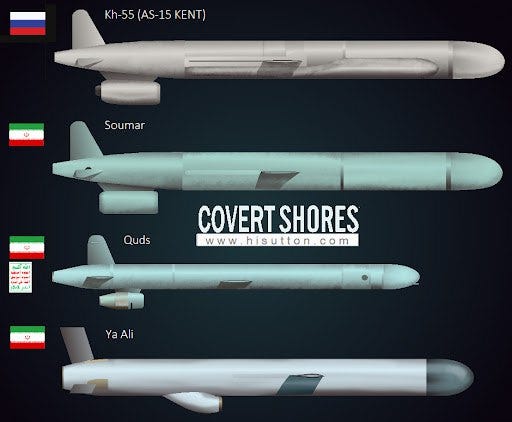
Then, following the appropriate time interval, Iran launched the coup de grace, its vaunted ballistic missiles. Here's Iran's own released footage of the start of Operation True Promise, which includes the ballistic launches:
As stated, all three layers of the attack were timed to coincide, with the slowest (drones) going first, then next fastest (cruise missiles), followed by the fastest time-to-target, the ballistic missiles.
The U.S. scrambled a large coalition to shoot the threats down, which included the U.S. itself, UK flying from Cyprus, France, and, controversially, Jordan which allowed them all to also use its airspace and even partook in the shoot downs.
Dozens of images proclaimed the "successful" shoot downs of Iranian ballistic missiles, like the following:
The problem is, all of those are the ejected booster stages of two-stage rockets. There is no conclusive proof that any ballistic missiles were shot down, and in fact all the evidence points to the opposite: direct footage of the missiles penetrating the AD net and striking targets. But we'll get to that.
Missile TypesFirst: what kinds of ballistic missiles did Iran use?
There are speculations and then there's what can be dutifully confirmed.
As for the confirmed, with my own eyes from the actual longer released launch video we can see the following:
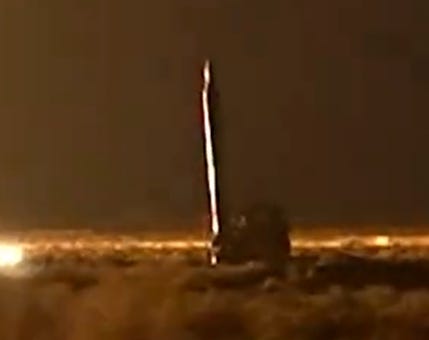
Which appears to match what is likely the Shahab-3 below:
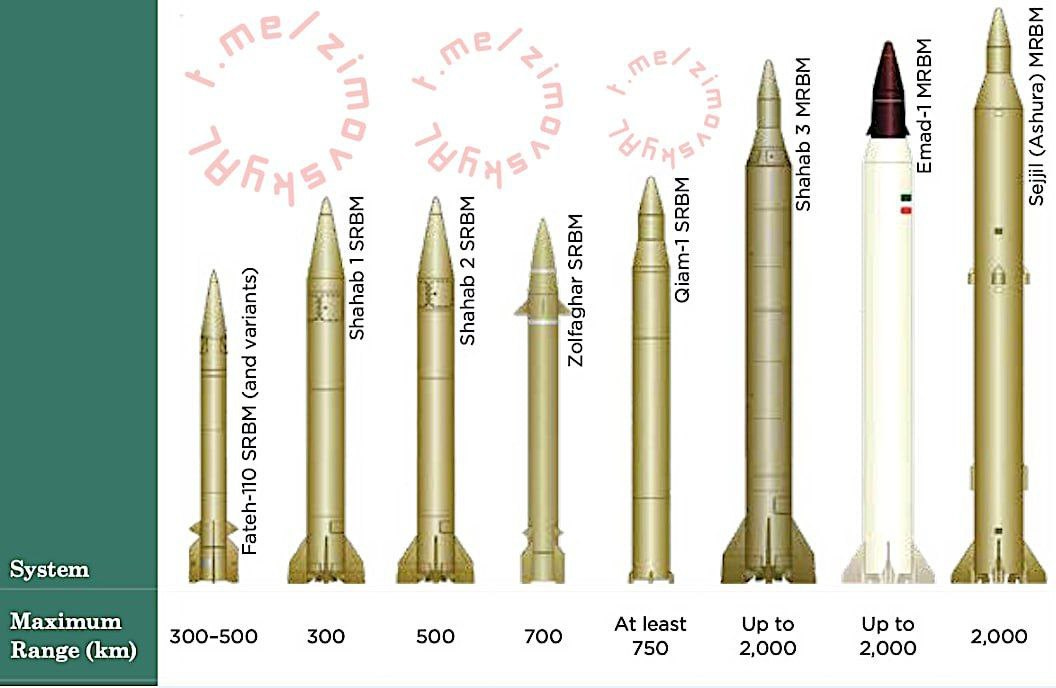
Here's another photo from a Shahab-3 test:
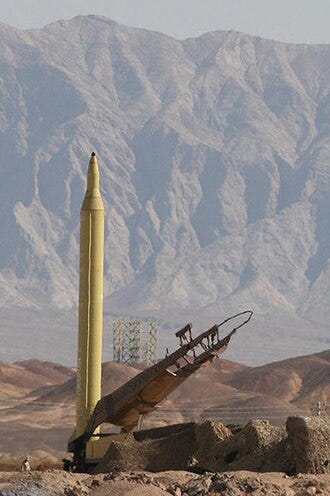
In the launch photo, the very top warhead nose cone does appear slightly shorter and may match the Sejjil rocket better. The Sejjil is in fact a much newer evolution of and upgrade to the Shahab that has both a two-stage and three-stage variety for an extremely long range of 2500km+. And some also claim it might be the Ghadr-110, but this is also an evolution and similar 'upgrade' of the Shahab-3 system, which likewise looks almost identical.
There are some other launch videos that appear to show possible Zolfagher or the updated Dezful systems as well.
Then there is the closest shot of the launch video, which gives us the most accurate confirmation of one of the missile types:


On the fuselage you can see what appears to be EMA written, and the same can be seen on this photo from today of a "downed missile" somewhere in Iraq:


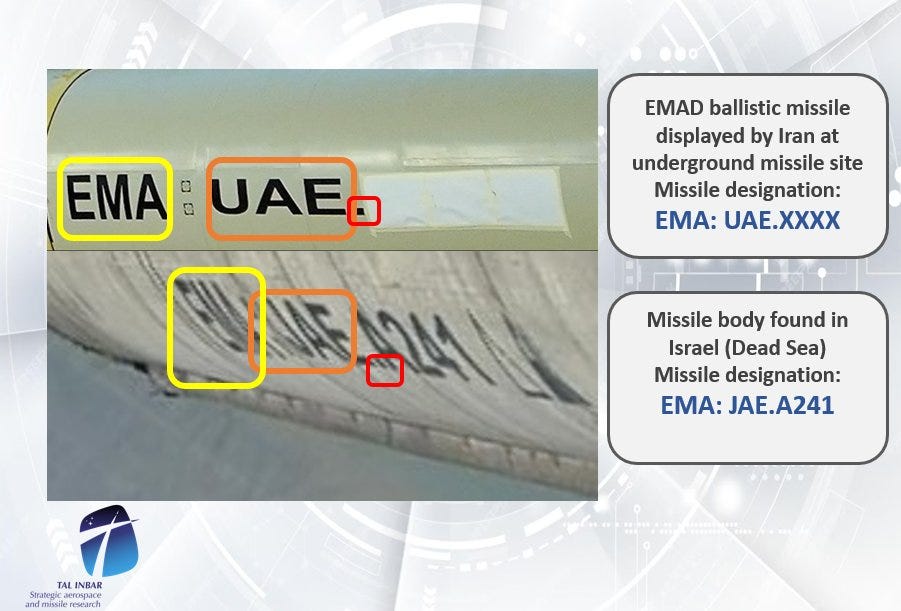
This comes closest to confirming that missile to be an Emad from the chart above, which is one of Iran's most advanced and can feature a MaRV (Maneuverable Re-entry Vehicle) warhead. This is where it starts getting interesting, because the hits we saw in Israel appeared to potentially utilize some form of MaRV or hypersonic glide vehicle, which would mean Iran could have made history even beyond what we thought.
So let's get there by first mentioning the other controversial claim that Iran possibly used its most advanced new hypersonic Fattah-2 system:

In none of the launch videos was this visible, but that doesn't necessarily preclude Iran having secretly launched and tested some of the above. An Iranian academic stated the following:
"Iran has not fired its hypersonic missiles. In fact, most of the drones and missiles that were fired were older drones and missiles. They were very inexpensive and were used as decoys. So Iran spent a couple of million dollars to force the Israelis to spend $1.3 billion in anti-missile missiles, which was itself a big achievement by the Iranians. And then a number of other missiles that the Iranians fired...cut through and struck their targets," the academic and geopolitical affairs commentator told Sputnik.
And lastly, there are some experts who believe Iran utilized its elusive hypersonic Kheybar Shekan missile, which also features a highly maneuverable MaRV.
These are two shots from last night's launch video:
And here is a stock photo of the Kheybar nosecone and warhead:

This is where it gets most interesting, and why I've prefaced it so thoroughly.
In short: while Israel and the U.S. claim they shot down 100% of everything, and while it's possible that the drone and cruise missile lures were mostly shot down—though we have no strong evidence one way or the other—we do have evidence that the ballistic missiles largely went unopposed, slicing through what's claimed to be the densest air defense in the world. Not only Israel's itself, comprised of a layered defense of David Slings, Arrow-3s, Patriots, and Iron Dome, but also the aforementioned allied airforces, as well as what's now been reported to be a U.S. Arleigh Burke warship firing upwards of 70+ SM-3 missiles from the Mediterranean shore.
The hits that we saw were spectacular in one profound way: the terminal velocity of the Iranian ballistic missiles appeared stunningly fast. Let's review some of the most exemplary videos.
Here's by far the most revealing one, which totally refutes Israeli claims of 100% shoot downs. Note the massive swarm of air-defense missiles going up at the onset, then at the middle mark, watch as Iranian ballistics crash through the AD net totally unopposed at high speed, slamming into the ground:
As a quick aside, this next video was claimed by many to show Israeli Arrow-3 missiles shooting down Iranian ballistics in the exoatmosphere, i.e. in space:
But in reality, all it shows is the stage separation of the Arrow missiles as they climb toward the exoatmospheric zone. It does not show any actual successful interceptions, nor is there any evidence of a single ballistic missile being shot down.
But here's where we get down to business. The next video is the most eye-opening in terms of the capabilities of these missiles. The two most important things to note are: 1) the terminal velocity right before impact and 2) note how some of the missiles strike very precisely onto the same location in groups.
First video, note the terminal speed here:
Here note the speed but also the grouping accuracy:
In particular at 0:31 above what looks like a runway on the rightside of the screen can be seen, which could indicate this to be the Nevatim airbase in the Negev desert—where Arabic speaking Bedouins live, which explains the Arabic in the video.
Not all the impacts exhibit the high speed of a potentially hypersonic re-entry vehicle. For instance, this video shows perhaps somewhat slower missiles that nevertheless are easily bypassing the joint Israeli-Western AD net:
But getting back to the hypersonic question. Here's a video showing one of Iran's missile tests, which appears to show one of the hypersonic glide vehicle style warheads from the Ghadr missile:
A new video of the moment one of the IRGC's ballistic missiles was hit during last year's solar exercise near Chabahar has been released with 60 frames per second, where you can clearly see the impact of the Ghadr missile warhead for the first time. This warhead also has a very good final speed around Mach 7 and will be very strategic. The three-cone body of this cap is completely and severely melted, and you can also see the burning marks on the small parts of this cap in the first frame of entering the frame.
Photo:

The speed appears to coincide with the videos of the faster strikes, and you can see the vehicle looks like it may be glowing white-hot, which could explain the somewhat odd fact that in all the strike videos, the Iranian missiles appear 'red' as if they are still burning their engines. But we know most ballistic missiles like the Iskander have a burn-out phase after which the engine stops burning. Thus the red-hot nature of the strikes could potentially indicate not a burning engine, but rather the heat of the vehicle's outer skin from hypersonic re-entry.
Further, most ballistics strike on a pretty steep or straight down decline, while many of the Iranian hits are on a shallower trajectory which could indicate a glide-style vehicle, though in the above 'test' it clearly shows it coming down at a 90 degree angle, so it's likely capable of both.
That being said, it may not be an unpowered glide vehicle but one of the thrust-capable re-entry vehicles like so:

Unfortunately, we just don't know the exact details—like construction material for instance—that would allow us to fully confirm its terminal speed. However, based on visual eye-balling, some of the strikes appear to be landing at minimum Mach 3.5-5 if not higher, which according to some, is even higher than Iskander terminal velocity.
That being said, while the Iranian MRBMs feature very complex propulsion systems, given that they are two and even three stage for extra-long range, while Russia and the U.S. lacks these because of their previous adherence to the Intermediate Range Ballistic Missile Treaty, the guidance aspect of Iranian MRBMs remains a question mark. We don't know how accurate they are, and in the end, how effective the strikes actually were in hitting their targets. That's because beyond the general macro objective of "hitting Nevatim airbase", for instance, we don't know what precisely inside that giant airbase Iran may have targeted.
However, Israel did confirm the base was hit upwards of 7 times, but claims the damage was minor. In fact, they've now released footage showing them repairing one of the hit runways:
And some satellite photos have been released showing what appears to be possible strike damage throughout the base:


And another before and after timelapse, though unclear, shows possible damage to a hangar. Keep in mind this is the base which housed F-35s:
Could Israel be downplaying serious damage by releasing the video of a minor runway hole? For instance, they posted another video of an F-35 landing back at Nevatim base as a demonstration that the base is unharmed, but some have alleged that it is old footage:

That's not to mention the official Israeli account tried to pass off old footage of Russian MLRS launches from Ukraine as Iranian ballistic launches last night:
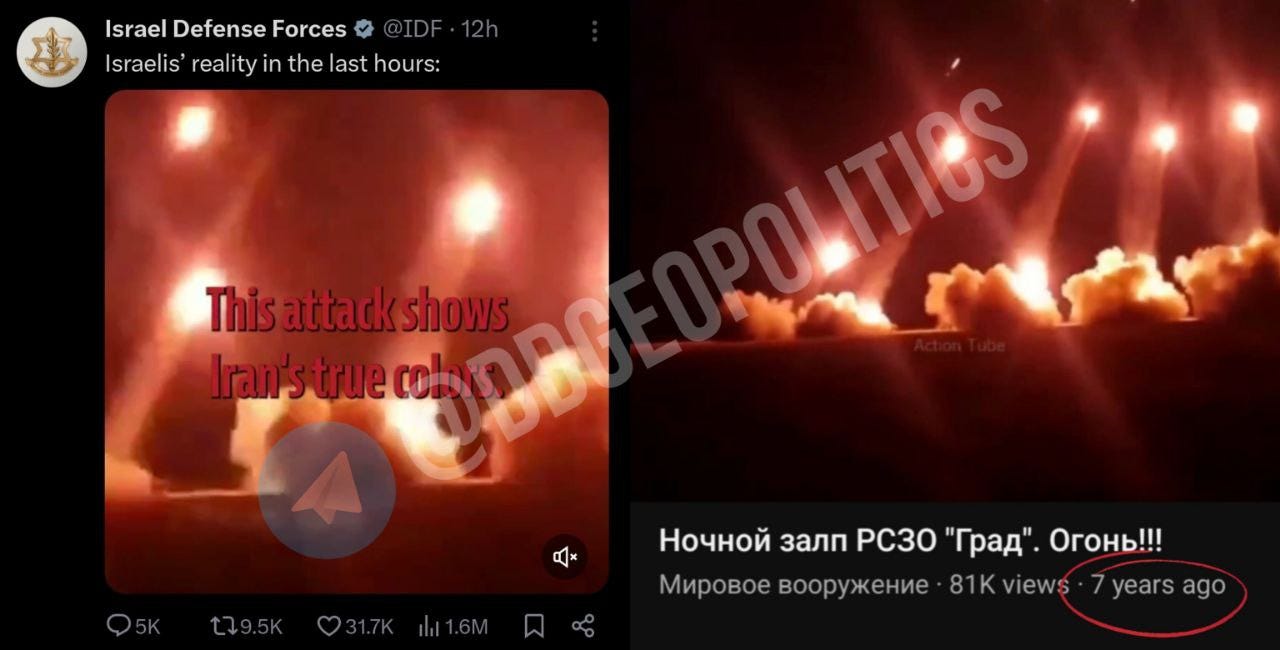
Thus it's clear that truth is no obstacle for Israel, which means we certainly cannot take their word on anything regarding last night's operation.
Conclusion?What can we conclude about last night? We don't have any definitive 'final words' on how effective Iran's strikes were because:
We don't know Iran's exact granular targets
We don't know Iran's exact intentions
For the second, what I mean is that many now believe Iran merely strove to provide a 'demonstration en force', as Will Schryver puts it. A show merely as a 'warning' to Israel, and to create deterrence from future Israeli escalations. In fact, Iranian officials have now warned that Iran will respond similarly to all future Israeli attacks:

They call this the New Equation. Anytime Israel attacks them, Iran now intends to strike them 'head on', i.e. directly from its soil as is their newly demonstrated capability.
Beyond this, Iran broke ground in setting new milestones for missile technology and modern warfare, as stated in the outset. Iran demonstrated the capacity to bypass the most powerful and advanced anti-missile systems in the world—ones that have no built-in excuse as is the case in Ukraine. In Ukraine, the excuse is that the Patriots and other systems are manned by under-trained Ukrainians, and are not reinforced and integrated as wholly into layered Western systems as they would be in Western hands.
But last night, Iran penetrated every missile shield manned and operated by NATO itself, with all the trappings and advanced C4ISR and SIGINT capabilities inherent to the entire Western alliance; from THAAD, to Patriot, David's Sling, Arrow-3, SM-3, Iron Dome, and even 'C-Dome' from Israeli corvettes—not to mention the entire complement of the West's most advanced A2A defenses flown from F-35s, Typhoons, Eurofighters, and likely much more.
One must understand that ballistic missiles are precisely the apex predator that these most advanced Western AD systems were created to handle—and last night, they failed spectacularly in the same way the Patriots did in Desert Storm before them:


This sends a signal that Iran is now truly capable of striking any of the most high profile, high value targets of the West's, in the entire sphere of the Middle East, within a radius of 2000-4000km. That is a significant capability that dwarfs even anything Russia or the U.S. itself is capable of in the same efficient way. Sure, Russia can send Avangards (very few, and highly expensive) and far slower long range cruise missiles, but due to the Treaty, no other country can match Iran's cheap and immediate ballistic missile capability. The U.S. would have to send up a load of slow planes and do the traditional long range stand off attacks with slow munitions to hit targets at such distances.
As I said, the only question that remains is still of effectiveness by way of accuracy. It's one thing to develop long range rockets via the luxury of a two-stage allowance, but there's far more technology that goes into making such objects critically accurate—and I suspect here Iran may fall short of Russia and the U.S.' capabilities, given that there's a whole host of special electronics (signal boosting, EW reflecting, etc.) and guidance redundancies that are required for extreme accuracy. This is where Russia's systems shine. Iran's missiles have been shown to be quite accurate during tests in Iran under ideal conditions—but in highly contested EW environments, when the GPS/Beidou/Glonass signals are jammed, it could be a completely different story. Furthermore, the science behind signal retention in hypersonic plasma bubbles is quite extreme and no country has yet even proven the capability to consistently do this—but we won't get into that for now, as I may cover that in an upcoming article focusing on the Russian Zircon.
The optics of seeing Iranian missiles flying over the Israeli Knesset surely sends chills down Israel's spine because it states: we could have easily destroyed your Knesset, and much else, but we chose to be lenient, for now:
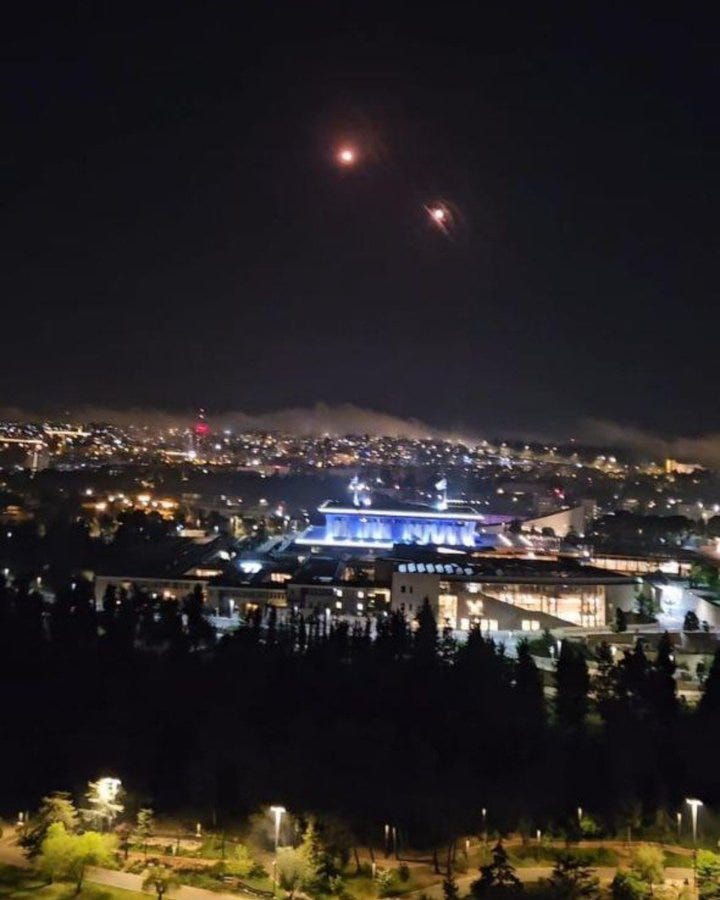
There are now two chief competing 'takes' on the situation.
One says that Iran was 'humiliated' as Israel intercepted everything, and more importantly, that Iran has now blown its only advantage of surprise and strategic uncertainty/ambiguity by 'showing its hand' and not achieving much. They argue that Iran's one true advantage over Israel was the threat that it could effect a mass launch of its feared ballistic missiles, wiping out huge swathes of Israel. But now that the perceived 'damage' from the attack was low, Iran has shown itself to be weaker than expected, which could imbue Israel with even more courage and motivation to continue striking and provoking Iran, as they might see they have nothing to fear from Iran's long-touted missiles.
This is certainly a reasonable argument. I'm not saying it's totally wrong—we simply don't know for a fact because of the aforementioned reasons that:
We don't actually know how much damage the strikes caused, due to Israel's obvious lies of "100% interceptions" and disproved fakes.
We don't know whether it was merely Iran's goal to do a 'light' showing in the interest of 'escalation management'. I.e. they may not have wanted to cause too much damage deliberately, simply to send a message but keep from provoking Israel to respond too aggressively.
Iran is said to have thousands of such missiles, so obviously having launched only 70+ or so is likely not indicative of a major attack tasked with actually causing serious destruction to Israeli infrastructure.
Then there's the converse side: Iran came out the big winner by demonstrating all the previously-outlined abilities of bypassing the West's densest AD shields.
Here's why I think in some ways this conclusion to be the more correct in the long term.
Firstly, one of the common counterarguments is that Israel possesses nuclear weapons, which ultimately trumps anything Iran can throw at them. But in reality, now that Iran has proven the ability to penetrate Israel, Iran too can cause nuclear devastation by striking the Israeli Dimona nuclear power plant. Destroyed nuclear plants would produce far more radioactive chaos than the relatively 'clean' modern nuclear weapons. Furthermore, Israel is much smaller than the comparatively gigantic Iran. Iran can take many nuclear hits and survive; but a single mass nuclear event in Israel could irradiate the entire country, making it uninhabitable.
Secondly, recall the main fear of Iraqi Scarabs and Scuds back in the day: that they could contain chemical/biological warheads. Iran too could technically load its missiles with all kinds of nasty goodies of this sort: either chem-bio or even unenriched Uranium—which it has aplenty—to create a 'dirty bomb'. Now that we know it can penetrate Israel easily, Iran could actually wipe the country out with a mass un-enriched nuclear, chemical, or biological attack with these now-proven hyper- or quasi-hypersonic ballistics. That threat alone now presents a psychological Damocles Sword that will act as asymmetrical deterrent or counter to any Israeli Samson Option threat.
Thirdly, this was Iran's very first foray into such a direct strike. It can be argued that they gained critical data and metrics from the entire Western alliance's defensive capabilities as well as Israeli defensive vulnerabilities. This means that there is an implied threat that any future attack of this scale could be far more effective, as Iran may now 'calibrate' said attack to maximize what it saw were any failings or weaknesses on its part last night. Russia has had two years of launching such strikes, and it has only been semi-recently that they've calibrated and finetuned the precise timings of the sophisticated multi-layered drone-ALCM-ballistic triple threat attack. Iran can improve with each iteration as well and maximize/streamline the effectiveness with each attempt.
Fourthly, there is the now-confirmed mass discrepancy of operational costs:
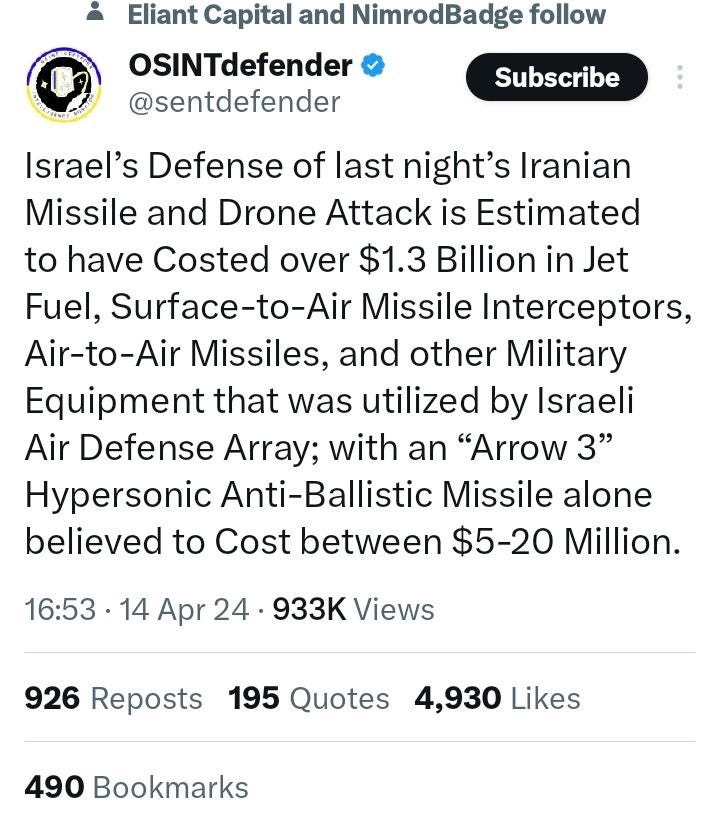
Israel's defense of last night's Iranian missile and drone attack is estimated to have costed over $1.3 billion in jet fuel, surface-to-air missile interceptors, air-to-air missiles, and other military equipment utilized by the Israeli air defense array; with an "Arrow 3" hypersonic anti-ballistic missile alone believed to cost between $5-20 million.
One unconfirmed source claimed Iran's attack cost as little as $30M, while the number floated for the West's interceptions is around $1B to $1.3B.
Given that the average interceptor missile is minimum from about $1M to upwards of $15-20M for the SM-6s, this total price is plausible. Given that Iran was said to have fired a total of ~350+ drones/missiles, and that the standard procedure is to fire 2 interceptors at each threat, one can clearly see the math: 350 x 2 = 700 x $1-15M.
The point is that, just as we're in the midst of the Houthis having proven the West's total inability to sustain defense against mass persistent drone swarms, here too Iran may have just proven an absolutely lethal inability of Israel and the West to sustain against a potential long drawn-out Iranian strike campaign; i.e. one prosecuted over the course of days or weeks, with consistent daily mass-barrages. Such a campaign would likely critically deplete the West's ability to shoot down even the lowest scale Shahed drone threat. Just look at Ukraine—it is going through the same lesson as we speak.
Lastly, what does this mean?
One neglected consequence of this is that Iran now stands to field the ability to totally disrupt Israel's economic way of life. If Iran were to engage in a committed campaign of mass strikes, it could totally paralyze the Israeli economy by making entire areas uninhabitable, causing mass migrations in the same way the Hamas attack led thousands of Israelis to flee.
Unlike Israel's barbaric and savage genocide aimed primarily at civilians, last night's Iranian attack exclusively targeted military sites. But if Iran wanted to, they could launch mass infrastructure attacks in the way Russia has now done to Ukraine's energy grids, further compounding the economic damage. In short: Iran could mire Israel in months' and years' long economic malaise or outright devastation.
Don't forget this attack was still relatively limited to Iran alone. Sure, the Houthis and even Kata'ib Hezbollah reportedly sent a few drones, but it was minor. That means in the future, should Israel choose to escalate, Iran still reserves several levels of its own escalatory advantage. If push came to shove, imagine Hezbollah, Ansar Allah, Hamas, Syria, and Iran all launching full-fledged attacks on Israel in all out war. Maybe that's what Israel wants, some would argue. After all, there are echoes of the various Arab-Israeli wars where Israel 'triumphed' against such large Arab coalitions. But times have changed, the calculus is slightly different now. Short of using nuclear weapons, how would Israel survive a full-scale war against Hezbollah in the north while Iran rains daily barrages of hypersonic missiles, drones, and everything in between on Israel's industries, crippling its economy?
Of course, at that point the question of the U.S. coming to help is brought up, but, clearly desperate for an off-ramp, Biden just stated:

The final aspect for consideration is to remember that all of the preceding and ensuing events could very well be part of the Israeli plan. Recall, Israel didn't choose to blow up the Iranian embassy—a huge, unprecedented maneuver—and slaughter Iranian generals just for its health. This appeared part of a clear strategy of escalation aimed at baiting Iran into an escalatory spiral, presumably with the end goal of drawing the U.S. into a large scale war to cut down Iran once and for all.
In light of that, some experts now speculate that Iran foolishly "fell into the trap". However, as stated earlier, Iran can be said to have wisely 'managed' the escalation for precisely this reason: to show its strength while not going too far in a way that would invite a wider American response—or even an Israeli one for that matter.
But I simply mention this to temper any 'celebratory' touts from the resistance sphere. While Iran's strikes may inspire some chest-beating chauvinism, in reality it may very well have played into Israel's hand. However, the U.S.' unwillingness to support Israel into further escalation could very well deflate Netanyahu's goals and simply leave Israel with egg on its face with Iran coming out the winner in the exchange.
We'll have to wait and see where it leads: as of this writing, the story has changed three separate times; the last two being that Israel decided not to respond, with news now claiming that Israel not only has chosen to retaliate, but will even do so as early as tonight, perhaps within minutes or hours of this publication's release. If that turns out to be the case, then we'll have to see if Israel chooses its own 'face-saving' off-ramp 'light touch' attack just for damage control's sake, or whether it truly aims to keep climbing that escalatory ladder in force. Any major action without American backing is risky: not only because it could fail, and Israeli planes could be shot down, but also because Iran could make good on its word and unleash another far more devastating attack.
Final ThoughtsWhy now? Why did Israel bait Iran into such an action at this precise moment?
The clue to the answer lies in the news from several days ago that Israel totally withdrew its forces from Khan Younis:


I suspect that Israel—or Netanyahu in particular—is facing failure, after not having accomplished any of the stated objectives, and thus is desperate to create a new distraction as a vector for continuing the war in some way that could keep the world, and Israelis, from reaching the conclusion that the war has been totally lost.
Have you seen the latest bombshell from Haaretz?

We've lost. Truth must be told. The inability to admit it encapsulates everything you need to know about Israel's individual and mass psychology. There's a clear, sharp, predictable reality that we should begin to fathom, to process, to understand and to draw conclusions from for the future. It's no fun to admit that we've lost, so we lie to ourselves.
Some of us maliciously lie. Others innocently. It would be better to find solace in some airy carb with a total-victory crust. But it might just be a bagel. When the solace ends, the hole remains. There's no way around it. The good guys don't always win.
The astonishing article, which jibes with the sentiments of many Israelis, goes on:
After half a year, we could have been in a totally different place, but we're being held hostage by the worst leadership in the country's history – and a decent contender for the title of worst leadership anywhere, ever. Every military undertaking is supposed to have a diplomatic exit – the military action should lead to a better diplomatic reality. Israel has no diplomatic exit.
The article concludes that the calculus has changed, and that Israelis may now never be able to return to the northern border, given the situation with Hezbollah.
Another classic line:
No cabinet minister will restore our sense of personal security. Every Iranian threat will make us tremble. Our international standing was dealt a beating. Our leadership's weakness was revealed to the outside. For years we managed to fool them into thinking we were a strong country, a wise people and a powerful army. In truth, we're a shtetl with an air force, and that's on the condition that its awakened in time.
The author then focuses his condemnation on the upcoming 'Rafah operation':
Rafah is the newest bluff that the mouthpieces are plying to fool us and make us think that victory is just moments away. By the time they enter Rafah, the actual event will have lost its significance. There may be an incursion, perhaps a tiny one, sometime – say in May. After that, they'll peddle the next lie, that all we have to do is ________ (fill in the blank), and victory will be on its way. The reality is that the war's aims will not be achieved. Hamas will not be eradicated. The hostages will not be returned through military pressure. Security will not be reestablished.
In short: this is why Netanyahu needed an escalation. It's to divert attention from the ongoing catastrophe of Israel's potential defeat to Hamas, the catastrophic loss of standing of Israel's image in the world community, the complete turning against Israel by the entire world. Rather than admit defeat and face the end of his career, as well as the coming trials and tribunals that would put Bibi in jail, he chose to take the only remaining option: to continue escalating in the hopes that a wider-scale war could wash away his sins and undo the past mistakes. Unfortunately, just like the ill-fated Zelensky, Netanyahu's doomed plan appears destined to coincide with the U.S.' historic decline, reaching its zenith now in this pivotal year of 2024.
At the critical moment when Israel needed the strongest possible America, they got the weakest America in its history. That is Israel's blunder, which may be its ultimate, calamitous undoing. But Bibi will likely have no choice but to continue escalating, or at least keep a strategy of tension a constant presence in order to survive.
Only last quick postscript note is to say that the ensuing events could affect the Ukrainian aid bill, as there is now talk of ramming through an emergency Israeli aid package, in light of events, which could have Ukrainian aid attached; but we'll have to see what happens, as there is still strong opposition among some Republicans.
Your support is invaluable. If you enjoyed the read, I would greatly appreciate if you subscribed to a monthly/yearly pledge to support my work, so that I may continue providing you with detailed, incisive reports like this one.
Alternatively, you can tip here: Tip Jar
11 Apr 2024 | 7:31 pm
7. SITREP 4/11/24: Zelensky in Shock as Kiev's Largest Power Plant Wrecked in Massive Strikes
The day starts with a massive Russian missile strike that has wiped out another chunk of the remaining Ukrainian energy capacity. It's now confirmed that Russia is hitting precisely the turbine rooms causing long-lasting, if not permanent, damage.
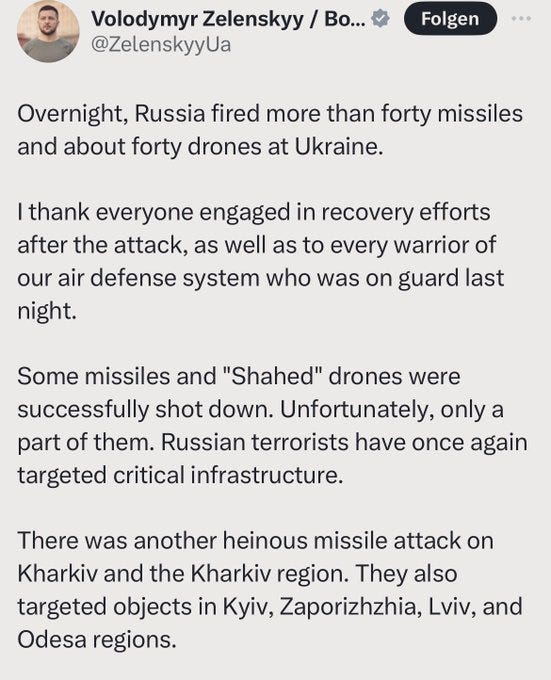
Here's Ukraine's own Centernergo energy concern declaring it to be the worst day in their history, as the Trypil Thermal Power Plant in the Kiev region was wiped out:
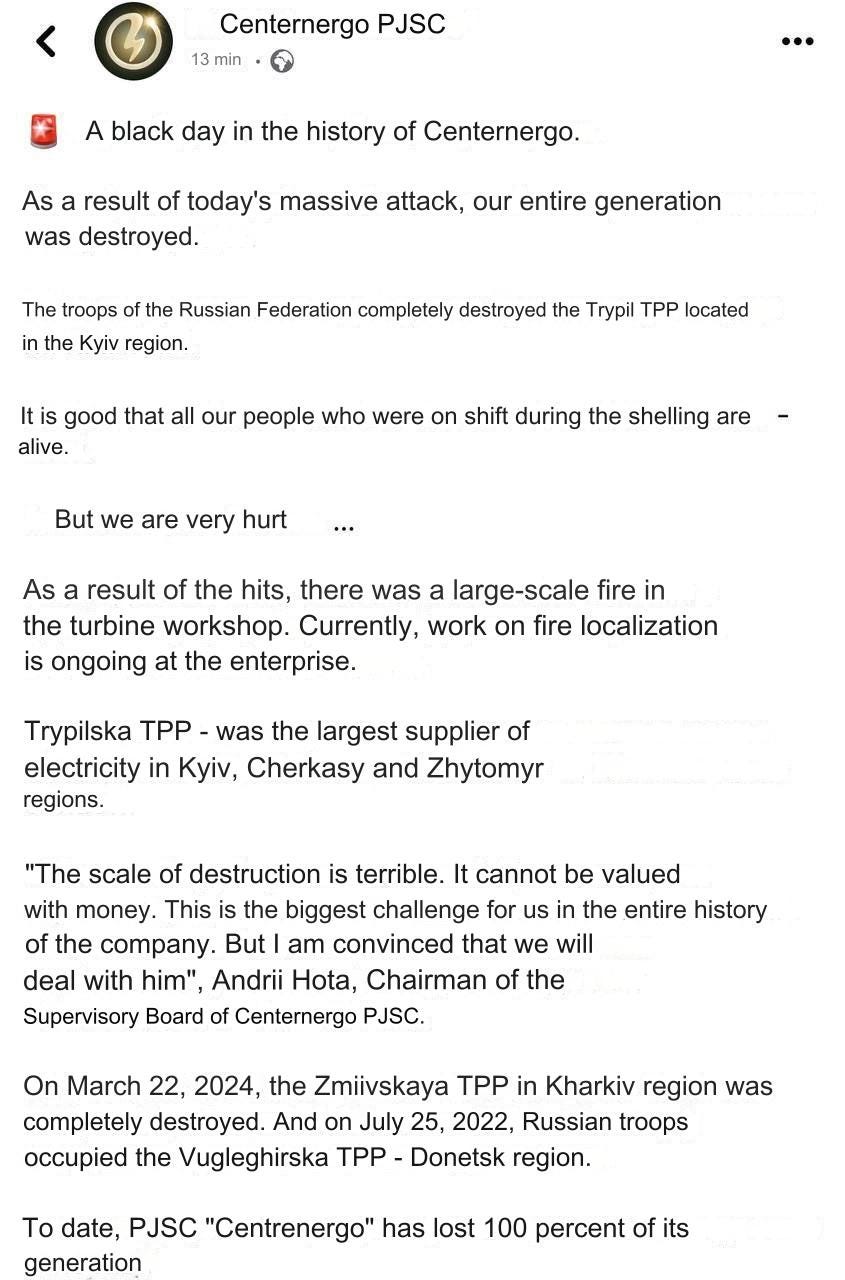
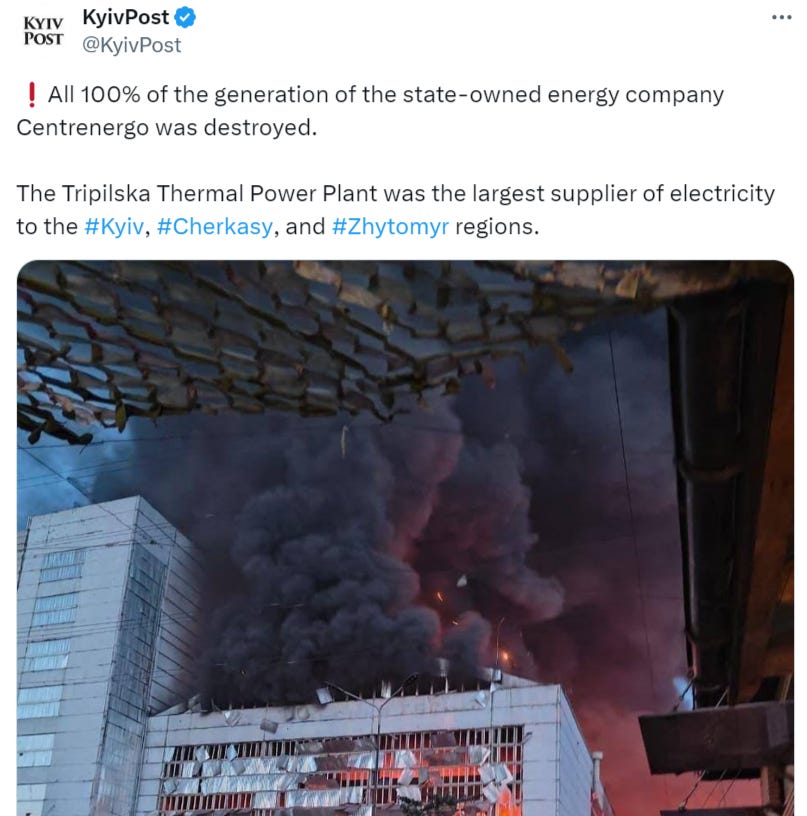
Here's a before and after:
The regime apologists are in conniptions over this:
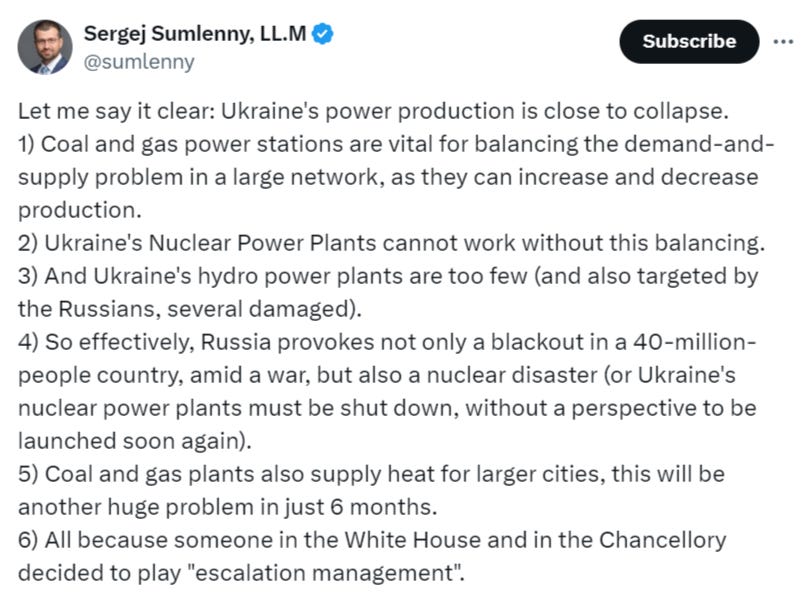


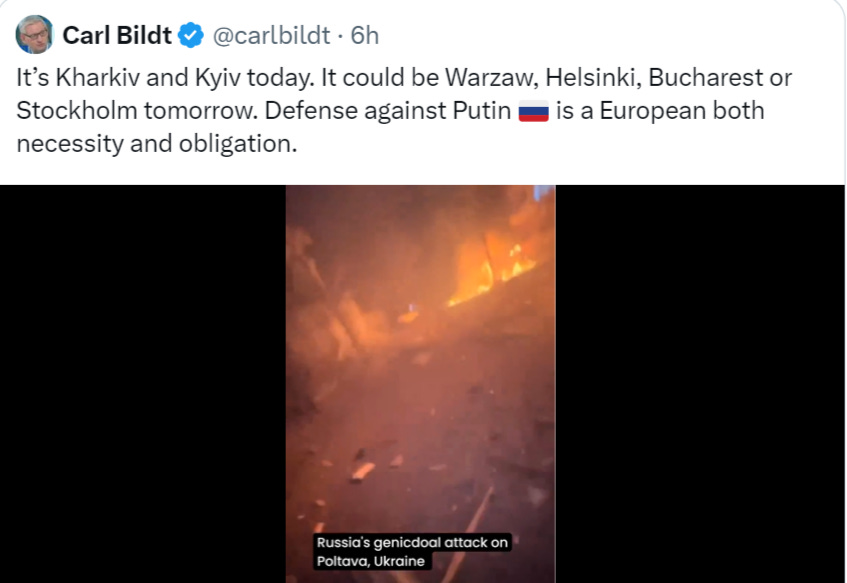
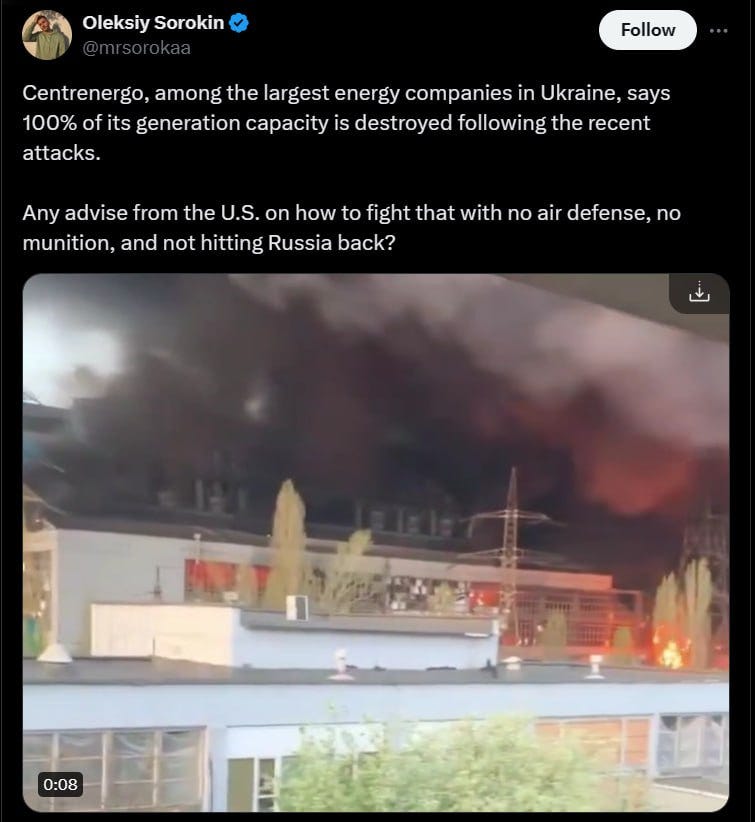
The Kharkov plant and several others were struck as well. Full report:
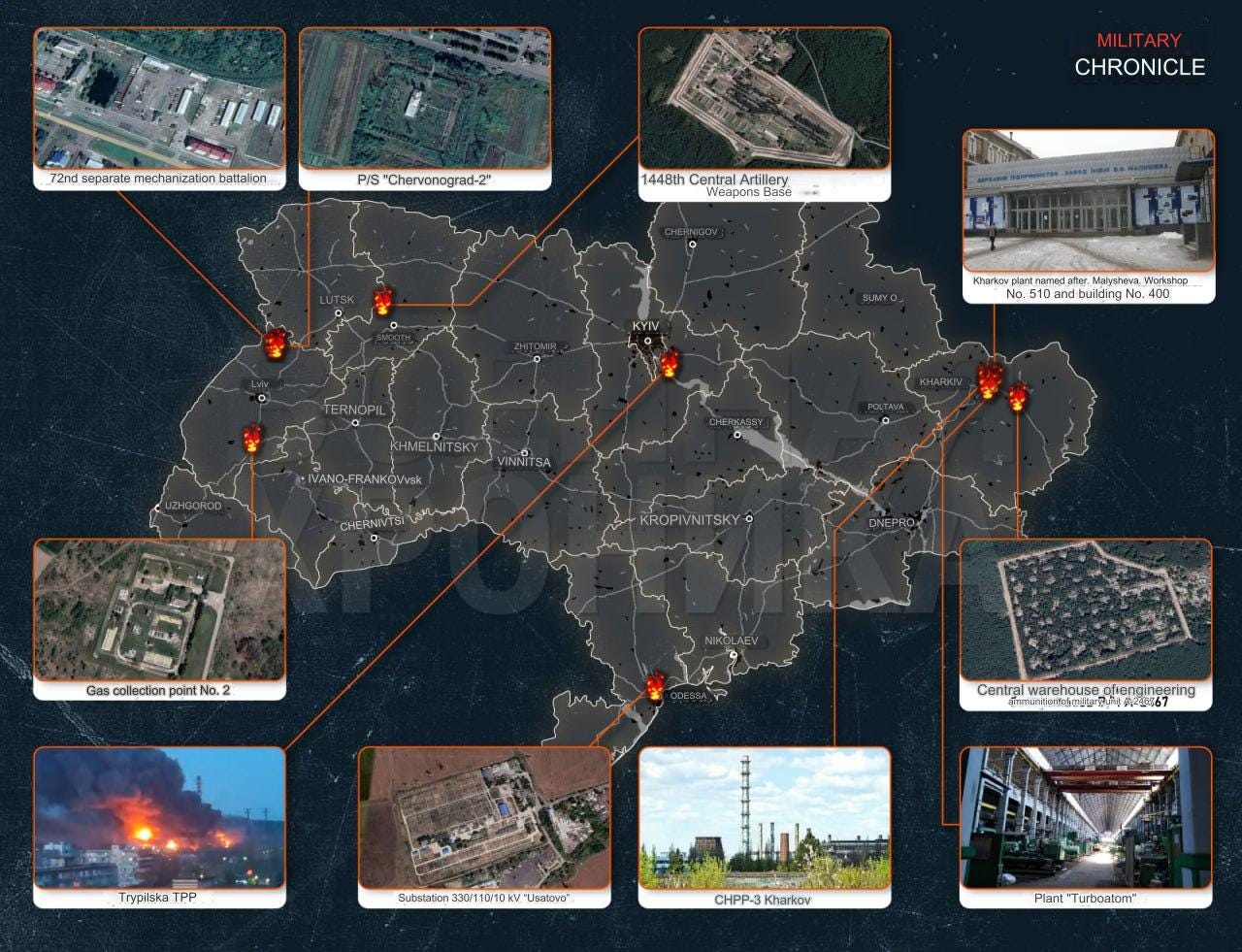
Missile attack on the territory of Ukraine on April 11: details
🔺Tu-95MS missile carriers and Geran-2 loitering ammunition hit many targets, including both military and infrastructure/energy facilities.
What objects were hit?
▪️Tripolye (Kyiv region). Trypilska Thermal Power Plant.
▪️Kharkov, CHPP-3.
▪️Kharkov, plant named after. Malysheva, workshop No. 510 and building No. 400.
▪️Chuguev (Kharkov region). Central warehouse of engineering ammunition of military unit A-2467.
▪️Kharkov, Turboatom plant. Foundry shop and KEMZ building.
▪️Stry (Lviv region), gas collection point No. 2.
▪️Susk (Rivne region). 1448th Central Artillery Weapons Base.
▪️Chervonograd (Lviv region). 72nd separate mechanization battalion of the Ukrainian Armed Forces.
▪️Chervonograd (Lviv region), substation "Chervonograd-2" 110/35/6 kV.
▪️Odessa, substation 330/110/10 kV "Usatovo".
It is noteworthy that during attacks on electricity generation facilities, eyewitnesses recorded multiple arrivals, as in the case of the recent finishing off of the Dnieper Hydroelectric Power Station. Indirectly, this indicates that the Russian Aerospace Forces have been tasked with completely destroying or critically damaging ALL large non-nuclear generation facilities on the territory of Ukraine.
Taking into account the fact that the attacks on Ukraine's energy system are systemic in nature (and some facilities, such as CHPP-3 and substations in Odessa, have been hit not for the first time), the cumulative effect of a sharp shortage of electricity generation may appear in the near future.
It's difficult to truly estimate how catastrophic the situation is becoming because every 'expert's' opinion seems to differ, and many were disappointed with last year's energy grid strikes. However, one thing that can be objectively said is Russia has demonstrably been hitting engine rooms, as we've seen in actual video from the Dnipro HES hydroelectric station. In the Centernergo note above, they also admit a 'large fire' in the 'turbine workshop'.
And by the way, for those wondering why Russia didn't begin such a devastating campaign in winter, here's what Putin is alleged to have told Lukashenko at their soiree today:
Russia did not strike Ukrainian energy sector in winter for humanitarian reasons - Vladimir Putin
Vladimir Putin, during a meeting with Lukashenko, said that Russia was forced to respond to the Ukrainian series of attacks on the energy sector. Our country did not carry out such attacks in winter for humanitarian reasons, so as not to leave hospitals and schools without electricity.
If only Netanyahu had 0.01% the compassion.
Now that things are heating up in this way, Ukraine is in a froth over those Patriot systems:
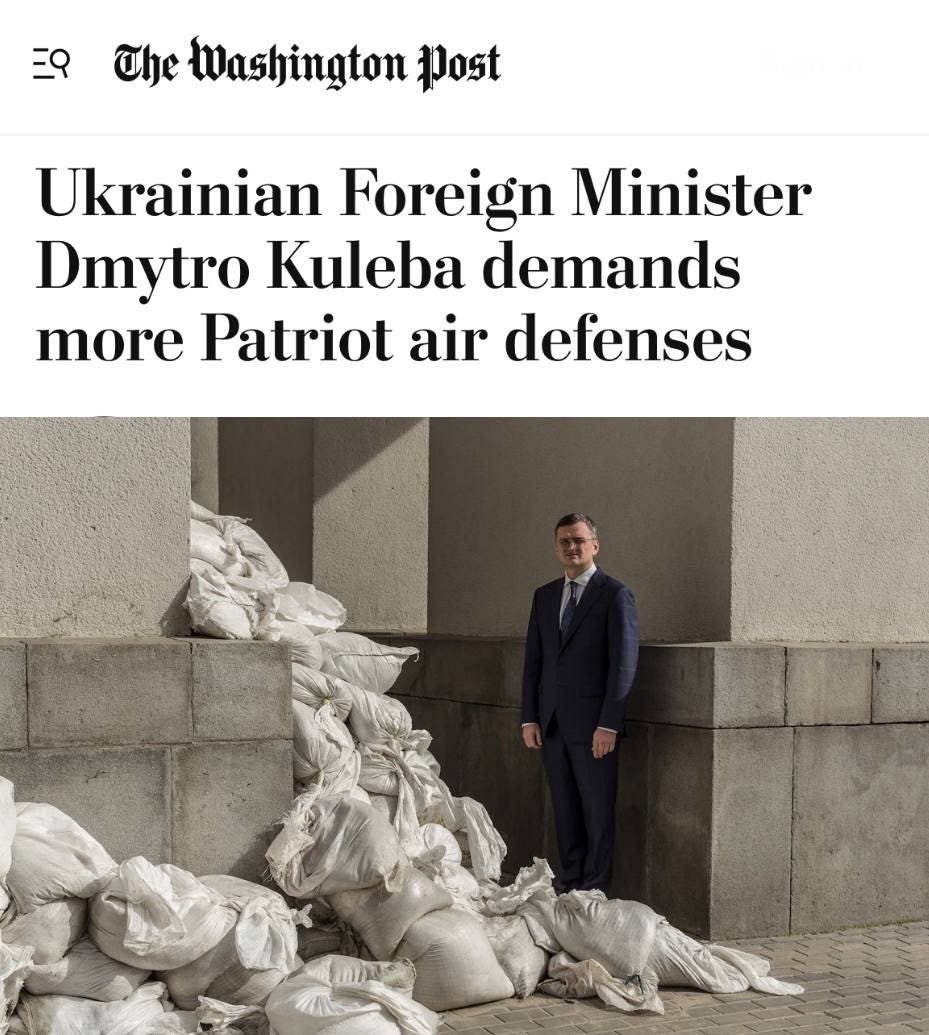
In fact, Bild's Roepcke appears to claim that Ukraine has completely run out of the flagship AD missiles:

Update:

Unfortunately, here's Germany's Annalena Baerbock's response:

If you want to see how truly desperate the situation has gotten, get a load of this unhinged rant by EU lunatic Guy Verhofstadt:
During all these urgent calls for new Patriots to be sent has anyone bothered to ask where the previously delivered Patriots have gone, by any chance? We were told they were totally unscratched after stopping all those Kinzhals. It seems perhaps that wasn't entirely accurate.
In the meantime, Russian MOD published another video of a new Ukrainian S-300 being taken out by what's likely an Iskander or Tornado-S near Odessa:
But here's where it starts getting interesting. What began as mere improbable rumor weeks ago is slowly starting to spin into a common thread of something going on in the Kharkov direction. My readers know I'm very open and honest about these things—when something feels speculative and merely 'rumor'-based, I readily say so, as I hate clickbait and groundless rumorbait just as much as you do.
But when a certain critical mass of rumors and information is reached, sometimes our ears perk up and we're forced to pay attention. Kharkov is a particularly sore spot in this regard merely because we've heard rumors for so long about all the possible "big arrow" offensives that could come down from the north. However, we must objectively admit that Russia has never gone after the Ukrainian energy infrastructure with as much commitment as is happening now.
So, to dress the table, here's head of the Kharkov administration announcing they've made their decision on evacuating nearly 50 settlements and villages in the north Kharkov region close to the Russian border:
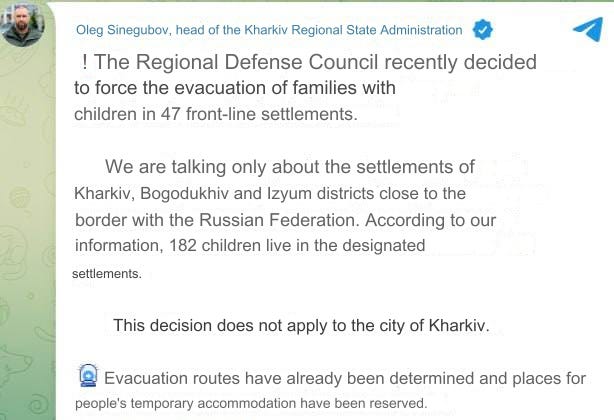
Recall the parallel thread I've been following here with many citizens beginning to slowly flee Kharkov, sensing what may be coming their way. Also recall my own personal on the ground intelligence, which I wrote about several weeks ago, that said Russian villages on the border of Sumy were being quietly evacuated, with residents being offered money by Russian authorities to leave within a two month frame.
Russian ex-general and current Duma member commented on just this:
And Ukrainian pundit Max Feigin even stated on air that Kharkov is in danger of being evacuated, and appears to state that city services are already removing secret documents—if I'm understanding correctly—so they don't fall into Russian hands in the event of Kharkov's fall:
Josep Borrell, too, seemed to signal something big being imminent:
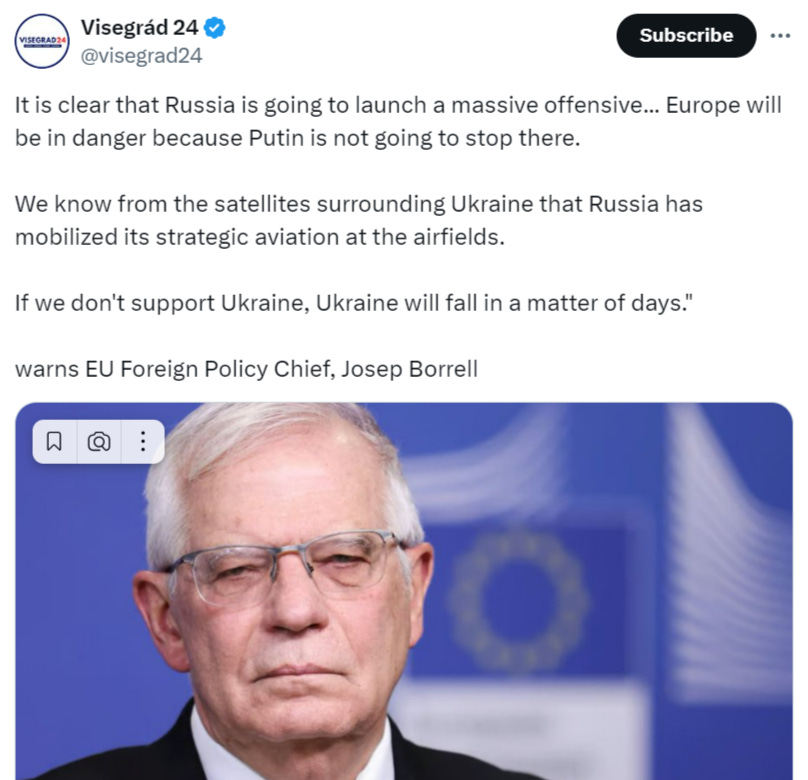
But the most eye-opening piece of new information came in the latest Economist article centered on Kharkov:
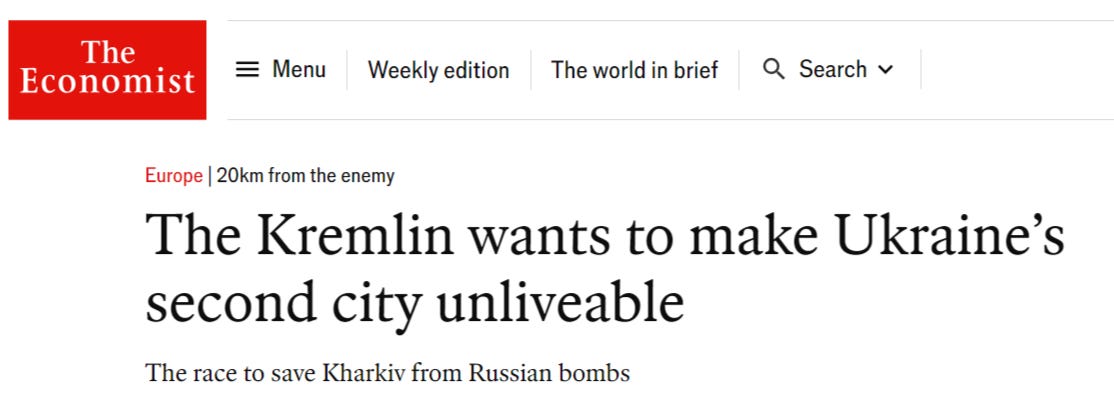
First, might I mention that the article begins with this quite thematic quote which shows the nature of what Russia's up against:

While describing the huge uptick in strikes on Ukraine's "second city", they make the first notable admission—that Russia may be looking to effectively force the city's evacuation, as reportedly opined by 'military sources' in Kiev:
The escalation had military sources in Kyiv suggesting that Russia has resolved to make the city a "grey zone", uninhabitable for civilians.
This is important because all the lead-ups I had mentioned earlier certainly appear to paint the picture of an increasing campaign to shut the city's power down and purge it of civilians in the run-up to a potential large-scale ground assault of some kind.
They appear to further admit that Russia has destroyed Patriot systems guarding Kharkov:

But then comes the big one I've been setting up:
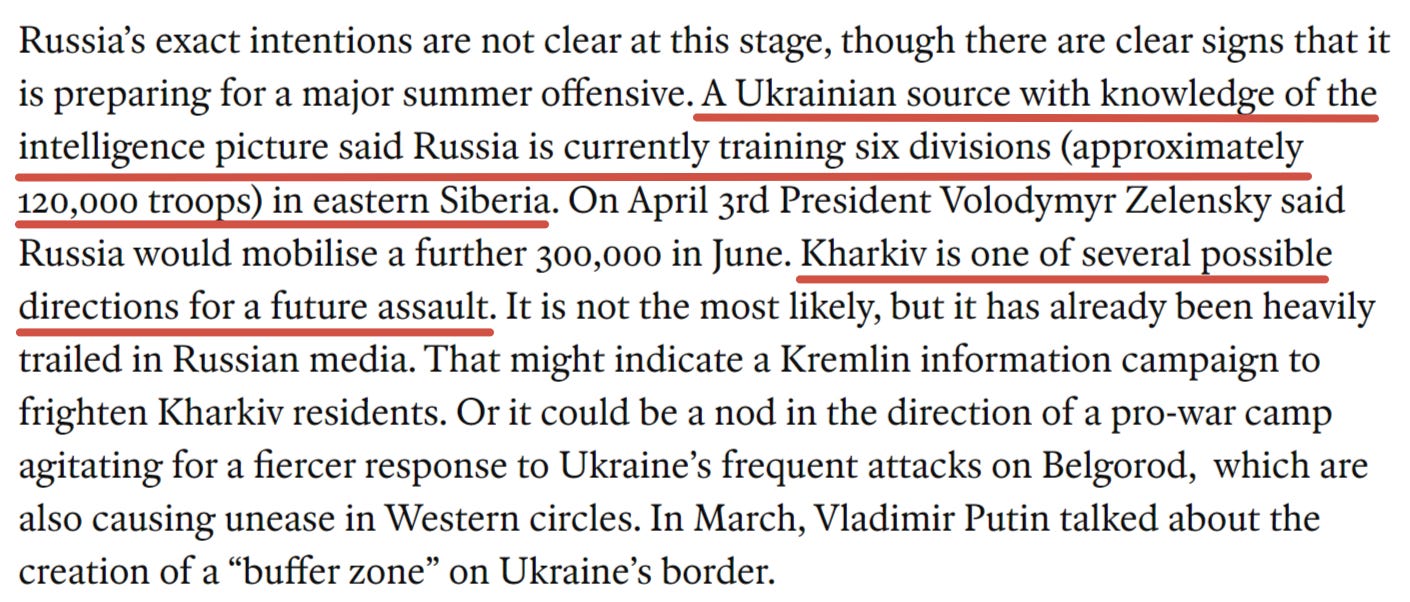
So: according to them Russia is preparing for a 'major summer offensive' and is training a massive two-corps field army of six divisions in 'eastern Siberia', according to a high-ranking Ukrainian official.
That is extremely interesting because it gives us the first potential intel on what some of Shoigu's newly constructed army corps could be doing. But more importantly, and what most will miss about this news, is the following:
The 120k number matches almost precisely with the number of troops Russia has been designating for each given sector or front. For instance, the Kupyansk-Kremennaya theater was said to have about 120-150k men. The Zaporozhye theater was said to have roughly that amount as well; and then the Donetsk also. Most of that information is compiled from various sources such as the Pentagon leaks, which gave Russian troop dispositions. But as an example, here's an older out of date graphic I happened to find in my collection just to give a rough idea:
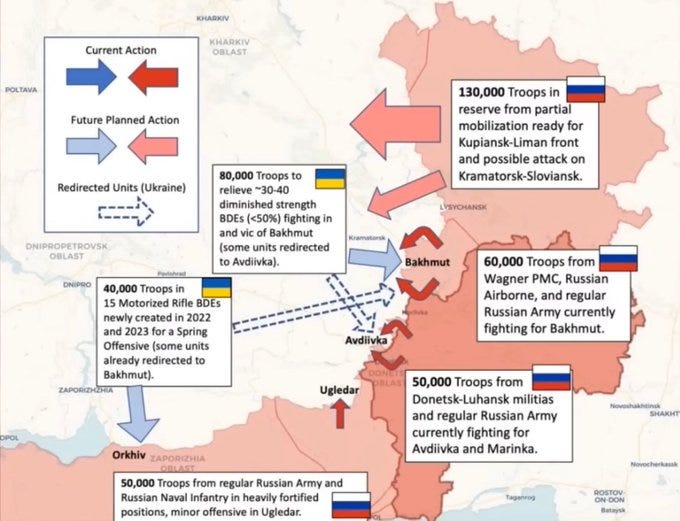
You can see the Kupyansk theater with ~130k, the center group with 50k + 60k, and Zaporozhye with 50k that later grew to much more, not to mention they don't count the nearby Kherson region's grouping.
My point is that this number roughly corresponds to what Russia has been using for an entire given major front or sector. So if we are to assume, hypothetically, that this potential new 120k man structure is being trained as one cohesive grouping—an assumption based on the fact that they're reportedly training together in the same region—under one command, ergo we can make the logical extension that this grouping is intended for a new theater. And what possible new front or theater could be opened up with such a large grouping? There is no room anywhere else to inject such a group other than into the north.
Admittedly, these are all very preliminary assumptions. No one really knows anything quite yet—the grouping could very well be meant as reserves to replace and rotate men all along the front, or the Economist's "report" could be entirely fake. There were other rumors that Russia intended to inject a huge amount of new men into the Zaporozhye front and push a large new offensive there. But it really does strike me as quite 'coincidental' and my personal suspicions are up about a potential Kharkov direction.
However, one thing I'll say is that even if that were to happen, I'm not necessarily expecting it to be any time soon, or even necessarily this year. We see now Russia moves fairly methodically at its own pace. The coming 'summer offensive' could very well be an increased tempo of actions along the current front, and the phantom 120k man group could be meant to open the Kharkov theater for winter or even spring next year, for example. After all, one thing to remember is that it takes up to a year to properly train a new recruit. It's unknown what training level all those enlistments have, which have been coming in over the past year at a rate of ~30k per month. Many of them could be in training for a long time before being allowed to see any action.
And in case anyone asks: I've been talking for a long time about Shoigu's new 500k man army meant to be a reserve against potential NATO attack. But they've already raised the full 500k, yet have not stopped recruiting. That means this year alone, they've already raised a new 50k—as of last reporting by Medvedev and Shoigu several weeks ago—and so, potentially taking 120k of the reserves for SMO action would not be a major reduction given that, at 30k per month, in only a few more months they can already replenish the total.
Russia appears to know something—here's UN rep Nebenzya's latest statement to the committee:
"Very soon, the only topic for any international meetings on Ukraine will be the unconditional surrender of the Kiev regime, I advise all of you to prepare for this" - Nebenzya

A few other interesting adjacent items:
U.S. Congressmen appeared to admit that the U.S. has thus far spent a mindblowing $300 billion on Ukraine since 2014:
The rest of the exchange is fascinating too, particularly the admission of 12 CIA bases in Ukraine.
And on the note of congressional antics, a big uproar ensued in the Ukrainian commentariat after it was finally revealed definitively by Biden's administration that they apparently do not support Ukraine hitting Russia's oil and gas infrastructure due to the fear of affecting "global energy markets":


This is clearly either not right, or misunderstood. I already explained how hitting Russian refineries doesn't really affect global oil as refineries are working to refine gasoline for Russia's domestic use. The real reason Biden's admin is worried about "global" markets is because of the implicit threat of Russia's retaliation. There are obviously backdoor deals wherein Russia has made clear its escalatory regime should Ukraine be abetted by NATO in striking certain critical 'red line' facilities.
Such escalatory measures could be the threat of Russia striking facilities in NATO countries, for instance, in a tit-for-tat measure, particularly given that British drones are now being reportedly used for some of these incursions. Or there may be more asymmetric means by which Russia has expressed its threats, such as providing various "help" to Iran and its proxies in upping the pressure on the current ongoing Red Sea situation. There is a variety of methods Russia has at its disposal to provide anything from weaponry to intel and satellite targeting data to Iran and the Houthis that could make things extremely painful for the U.S., and would certainly result in a destabilization of "global markets".
This is, as always, the one area the pro-UA punditry simply has no understanding of because it requires a subtle comprehension of the realpolitik shadow dance behind the scenes which is always the true driver of events. I've explained many times that there is a delicate balance of "understandings" in Ukraine between Russia and the West. Each has their red lines, and I've even provided proof via CIA admissions in previous articles that this is the case:
By the way, as a last point, this exchange on the topic was notable in demonstrating how utterly involved the U.S. really is in the 'proxy' conflict. Listen just to the last few seconds where the congressman literally says "we should destroy [Russia's oil & gas infrastructure]":
We, Mr. Congressman? Is it the U.S. at war here, or is that just a slip of the ol' forked tongue?
And speaking of corrupt congresses, the Ukrainian one reportedly finally approved a revamped mobilization bill to much furor and tooth-gnashing:

However, it still needs Zelensky's ratification to fully pass.
There has been such a tumult and controversy that it would take a separate article to enumerate it all. But the biggest sticking point was in regard to the removal of a provision that allowed Ukrainian servicemen to be demobilized after 3 years of fighting. Now, it appears, mobilization is 'permanent'—i.e. until death.
Then there was a video posted by one of the Rada reps who showed that only 40-some odd members even attended, out of the 400+ quorum:
❗️Breaking news from the Crazy House 404🚨
⚡️The Verkhovna Rada adopts the most anti-people, criminal law in the history of Ukraine. Of the required 450 people's deputies, there are about 45 people in the Rada.
⚡️But the most interesting thing is that this does not prevent them from making the necessary amendments to preserve their seats
I don't quite know what to make of it other than to remind you the several reports I've made in the past about how the Rada has been deteriorating, with 'rumors' claiming it has devolved into total chaos with many members attempting to flee the country and no longer even attending the sessions. This appears one of the first visual confirmations of that.
All the while, things get worse:
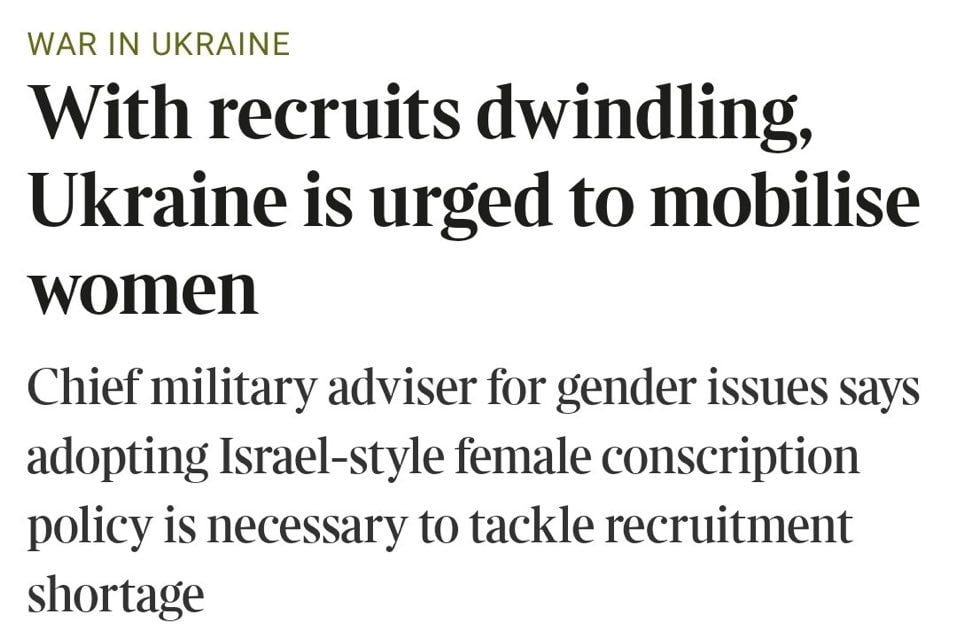
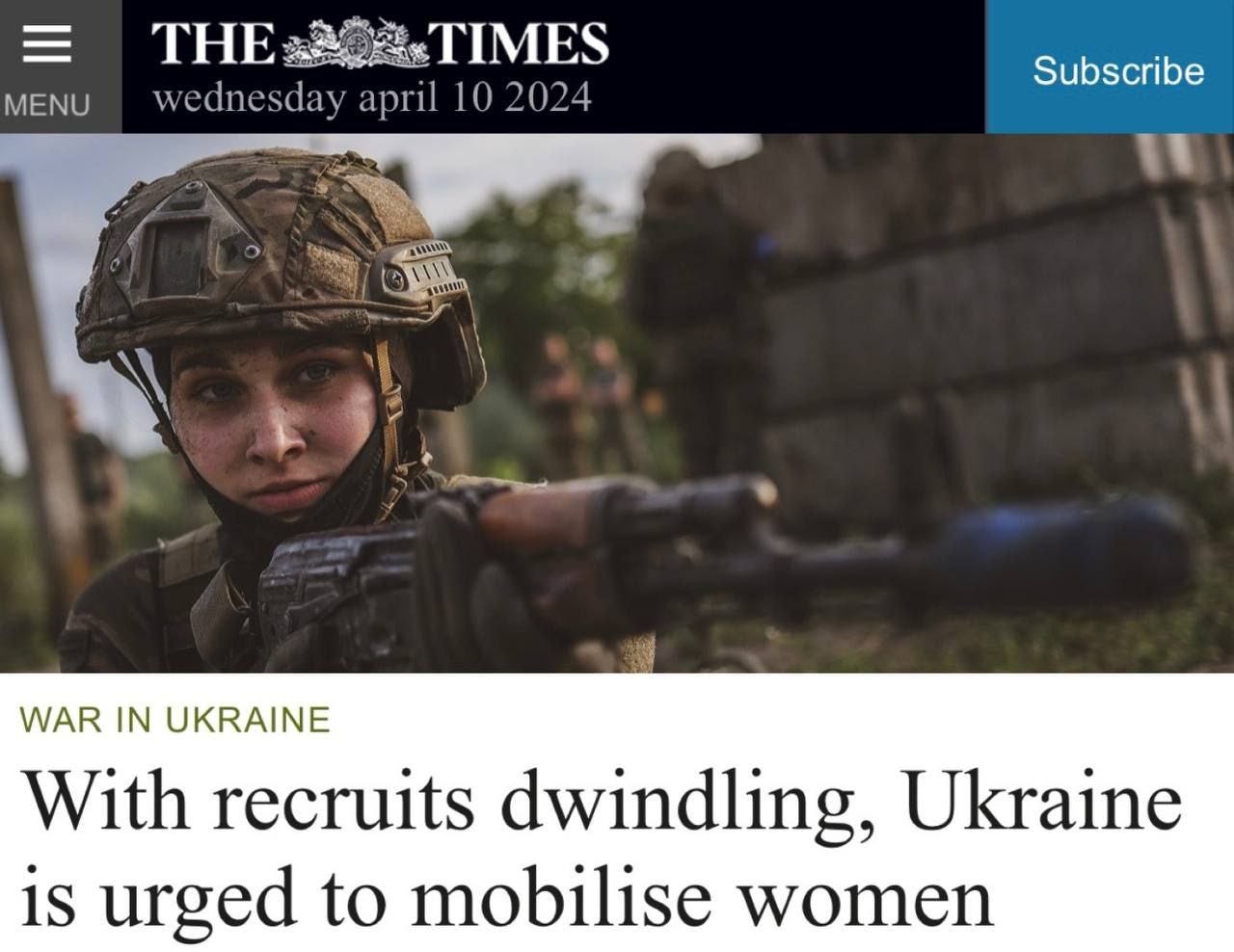
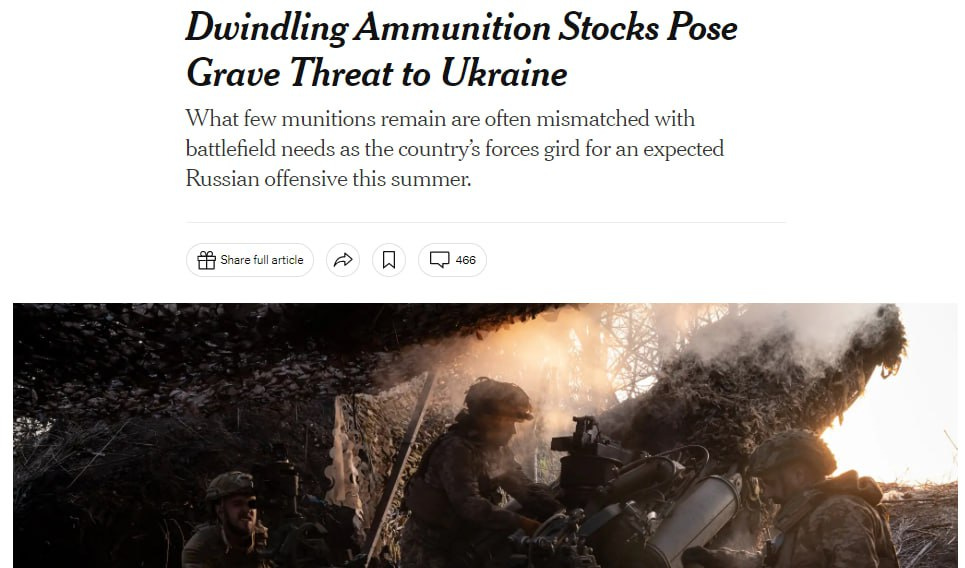
And no single object has generated greater chatter amplitude than Russia's glide-bombs, which are becoming an utterly insurmountable problem for the AFU:
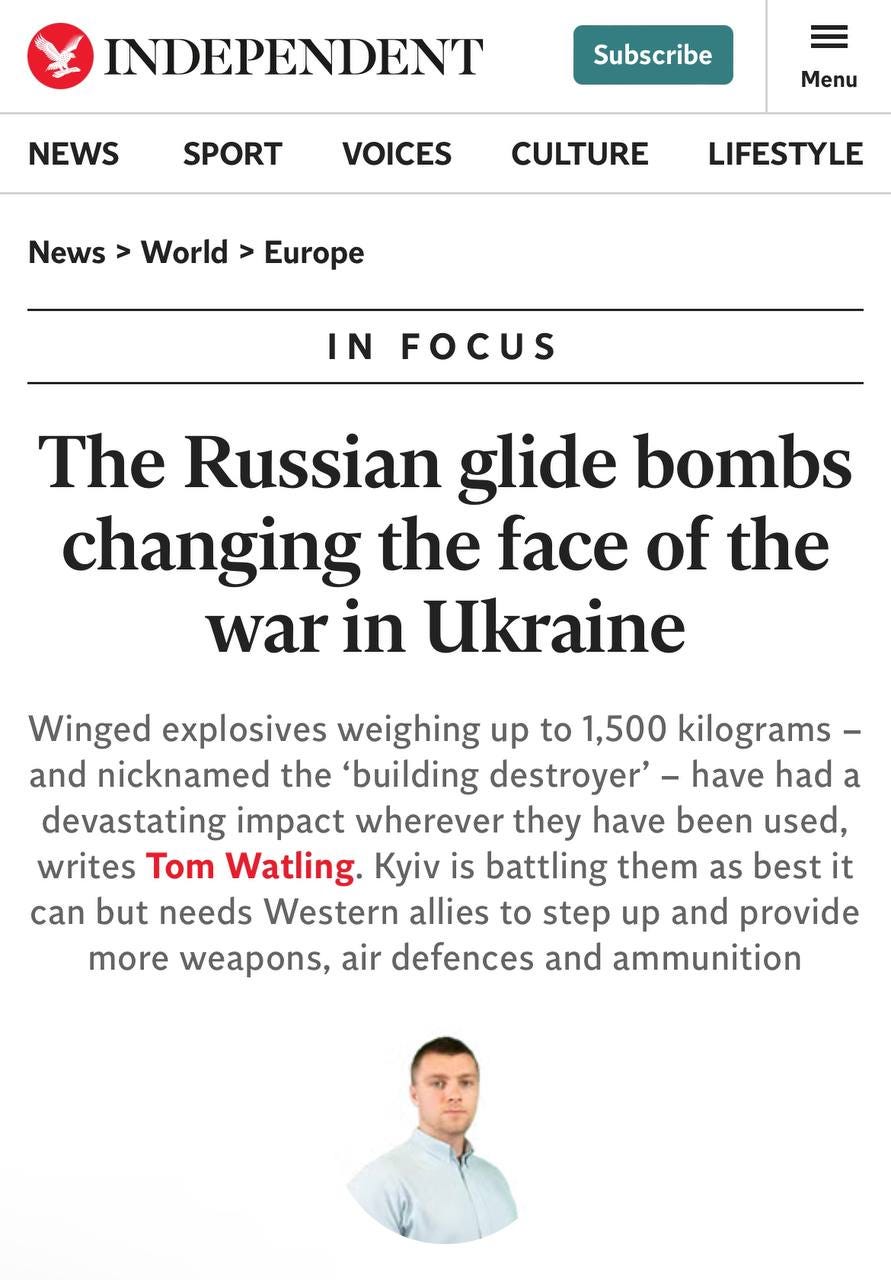


Just as the Lancet was the star of last year's show, it seems now the glide-bomb has moved into the spotlight. The reason is simple: Ukraine hardly uses armor or vehicles anymore, given that they've bunkered up and gone fully on the defensive. Thus there's not much for Lancets to do at the moment. But glide-bombs are precisely the remedy for Ukraine's defensive, trench-heavy posture, as they shred trenches and cave them in even from non-direct impacts. And given Ukraine's frontline air defense depletion, Russian fighter-bombers are able to operate with full impunity, launching the glide-bombs at any and all times and directions.
I wrote this on X, but I'll say it here again as a final point. Now that Russia is mass-producing heavy glide-bombs, there is almost no possible way for Ukraine to hold ground. Only in places like Avdeevka, with massive fortified underground structures, were they able to withstand the onslaught. But nearly everywhere else that's left, such as Chasov-Yar now, glide-bombs will wreck top-ground fortifications and trenches, crumpling them even from some distance away. Ukrainians have reported that the Fab-500 rips doors off hinges from 1km away. There is simply no way to hold trenches when the Fabs start arriving on top of them. And as of this writing, there's said to be a massive Kab/Fab assault on Chasov Yar ongoing. Here's what it looks like over the city:
A Ukrainian military account is 'shocked' at the speed with which Russian forces are advancing into Chasov Yar, and there's even rumors that Azov Brigade again 'refused' orders to fight there:
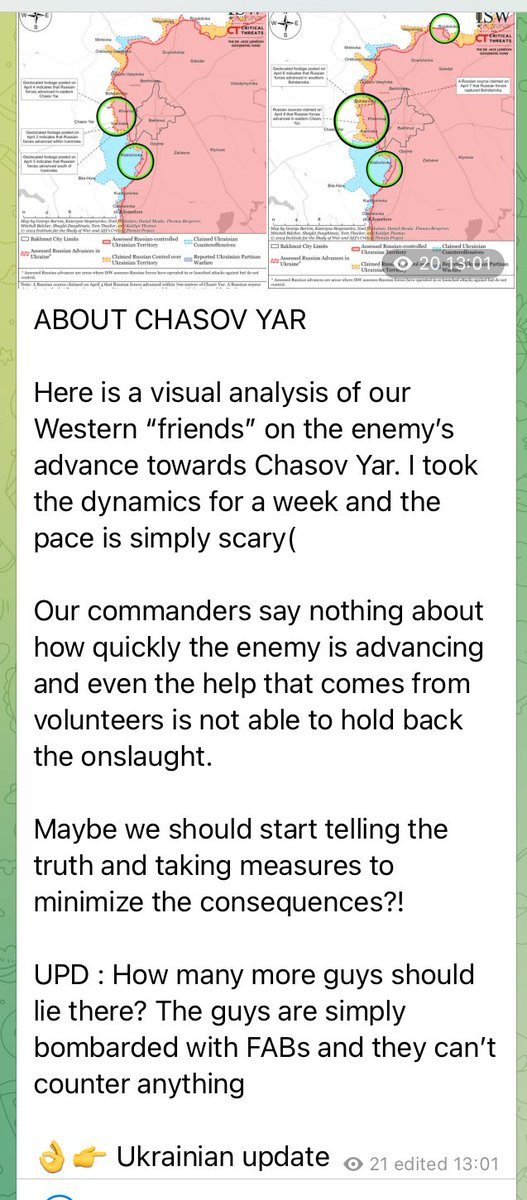
And another from the AFU 46th Brigade. Read carefully about what glide-bomb Fabs are doing:
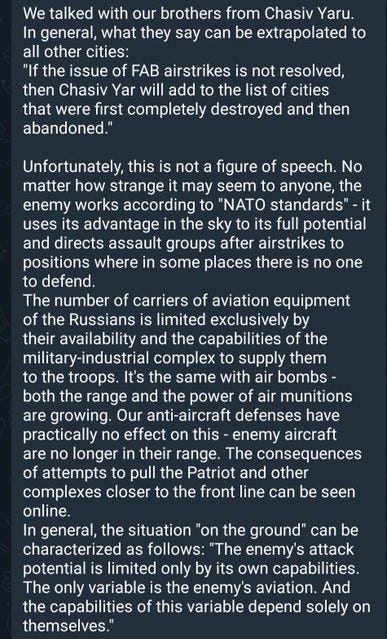
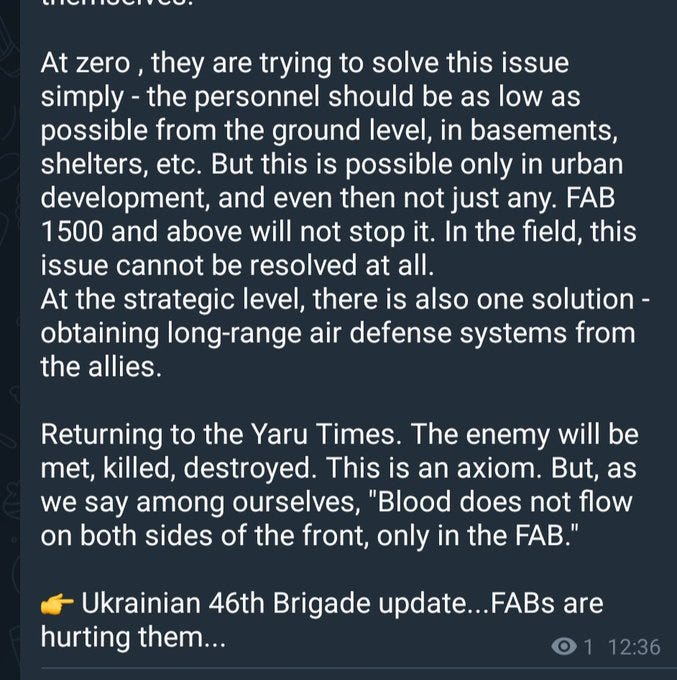
Rezident UA channel corroborates this:
#Inside
Our source in the General Staff said that the Armed Forces cannot build adequate defense against the new Russian attack tactics. In all directions, it happens the same way, first 70-90 KABs are dropped to our positions, and then small assault groups come along with artillery positions, which calmly go to the scorched positions of the Armed Forces. The only chance to keep the front-fill positions with tanks at two or three rashes a day, but this method simply leaks out our forces.
Well, what else can we say?

Last few sundry items:
The Russian UGV ground bots first seen recently operating on assault near Berdychi have finally been shown more closely:
The first footage of the Courier ("Курьер") #UGV tests at the training ground.
These drones have already been tested in real combat operations in the Avdeevka area (versions with AGS-17 and 12.7mm machine guns were used), showing good practical results.
For the first time presented the product's specifications, used a wide range of weapons: AGS-17, AGS-30, RPO, RPG, ATGM, 12.7mm machine guns, anti-tank mines, EW systems. And the matter is not limited to this.
In the foreseeable future, drones of this type will take their place on the battlefield, just as air and sea drones did before our eyes.
The project is supported by Boris Rozhin and Chingis Dambiev.
Further robotisation of warfare seems inevitable.
Not to mention a host of others already being used in the field:
Next:
Micron proudly boasted about some kind of new 'dynamic' surging through Europe that he initiated:
In reality, behind his back, French newspapers report the opposite. From Le Monde:
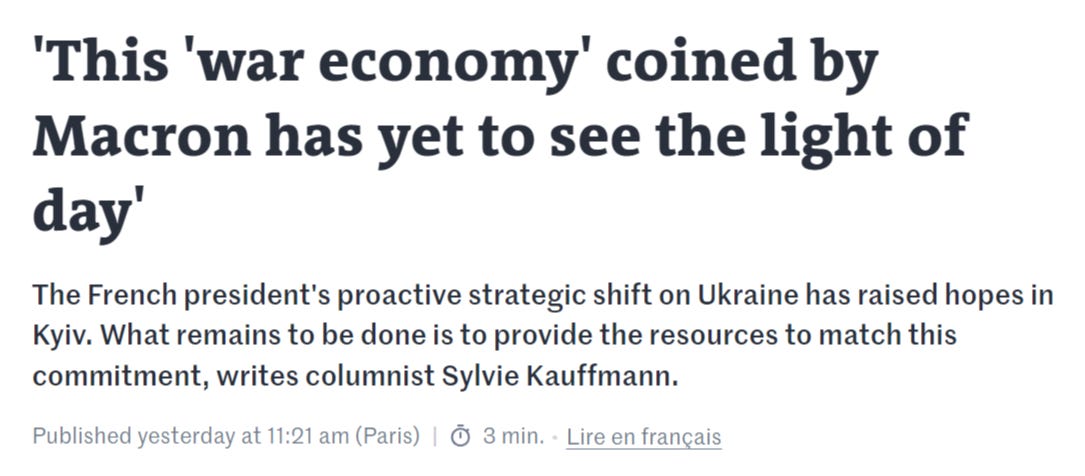
This was followed by a British former Lieutenant-Colonel Glen Grant stating that if France sends troops to Ukraine, then so must the UK, lest it become a 'lost nation' (as if it weren't one already):
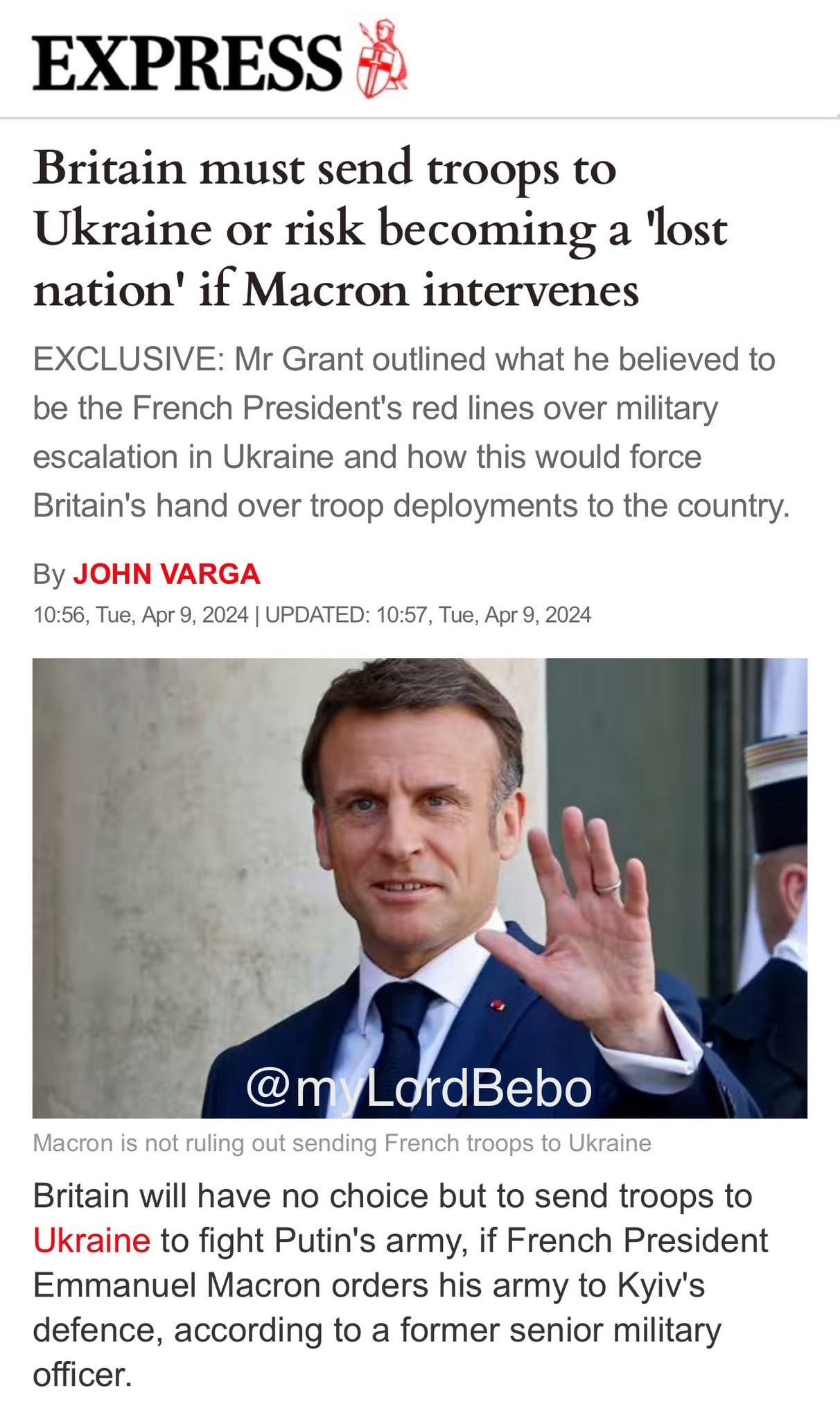
Poor Grant must have forgotten this:
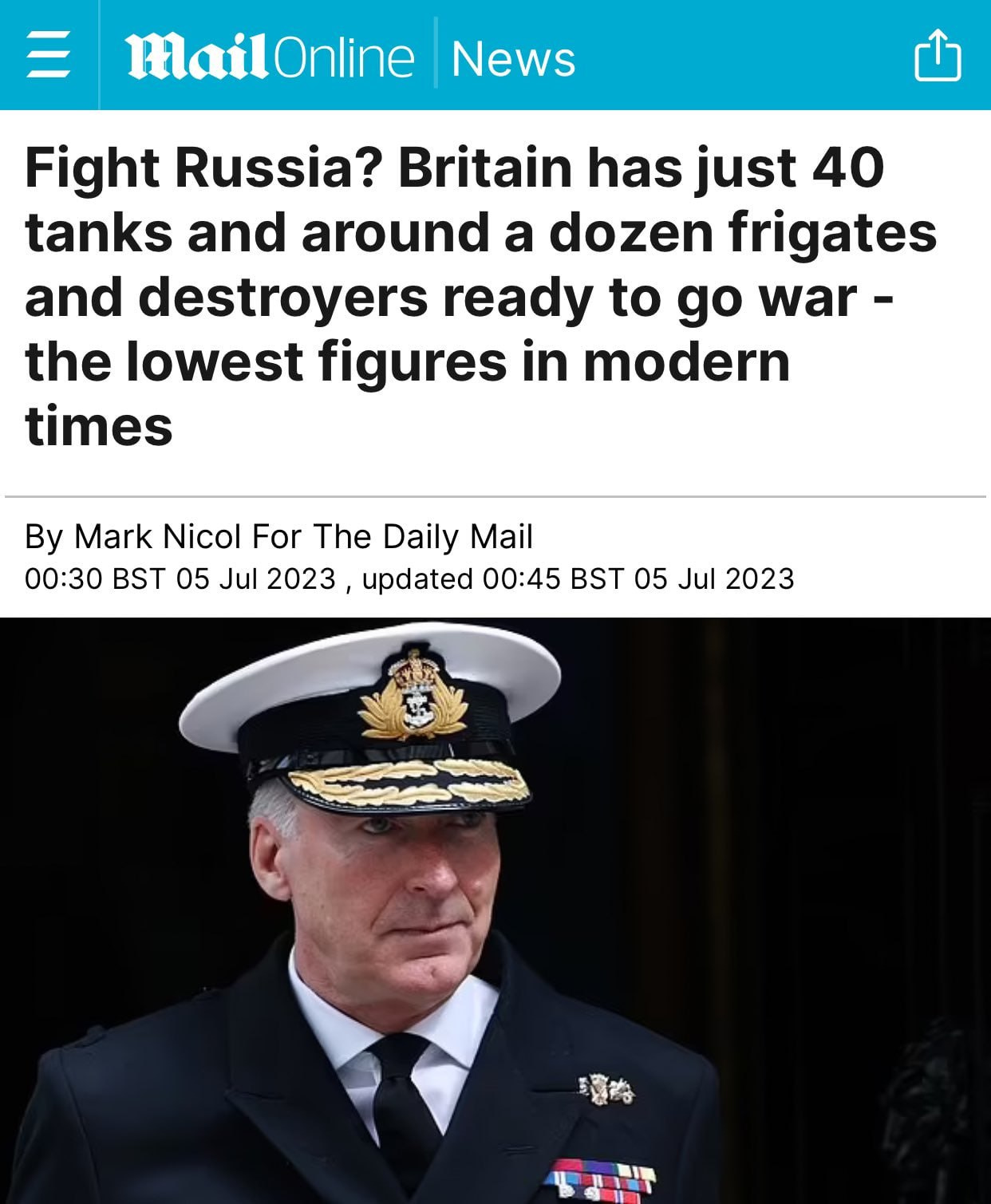
Meanwhile:

Lastly, for those interested, here's an illuminating new episode from Uralvagonzavod's famed 130th workshop now mass producing the T-90M 'Proryv' ("Breakthrough") tanks.
Your support is invaluable. If you enjoyed the read, I would greatly appreciate if you subscribed to a monthly/yearly pledge to support my work, so that I may continue providing you with detailed, incisive reports like this one.
Alternatively, you can tip here: Tip Jar
9 Apr 2024 | 4:18 am
8. Yellen Dispatched to Beg China for Face-Saving Slowdown
The U.S.' growing urgency in 'containing' China's development was thrown in sharp relief this week as Janet Yellen arrived in Beijing for what turned out to be an execrable beggar's tour. Just days prior to her arrival, she had buzzed the punditry with her historically memorable exclamation that China was now operating at "overcapacity"(!!).
What is overcapacity, you ask? It's a new word for me, too—so let's consult the dictionary together:
overcapacity
noun
o·ver·ca·pac·i·ty: ō′vər-kə-ˈpa-sə-tē
1: When an insolent upstart nation's surging economic activity totally humiliates the reigning hegemon's own faltering economy, causing the many expensive dentures and porcelain veneers of the ruling class gerontocracy to rattle and grate with moral outrage and jealousy.1b: An undesirable situation causing Janet Yellen and Nancy Pelosi's stock portfolio to droop like a pair of botox-sapped jowls.
Granted…my dictionary might be slightly different to yours, I have a rare edition. That said, are we on the same page? Good.
The above definition may be missing in the new official regime argot pamphlet, but it's safe to say the inept leaders of the U.S. are down to making up creative new euphemisms for describing China's total undressing and upending of the economic order.
But if you were skeptical about the meaning behind Yellen's risible "overcapacity" solecism, her speech from inside of China confirms precisely what's on the regime's mind:
"China is now simply too large for the rest of the world to absorb this enormous capacity. Actions taken by the PRC today can shift world prices…."
And the bombshell:
"When the global market is flooded with cheap Chinese goods, the viability of American firms is put into question."
Well, I'll say.
The important distinction to note in the above statement is that for a long time the 'cheap' moniker used to describe Chinese goods often underhandedly referred to their quality, in the secondary definitional sense. Here, Yellen is referring to cheap as in price: the distinction is significant because it's referential to the fact that Chinese manufacturing processes have simply far exceeded the efficiency in the West, as recently highlighted by videos of the Xiaomi e-car factory with its own native Giga Press that's claimed to be able to pump out a car every 17 seconds.
The fact of the matter is, China is simply leaping ahead of the decrepit, deteriorating U.S. by every measure and the panicked elites have sent Yellen to beg China to "slow down" and not embarrass them on the world stage.
How is China doing this? Let's run through a few of the most poignant ways:
[1]First and foremost, it's become almost a passe bromide to observe: "The U.S. funds wars, while China funds development." But it really is true. Think about this for a moment:

The above is factual: Esquire reported that a Brown University investigation found the U.S. has spent an ineffable $14T on wars since 9/11:
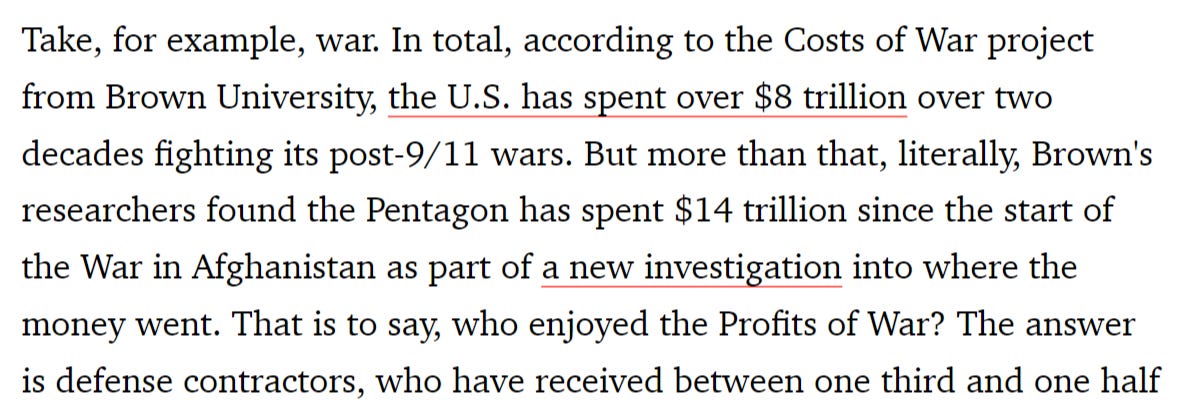
And yes, the current U.S. debt is a massive $34T. That means quite literally almost half of the entire current U.S. debt was blown on endless, mindless, genocidal wars in the Middle East.
The U.S. has wasted its entire blood and treasure on war. Imagine what the U.S. could have built with $14 trillion dollars? Where the U.S. could have been in relation to China for that amount? As someone else noted, the U.S. could have very well built its own "one belt and road" project for that money, connecting the world and reaping untold benefits.
China hasn't spent a cent on war, and puts everything right back into economic development and wellbeing for its own people.
China is winning lion's share of construction projects in Africa
Chinese companies accounted for 31% of African infrastructure contracts valued at US$50 million or more in 2022, compared with 12% for Western firms, according to a new study.
It is worth to be noted that in the 1990s, about eight out of 10 contracts to build infrastructure in Africa were won by Western companies.
The illustrative statistics for this are endless:

What makes this historic malappropriation of American funds most tragic is that none of it came at the benefit of American people. The entire operation was carried out by an ethnic cabal within the U.S. government with loyalties only to Israel, and no one else. I'm speaking of course of the PNAC clan, who masterminded the entire breadth of the 21st century wars which have engulfed America in wretched shame and misery, irreversibly gutting the country and squandering its global standing. These wars had nothing whatsoever to do with America's national interests or security, and have done naught but make Americans less safe and the entire world more dangerous and unstable.
China doesn't have this problem: there is no inimical 'out' group parasitizing their country's leadership, literally assassinating (JFK) and blackmailing their presidents (Clinton). China is therefore able to focus on the interests of its own people.
And yes, for those wondering, it's now fairly proven that Lewinsky was a Mossad honeytrap used to blackmail Clinton in assenting to various Israeli demands vis-a-vis the Oslo Accords, Wye River Memorandum, etc.


The fact is, Israel is a destructive parasite sucking the lifeblood out of America, causing the host to wage unnecessary wars on its behalf which have utterly removed every advantageous and competitive edge the country might have had over its Chinese 'rival'.
[2]As a corollary of the above, beyond just the simple kinetic nature of the profligately wasteful wars, America wastes an exorbitant amount of money just on maintenance and upkeep of its global hegemony. The reason is, it costs a lot of 'enforcement' money to strongarm vassals who hate you into compliance.
China doesn't form vassals, it forms partners. That means it spends comparatively far less spreading its influence because that influence has compounding abilities owing to the fair bilateral nature of China's arrangements. The U.S. has to spend comparatively inordinate amounts of blood and treasure to maintain the same level of 'influence' because that 'influence' is totally artificial, confected out of a poisonous mixture of fear, strong-arming tactics, economic terrorism that leads to blowback which hurts the U.S. economy, etc. In short, it is mafia tactics versus real business partnerships.
One big difference between China and the U.S. is that China is open to sharing the earth, willing to co-prosper with the U.S. Conversely, the U.S. is unwilling to abdicate its global domination:

The above was highlighted by Graham Allison, coiner of the Thucydides Trap idiom in relation to U.S./China. The Thucydides Trap, as some may know, describes a situation where an emerging power begins to displace the incumbent global power, and how historically this almost always leads to major war. To popularize the theory apropos U.S./China, Graham Allison used the historical example of the Peloponnesian war, where a cagey Sparta was forced to take on the rising power of Athens.
Allison was recently invited by President Xi to a forum for U.S. business leaders where Xi told him directly:

Contrast President Xi's magnanimous statements with those of the seething, guilt-wracked, bloodthirstily conniving Western 'executives'. In fact, Xi called for more exchanges between China and the U.S. in order to entwine the two countries in mutual understanding, to avoid the Thucydides Trap:
This is the enduring image of what global leadership truly looks like, and the principles it embodies.
Meanwhile, when one thinks of America's progressive decline, the one enduring image that comes to mind is of a bitterly frightened but dangerous, beady-eyed cornered rodent, conspiring on how to inflict damage and suffering onto the world in order to mask its own downfall.

The U.S. government does a grave disservice to its own development by cooking all of its economic books. Every country does it at times to some degree—and going by U.S.' notoriously frequent accusations of China in this regard, one would think China to be the most flagrant violator—but in fact, no one does this more than the current U.S. regime.
The recent "jobs" report touted as a major victory by the Biden administration was a disgraceful travesty. The admin touted major jobs figures:

But it turned out every job was either part time, a federal job, or went to illegals:


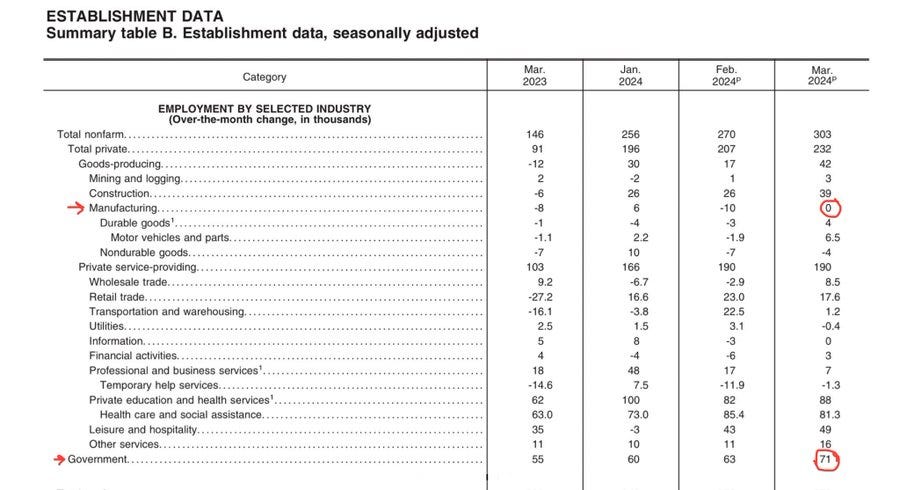
In reality, the U.S. economy is in atrocious shape with sky-high inflation.
Here's Jesse Watters revealing that:
"The Fed chair just confessed that #Bidenomics is just a migrant job fair. There is actually a million less American citizens working today than there were in 2020."
Biden created 5 million migrant jobs! So don't be fooled by his propaganda that's spewed by the liberal machine. YOU DONT MATTER!
The data is cooked even more when comparing to China's economic situation. As the following Tweeter explains:
While Chinese INCOMES are below American INCOMES, Chinese have much higher NET WORTH than Americans. How? They own apartments at a much higher rate and with a lot more equity than Americans. The MEAN and MEDIAN insight is even more beautiful. This graphic here is pretty much the only thing you need to understand about the difference between the economies of China and United States. But you really need to understand it and you need to have a deep understanding of what it means.

U.S. home ownership is on a precipitous decline toward the low ~60s%, while China now has over 90% home ownership rate:

The above naturally springs the question of how China is able to do these things while the U.S. cannot. One of the answers comes by way of this fascinating explainer which shows that, contrary to the West's depiction of China as some kind of rigidly authoritarian system, forward-looking President Xi is actually utilizing very cutting edge economic experimentation models to keep the Chinese economy as innovative, limber, and supple as possible.
In short, a deep study of thousands of official documents shows a huge upswing in language promoting economic experimentation in the directives issued under Xi's government.

This is further compounded by the most important point of all: that under President Xi, China has embarked on a meticulous plan of curbing financialization and speculation of the 'Western model' in its economy. This is where it starts getting important so buckle up.
A good breakdown of that is given here by Chinese academic Thomas Hon Wing Polin, who pulls from this recent article:

The article gives a brief history of financialization, from the Genoese bankers to modern times, observing the historical cycles that have precipitated America's current deterioration:
Observers of the current American hegemony will recognize the transformation of the global system to suit American interests. The maintenance of an ideologically charged 'rules-based' order – ostensibly for the benefit of everyone – fits neatly into the category of conflation of national and international interests. Meanwhile, the previous hegemon, the British, had their own version that incorporated both free-trade policies and a matching ideology that emphasized the wealth of nations over national sovereignty.
In describing the cycle of financialization and its connection to the death of empires, the article notes about Britain:
For example, the incumbent hegemon at the time, Great Britain, was the country hardest hit by the so-called Long Depression of 1873-1896, a prolonged period of malaise that saw Britain's industrial growth decelerate and its economic standing diminished. Arrighi identifies this as the 'signal crisis' – the point in the cycle where productive vigor is lost and financialization sets in.
And yet, as Arrighi quotes David Landes' 1969 book 'The Unbound Prometheus,' "as if by magic, the wheel turned." In the last years of the century, business suddenly improved and profits rose. "Confidence returned—not the spotty, evanescent confidence of the brief booms that had punctuated the gloom of the preceding decades, but a general euphoria such as had not prevailed since…the early 1870s….In all of western Europe, these years live on in memory as the good old days—the Edwardian era, la belle époque." Everything seemed right again.
However, there is nothing magical about the sudden restoration of profits, Arrighi explains. What happened is that "as its industrial supremacy waned, its finance triumphed and its services as shipper, trader, insurance broker and intermediary in the world's system of payments became more indispensable than ever."
In short: as an empire dies, loses its industrial and manufacturing capacity, finance takes over, pumping up huge bubbles of phony speculative money that gives the brief appearance of economic prosperity—for a time. This is what's currently happening in the U.S., as it drowns in its self-created agony of debt, misery, corruption, and global destabilization.
One thing to note—if you'll allow me this not-so-brief aside—is that the entire Western system is based on the actual institutionalized economic sabotage and subversion of the developing world. Books like the following go into some of it:

The rise of the underground economy: The book reveals how the United States' underground economy evolved parallel to its legitimate economy, exploiting loopholes and leveraging secrecy jurisdictions to facilitate illegal activities such as drug trafficking, arms smuggling, and money laundering.
The "dark" side of globalization: Mills challenges the prevailing narrative of globalization as a force for progress, highlighting how it has facilitated the expansion of illicit networks across borders and allowed criminal enterprises to flourish.
The complicity of financial institutions: The author examines the role played by major financial institutions in enabling money laundering and illicit transactions. He underlines the need for stronger regulations and accountability to prevent banks from becoming facilitators of underground activities.
I challenge you to read notes on the National Memorandum 200, if you haven't heard of it before:
https://en.wikipedia.org/wiki/National_Security_Study_Memorandum_200
Incidentally, John Michael Greer just penned a new column (thanks to whoever shouted out this blog in the comments!) about the neologism he coined: Lenocracy, which derives from the Latin "leno" for pimp; i.e. a government run by pimps, or pimpocracy.
His definition of pimps in this case is that of middlemen who are the classic rent-seeking leaches—or rentier class—which extract economic rent without adding any value to the economy—all Michael Hudson territory, for those in the know.
Bear with me, I promise this will all tie together into an overall picture of China.
JMG characterizes the 'pimps' as basically all the unelected, bureaucratic, red-tape-weaving, blood-sucking monetary vultures killing growth and livelihoods by each taking their nibbles in turn from the carcass of the working class, exacting some small transactional charge at every step of routine business in Western nations, particularly the U.S. This has served to suffocate the average small business or entrepreneurship in general, not counting the big ticket venture capitalists who are mostly offshoots of global financial and investment firms. This is part and parcel to the lethal 'financialization' of the country that has spelled doom for its future.
Now, getting back to Thomas Hon Wing Polin's precis, and how it relates to this. He notes:
It is noteworthy that the CPC leadership recently launched a major drive to build China into a "financial great power," with a financial system "based on the real economy." That would be the antithesis to Anglo-American-style economic financialization.
He pulls from the following article:

Read that last part: "…set pure profit-making aside."
Pay attention to this big kicker:
Beijing is powering ahead with the epic project.
"China's 461-trillion-yuan (US$63.7 trillion) financial industry and its regulatory regime will be heavily prioritised in a broad economic reshuffle engendered by the country's top leadership, with the sector remoulded to serve national objectives like sustainable growth and advancement in the global tech race.
Are you beginning to get it yet? If not, here's the crowning finial:
Specifically, it vowed to rein in Wall Street-style practices seen as unsustainable and crisis-prone, and move toward functionality as an overriding value for the financial system rather than profitability.
It also mandated that Chinese financial institutions have "higher efficiency" than their peers in the capitalist world and provide inclusive, accessible services in the pursuit of common prosperity.
"Like it or not, banks and other institutions on the supply side should expect top-down directives and overhauls cued by the CFC," said Zhu Tian, a professor with the China Europe International Business School (CEIBS).

And there it is. In essence: China is creating a revolution, striking out a new path of finance which steers away from the wild excesses of the West into a bold new direction. Finance to benefit the real economy, the common man, the people. This is what the fig leaf of Rothschild-pushed 'stakeholder capitalism' is meant to be, or better yet: pretends to be.
It's hard not to wax poetic on these developments, because they are truly groundbreaking. China is paving a new path forward for the entire world. The Chinese banking industry is now by far the largest on earth and President Xi has wisely put his foot down with a bold edict: we will not follow the path of destruction chosen by the West, but rather will set our own new path.
This is an iconoclastic, paradigm-breaking revolution which ends six centuries of Old Nobility world finance dominion, traced from the Spanish-Crown-allied Genoese bankers, to the Dutch then English banking system which now continues to enslave the world, and is referred to by a variety of names in the dissident sphere: from Hydra, to Leviathan, to Cthulu, to simply: the Cabal.
All those 600 years are going up in smoke with China's repudiation of the 'old standards', which privilege predatory, deceptive, extractive terms and practices meant to benefit only the Old Nobility elite class. China's system is true stakeholder finance: the government will forcibly bend the bankers to its will, making sure that finance serves the common good and the people first, rather than speculation, financialization, capitalization, and all the other wicked inventions of the Western Old Nobility class.
It begins like so:



"…bringing greed is good era to an end."
The big one:
"Government has called for banks to abandon a Western-style ethos and adopt an outlook in line with broader economic priorities."
It's a revolution in the making.
But if you're thinking my dramatic flights above verge a touch on hyperbole or idealism, you could be right. I, of course, still proceed with caution; we can't be sure that China will succeed in its grand demolishment of the age-old paradigm. But all signals point to early success thus far, and more importantly, it's clear that China has a leader that fundamentally understands these things at the most rooted level. Western leaders not only are incapable of even grasping the complexities involved of reining in capital, they are unable to do so for the mere fact that they're totally bought and paid for by the representatives of that very capital class. The cabal of Capital is so deeply and institutionally entrenched in Western governmental systems that it's simply impossible to imagine them being able to see 'the forest for the trees' from within the forest itself.
By the way, in light of the above, here's the West's truly desperate, pathetically envious, face-saving attempt to tarnish and mischaracterize China's new direction:

As well as:

The above is particularly astounding in its admissions. Read carefully:
Market-based US and European economies are struggling to survive against China's "very effective" alternative economic model, a top US trade representative has warned, according to Euractiv.
Katherine Tai told a briefing in Brussels on Thursday that Beijing's "non-market" policies will cause severe economic and political damage, unless they are tackled through appropriate "countermeasures." Tai's remarks came as the EU-US Trade and Technology Council (TTC) kicked off in Leuven, Belgium.
"I think what we see in terms of the challenge that we have from China is… the ability for our firms to be able to survive in competition with a very effective economic system," Tai said in response to a question from Euractiv.
In short: China isn't playing fair—they're actually privileging their people and economy over financial speculation, and this is causing their firms to outcompete ours!
But what she's really talking about gets to the essence of the difference in the two systems:
The trade official described China as a system "that we've articulated as being not market-based, as being fundamentally nurtured differently, against which a market-based system like ours is going to have trouble competing against and surviving."
These are code words: what she means by "market based" is free market capitalism, while China uses more of a centrally-planned directive system, as outlined earlier. Recall just recently I posted complaints from Western officials that their companies are not able to compete with Russian defense manufacturers due to their 'unfairly' efficient 'central planning' style.
Here too, what they mean is that the Chinese government creates directives that spurn 'market logics' and are aimed at direct improvements to the lives of ordinary citizens. In the West there's no such thing: all market decisions are based merely on the totally detached financial firms' speculations and are exclusively at the behest of a tiny claque of finance and banking elite at the top of the pyramid.
You see, the U.S. is threatened because it knows it can never compete with China fairly, by squelching or containing its own gluttonous financial elite—so that leaves only one avenue for keeping up: sabotage and war.
This is the real reason the U.S. is desperate to stoke a Chinese invasion of Taiwan by various provocations, including weapons shipments. Just like the U.S. used Ukraine as the battering ram to bleed and weaken Russia economically, disconnecting it from Europe, U.S. hopes to use Taiwan as the Ukraine against China. It would love to foment a bloody war that would leave China battered and economically set back to give the failing and greed-suffocated U.S. economy some breathing room.
But it's unlikely to work—China is too sagacious to take the bait and fall for the trap. It will patiently wait things out, allowing the U.S. to drown in its own endless poison and treachery.
No, there will be no Thucydides Trap—it's already too late for that. The Trap worked for Sparta because it was still at its peak and able to thwart Athens. The U.S. is in terminal decline and would lose a war against China, which is why they hope to stage a proxy war instead, cowardly using Taiwan as the battering ram. But China can read these desperate motives with the clarity of finely glazed porcelain.

As a final small announcement, I have been made aware that this our humble blog has risen to a stunning #7 in the leaderboard for the 'world politics' category on all of Substack:
https://substack.com/leaderboard/world-politics/paid
Yes, you've read that right: we are #7 on all of Substack, wedged between such heavyweights as Chris Hedges and Konstantin Kisin and many others:


I'm particularly pleased given that #2 and #3 above me, Snyder and Freedman, are both staunchly pro-Ukrainian voices, so it's good to have another balancing force at the top of the heap.
To be honest, I think I've reported on this leaderboard once before, but completely forgot about its existence, and can't remember where we were last time—though for some reason I vaguely recall something like the #15th - #17th spot. So this represents a big upward surge, which is a testament to all of our dedication to the truth, particularly given recent events that have opened my eyes to just how insular and partisan even our own info-space can often be.
I've learned over the past few months that my click-through, paid conversion, retention, etc., and other metrics are much higher than the average, which is a further testament to the quality and dedication to the raw facts found here, as people who have become paid members would certainly cancel their memberships if they had discovered afterwards that the content wasn't up to snuff. But we are continually retaining and growing which to me is evidence of high satisfaction amongst the readership.
And so let this 7th seed be a dedication to you all, who have been instrumental in that growth. I see the blog and articles get posted in all sorts of nooks and corners of the internet—for instance, the comments section of the earlier John Michael Greer article. This means it is you who are spreading the gospel far and wide, to the hills and barrows, so I thank you.
Now let's take down Chris Hedges. I'm kidding: I'm a fan of his and would prefer looking 'up' rather than 'down' at him, but as for the other two beneath him, climb ye old legs.
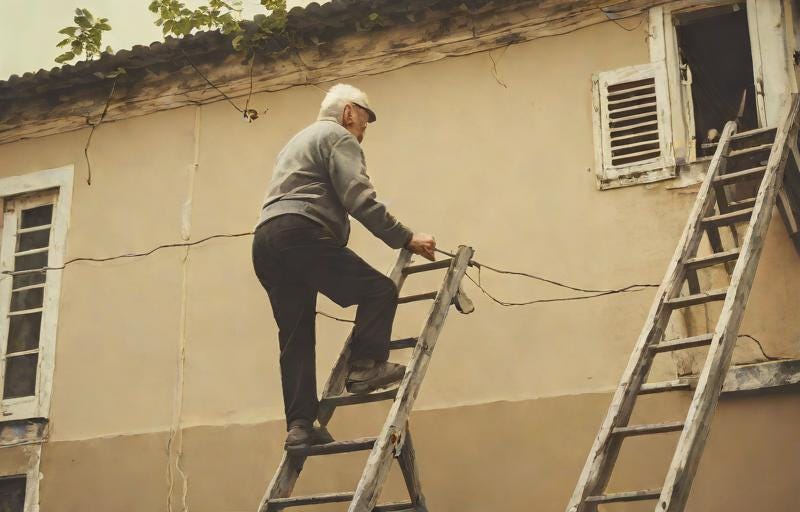
Continue to help us up the ladder by Subscribing now—you won't regret it.
Your support is invaluable. If you enjoyed the read, I would greatly appreciate if you subscribed to a monthly/yearly pledge to support my work, so that I may continue providing you with detailed, incisive reports like this one.
Alternatively, you can tip here: Tip Jar
7 Apr 2024 | 3:58 am
9. Edward Luttwak: Time to Send NATO Troops
The weekend's standout story comes by way of Edward Luttwak, one of the so-called 'premier military theorists' in the West, openly calling for NATO intervention in Ukraine, lest the West suffer a "catastrophic defeat":
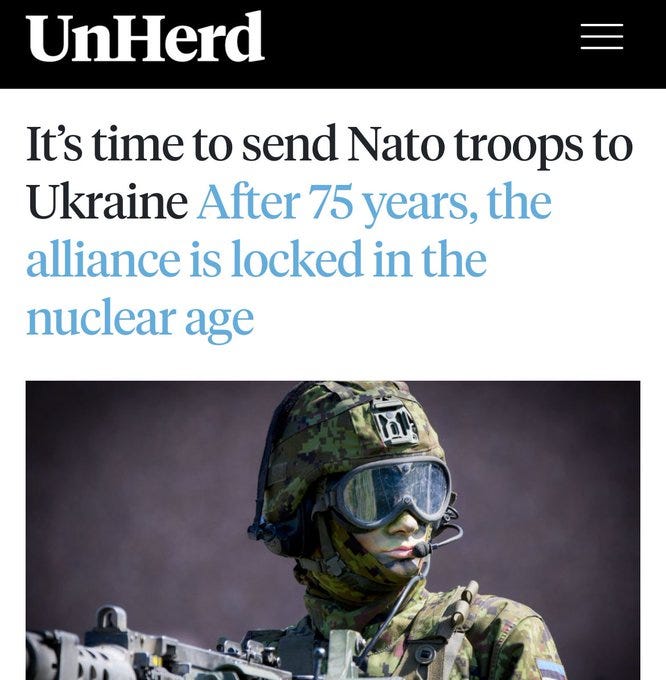
Luttwak has been an advisor for U.S. presidents and the U.S. military, as well as other world militaries. He's also served in the IDF, which could explain his brazen machismo and lack of concern for morality or global safety. Many in the 'beltway' consider him a sort of modern Clausewitz, though it seems more like he's just the military version of constitutional law's Alan Dershowitz—i.e. a mediocrity elevated to god-like status for racial reasons owing to his valence to Zionist supremacy.
But despite what I may think of him, his noteworthy call for NATO troops in Ukraine must be given the tribune of analysis if only for his influence in the very policy centers and control mechanisms in Washington that could make such a move happen. An earlier Spectator piece writes: "When Edward Luttwak speaks, world leaders listen — and now they must consider heeding his advice on Ukraine." And so we must listen too.
But more notable than the eye-catching quote that's got everyone talking is Luttwak's claim that NATO countries are already in the early stages of planning various types of contingents to be sent to Ukraine:
This arithmetic of this is inescapable: Nato countries will soon have to send soldiers to Ukraine, or else accept catastrophic defeat. The British and French, along with the Nordic countries, are already quietly preparing to send troops — both small elite units and logistics and support personnel — who can remain far from the front. The latter could play an essential role by releasing their Ukrainians counterparts for retraining in combat roles. Nato units could also relieve Ukrainians currently tied up in the recovery and repair of damaged equipment, and could take over the technical parts of existing training programmes for new recruits. These Nato soldiers might never see combat — but they don't have to in order to help Ukraine make the most of its own scarce manpower.
Interestingly, he frames everything around the urgency of an imminent Chinese attack on Taiwan, which further adduces his poor analytical abilities. This snippet from a previous article on Luttwak tells you everything you need to know about him:

Either way, in light of his statements on NATO members preparing contingents for Ukraine, we have the following from Stephen Bryen:
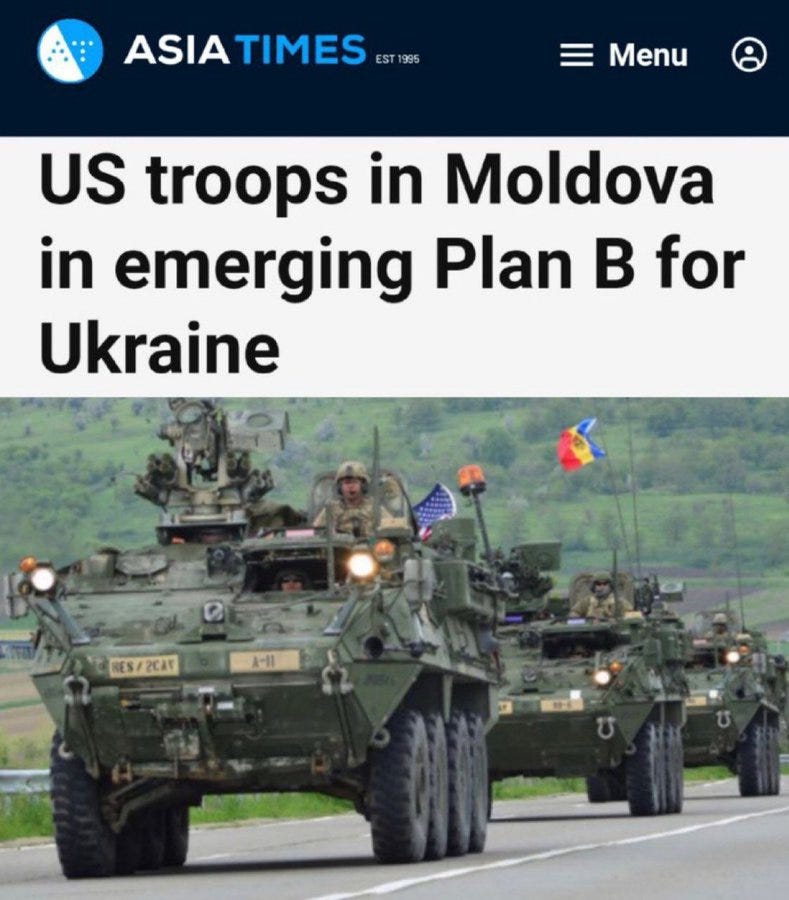
He writes that U.S. and Romanian troops are presently in Moldova for Joint Command Exchange Training and extrapolates that into the theory that Moldova is being prepped as a staging area to potentially take Odessa in the future. This comes after another drone attack on a radar installation in Pridnestrovie yesterday.

Not to mention this rumor:
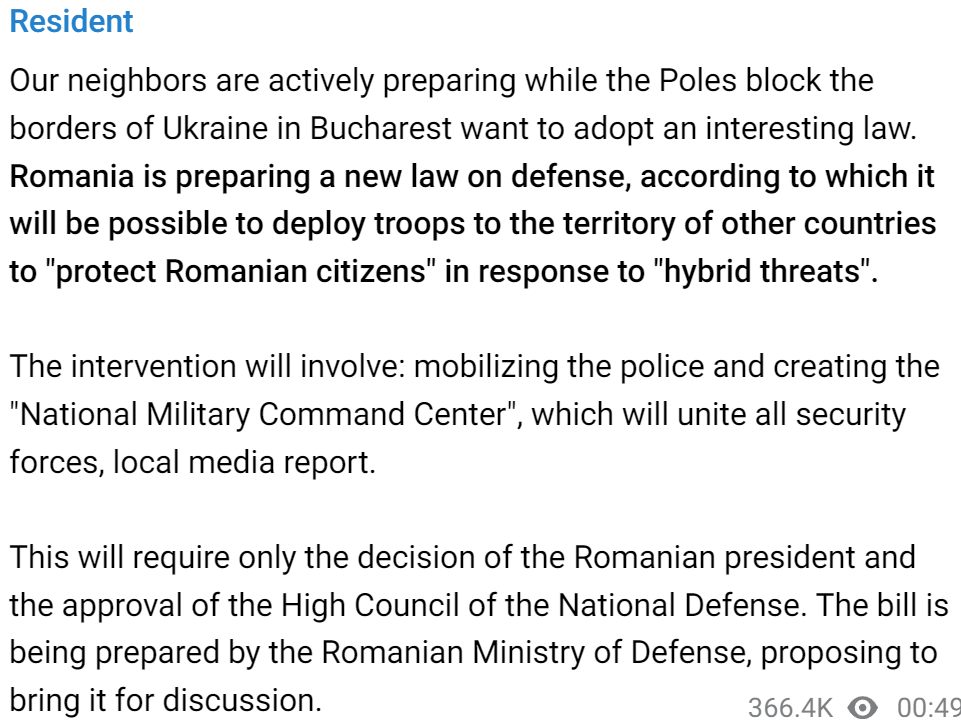
I had mentioned in the comments the other day that there are rumors Russia is preparing a campaign for this summer of utilizing Su-34s for the first time to launch mass UMPK glide-bomb attacks on the Odessa and Ochakov regions from the Black Sea. It's an interesting rumor in light of these developments as it brings to question whether it's Russia upping the ante after latest signals of NATO's increasing salivation over Odessa—or vice versa, NATO is getting nervous for the very reason that they realize Russia is set to increase the pressure on Odessa.
Two days ago Poland's foreign minister Sikorski stated that NATO would establish an official "mission" in Ukraine:
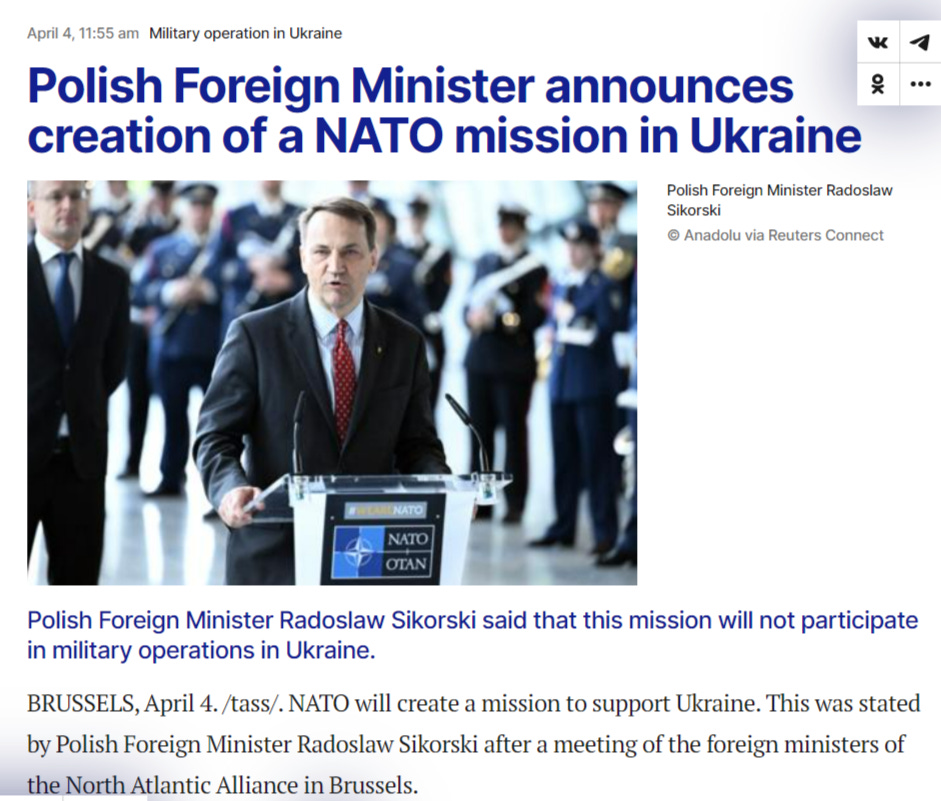
Which he claims does not mean they intend to send troops, necessarily, but rather that they can begin to officially coordinate amongst each other as an alliance in helping Ukraine—or so he says.
Just days before the Luttwak piece, Unherd published this other gem:
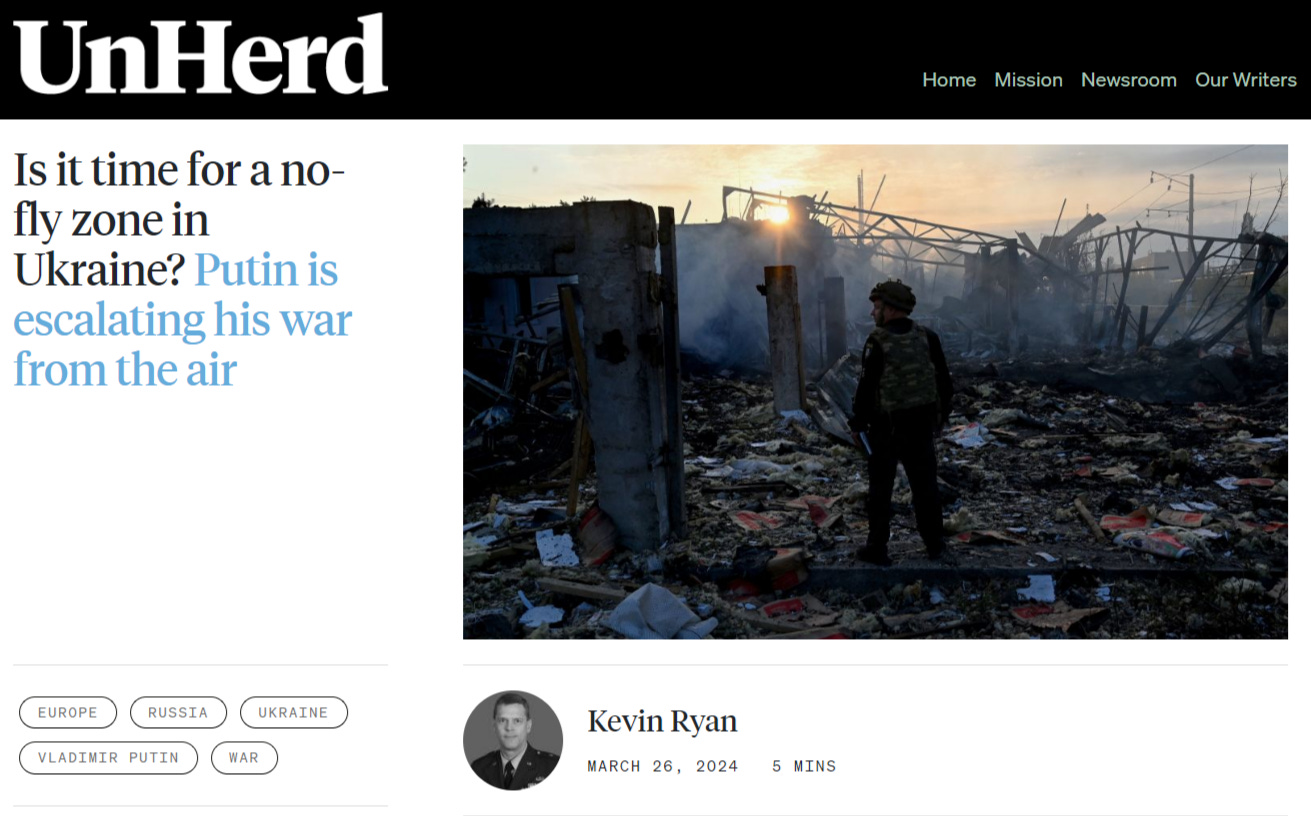
The article sneakily disguises a call for NATO to assume control of everything West of the Dnieper River by couching it as merely providing air cover. The author thinks NATO should defend all Ukrainian cities west of the Dnieper with actual NATO troops and air defense systems. He argues this isn't much of a threat to Russia as they would only be shooting down Russian missiles and unmanned systems and not killing Russian pilots, who do not stray beyond the Dnieper.
In many ways, all such recent calls appear to be disguised attempts—in one form or another—of floating the trial balloon of Ukrainian partition. Why are they going about it this way? Because to outright say the word partition would be a devastatingly demoralizing blow to Ukraine, and would be rejected straightaway by Zelensky and co. But to first slip the idea in subtly and diplomatically, they've dressed it up as some heroic act of loyalty and allegiance, when in reality you can hear the burbles of talks growing louder recently about the inevitability of partition being the only realistic solution.
Recall I had already reported that once again, a new NATO summit this summer aims to dangle membership in front of Zelensky—just as they did last summer—and this time there's rumors increasingly heavier 'hints' will be imparted about parting out Ukraine in exchange for such promises. We wrote when Macron first floated French deployment that part of the reasoning could be to merely secure the Dnieper to force a Korean style DMZ partition onto a recalcitrant Putin. In some ways it would be a perfect crowning 'victory' for NATO, which would allow them to sell it as their having stopped Putin in his tracks without firing a shot.
This common thread plays into what I wrote last time about the rumored 'October Surprise', where Ukraine could declare its new borders without Donbass. It seems a lot of movements appear to be heading toward this NATO-backed attempt to strongarm Russia into a DMZ. When would it happen? Precisely when Russian forces begin "breaking through" Ukrainian lines in force, presumably if and when Russia launches the much heavier offensives everyone expects in a few months.
But what's important to note, is that no one country wants to be left to take the brunt of the Bear's retaliation alone; nor even two or three of them together. That means such an action would likely only occur if a coalition of scaredy-cats was formed, and the chances of that are not great.
On that note, Luttwak ends his own earlier article with the following watery admission:
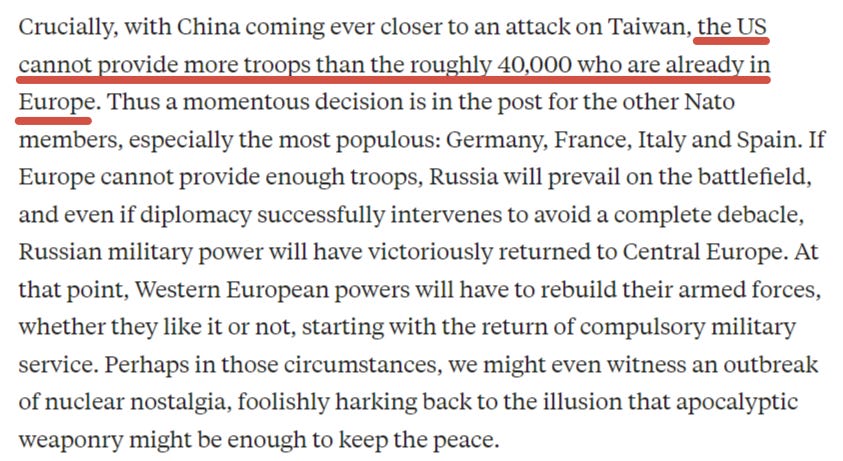
So, U.S. could provide a max 40k troops—recall most of the 101st stationed in Romania had already been redeployed to Jordan last year. Luttwak agrees that it would take most of the main NATO stalwarts for this plan to work, and they have already signaled a no-go. All combined, those countries could provide maybe 150-250k troops maximum, and that's on the optimistic end. Meanwhile, Russia already has an entire fresh 500k man army raised by Shoigu waiting for them, which was created precisely to counter-act the new NATO threats, as I reported long ago. That's not to mention hundreds of thousands of more reserves troops, including the conscript forces and national guard, that Russia could bring to bear if worse came to worse.

On that note, there's one brief topic I wanted to cover and clear up. When Macron launched into his cringeworthy performance, the reasoning he used behind the bravado of sending troops against Russia was that "France is a nuclear power" and thus has nothing to worry about from Russia. This was followed by many French cheerleading responses on social media that highlighted France's impressive 4th rank in world nuclear powers, after Russia, U.S., and China. France has ~300 nuclear weapons which, they say, is enough to "destroy Russia" though not the whole world.
There is a big misconception that laymen have about nuclear weapons. 300 sounds like a lot of missiles, because most people assume it to mean 300 actual individual missiles. In fact, France's nuclear armament is not as impressive as it sounds.
You see, in the 70s and 80s, France totally scrapped the ground component of its nuclear triad—i.e. siloed ICBMs. It now has only the ballistic submarine and limited air component, the latter of which is not even worth talking about as it is a small amount of ASMP-A nuclear cruise missiles, with limited range (~300km), launched by Dassault Rafale jets. There is very little chance such a jet could even get close to Russian air defenses, much less hit any important Russian cities or sites with such a short-ranged missile, so this poses very little threat beyond the frontline-tactical, and can be discounted for the sake of this discussion.
The only moderate threat France has is therefore in its ballistic missile subs. It has a grand total of 4 of them, and only 1 is usually even active at any given time. These subs each have 16 x M51 nuclear missiles, similar to the U.S. Tridents. Each of these missiles can carry up to 10 MIRV'd warheads, though the normal load is said to be 6. That's the entire French nuclear capability right there: 4 subs which have 16 missiles each = 64 total missiles. And each of those missiles with around 6 independent nuclear warheads, for 290 total listed naval warheads (which means some of the boats have less missiles/warheads).

Ergo: the only nuclear threat that France can possibly pose to Russia lies entirely in 4 aging missile boats, each of which can launch 16 missiles. In a nuclear war scenario, or such a scenario where Russia suspects that France is going to attack, we must take into account some non-zero chance possibility that Russia is tracking French subs with its own hunter-killer attack submarines and can take them out even before they launch their missiles. Of course, ballistic missile subs are designed around the philosophy of stealth, and evading their predators, but 1) Russia's underwater capabilities cannot be underestimated and 2) Russia has ~35 attack subs to France's 4 boomers—the odds are heavily against those 4.
What I'm saying is: there is a chance that in such a scenario, Macron would not even be able to launch a single missile, or perhaps only 25-75% of his missiles, as his subs would be taken out before they're even ready to go.
But let's assume for the sake of argument, the subs are able to launch most of their missiles. Both Russia and the U.S. have what's called midcourse interceptors. These are interceptor missiles meant to take out ballistic missiles in the boost or midcourse phase, even before they potentially unload their MIRV'd warheads, which typically happens in the late midcourse or terminal phase.
From the Almaz Antey family, Russia has one contingent of the new S-500 Prometheus as well as the S-300VM and -P families and S-400 variants meant for ballistic missiles; Russia claims the S-500 in particular can take out ICBMs even at the earlier boost to midcourse phase.
But the real final buck-stopper is Russia's true strategic missile defense system: the A-135, and A-235—also called Nudol. The A-135 is specifically designed to take out nuclear ICBMs, rather than being a jack-of-all-trades like the S-400/500 systems. But it is a final stopgap system as the A-135 missiles, which are called 53T6, themselves are nuclear. But they are neutron bombs instead of regular fission atomic bombs. They shoot up at a mind boggling acceleration of 0 to Mach ~10 (some sources, like Wiki, have it Mach 17, but I believe 10 is more realistic, as per Russian domestic sources) in only 3-4 seconds, pulling 200gs. Once they reach the altitude of over 80km where the incoming nuclear ICBM or MIRV'd warheads are approaching, the neutron bomb detonates which essentially causes the enemy's nuclear RVs (re-entry vehicles) to go inert, by chemically defusing them:

For anyone interested in more information on how the AA-84 "neutron bomb" warhead works, you can see more information here.
How does the overall system work? The A-135 gets tracking information from Russia's most powerful and widespread early warning missile system radars, which are positioned all over the country—and in space, as satellites—and are networked with the A-135, as well as S-500/400 interceptors:
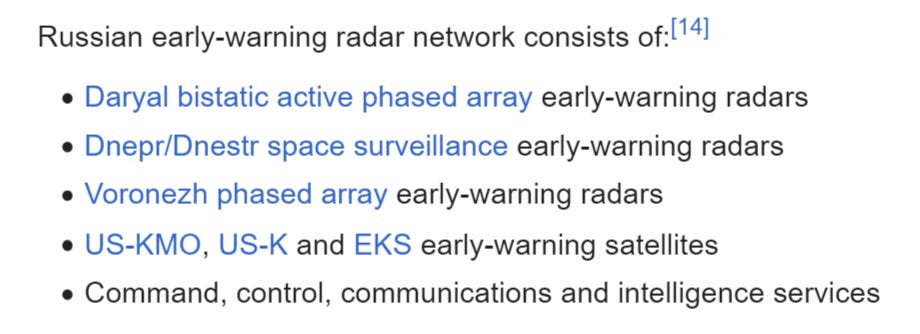
This includes huge arrays like these, which can detect missile launches from thousands of kilometers away:
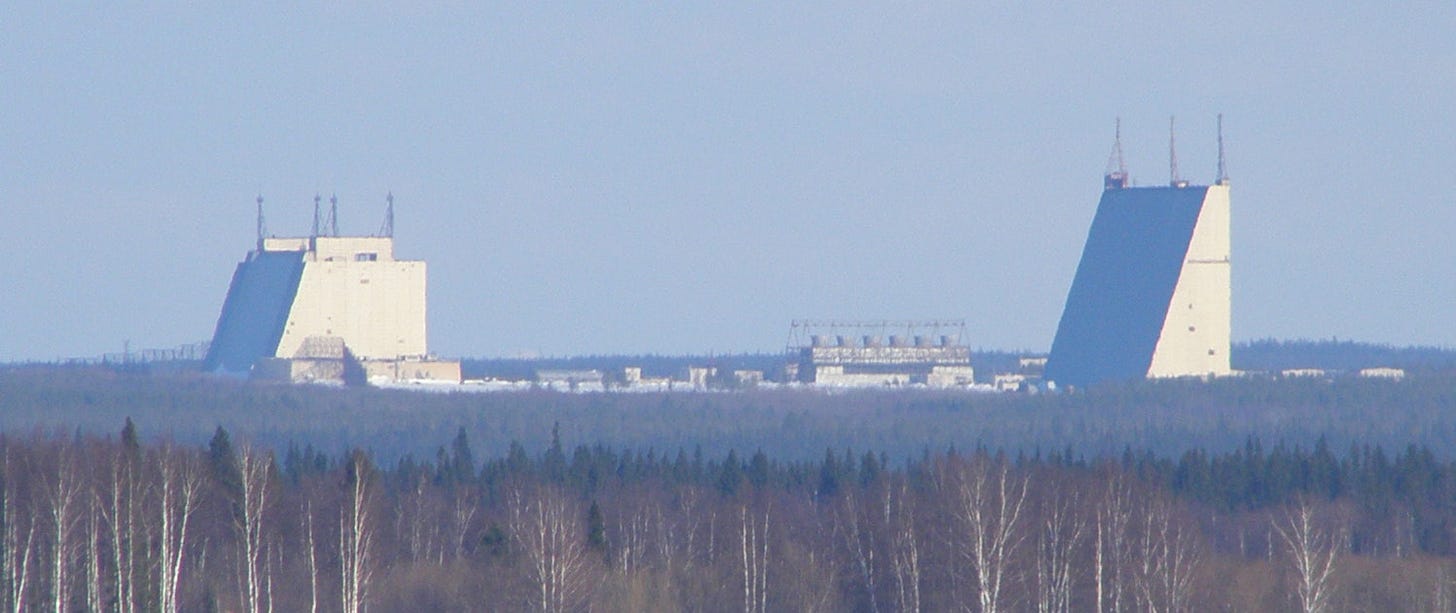
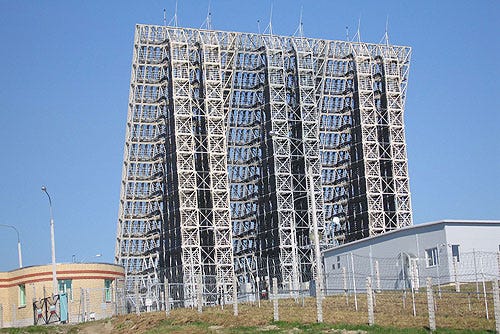
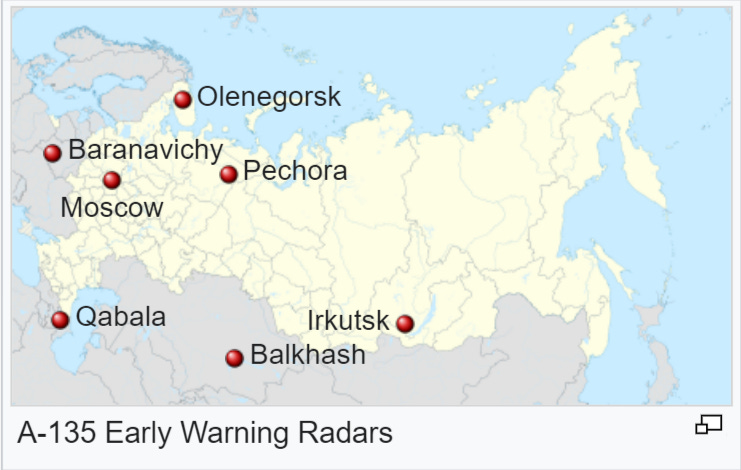
The A-135 missiles themselves have 5 main launch sites, each with about 12-16 silos of missiles, for 68 total missiles:
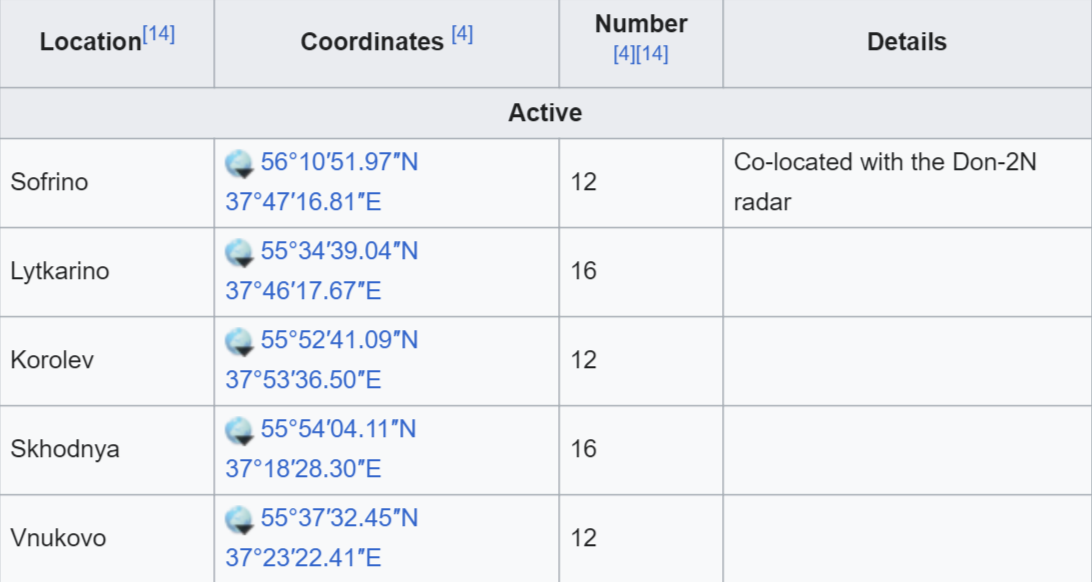
There are at least 68 active launchers of short-range 53T6 endoatmospheric interceptor nuclear armed missiles, 12 or 16 missiles each, deployed at five launch sites. These are tested roughly annually at the Sary Shagan test site. In addition, 16 retired launchers of long-range 51T6 exoatmospheric interceptor nuclear armed missiles, 8 missiles each, are located at two launch sites.
By the way, Russia used to have far more, about 21 total sites instead of 5 but the longer range 51T6 missile component of the A-135 system was dismantled in the 2000s. However in the future they will again likely expand it with the new systems in the pipeline—though even the current amount is still much more than U.S. has in equivalent, which is a total of 44 interceptors.
So, Russia has 68 nuclear-armed (neutron bomb) strategic interceptors, each of which can take out not only one ICBM, but dozens of MIRV'd warheads, if they have already been released. Without going into too much detail, as there are differences between MIRV (Multiple Independently Targetable Reentry Vehicles) and MRV (Multiple Reentry Vehicles), but the short of it is that the 53T6 missiles from A-135 system obviously have a wide range when their nuclear warhead explodes. Depending on whether the enemy missile is MIRV or MRV, and when the MIRVs were released, it's possible that a single 53T6 can zap multiple if not all of the independent re-entry vehicles, given that the neutron effect explosion of the 53T6 will 'irradiate' a wide area in the endoatmospheric zone. MIRVs don't separate as widely as people think—here's one timelapse photo from a U.S. Peacemaker MIRV test to illustrate several of them coming down kilometers apart:
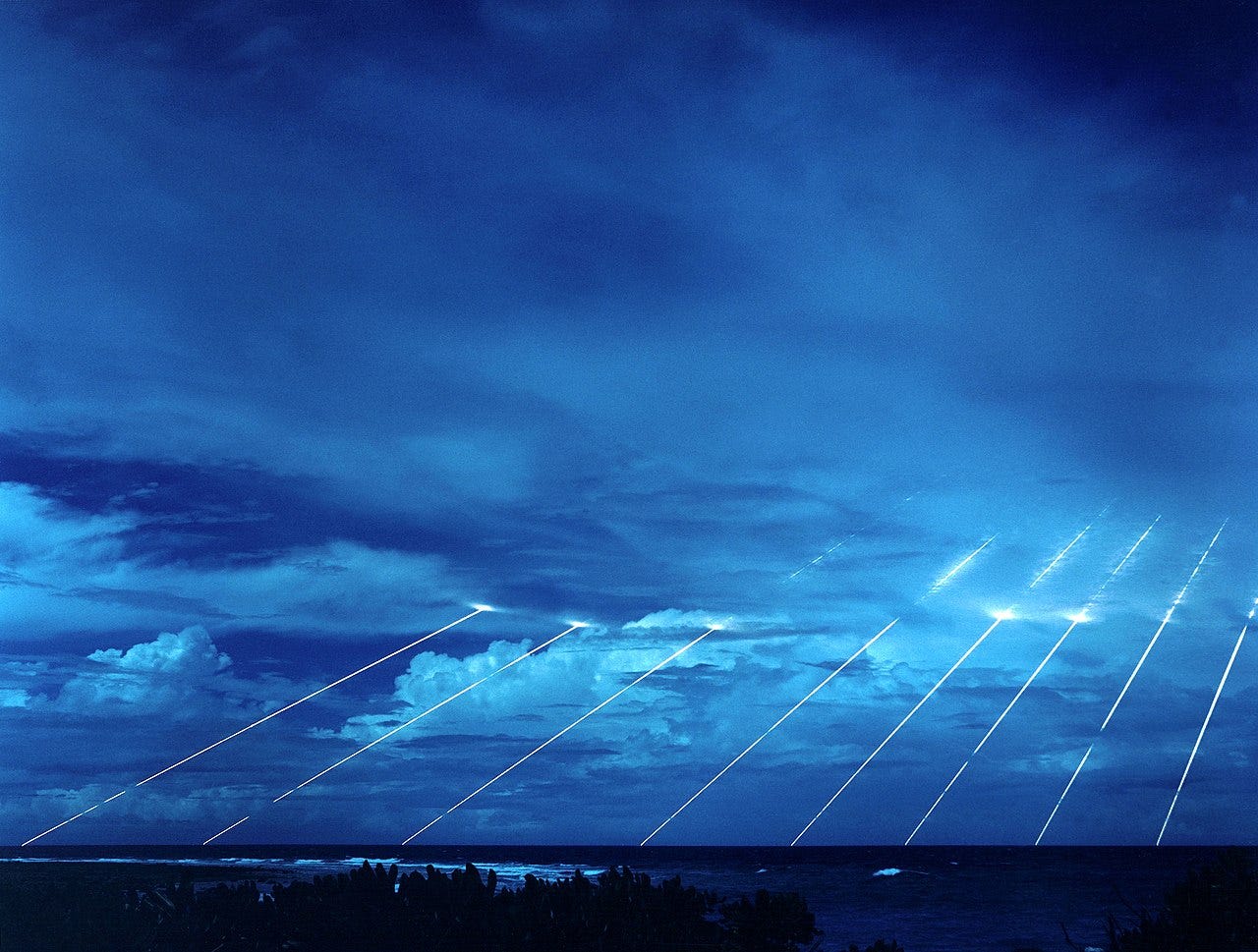
That means a single Russian 53T6 can potentially take out all the 6-10 MIRVs on a French M51 SLBM missile.
If all 4 of France's ballistic subs launch their SLBMs, we will have 4 x 16 = 64 total missiles. The Russian A-135 has 68 interceptors, each of which can potentially take out multiple objects, if they are not far from each other. This of course is backed by many other Russian systems like the S-500 which will be picking up the loose ends. If Russia gets an early detection on the launches, the hyper-accelerating A-135 system can potentially take out all the French SLBMs before they've even dispersed their MIRVs in the final descent phase.
If some MIRVs are released, then there's good chance the neutron effect will deaden them if they are relatively close together, which there's a good chance of at the early stage, before they disperse to wider individual targets. Some could get through, but that's if: 1.) the Russian A-135s didn't take out the missiles in midcourse phase before they even opened up the MIRVs and 2) if Russian attack subs didn't take out at least one or two of the French subs, vastly limiting the attack saturation.
In conclusion: given the fact that the entire French nuclear arsenal resides in just a measly 4 ballistic subs, and given that those subs can fire 64 total missiles, which hold virtually the entire usable French nuclear arsenal; and further given that Russia's A-135 system alone has 68 missiles, backed by hundreds more from secondary redundancies like the S-500 and special ABM variants of S-300/400, as well as possibly some extant versions of the A-235 Nudol—meant to eventually replace the A-135 system; all of these ultimately give a fairly high chance that Russia could in large part stop or blunt a French nuclear first strike attack.
Certainly, France would not be able to "destroy all of Russia"—not even close. Even if the A-135s neutralized 75% of the MIRVs, with a few getting through—the S-500 cleaning up a few of the remainders—but even if a few French TN-75 MIRVs made it through, each one is 100 kilotons; and while that would do a decent amount of damage, it's not enough to even take out entire large cities let alone the whole country. France, of course, would cease to exist, while Russia would suffer relatively minor damage. Of course, no nuclear damage is "minor" in the classic sense, but compared to the opponent literally ceasing to exist as a civilization, it would be comparatively inconsequential.
Let's not forget that some of France's M51 SLBM missile tests have failed in the past, and NATO in general is greatly backsliding in this regard: recall the recent German frigate missile fail debacle from just last month. So even if Russian attack subs didn't find the French boomers first, there's no guarantee the SLBMs would even make it out of their decrepit tubes.
That is all to say that Macron's bluster is without much substance to back it up. France is precisely the size of nuclear power that Russia could fairly confidently deal with in a nuclear exchange scenario. It's the ability of the U.S. mass saturation that would be mostly unstoppable—but France's 4 measly submarines, the readiness rate of which is highly questionable, with only one of them active at any given time? That's not threat enough to justify Macron's boots-on-ground wager.
Either way, recall that none of these countries have the armaments sustenance capacity for a high intensity, long duration conflict:
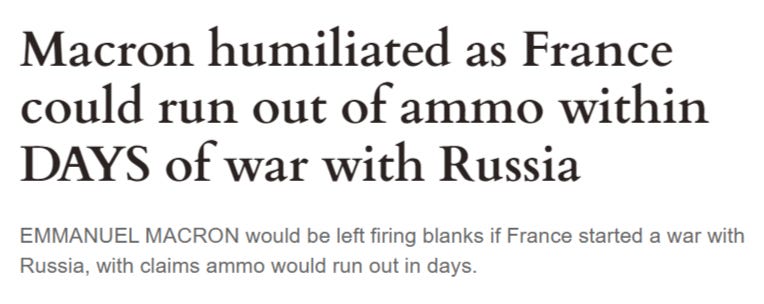
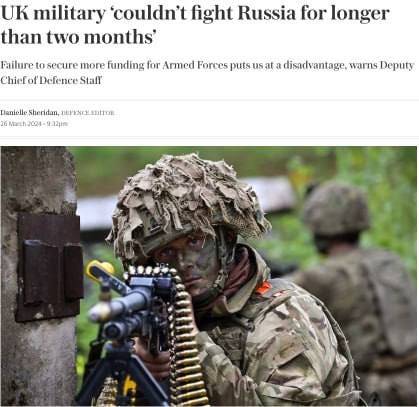
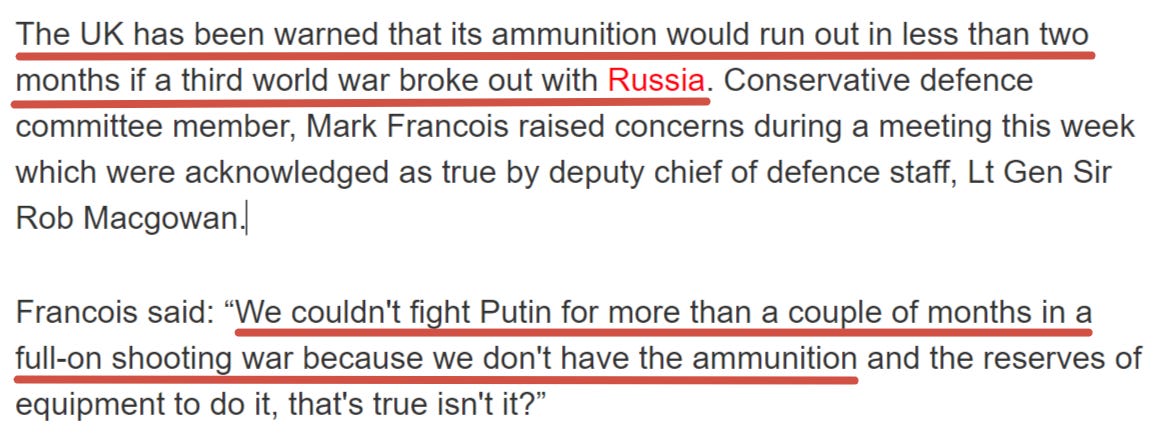
—
To move on, a couple new articles I'll post without much commentary only for those interested, as they mostly rehash the same ongoing concerns, but the headlines at least will give a continued gauge of the current mood:


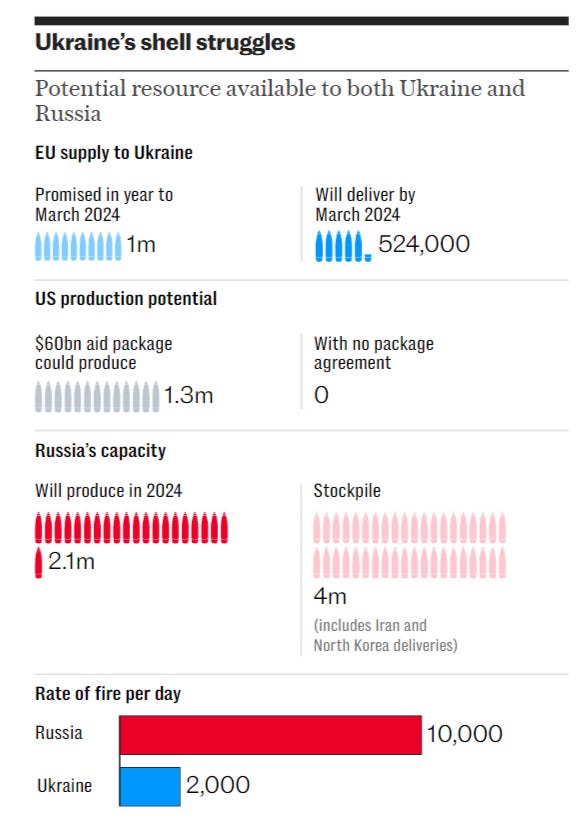
There's one interesting observation about the above, second article, from which I posted the artillery shell graphic. It notes how the West is unable to ignite the manufacturing prowess necessary to compete with Russia.
One thing it made me realize is that most people seem to take Ukraine's 155mm shell sustenance as a kind of "given" even if the much-hyped U.S. funding doesn't materialize. The article mentions how the U.S. currently produces 28,000 shells per month even at full capacity, 24-hour operation of its factories. However, there are plans to allegedly open another factory—a General Dynamics Ordnance plant in Garland, Texas—which, last I heard—is 'stuck' in development with a pending 'environmental review', which is likely a legalese way for someone in the Biden admin. to block its opening.
But even if it were to open and U.S. got its planned boost to 80k or even 100k shells per month sometime next year. The current going shell price seems to be around $3000:

The $8489 number I believe is what Rheinmetall is paying in Germany.
So, even the current 28,000 monthly production x $3000 is costing $84 million a month, or $1 billion per year. 100,000 shells per month at that rate—and the price may even go up in the future—would cost a whopping $300,000,000 per month, and nearly $4B per year. Without a major ongoing aid package, there is simply no way that the U.S. will continue stealthily pumping $4B just for Ukraine's 155mm shells—that's not counting the countless other armaments they need on a daily basis. This is one aspect I have a feeling no one has looked at: they simply "expect" that no matter what happens, Ukraine will continue getting its basic artillery shells, at the minimum; but who said that was a given? There is simply no mechanism for upwards of $4B yearly to be doled out for free without special congressional accommodation—after all, the presidential PDA (drawdown authority) is mostly gone.
This could explain some of the reasons behind all the recent panic and talks of NATO deployment.
The funding situation continues to look hopeless, anyway:



As a last topic:
Another point of urgency—recall all the talk about Kharkov heating up. Now even Zelensky's gray eminence, Yermak, is admitting to the possibility of Russian forces moving on Kharkov soon:


What's interesting is that they quickly rolled back the statement with a 'correction', claiming that Yermak's spokesperson said his words were misinterpreted and that he didn't mean Russia would launch a ground assault on Kharkov, but rather air attacks. However, I'm skeptical because in the original statements Yermak also mentioned a new Russian "mobilization" which would be in line with the ground assault angle. I suspect he may have realized after the fact that his words would create too much 'panic', and decided to downgrade them, even though the downgrade doesn't make sense considering Russia has already been unleashing mass strikes on Kharkov, including cruise missile attacks on its power infrastructure.
This is reinforced by a continued stream of videos out of Kharkov showing citizens fleeing:

Last few sundry items:
Check the dates on this quite poignant before and after:
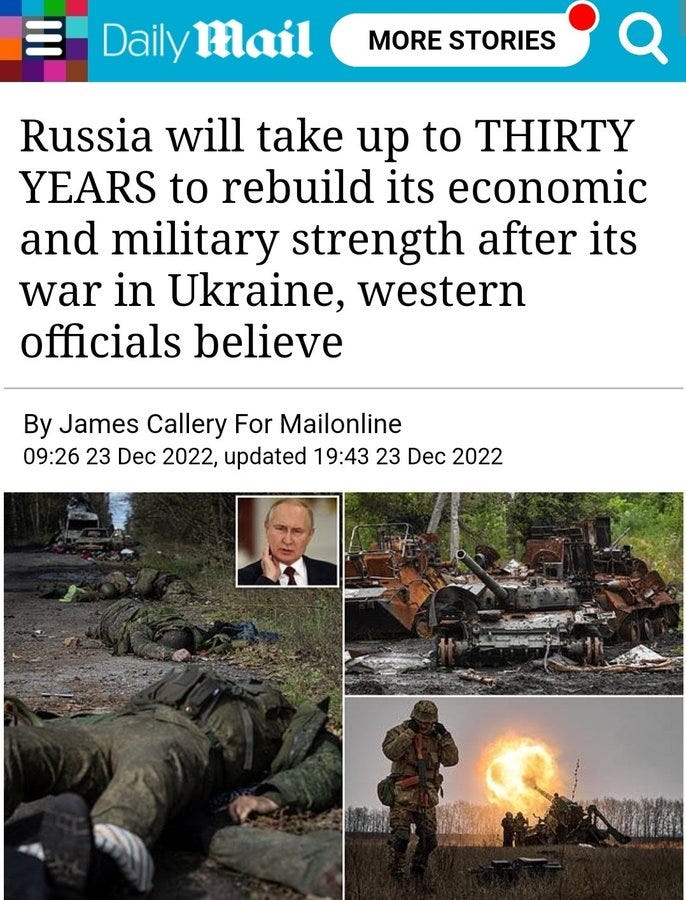

Here's the video of Deputy Secretary of State Kurt Campbell making the statement that spurred the headline above:
"We have assessed over the course of the last couple of months that Russia has almost completely reconstituted militarily," said Deputy Secretary of State Kurt Campbell at an event hosted by the Center for a New American Security.
You see, in reality, they just make up whatever assessment fits the current model of narrative or agenda it's convenient for them to push. When the agenda called for valorizing Ukraine, they called Russia weak and 'destroyed'. But now that they see the only way to stop Russia is to get a unified Europe involved, they characterize Russia as not only totally 'rebuilt', but even—as per the second half of his statement—having "newfound capabilities" which now—surprise, surprise!—happen to pose a threat to Europe too!
—
More Bradleys and other NATO kit arrive in Moscow—soon Russia may have more Bradleys, Abrams, and Leopards than Ukraine itself:
—
Lastly, I've written a lot in the past in regard to debunking the common Western misconception that Russia has a 'Soviet-style top-down centralized' command system which is caricaturized as worker-bee drone soldiers merely mindlessly following commands from central HQ. I've said time and time again how Russia not only has an NCO system, but the soldiers themselves are taught initiative and leadership abilities, just like the West claims to teach their 'superior' troops.
Here's a recent example of this, a Russian soldier named Rodimir Maximov, introduced as a 'Private', was just awarded with state honors during an assault in the Novomikhailovka area. His commander was wounded at the very start of the assault, and Maximov immediately took over, issuing commands to the squad with total autonomy. Even more telling was that once he radioed HQ, they basically told him to hold down the fort and gave him leeway to act as he saw fit, even as the enemy launched multiple counter-attacks—there was no 'Soviet-style' one way marching orders as the dimwit Western military 'experts' would have you believe. The command gave him full autonomy for two full days, according to the story, as they coordinated reinforcements to come relieve the assault group which had taken the AFU fort.
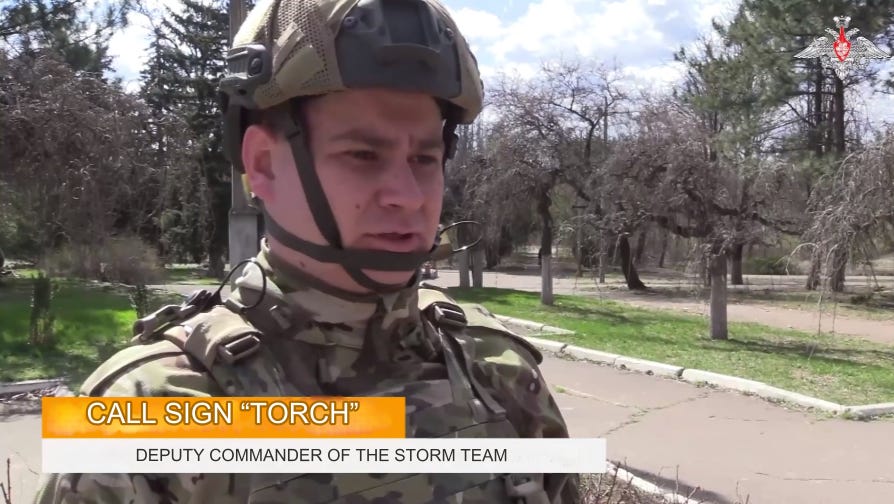
After his interview below, you can see the deputy commander of the group and then footage of Maximov's heroism during the opening of the assault. During the footage, you can clearly see the mere 'private' displaying clear signs of well-schooled leadership abilities, with no signs of any "drone-like" behavior:
The feat of Private Maximov:
A soldier of the army corps of the Vostok group of forces, private Rodimir Maksimov, destroyed 27 Ukrainian militants during the capture and retention of a Ukrainian Armed Forces stronghold in the Novomikhailovka area. Acting as part of an assault unit during the capture of a Ukrainian Armed Forces stronghold in the area of the settlement. Novomikhailovka in the Maryinsky direction, private Rodimir Maksimov managed to outflank the enemy and inflict fire damage on him, personally killing three Ukrainian Armed Forces servicemen, which allowed the assault group to enter the enemy positions.
Despite the injuries received during the battle, the serviceman continued to perform the combat mission. When the enemy, in an armored vehicle with forces up to the squad, attempted a counterattack on the line occupied by our assault group, he, allowing the enemy to reach the distance of guaranteed fire destruction, destroyed the attacking group of the Armed Forces of Ukraine in its entirety with fire from a Kalashnikov machine gun .
Over the course of two days, Rodimir Maksimov, destroying the suitable infantry of the Ukrainian Armed Forces, with heavy fire from the PKM thwarted three more attempts by the enemy with superior forces using tanks and armored combat vehicles to recapture the positions held by our assault group and prevented the loss of the defended strong point.
In one of the episodes of the battle, Rodimir, overcoming the pain from his injuries, personally destroyed a group of Ukrainian Armed Forces servicemen dismounted from an American-made MaxPro armored personnel carrier with machine gun fire . The Max Pro crew began to maneuver to retreat and fell into the kill zone of our ATGM crew, as a result of which they were destroyed.
Until the arrival of reinforcements and subsequent evacuation, the fighter continued to staunchly defend and hold the occupied stronghold, personally destroying up to 27 enemy troops. For the heroism and courage shown during combat missions, private Rodimir Maksimov was presented by the command with a high state award.
Compare that with the below, and you decide which side has the better soldiers:
Your support is invaluable. If you enjoyed the read, I would greatly appreciate if you subscribed to a monthly/yearly pledge to support my work, so that I may continue providing you with detailed, incisive reports like this one.
Alternatively, you can tip here: Tip Jar
4 Apr 2024 | 4:14 am
10. SITREP 4/3/24: Zelensky Steps Closer to Mobilization Plunge Amid Dire Warnings
Things continue to feel like a calm before the approaching storm. There is not too much overt activity in the battle space, but various rumblings of a large looming escalation continue to trickle through the grape vine.
In a recent article I had mentioned how the Western press and elite commentariat for the first time began using the taboo 'C' word, i.e. "Collapse", for Ukraine. Now this has opened up the floodgates, causing more and more worried publications to begin turning off their previous holding-the-line narrative filter and actually start describing the Ukrainian situation with truthful urgency.
E.g.:
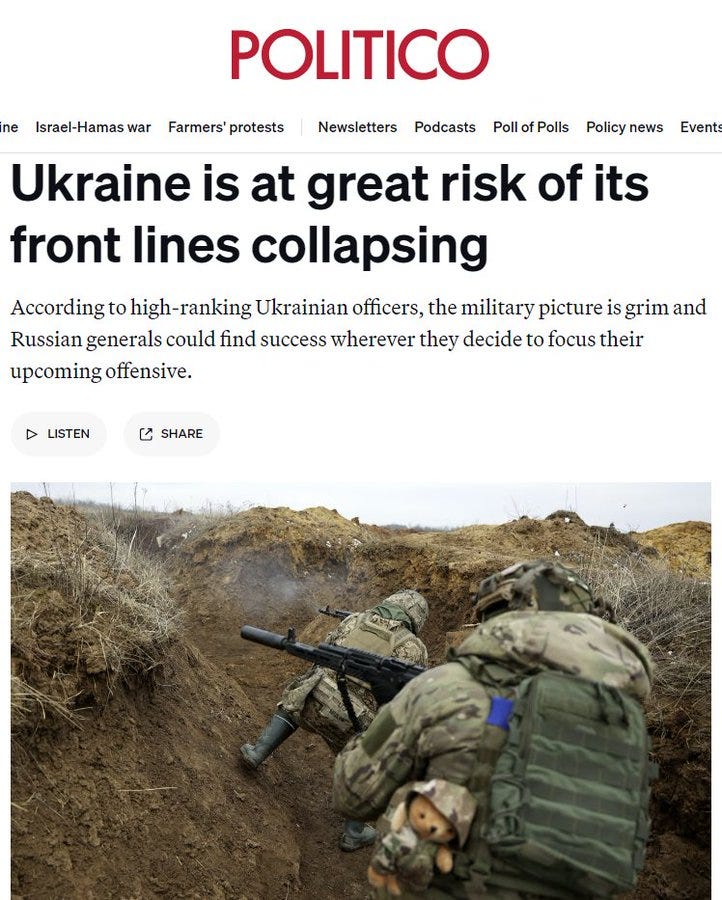
With grating teeth, the article opens by admitting that Musk may be onto something when he recently said that Ukraine would eventually lose everything east of the Dnieper River and even Odessa too, if it continued to fight.
But here's one of the key points of the article to enlarge on:
Obviously, Zelenskyy's warnings are part of a broad diplomatic effort to free up the military aid his forces so desperately need and have been short of for months — everything from 155-millimeter artillery shells to Patriot air-defense systems and drones. But the sad truth is that even if the package is approved by the U.S. Congress, a massive resupply may not be enough to prevent a major battlefield upset.
This is a central issue that the pro-UA pundits deliberately paper over. They keen and rage about the off-and-on funding attempts, mesmerically focusing on the big $60B number as if to throw us off any inconvenient questions. But what, exactly, is that $60B supposed to buy for Ukraine?
The U.S. has already emptied almost its entire store of usable surplus mainline weaponry for Ukraine, i.e. tanks, artillery, light armor—not counting things like ammo. As proof, even Ukraine's most ardent American supporters have admitted this in the past few days:
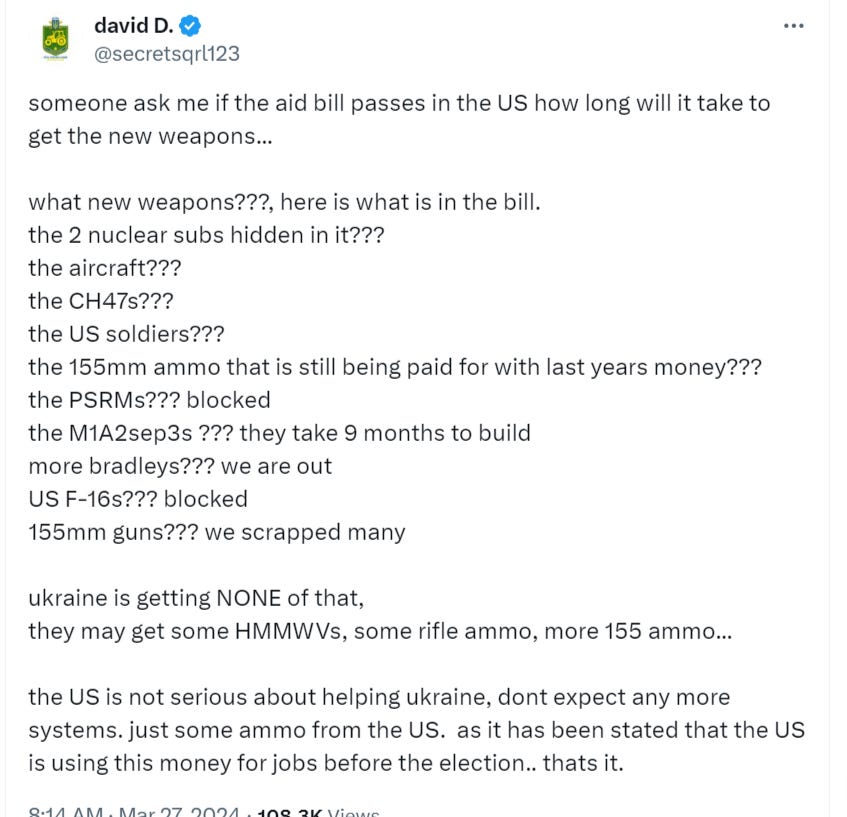


What he's saying is that, even if the $60B were to pass, U.S. has little of actual value to send to Ukraine beyond small arms munitions and things of that nature. There are no more surplus Bradleys left, and none can be built as the factory closed down decades ago.
Yet Ukraine hinges their entire future on this mythologized support as if it's some kind of instant videogame-like upgrade, a "power-up" that will immediately re-energize and supercharge the AFU—this is simply not the case.
It appears, instead, that Zelensky merely wants this aid package as a morale boost to continue buying more time for himself and his army, staving off collapse. The aid would obviously signal U.S. support being back on the table, rather than totally sloughing off as has been the case, optically.
The Politico piece goes on:
And according to high-ranking Ukrainian military officers who served under General Valery Zaluzhny — the commander-in-chief of Ukraine's armed forces until he was replaced in February — the military picture is grim.
The officers said there's a great risk of the front lines collapsing wherever Russian generals decide to focus their offensive. Moreover, thanks to a much greater weight in numbers and the guided aerial bombs that have been smashing Ukrainian positions for weeks now, Russia will likely be able to "penetrate the front line and to crash it in some parts," they said.
They spoke on the condition of anonymity to speak freely.
"There's nothing that can help Ukraine now because there are no serious technologies able to compensate Ukraine for the large mass of troops Russia is likely to hurl at us. We don't have those technologies, and the West doesn't have them as well in sufficient numbers," one of the top-ranking military sources told POLITICO.
Read the highlighted parts very carefully, particularly the last paragraph. High-ranking military officers secretly told Politico under anonymity that: "There's nothing that can help Ukraine…the West doesn't have the technologies in sufficient numbers."
This comes back precisely to my point above about the big glamorized $60B "salvation" fund.
Read my lips, it's quite simple: Ukraine has literally no chance whatsoever to do anything militarily in this war anymore. Ukraine and Zelensky's only shot at survival is to push Russia into a confrontation with NATO. They are desperately attempting to do this each day by launching mass terror attacks all over Russia.
The latest occurred yesterday on Yelabuga, where Ukraine literally crashed a giant Cessna-like plane into a dormitory full of students that they claimed was a drone factory:
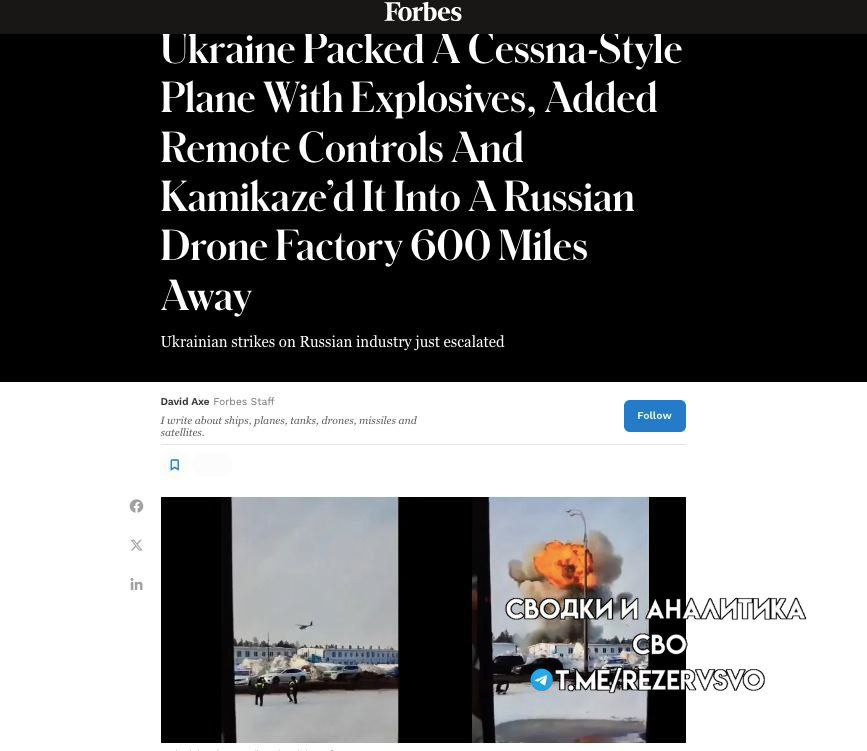
The problem is, not only is it obvious from the videos and photos that this is a dormitory:
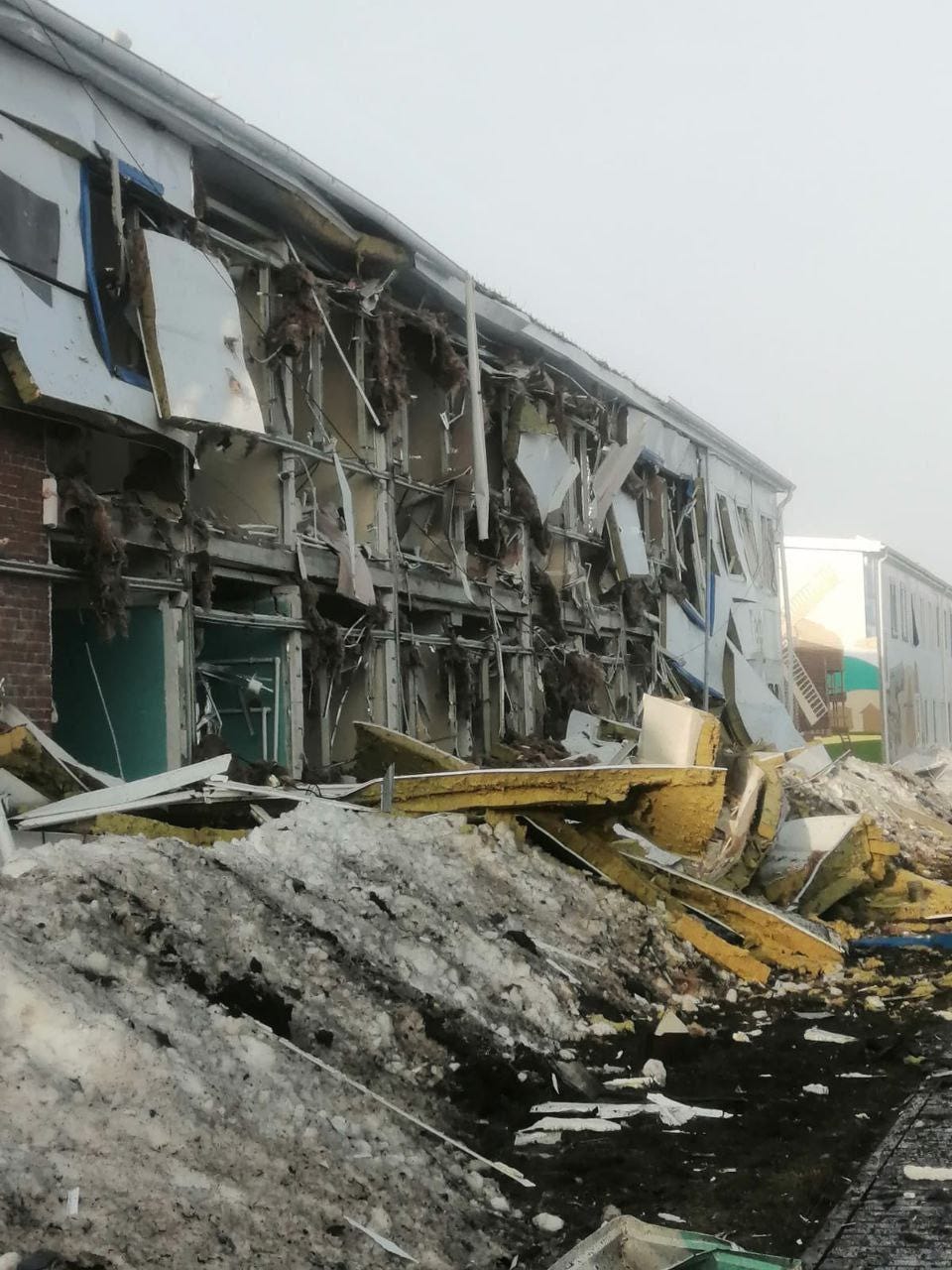
But it was in fact a dormitory for exchange students, one of which can even be seen speaking out on the incident here:
Does this look like a drone factory?
While Russia is crushing the Ukrainian Armed Forces' combat potential on the actual battlefield, desperate Zelensky is hiring "ISIS" to massacre Russian civilians, attacking Belgorod highrises with drones and artillery, and is literally loading up Cessnas with bombs and flying them into buildings with African exchange students—that's the stage his putrid terrorist regime is now at.
Here's a recent overt and clearly deliberate hit on a Belgorod apartment complex:
As I said before, he knows he can't even put a dent in Russia's military so he has to go "all in" on hybrid terror warfare in order to cause Russia to lose its footing, over-react in some uncharacteristic way that can draw NATO into the conflict. This is why it's best for Russia to continue ignoring these attacks while methodically prosecuting the battlefield operation. And by the way, in his new address, Shoigu stated that since the Crocus Mall massacre, 16,000 new Russian recruits signed up the very next day to enlist in the army. That's on top of the normal 30k now enlisting monthly, making a total of over 100k so far for 2024.
As a side note, remember when that 30k monthly figure was widely sneered at and jeered by the West? Now they openly admit it, as per usual:

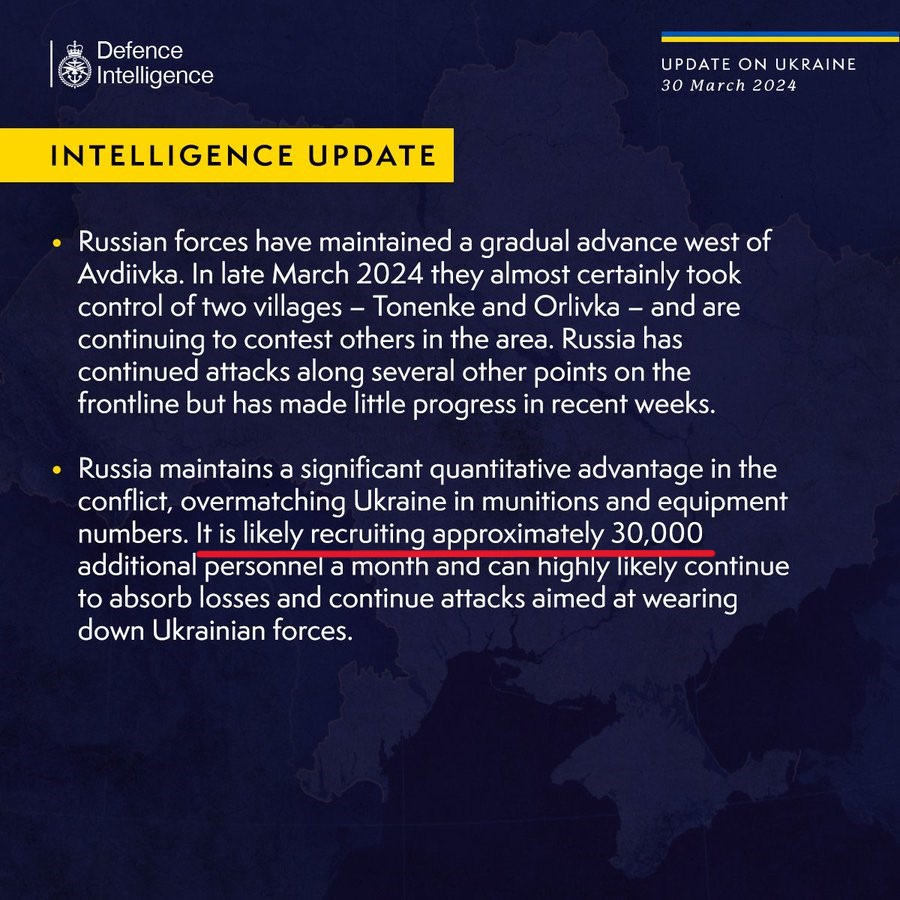
Russian MOD even released a video showing the recruits lining up in offices across the country. In fact, an American was amongst them:
"We must support Russia": an American signed a military service contract at the Patriot Center in Khanty-Mansiysk.
The man with call sign "Will" served in the US Armed Forces, but, having realized what was really going on in Ukraine, he came to the special military operation as a volunteer several months ago. Together with Russian guys, shoulder to shoulder, he participated in the liberation of Avdeevka.
Will's comrades - military personnel from Pyt-Yakh (Khanty-Mansiysk Autonomous Region) and a volunteer from Serbia, who also went to the special military operation through Yugra - convinced the man that it was better to sign a contract for service in the RF Armed Forces in Khanty-Mansiysk by their own personal examples.
Their logic was as follows: a payment of 745k rubles on the spot and of 150k rubles bimonthly, full equipment provided on the spot, and a supply of everything necessary while in service.
In this video, Will the American signs a contract at the Center of Russian Patriots in Khanty-Mansi Autonomous Region.
Ukraine is doing everything in its power to destabilize Russia by stirring discontent within it—even Western rags now admit to the recent rash of ethnic tension being provoked by Ukrainian services:
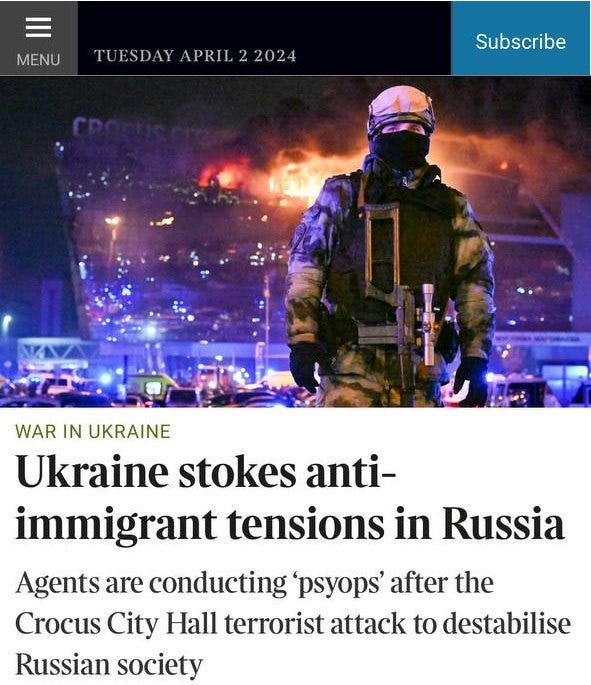
But back to the Politico article, it has one last meaningful observation:
"Zaluzhny used to call it 'the War of One Chance,'" one of the officers said. "By that, he meant weapons systems become redundant very quickly because they're quickly countered by the Russians. For example, we used Storm Shadow and SCALP cruise missiles [supplied by Britain and France] successfully — but just for a short time. The Russians are always studying. They don't give us a second chance. And they're successful in this."
"Don't believe the hype about them just throwing troops into the meat grinder to be slaughtered," he added. "They do that too, of course — maximizing even more the impact of their superior numbers — but they also learn and refine."
How's that for a hell of an admission?

On that note, the extreme urgency continues to be dialed up in the West. It truly feels like they 'know' something we don't about Ukraine's real condition: everyone seems to expect Ukraine to collapse at the slightest next Russian push:

The above article starts off with an even grimmer portrait:
There is a growing understanding across the Western allies that Ukraine is losing the ground war against Russia, and by summer could face defeat.
Russia is pounding front lines with artillery, rocket and drone fire — and at over five times the rate the Ukrainian army can reply. Volodymyr Zelensky's troops are exhausted — after sustaining in some sectors a heavier concentration of incoming artillery than at the Somme in 1916, or the Normandy Bocage after D-Day in 1944.
It goes on to sketch the dire situation of the West's own armaments:
The Western response has been patchy to the prospect of a Russian breakthrough within weeks. Artillery stocks, even for their own arsenals in the cases of Britain, Germany and the US, will not be replenished fully for another two years. Germany has increased defence spending but refuses to send game-changing weapons like the Taurus missile.
Interestingly, ignoring their laughably fake Russian numbers, they appear to make quite an admission on Ukraine's losses:
Already he (Putin) has lost 405,000 in two years of combat, and with 1.3 million committed to the war — with the prospect of calling up a further 1.5 million by 2027. Ukraine has lost about 385,000.
It ends on a fatalistic note:

If that wasn't enough doom-and-gloom for you, and if you're still thinking: "Well, those are flukes, maybe the rest of the commentariat isn't quite so pessimistic…" I present you the veritable magnum opus of this week's panicked squalls:
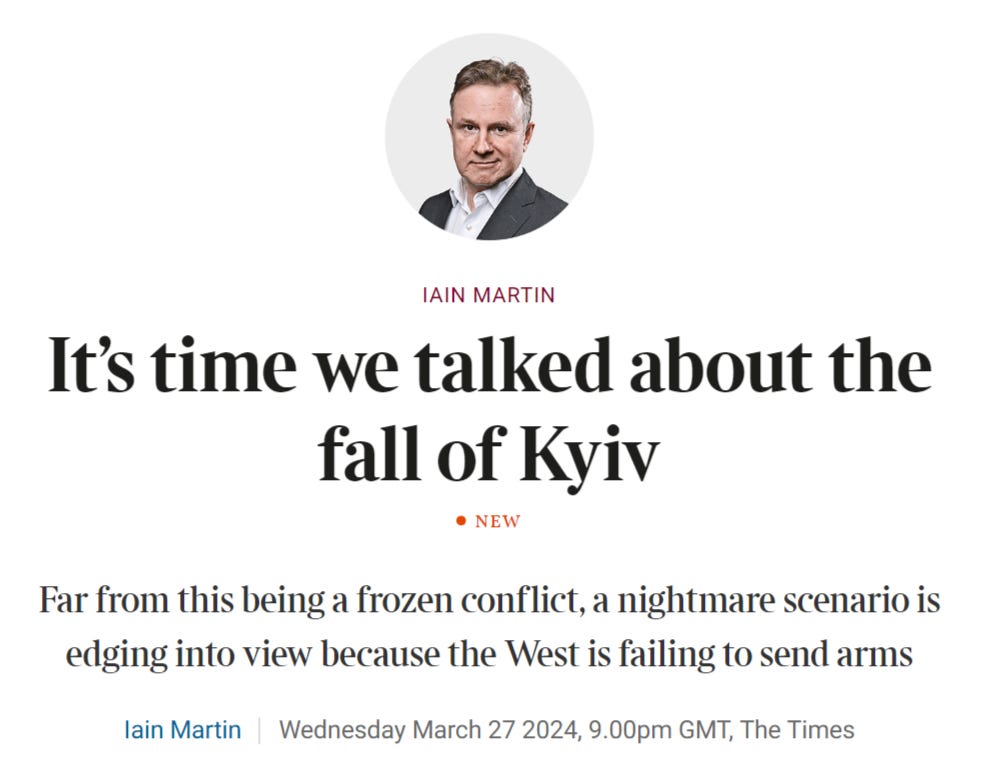
"A nightmare scenario is edging into view." Interesting!
The article begins with a dress rehearsal for what the author envisions happening:
It is July and the Russian army is at the gates of Kyiv. President Zelensky delivers an emergency broadcast to repeat his defiant words, first uttered in February 2022, that he does not need a ride out of Ukraine. No, he needs ammunition to stay and fight the Russians.
If only the West had listened and done more when the brave Ukrainians were pleading for help, that might have made the difference. While the allies squabbled and the United States eventually provided another $60 billion in aid, as spring turned to summer, Putin's troops broke through the lines in the south and east. Retreating Ukrainian forces were able only to slow the advance. When the Russians closed in on the capital, a new wave of refugees fled Ukraine seeking safety from incessant bombardment.
My, my, how times have changed. We went from "Russia is doomed" to "It's a stalemate" to …this, in only a matter of months.
But this isn't some far-flung crisis vision of the author's, no he claims this is what serious Western policymakers are now discussing:
This is the nightmare scenario now being contemplated by western policymakers. Events are forcing military and civilian leaders in London, Washington, Paris and Brussels to map out the catastrophic collapse of Ukrainian forces denied the weapons and munitions they need.
Woah.
Macron's desperate bid to jumpstart NATO members out of their stupor into cautioning Putin from advancing now makes much more sense, in light of these new revelations of what the West is secretly discussing behind closed doors vis-a-vis Ukraine's chances.
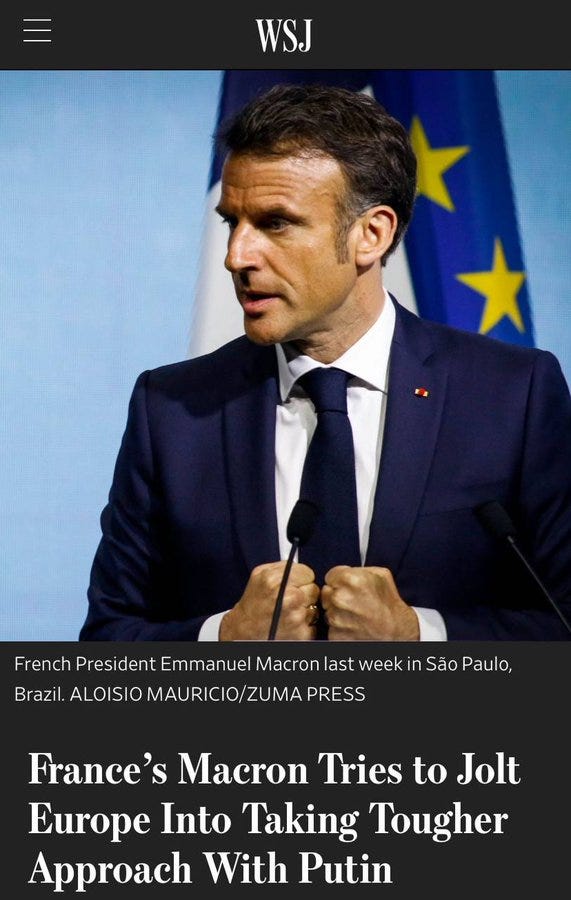

The author even echoes my words, writing that 'contrary to the predominant view that this is a perpetual frozen conflict' Ukraine, in actuality, faces a real risk of being driven back. He goes on to absurdly mention there could still be a slight glimmer of hope, that perhaps Putin might be 'overthrown' by a coup. Do these midwits even follow Russian news or know anything of Russian society? Both Russia's elite, political class, and citizenry have never before been as united as they are now. There is zero chance of any hoped-for "coup"—this is children's talk.
Zelensky corroborates all of the above:
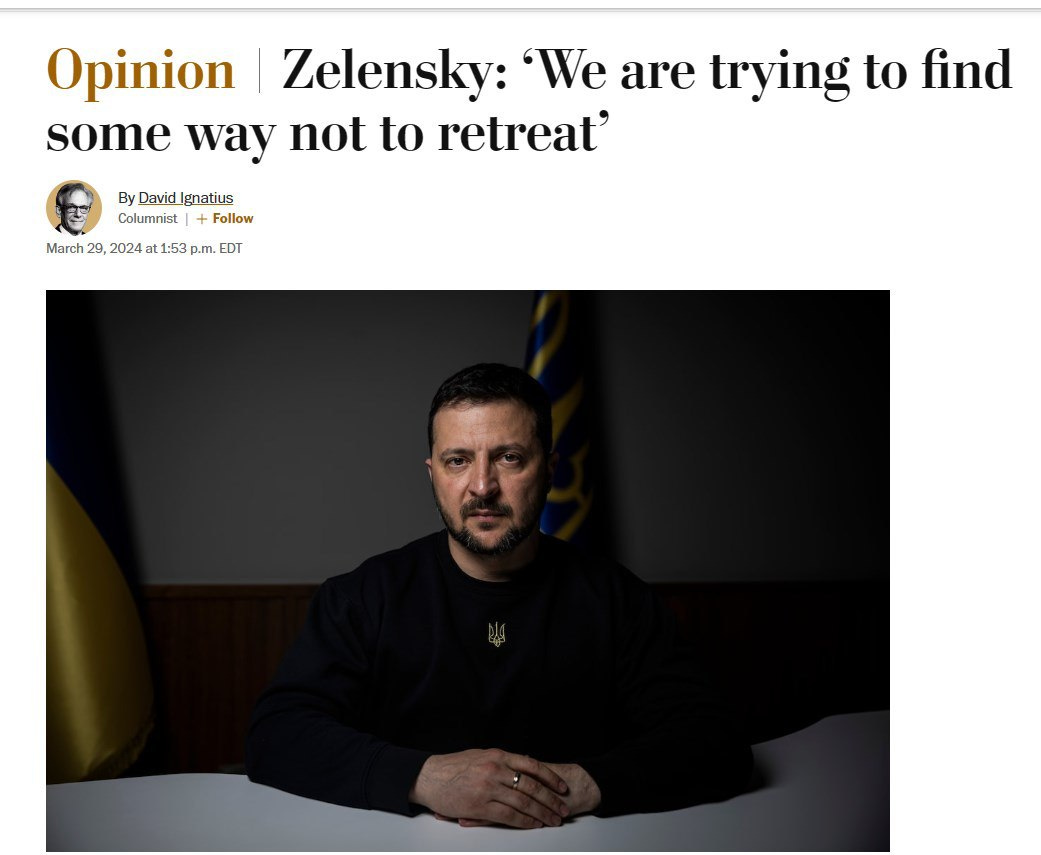
In the above WaPo piece, he admits that Russian forces could soon break through to "the big cities":
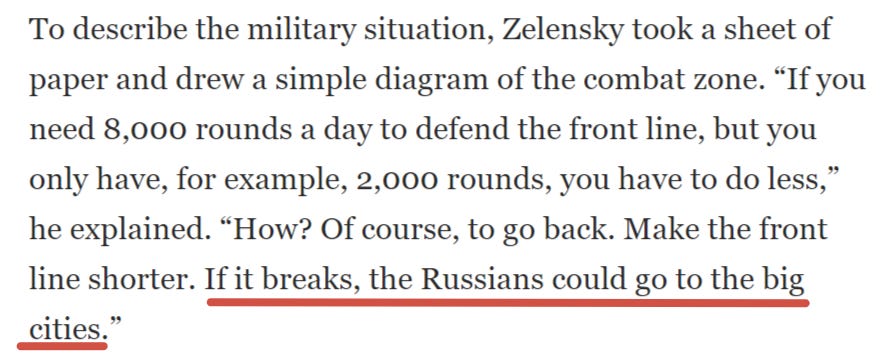
Zelensky offers this curious gem in describing Putin:
Zelensky offered a chilling characterization of his adversary. "Putin is cunning, but he's not smart," he said. "When you fight with a smart person, it's a fight with rules. But when you fight with a cunning person, it's always dangerous."
So what is it, in particular, that's got them so terrified lately? Mostly it seems twofold: Russia's increasingly heavy hand in attacking Ukraine's power grid, as well as the rumors of a mass spring-summer assault:
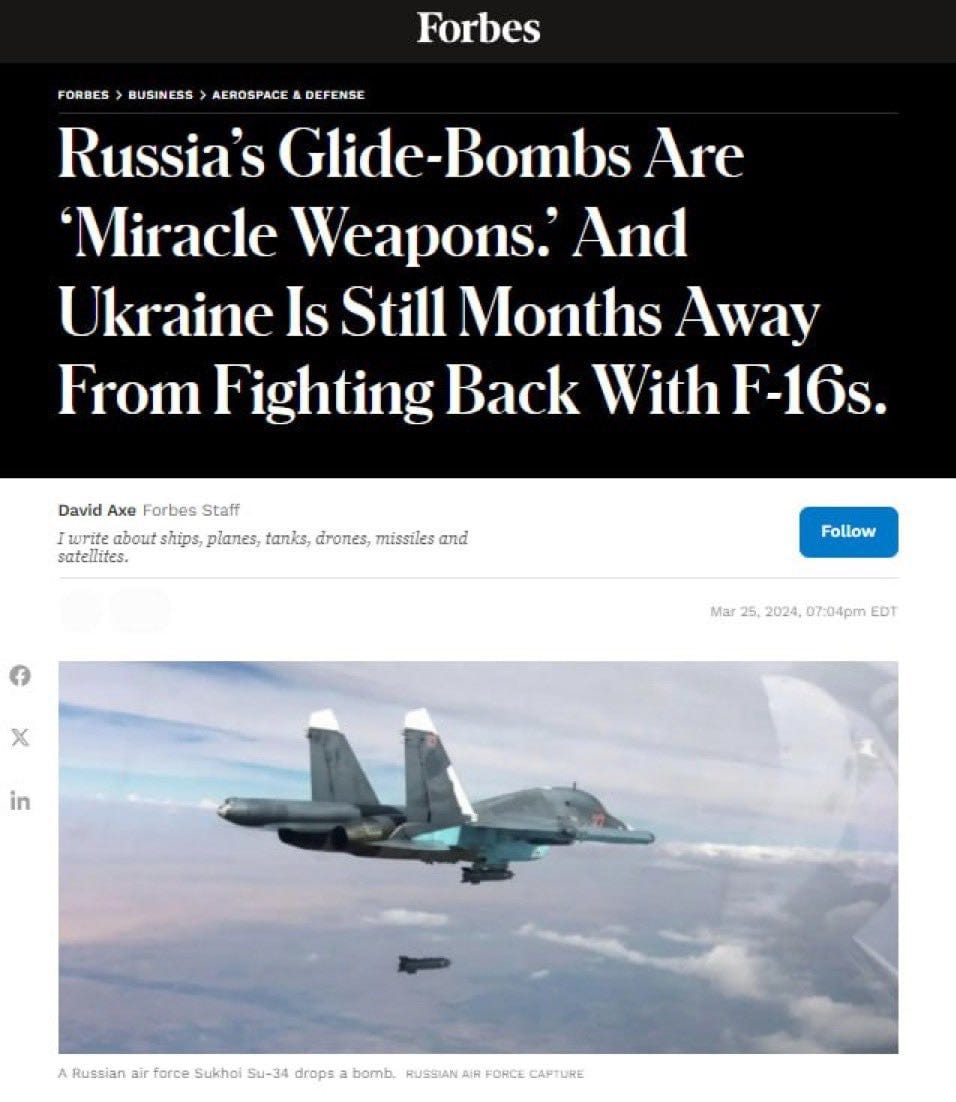
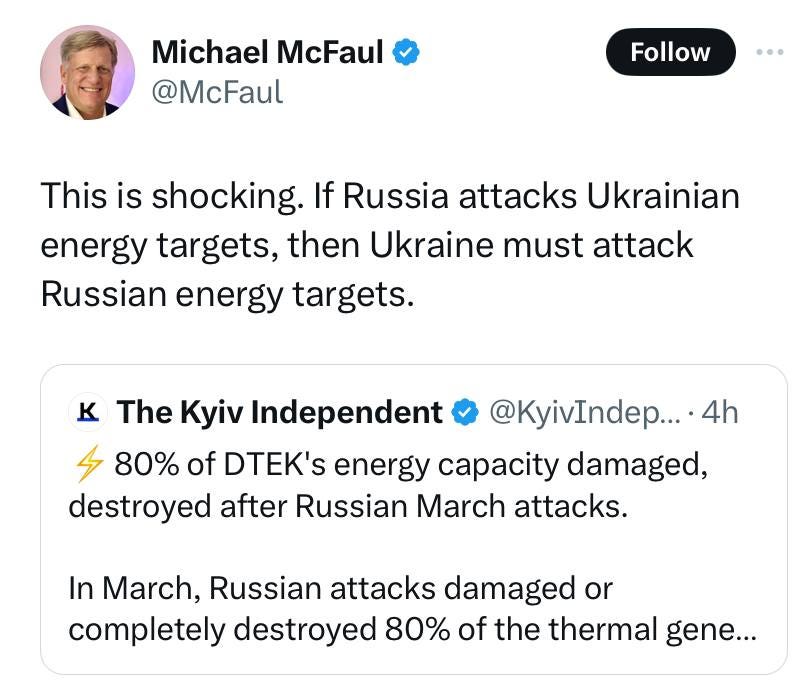
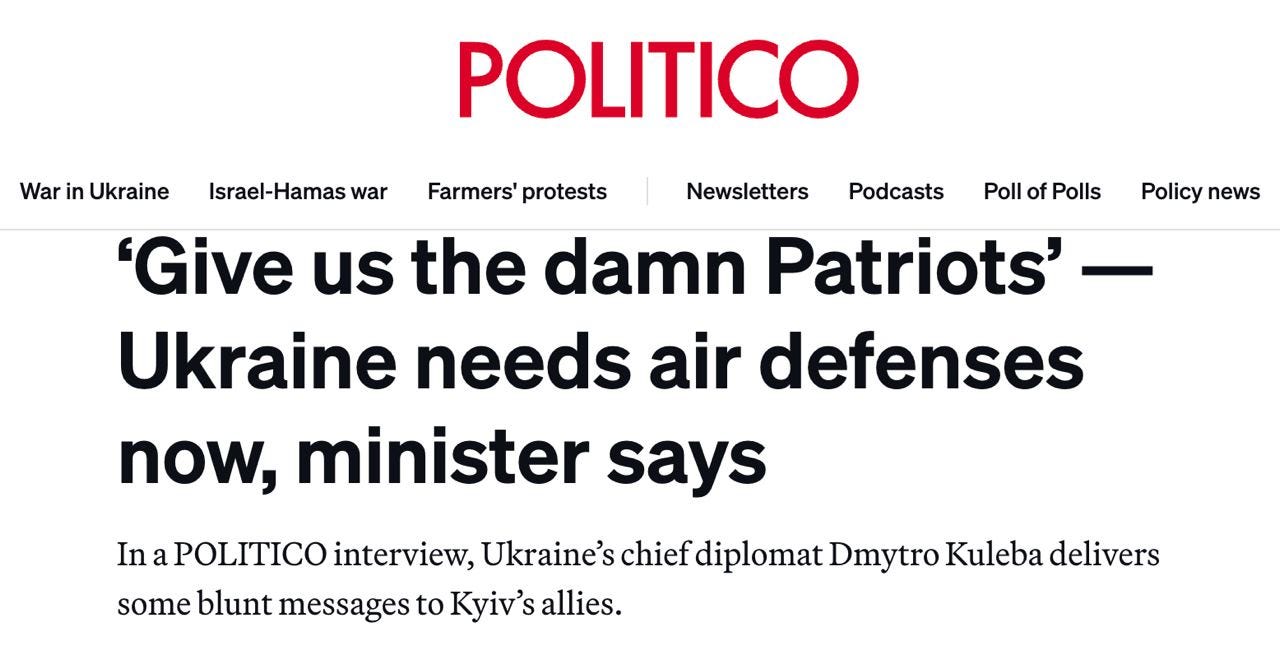
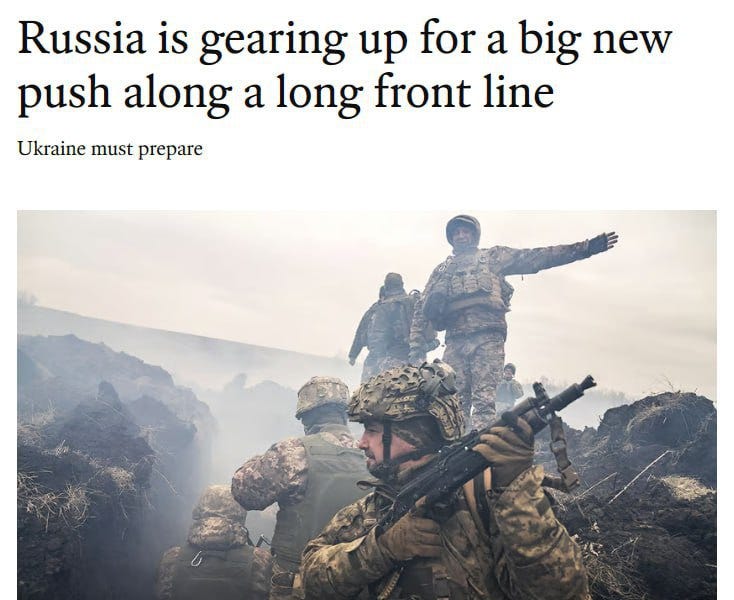
I remember in the early days of this blog, one of the most common and constant questions was: "Do you think time is on Russia or the West's side?" The sentiment from many of the doubters, doomers, or concern-trolls was that time was against Russia, as NATO would only grow stronger, produce more, Ukraine would gather far more men because these commenters didn't believe Russia's claims of Ukrainian casualties.
I ask you: What do you think now? Still believe time is on NATO and Ukraine's side?
It sure doesn't seem like it these days. I say this as preface to the fact that Russia is slowly taking its time, continuing to build its armaments and potential, and very gradually closing the constrictor squeeze on Ukraine from all sides. Recent rumblings indicate that Ukraine is unable to determine where Russia could choose to strike a more major line-breaking assault due to the nature of Russia's air strikes not being limited to one particular theater, but destroying Ukraine's infrastructure in a widespread fashion.
Rezident UA:
MI6 transmitted information to the Presidential Office and the General Staff that the Russian Army had accumulated a large number of Missiles/Lancets/Shaheds and Aerial Bombs for the summer counteroffensive. British intelligence assumes that the Kremlin wants to organize a demonstrative mass attack on several sectors of the front in order to destroy as many Ukrainian military personnel as possible. The main goal of such an attack will be a psychological factor in order to demonstrate the full potential of the Russian army and break the comparison with the Armed Forces of Ukraine.
This plays into new rumors of the Russian Svatovo-Kremennaya front being re-activated to other rumors about Chasov Yar being next for major assault. My point is to highlight the fact that Russia is playing with Ukraine's sense of uncertainty, and can choose to strike either in Kupyansk or Bakhmut or Zaporozhye, and Ukraine will not be prepared.
We've outlined in previous reports how Russia uses its far superior logistical mobility means to constantly hit Ukraine on different axes via the 'death by a thousand cuts' strategy, and Ukraine is unable to shift its defenses and reserves fast enough. New reports underline this, for instance:
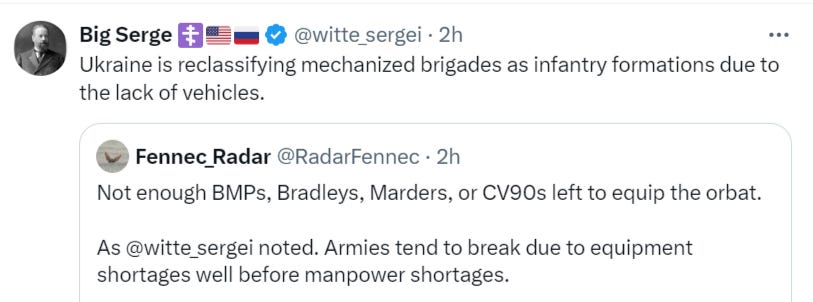
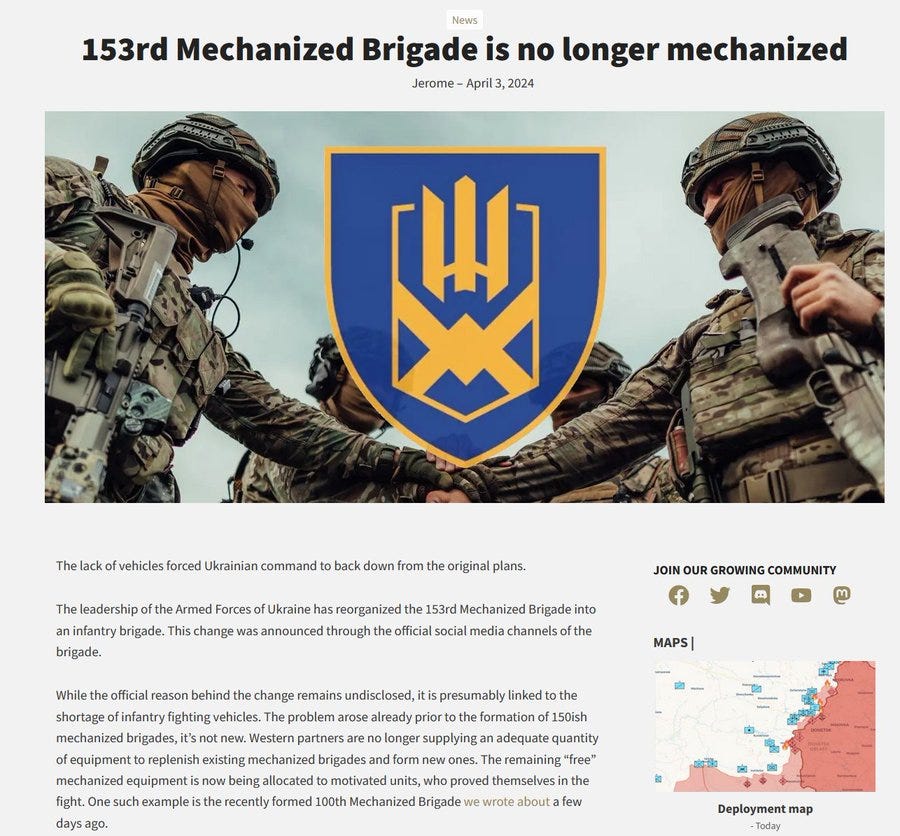
Ukraine's "mechanized" brigades are literally being downgraded to foot soldier meat hordes due to lack of vehicles.
Russia made recent progress in the areas west of Bakhmut and are now preparing to launch the assault on Chasov Yar.
From a Russian army affiliated channel:
Russian forces ready to begin seminal Chasov Yar assault: "Our maps for Chasov Yar have already been drawn, roles have been assigned, executors have been appointed. Everything is ready, as soon as the bridgehead on the Canal is ready - we will start."
Sputnik covers why this town is critical:

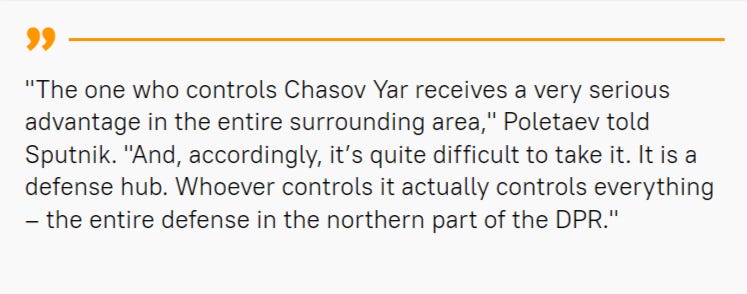
In short, they explain that Chasov Yar is a key railway hub and sits on a hill overlooking the entire AFU defense agglomeration of the region, which previously included Bakhmut, but now is centered on Kramatorsk-Slavyansk-Konstantinovka.
In the meantime, there are increasing 'whispers' of the eventual total evacuation of Kharkov city. Not only due to the electricity problems after Russia's hits on the region's power plant, but in anticipation of a new potential front being opened from the north.
Road leaving Kharkov:
Exodus of the population from Kharkov. After statements by the local administration that the entire infrastructure in the city was destroyed, constant problems with electricity the exodus of the population began from the city. The regular bombings by the Russian Air Force and rumors that fighting is about to begin here certainly added to the situation.
And here top Ukrainian accounts mention the unthinkable, with city officials claiming there's no need to evacuate….yet:
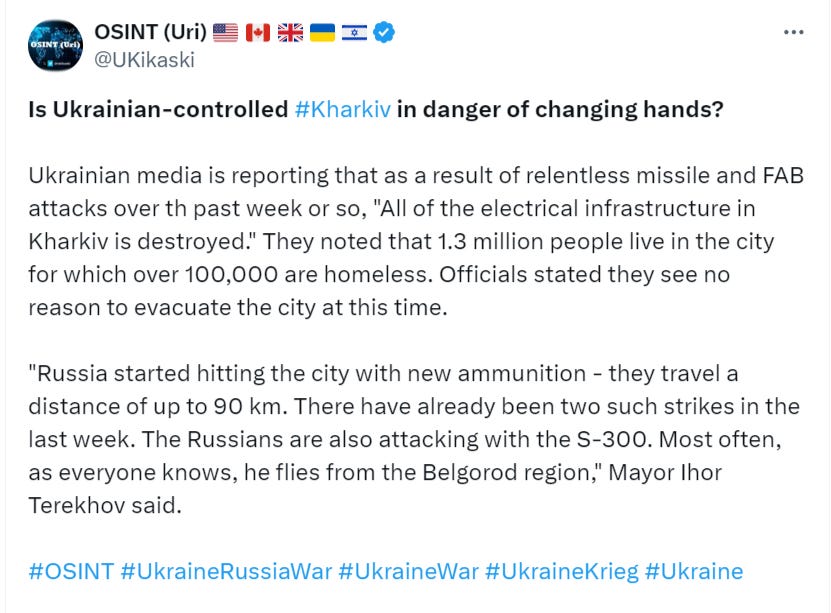
And even as of this writing, there is a large ongoing attack on Kharkov, with videos pouring out of strikes landing in the already de-powered city.
—
With the situation as dire as it looks, there are reports that Zelensky has finally swallowed the bitter pill and pulled the trigger on the first main step of the long-feared mobilization bill to lower the age from 27 to 25:
CNN confirms:

CNN —
Ukrainian President Volodymyr Zelensky has signed a law that will lower the country's minimum conscription age from 27 to 25, potentially boosting the number of men available to fight Russia's invasion.
However, it's not quite what it seems just yet:
The law signed by Zelensky on Tuesday lowers the age they can be drafted to 25, but leaves the mobilization age at 27, However, the Ukrainian Parliament is also considering a bill that would reduce the mobilization age to 25.
You see, this allows them to be drafted at 25, but not yet mobilized onto the actual frontline. The Rada will supposedly vote in April to lower the full mobilization age to 25 as well. Hence, this still means nothing quite yet.
It's unclear what if anything this will accomplish. Recall I had just posted a video of a top Ukrainian official stating that a reduction to 25 will do nothing, such is the depletion of Ukraine's forces; he said it needs to be lowered straight down to 19.
Zelensky himself refuses to divulge how many will be mobilized, blaming Russia for the need on the fake claim that Russia itself intends a huge new call-up in June:
Top Russian senators Kartapolov and Gurulev's responses to the above? "Cocaine's a helluva drug."
In one of the earlier articles, Zelensky said that he intends to mobilize more men in order to prepare another offensive for later this year. His reason was revealing: that if Ukraine doesn't attack first, Russia will do so.
His explanation gives away Ukraine's strategy. In 2023 Russia sat back and defended against Ukraine's large 'offensive', so here Zelensky appears to believe that if Ukraine can launch some semblance of another attack, it will delay or negate Russia's own mass offensive which everyone seems to be expecting for this year. This would be Ukraine's ploy to continue buying time for themselves: launch another futile, fruitless meat attack with massive losses, exchanging tens of thousands of lives for a few more borrowed months for Zelensky's illegitimate regime from going to the gallows.
—
One interesting take from 'American Spectator' is that Ukraine is planning for a big October surprise:

Their entire thesis is as follows:
How does the Ukraine-Russia war end? In an October surprise. Ukraine, which became independent on 24 August 1991, will be dissolved and a New Ukraine will come into being by virtue of a unilateral declaration by the present Government of Ukraine, with the support of the military high command. The de jure boundaries of New Ukraine will reflect and be co-terminus with the territory currently under the de facto administrative control of the present Government of Ukraine. New Ukraine will be compact; cohesive and well-integrated politically, economically, and socially (i.e., ethnically, linguistically, and culturally); and will have demonstrably defensible borders. Accordingly, New Ukraine will have the strategic autonomy to decouple from Russia's sphere of influence without joining economic and military blocs such as the EU and NATO.
It's certainly an interesting direction, supported by some evidence, like recent Western statements that point to Ukraine not being able to retake previous territories, and even the beginnings of discussions justifying or selling the idea that Donbass is really not Ukrainian after all.
Such a thing could be a last-ditch desperate offer from the West to Ukraine: give up all Russian-held territories, declare a new unified Ukraine, and we will dangle that NATO/EU carrot over you closer than ever.
Meanwhile, France's Le Figaro supports our own reporting here with Russia's ongoing death by a thousand cuts strategy:

The Russian army has adopted a "bite" or "prick"strategy: it makes small attacks on several segments at once. Ukraine cannot hold on to the entire length of the front line, so such attacks exhaust it and bring Russia, albeit small, but results, writes Le Figaro.
Further elaboration:
"The Russians have regained the initiative. They are able to "torment" the opponent on the field. This is the technique of a thousand notches. The goal is to bleed the Ukrainians dry in order to weaken their reserves," the French military expert explains in an interview with a journalist. According to him, the Ukrainians can fight off breakout attempts in several places, but they will not be able to stay on a dozen fronts. At the same time, Russia is accumulating potential in order to take advantage of the opportunities that have opened up.
They further admit what we've said all along, Ukraine's actions on the border are meant as nothing more than distractions:
Ukraine does not have enough people and ammunition. Therefore, Kiev has to switch to "elastic defense". As a result, he makes symbolic actions, for example, invading Russian territory in the Kursk and Belgorod regions or launching Western-supplied missiles, but is unable to get a real strategic effect from this.
And finally, their conclusion brings us full circle:
The next few months still promise to be critical, the author of the article writes. "We cannot rule out a Russian offensive in the spring to force the Ukrainians to negotiate in a difficult position," warns expert Jerome Pellistrandi. According to him, the Russians have learned their lessons, become more maneuverable and intensively use electronic warfare. Therefore, some of the equipment delivered last year from the West is now being neutralized by electronic interference.

A couple last items:
Here's a quick before and after look at the Ladyzhenskaya thermal power plant control room, to give an idea the type of damage Russian attacks have done:
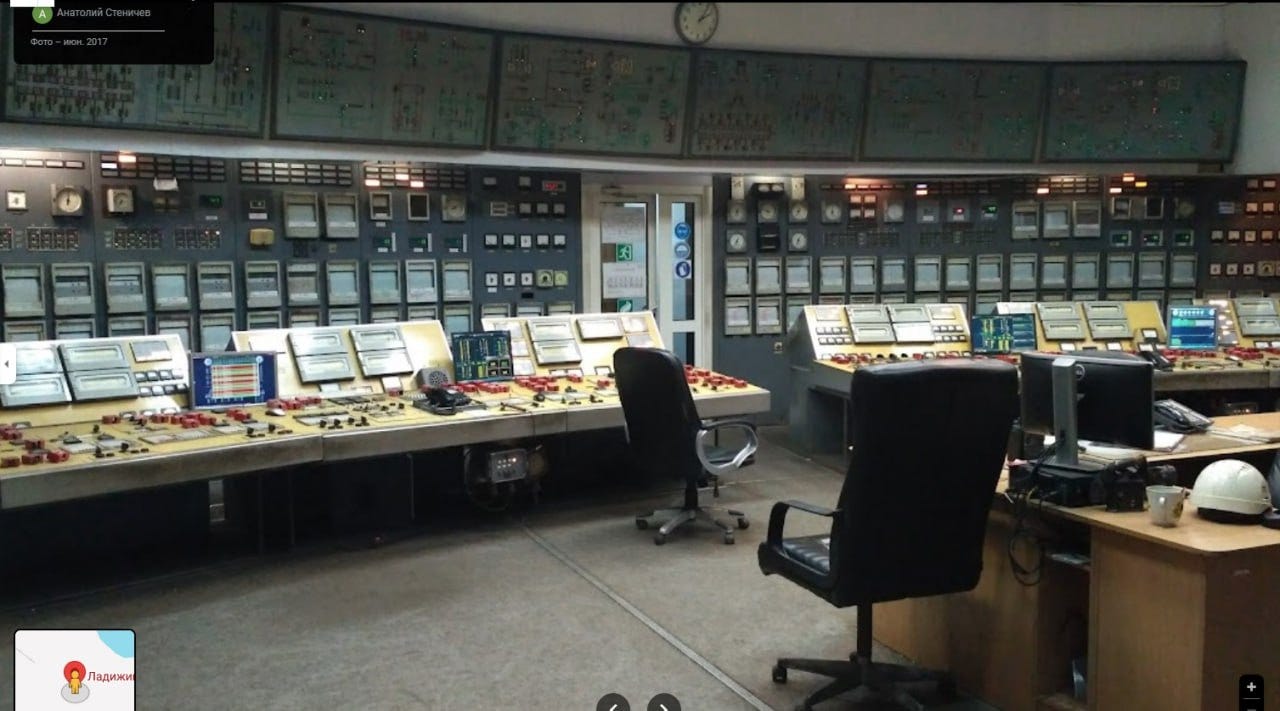
The first photo may be a stock one for illustrative purposes, but you get the idea; I don't think that's being repaired any time soon.
—
As a last topic, I've been made aware that Andrei Martyanov has written an entire piece presumably 'debunking' my recent report which featured Colonel Falichev writing for the official Russian Army Digest. Martyanov's main gripe appears to revolve around the fact that he cannot locate any major credentials for Falichev, as Martyanov is a big stickler for proper military pedigree, as many of you know.
While I certainly don't begrudge him such thoroughness and demanding standards, I will simply note that nothing Falichev said was debunked but rather his military standing was merely called into question. This is not a response directly to Martyanov, of whom I am a fan though he appears to be less so one of me, but rather an answer to the few requests of my own audience I've gotten to make a response on the matter. I like for people to have their own minds and agency in making determinations, so the only things I'll say is that firstly, Falichev's piece was obviously published in the official Russian Army journal, hosted on their own official site:

And its editorial board is filled with a lot of top brass, which includes commander-in-chiefs of the entire Russian Ground Forces:
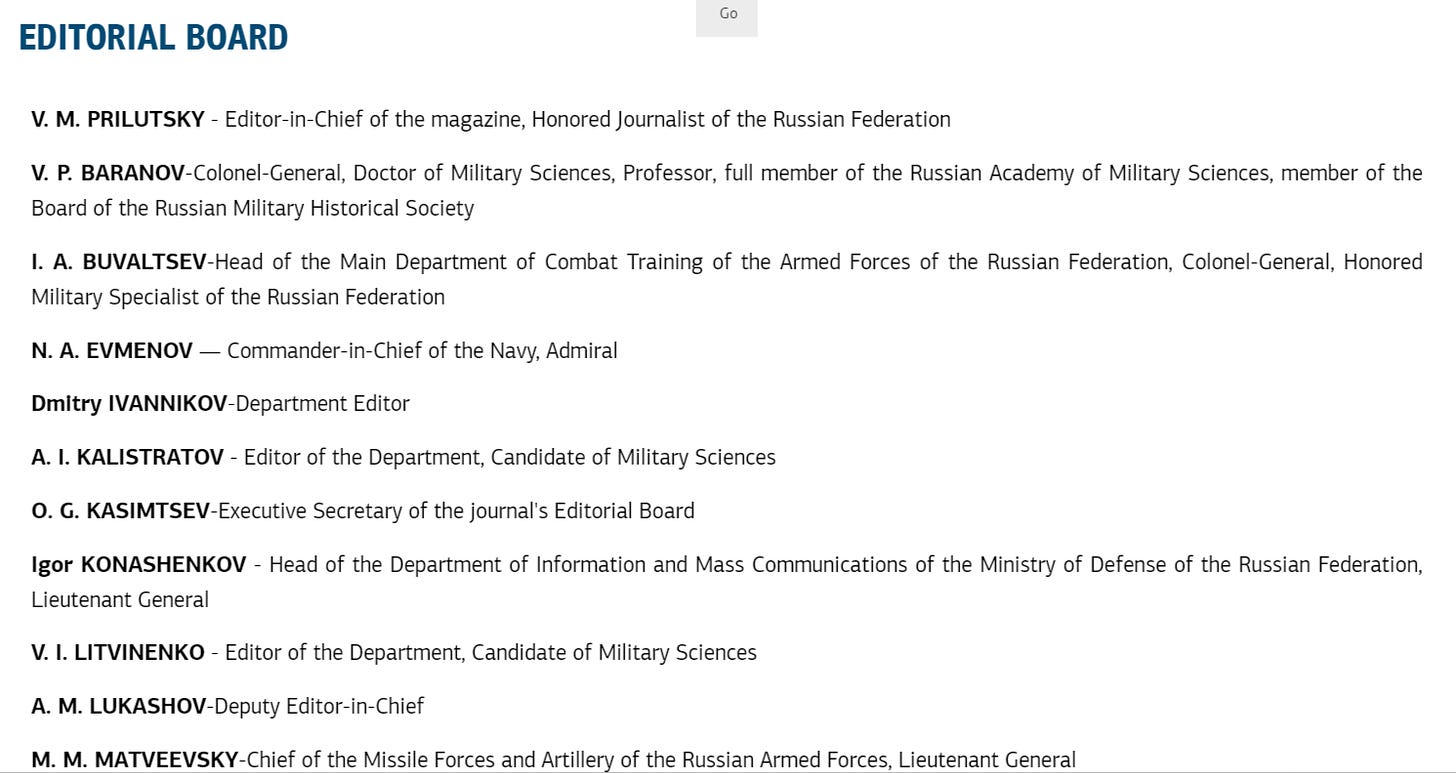

I would find it extremely puzzling that such a storied magazine edited by the literal current ground forces commander of the entire Russian Army would be so unprofessional as to host the rantings of some totally incompetent or uninformed person. One would think that would reflect quite badly on them if that was the case, no?
Secondly, though I don't hold Martyanov accountable for not seeing this as I doubt he's a paying subscriber here, but the previous issue of my own paywalled series included a breakdown of a different Russian thinktank, wherein General Baluyevsky echoed much of the same concerns as Falichev, in his preface called Algorithms of Fire and Steel.
I don't think anyone can question Baluyevsky's credentials considering he was the literal Chief of the General Staff of the entire Russian armed forces, you know, the position Gerasimov currently holds:
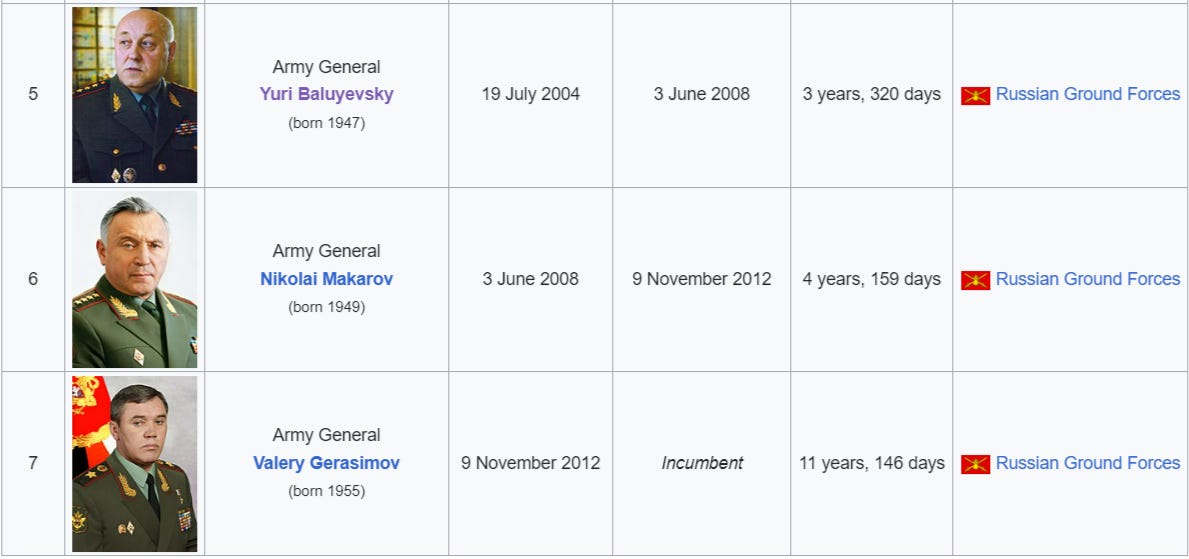
In that second report of mine, I highlighted Baluyevsky's revelations of some critical deficiencies in the Russian forces, for instance:
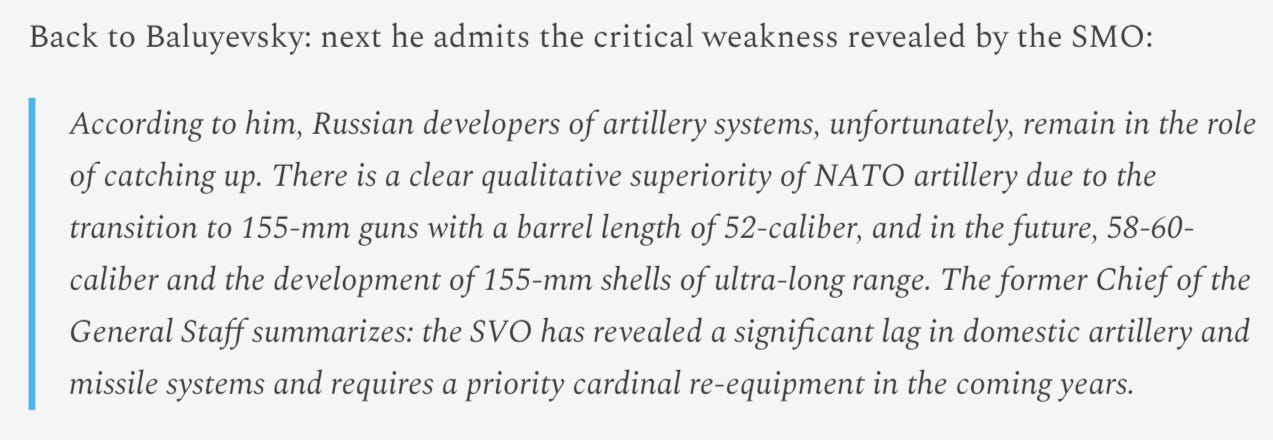
Some people seem to believe the Russian Army is infallible and cannot possibly have weaknesses. But I doubt anyone can gainsay the Chief of General Staff himself, who has had a storied career and has attended every notable command school.
Baluyevsky goes on to make many more indictments, including one that directly clashes with Martyanov's claims of Russian omniscient ISR capabilities:
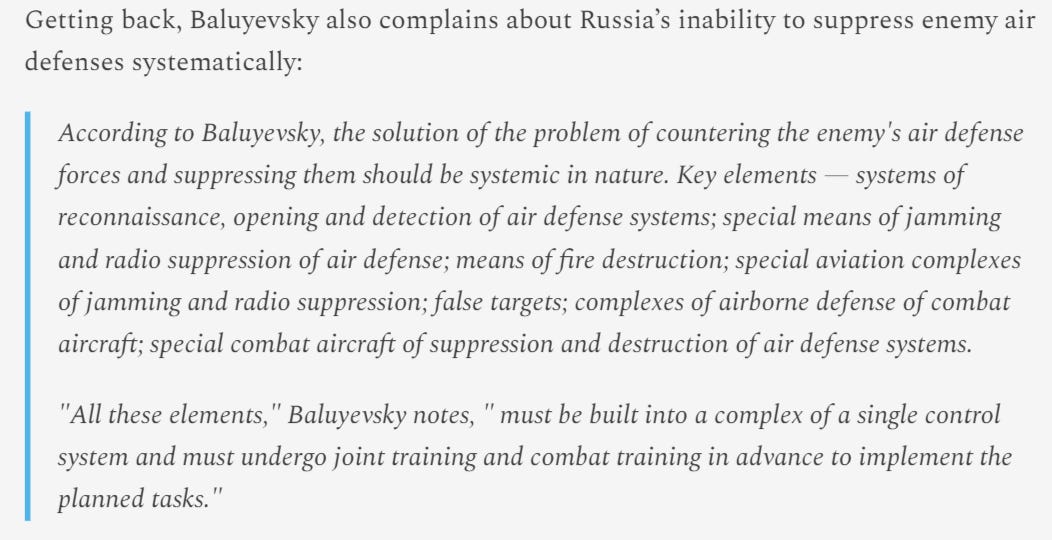
"Must be built into a complex of a single control system…"—this clearly implies Russia does not yet have such a system despite this being precisely what Martyanov champions as Russia's strongest suit, in his article. No offense to Martyanov, whom I do respect, but I think I'll take the Russian Chief of General Staff's word for it on this matter.
I just wanted to make that brief defense not only to honor requests of curious followers, but also to make sure my own research did not suffer any tarnish. I know Martyanov was not bashing me, but given his large following, sometimes critiques like those can paint an incomplete or even damaging picture. In this case, for instance, the takedown of Falichev could imply that I don't use good sources in my research—but you can clearly see the contrary is the case. Not only is the Russian Army journal I used a top source, its own Editor-in-Chief has an unassailably storied career, having graduated from three different top command schools:
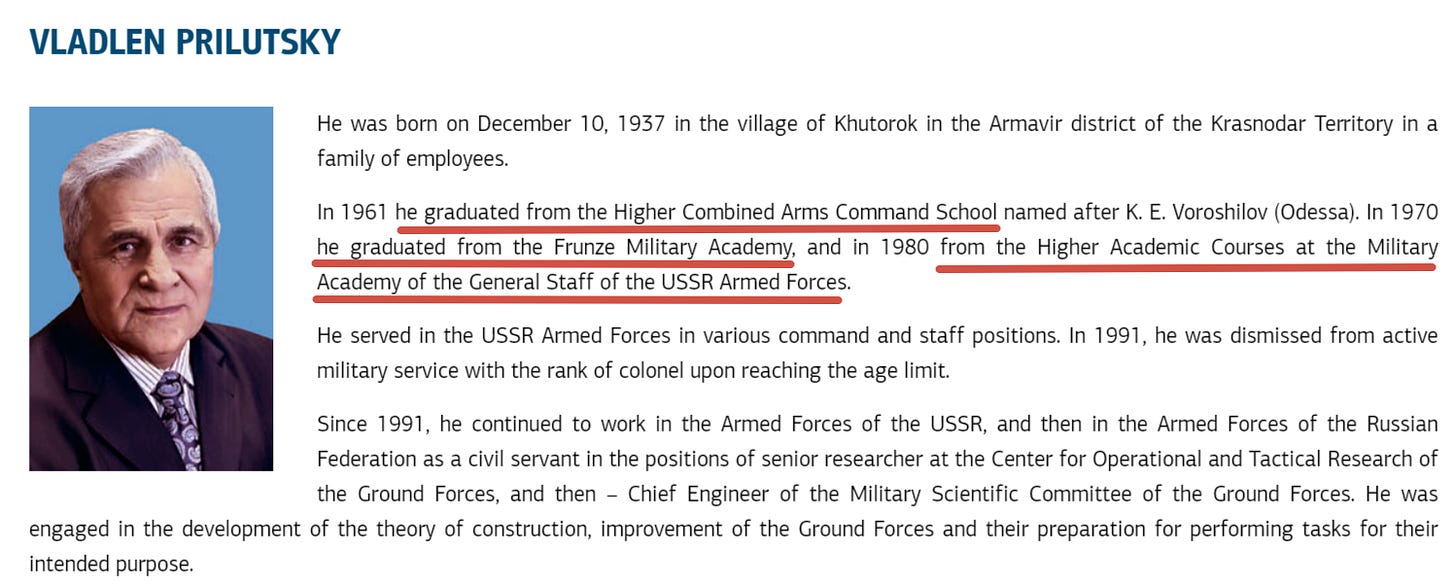
And even was an executive on the editorial board of another of Russia's most famous military journals, Military Thought.
Lastly, the episode did open my eyes to one important fact: that I truly have the best possible audience here. Perusing the 'comments section' of Martyanov's article I was amused to find that many of my detractors fault me for being critical of Russia, or at best "neutral". That tells me one important thing: that many in this field unfortunately cultivate quite an echo-chamber in refusing to find any fault, limitations, or weaknesses in the Russian Army or its approach to war.
It made me quite pleased to realize that I've cultivated a large following of open-minded people who want the real truth 'with all its warts', and are not simply here to be coddled or massaged with feel-good bias confirmations. It merely reinforced my belief that this blog is truly the best place where you can get the real lowdown without skewed blindspots, wishful thinking, and the like.
So, I thank my audience for being what they are because it seems I had slightly taken that for granted in my assumption that other parallel audiences were similarly discerning of truth and accurate information rather than merely seeking belief reinforcement.
That being said, if you appreciate the impartially incisive work here, don't forget to become a paid subscriber or throw a few coins into my Tip Jar as it has been woefully neglected of late—though I heartily thank those who have been donating there, you know who you are.
Your support is invaluable. If you enjoyed the read, I would greatly appreciate if you subscribed to a monthly/yearly pledge to support my work, so that I may continue providing you with detailed, incisive reports like this one.
Alternatively, you can tip here: Tip Jar